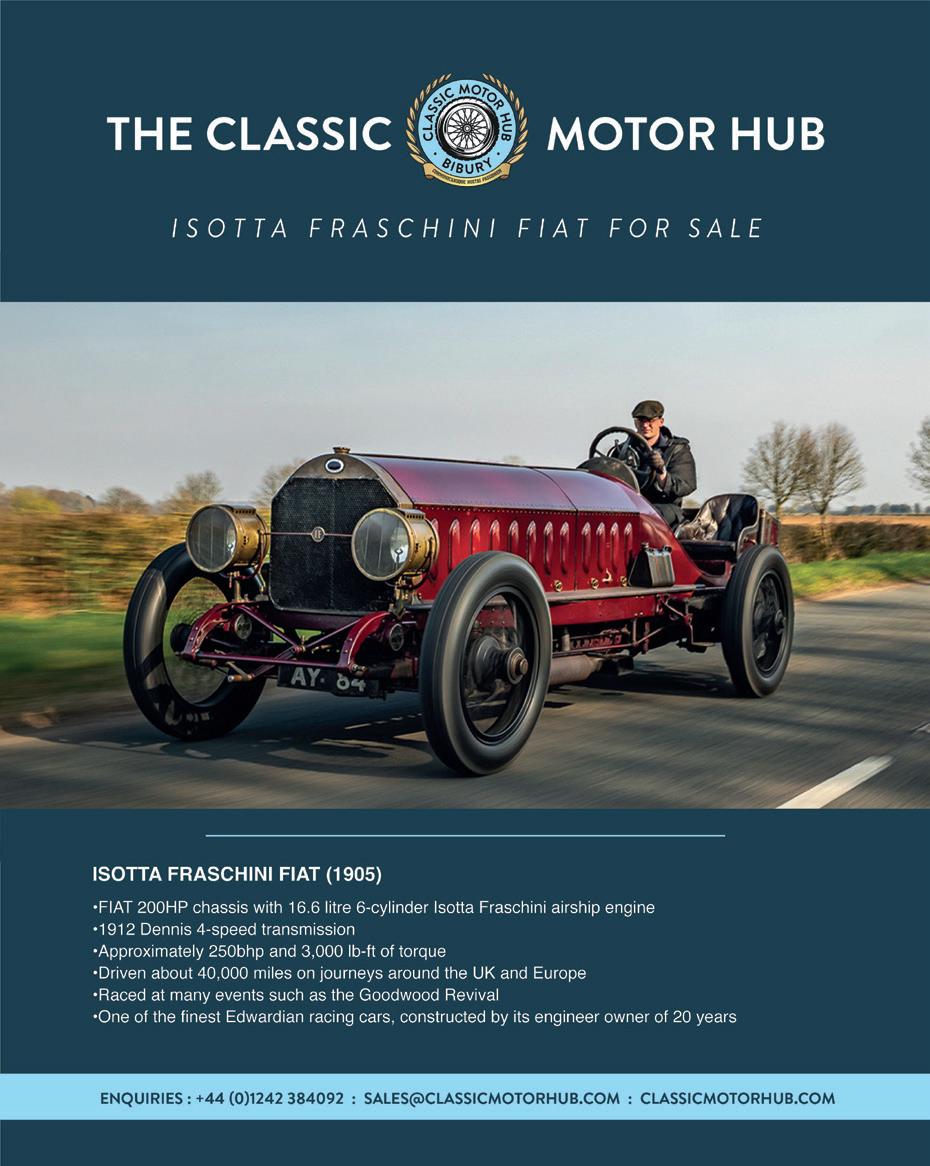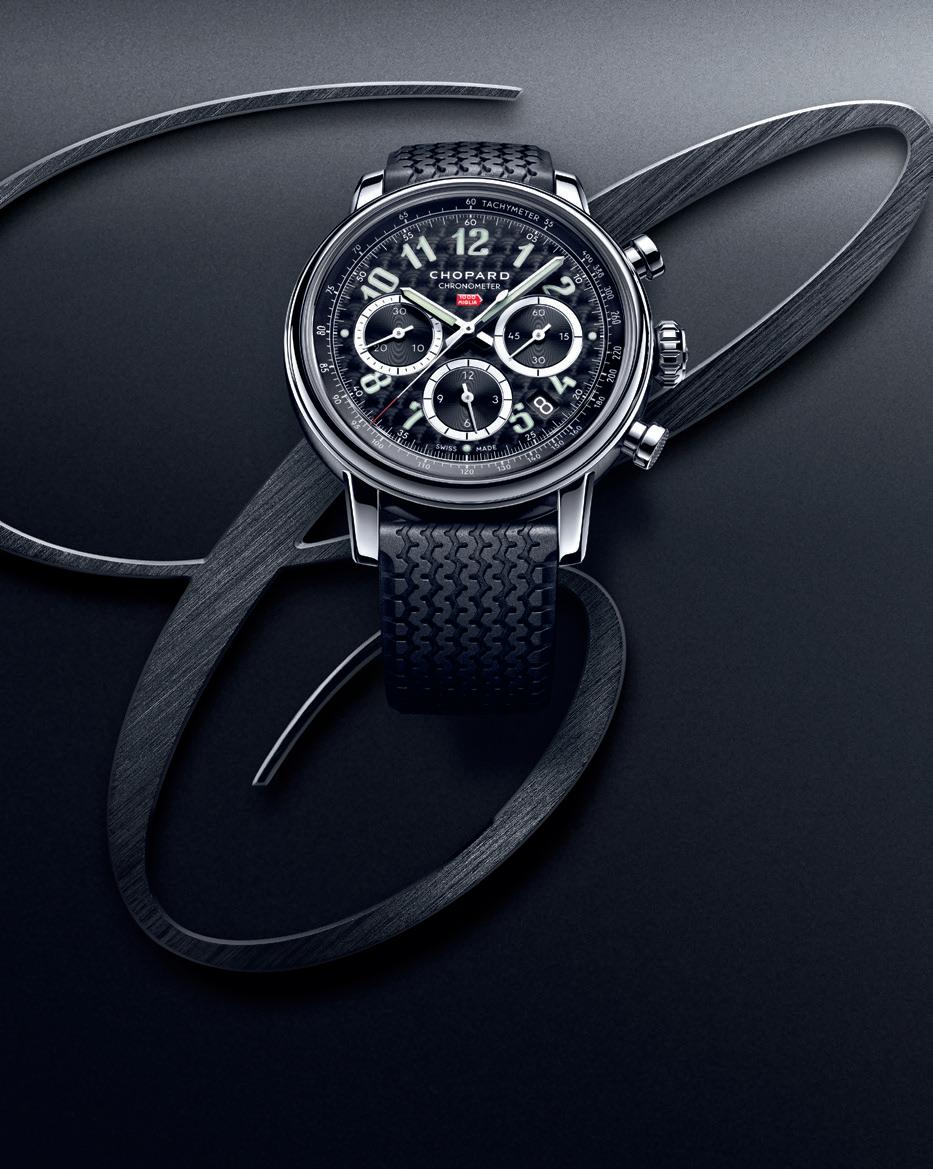BERNIE ECCLESTONE

GREATEST DRIVERS MERCEDES F1 TREASURES
PORSCHE
MOSLEY STIRLING MOSS
F50 GT
MERCEDES SLR MCLAREN



BERNIE ECCLESTONE

GREATEST DRIVERS MERCEDES F1 TREASURES
PORSCHE
MOSLEY STIRLING MOSS
F50 GT
MERCEDES SLR MCLAREN


Discover the fusion of cutting-edge technology and exclusive design. Seamlessly blending into your luxury living space, the bespoke C SEED N1 TV is encased in the finest handcrafted finish, tailor-made and customizable to match any interior. When closed, it exudes the elegance of fine furniture, resembling a sleek and sophisticated sideboard.
At the touch of a button, the TV gracefully rises to a majestic height of two meters, and five 4K high-brightness MicroLED panels unfold like the petals of a blooming flower. In just 45 seconds, they form a stunning display measuring 165, 137, or 103 inches.
C SEED’s unique patented Adaptive Gap Calibration ensures that the borders between the panels vanish, giving you a perfect, uninterrupted visual experience.
The ultra-high-resolution display transforms any room into a cinematic paradise, offering breathtaking visuals in any lighting condition. The C SEED N1 redefines the synergy of technology and luxury living - it is a statement of sophisticated taste and a testament to the unforgettable moments you’ll share.
The C SEED N1 TV is available in three sizes: 165, 137, and 103 inches, as well as in various colors and bespoke finish options.






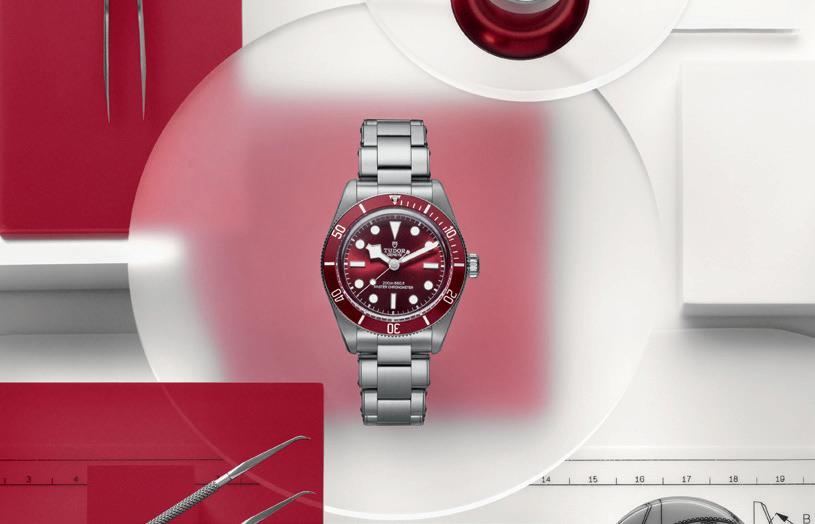






















































































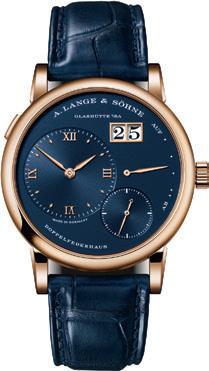
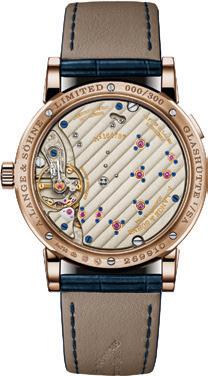
n Historic first chassis M26/1
ex-Hunt and Mass
n Six Grand Prix starts for McLaren, 4th at famous ’77 British G.P.
n 2021 Monaco Historic G.P. winner
n The only M26 eligible for Monaco Series E
n Offered from 24 years ownership and historic racing
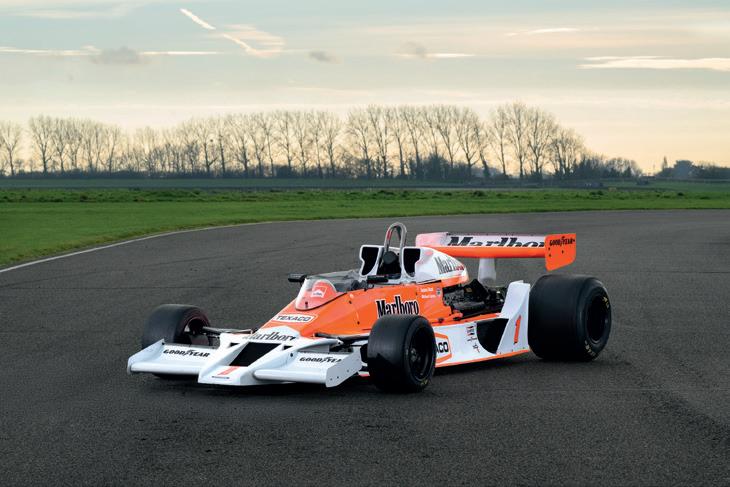
14 Queens Gate Place Mews London SW7 5BQ
T: +44 (0)20 7584 3503
W: www.fiskens.com E: cars@fiskens.com
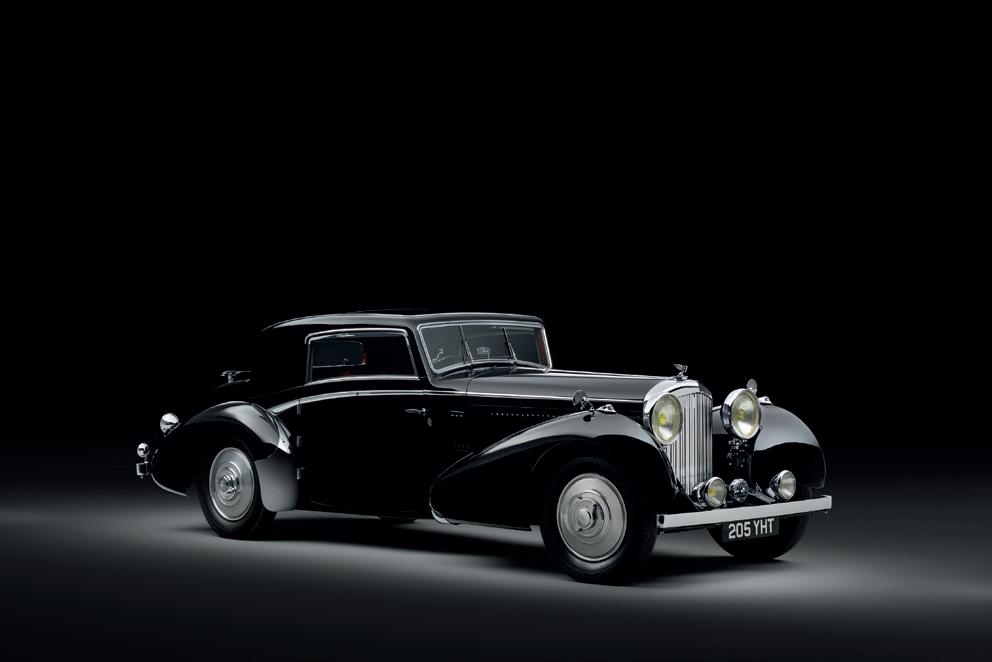
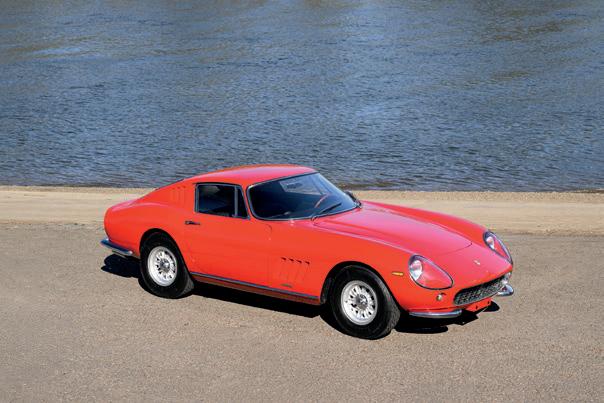
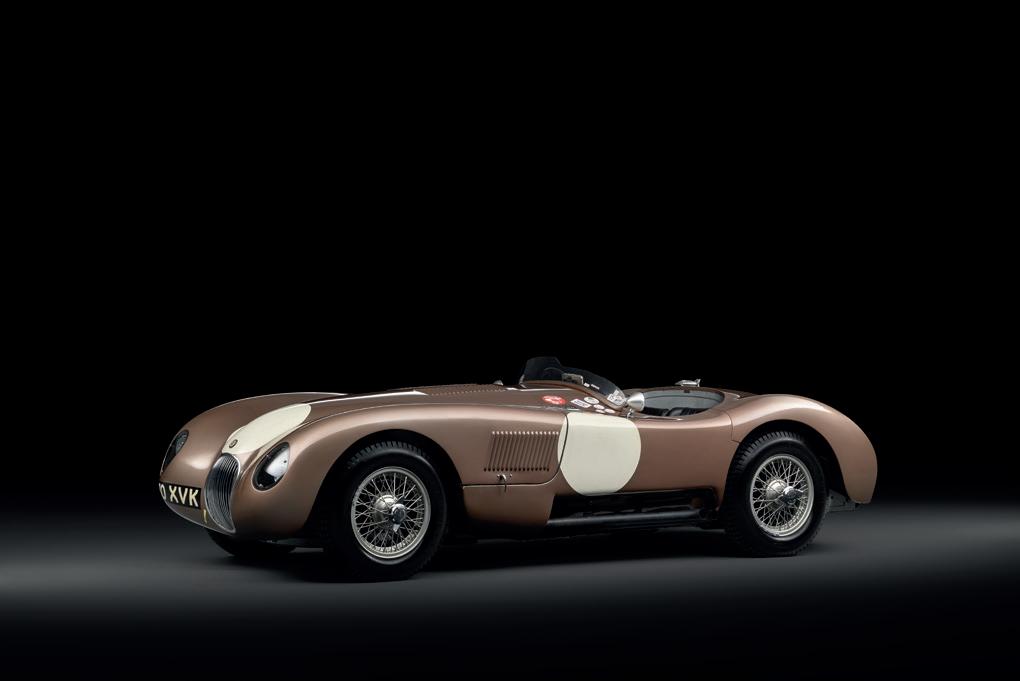
ABOVE 1952 JAGUAR C-TYPE, EX-FANGIO
n Famously purchased new by the great Juan Manuel Fangio
n Now offered by 2009 Formula 1 World Champion Jenson Button
n Period race history in Argentina, one of the fastest C-Types today
n Wins at Goodwood, Monaco, Silverstone Classic and more
n DBR9/5 is the only works DBR9 sold from new to North America
n Entered in the 2008 ALMS Championship achieving 4 podiums
n Driven by Dario Franchitti at the Endurance Racing Legends 2021
Le Mans 24 Hours support race –1st in Class Race 2
n 2023 Peter Auto Endurance Racing Legends GT1B winner
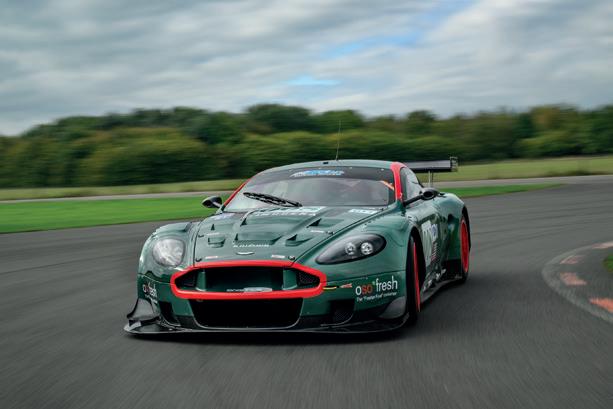

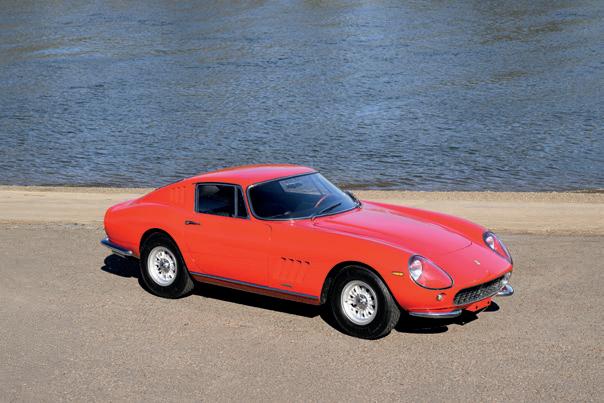

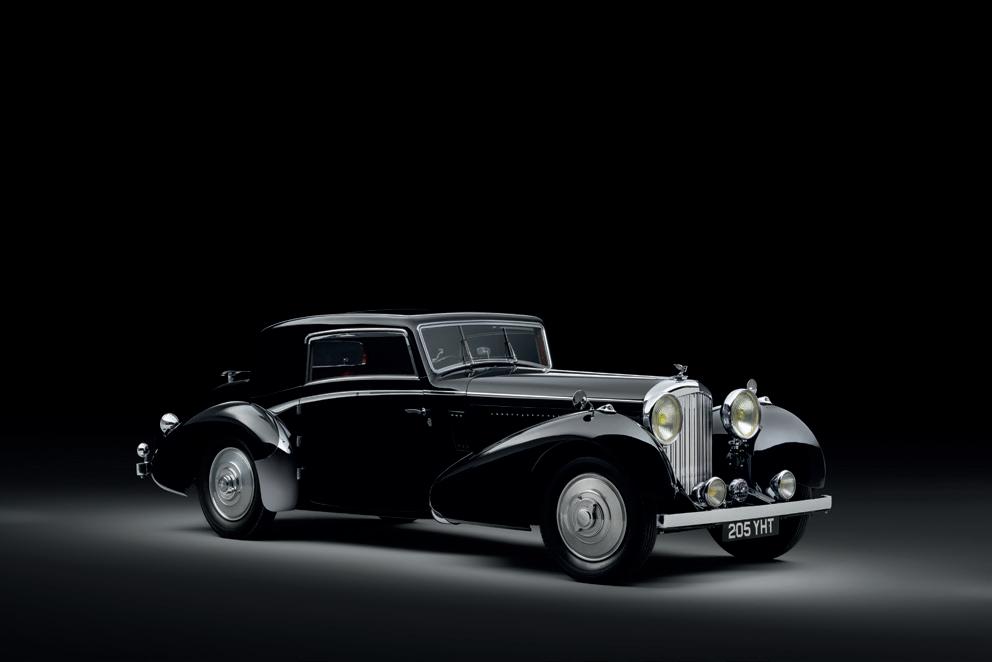


LEFT
1965 FERRARI
275 GTB
n Fantastic early shortnose 275, chassis 06897, delivered in Rosso Cino over black
n Continuous ownership history, delivered new to Milan, Italy
n Fully matching numbers with Red Book Classiche Certification and Marcel Massini report
n Fresh from 3-year body off restoration completed in 2023


ABOVE
1935 DERBY BENTLEY 3½ VESTERS & NEIRINCK
n Exceptionally elegant coachwork by Vesters & Neirinck
n The first of the exclusive pair in this style
n Sister car now in the Loh Collection
n Originally delivered to Claude Lang of Brussels
n A highly significant and exquisite Derby Bentley
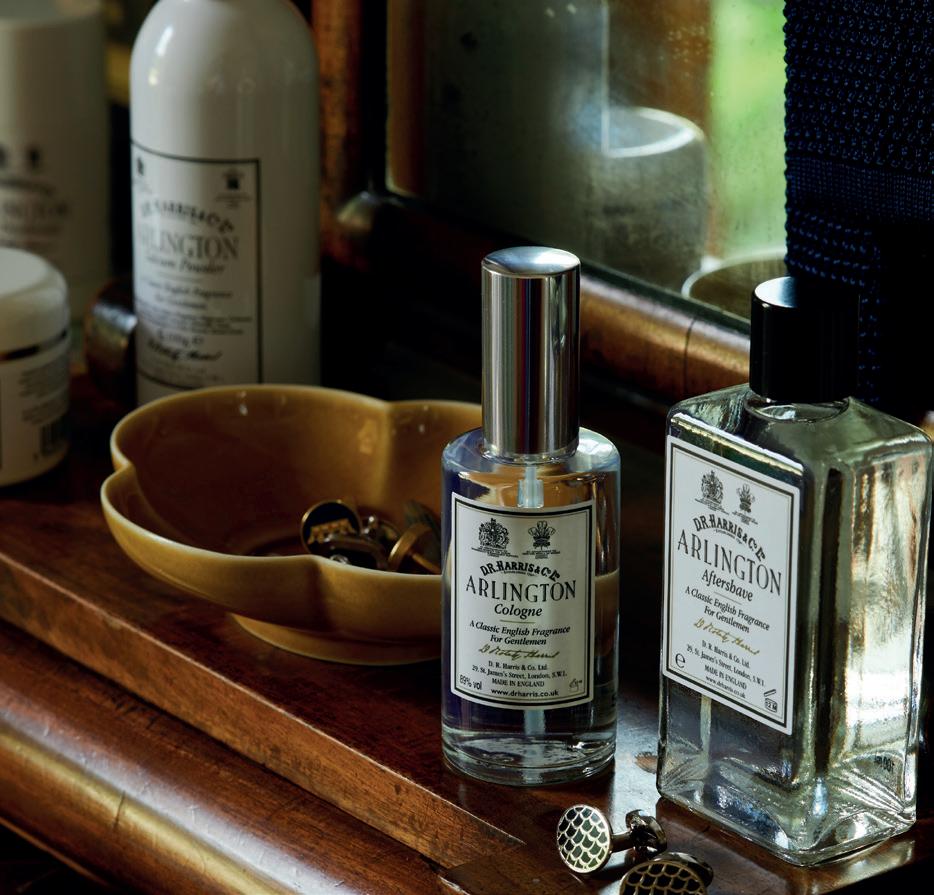







Murray’s magic, Schumacher’s boots, FuoriConcorso comes of age, Eddie Jordan Racing, F1-inspired car flops and more
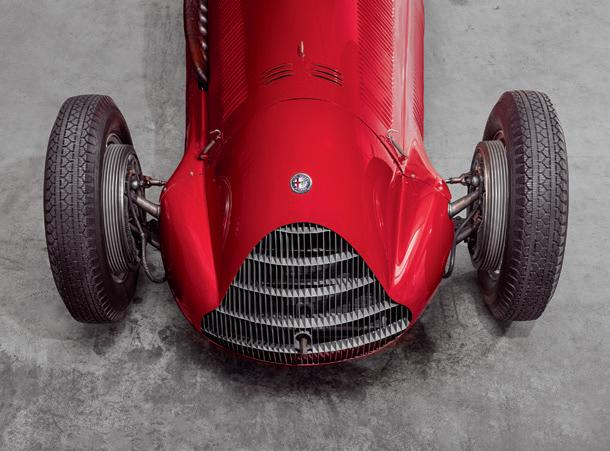
Designed in the late ’30s, Alfa’s voiturette was destined to deliver the first F1 Drivers’ Championship crown
Maurice Hamilton gives a very personal account of his 50-year career covering motor sport’s premier formula
Ultimate F50 track car was set to dominate GT racing before rule changes scuppered Maranello’s plans
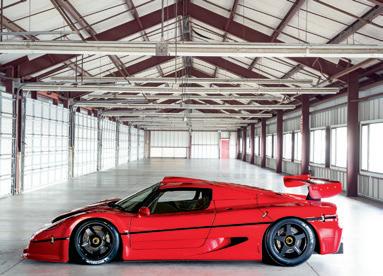
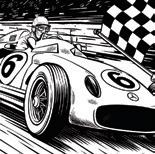
With Fangio at Mercedes, first Championship win, that Mille Miglia, that Le Mans, scuba-diving and more: ’55 had it all
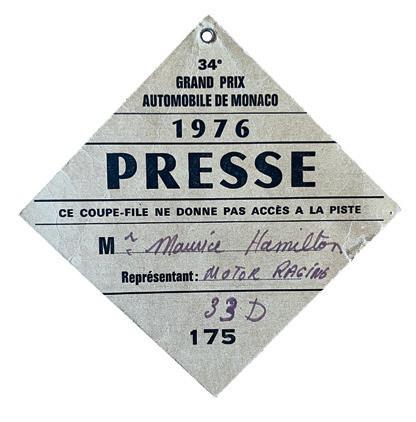

MERCEDES F1 OBJECTIFIED
The significant spoils of a component and memorabilia hunt through the Mercedes F1 factory warehouse
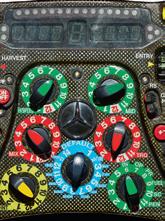
BERNIE AND MAX
Profiles on Ecclestone and Mosley, two F1 team owners who would come to be the most powerful men in motor sport
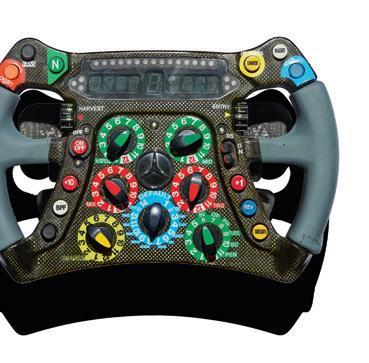
TAG TURBO PORSCHE 911
Under the skin of the 1.5-litre V6 TAG Turbo F1-engined tribute to McLaren F1 team’s 1980s prototype
TOP 50 F1 DRIVERS
Statistics are one thing but they don’t tell the whole story; Formula 1’s greatest drivers assessed and [gasp] ranked
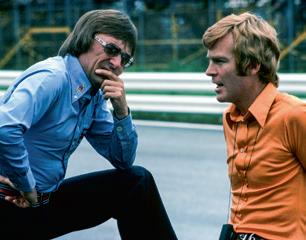
ACQUIRE
Buying a Mercedes SLR McLaren, collecting F1 parts, F1 art by Kevin McNicholas, best F1 watches, books, products and more



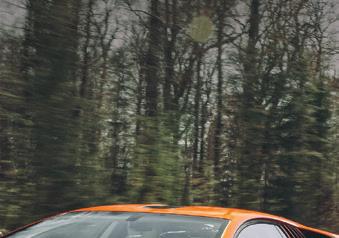
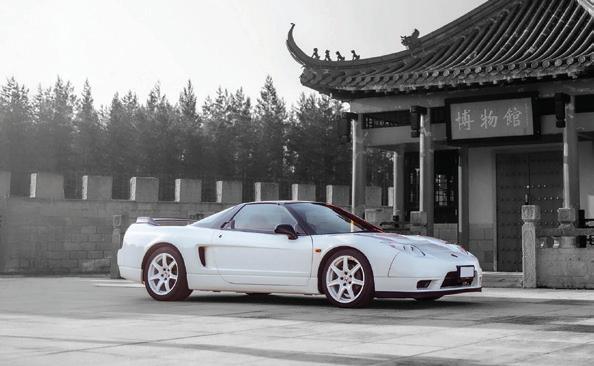






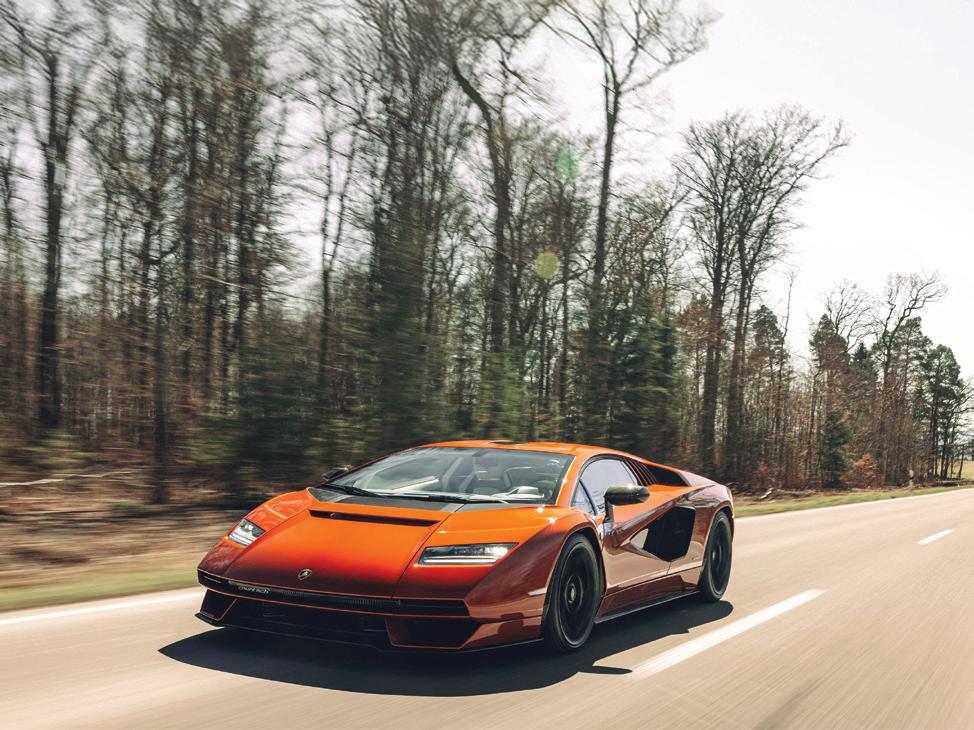

Our first themed issue, after six years and 26 issues of Magneto. It’s something we’ve talked about doing from the start, and 75 years of the Formula 1 Championship seemed the perfect opportunity. At last.
What we didn’t want to do was make this an encyclopaedia of racing cars through the years – there are plenty of those – or to make it boring for those who don’t care so much for motor sport or Formula 1 in particular.
So we’ve got a wide range of articles, each one with an F1 connection but not all directly about the racing. Personally, I love finding out about the people, the cars and the places associated with F1, but I’m not so bothered about the blow-by-blow race reports.
What I do urge you to do, even if you skim through everything else, is to read Paul Fearnley’s piece on Stirling Moss’s 1955 season line-by-line. We all know drivers of the period lived life to the limit, but this diary of the year in which Moss really proved himself, winning the Mille Miglia and enduring the Le Mans disaster, truly demonstrates the intense nature of his career. It’s a long read, so settle yourself down and prepare to have your mind thoroughly boggled.
Also, if you’ve been reading Magneto from the start, compare the featured modern Mercedes-Benz F1 parts with the BRM components similarly photographed for issue 1. How can you not love motor sport engineering...
David Lillywhite Editorial director

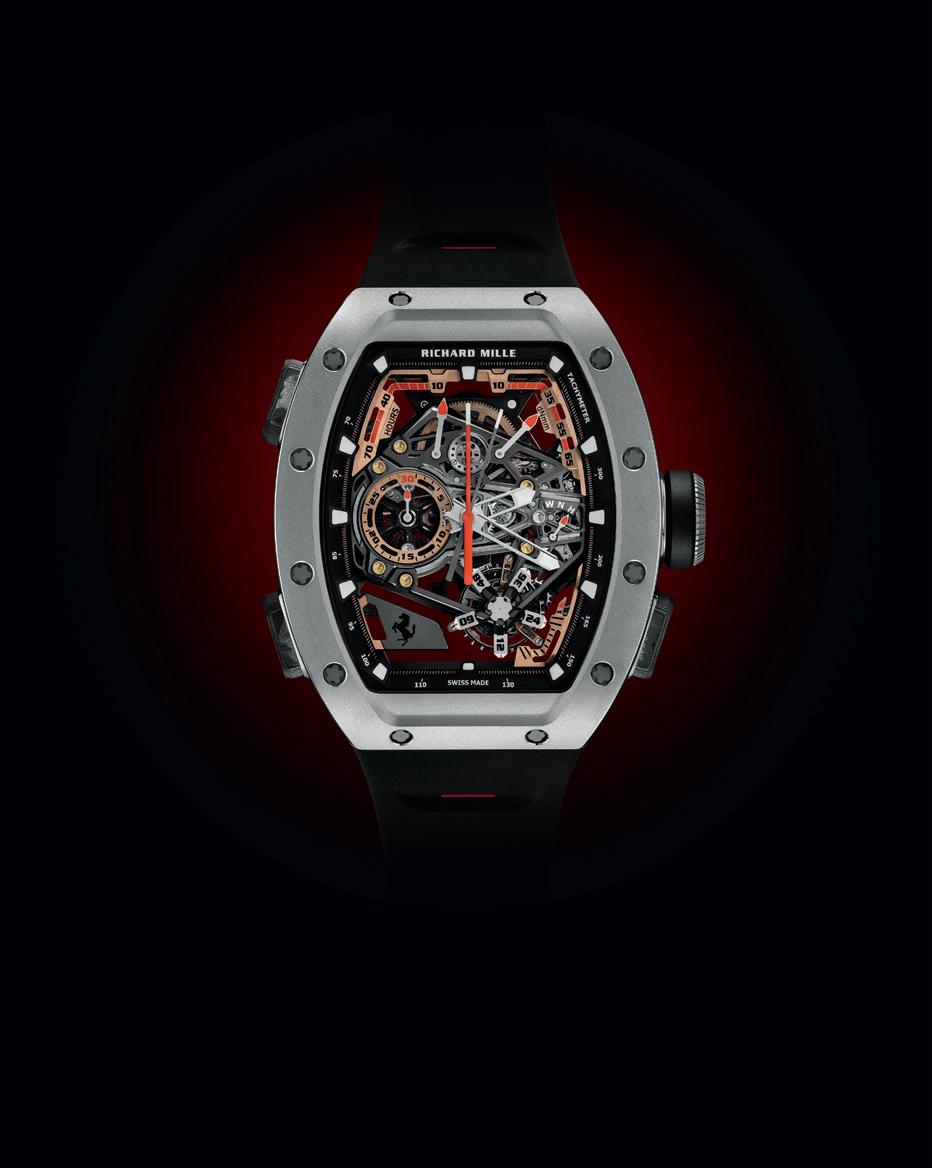
RM 43-01 FERRARI
Manual winding tourbillon movement
70-hour power reserve (±10%)
Baseplate and bridges in grade 5 titanium and Carbon TPT®
Split-seconds chronograph
Power-reserve, torque and function indicators
Case in microblasted titanium and Carbon TPT®
Limited edition of 75 pieces

Self-confessed petrolhead Joe has successfully competed in modern and Historic racing. Now Broad Arrow Auctions VP of Sales, EMEA, he is also a passionate collector and curator of motor sport memorabilia, and so he was in his element during a recent visit to the Mercedes Heritage Archive.
Motor-racing correspondent, commentator and acclaimed author Maurice has covered Formula 1 since 1977. Having attended more than 500 F1 races, he’s ideally equipped to deliver a personal account of the evolving Grand Prix experience.


Mat is the first Australian-based journalist to gain permanent Formula 1 media accreditation. He grew up in GP-hosting Adelaide in the 1980s. He’s worked in commentary and public relations, and is an award-winning journalist with more than 15 years of experience in the F1 paddock.
Manchester-born illustrator Stanley went from creating a bootleg White Stripes poster to staff-writer portraits for The New . We were thrilled when he agreed to illustrate 15 of our Top 50 F1 drivers feature; even more so when he threw in childhood heroes Alain Prost and Keke Rosberg.



























Deputy editor Wayne Batty
Marketing manager
Rochelle Harman
Editorial director
David Lillywhite
Creative director Peter Allen
Staff writer
Elliott Hughes
Marketing and events
Jasmine Love
Managing director
Geoff Love
Managing editor Sarah Bradley
Designer
Debbie Nolan Accounts
Lifestyle advertising
Sophie Kochan
Contributors in this issue
Advertising sales Sue Farrow, Rob Schulp
Jonathan Ellis
Advertising production Elaine Briggs
Thomas Alexander, Jonathon Burford, Jordan Butters, Nathan Chadwick, Sam Chick, Stanley Chow, Mat Coch, Robert Dean, Richard Dredge, Paul Fearnley, Martyn Goddard, Rob Gould, Rick Guest, Maurice Hamilton, Richard Heseltine, Evan Klein, John Mayhead, Clive Robertson, Michael Alan Ross, Tim Scott, Damien Smith, Peter Stevens, Joe Twyman, Basem Wasef, Rupert Whyte, Brian Williamson
Single issues and subscriptions
Please visit www.magnetomagazine.com or call +44 (0)208 068 6829
Geoff Love, David Lillywhite, George Pilkington Unit 16, Enterprise Centre, Michael Way, Warth Park Way, Raunds, Northants NN9 6GR, UK
Printing Buxton Press, Palace Road, Buxton, Derbyshire SK17 6AE, UK.
Printed on Amadeus Silk and Galerie Fine Silk supplied by Denmaur as a Carbon Balanced product. Made from Chain of Custody certified and traceable pulp sources
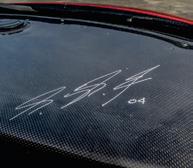
Who to contact
Subscriptions rochelle@hothousemedia.co.uk
Events jasmine@hothousemedia.co.uk
Business geoff@hothousemedia.co.uk
Accounts accounts@hothousemedia.co.uk
Editorial david@hothousemedia.co.uk
Advertising sue@flyingspace.co.uk or rob@flyingspace.co.uk
Lifestyle advertising sophie.kochan2010@gmail.com
Advertising production adproduction@hothousemedia.co.uk
Specialist newsstand distribution Pineapple Media, Select Publisher Services
You’d have to be someone special to commandeer a one-of-three Ferrari F50 GT, hammer it around the Fiorano track in a sensationally quick lap time, and then leave your signature on the carbonfibre dashboard just to let the owner know you were there. Only the great Michael Schumacher could get away with that. See our F50 GT feature for more.
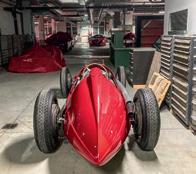
Photoshoot complete, the Alfetta is moved to temporary overnight storage in an off-limits workshop below the Museo Alfa Romeo. A brief ‘tour’ of the vicinity reveals no great secrets but does uncover unconventional treasures in the form of prototypes, motor sport marvels and oddball one-offs waiting to be prepped for possible display in the halls above.
© Hothouse Media. Magneto and associated logos are registered trademarks of Hothouse Media. All rights reserved. All material in this magazine, whether in whole or in part, may not be reproduced, transmitted or distributed in any form without the written permission of Hothouse Media. Hothouse Media uses a layered privacy notice giving you brief details about how we would like to use your personal information. For full details, please visit www.magnetomagazine.com/privacy.
ISSN Number 2631-9489. Magneto is published quarterly by Hothouse Publishing Ltd. Registered office: Castle Cottage, 25 High Street, Titchmarsh, Northants NN14 3DF, UK.
Great care has been taken throughout the magazine to be accurate, but the publisher cannot accept any responsibility for any errors or omissions that might occur. The editors and publishers of this magazine give no warranties, guarantees or assurances, and make no representations regarding any goods or services advertised in this edition.
In 1934, Golden Miller became the only horse ever to win both the Grand National and the Cheltenham Gold Cup in the same year. The Golden Miller Racing Chronograph from Brooklands Watch Company in partnership with The Jockey Club features a buckle cast in an alloy made from an original horseshoe worn by the champion steeplechaser. Only 100 pieces will ever be made. The caseback features sapphires in the racing colours of Golden Miller’s owner Dorothy Paget – who was also the sponsor of ‘Bentley Boy’ Tim Birkin, the fastest supercharged car driver at Brooklands.
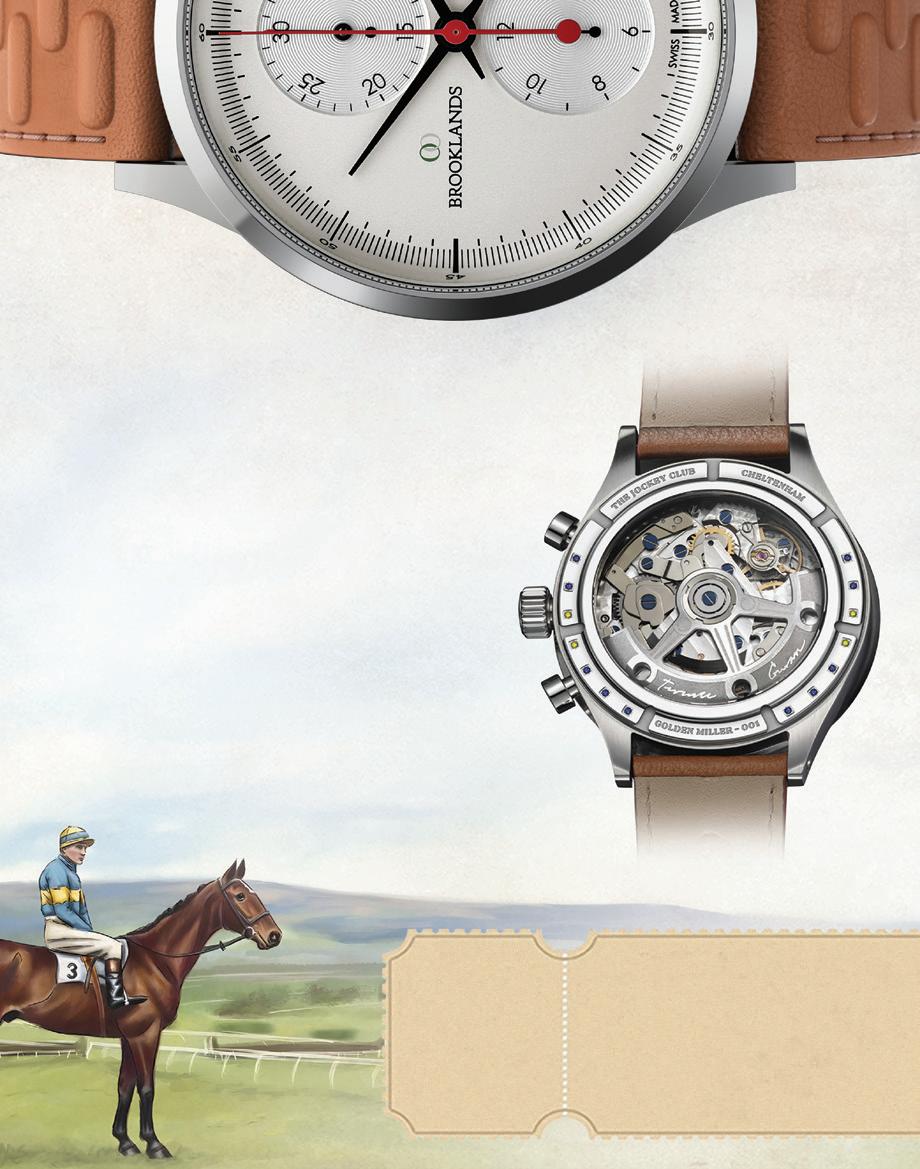
Be one of 100 lucky owners
Whether your passion lies in turf or track, wear an authentic piece of racing history on your wrist. Now available at brooklandswatches.com

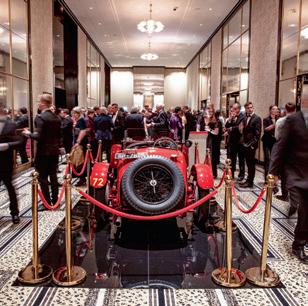
Last year’s relaunch of the International Historic Motoring Awards, the most prestigious global awards night in the world of collector cars, was a resounding success. The 2025 edition will be held on Friday November 14 at the fabulous Peninsula London hotel. To nominate or to book a table, please visit www.historicmotoringawards.co.uk
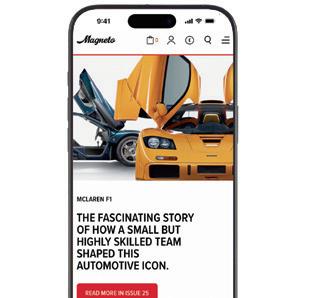
The Magneto website reflects our love for the very best, the rarest and the most special production, prototype, competition and concept cars of every age. For all the news, features, reviews and event reports from the classic and collector car world, plus special offers, upcoming events and buying guides, visit www.magnetomagazine.com
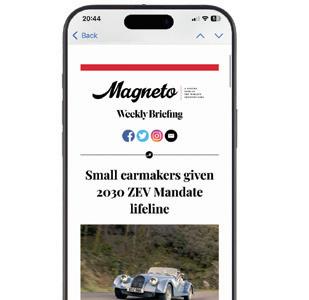
Magneto’s Weekly Briefing is a curated weekly package of the news, features, event reports and previews that matter most to classic and collector car audiences. Our fortnightly Market Briefing newsletter previews upcoming events and adds expert analysis of auction results and prevailing market trends. Sign up at www.magnetomagazine.com
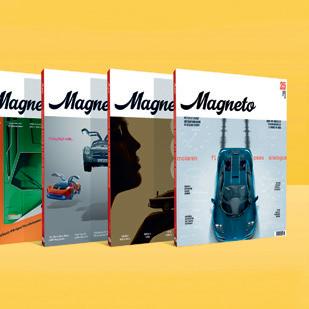
Don’t miss out on any issues of Magneto magazine. You can subscribe for one year for £54 including p&p (€62 or $68, plus postage), or two years for £94 including p&p (€108 or $120, plus postage). Magneto is delivered worldwide in strong cardboard packaging. Please visit www.magnetomagazine.com or +44 (0)208 068 6829




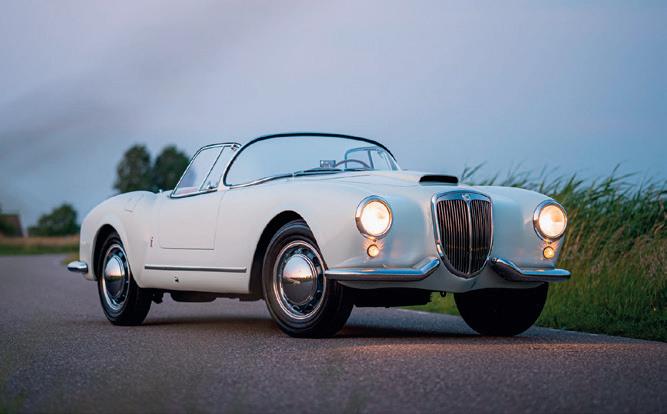

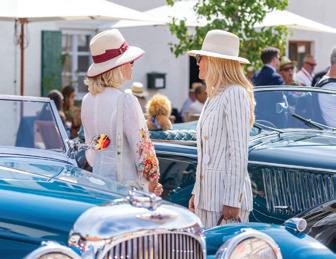
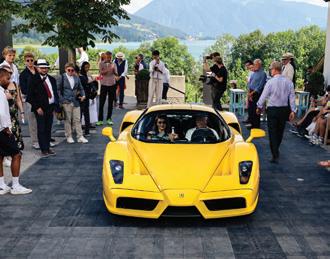
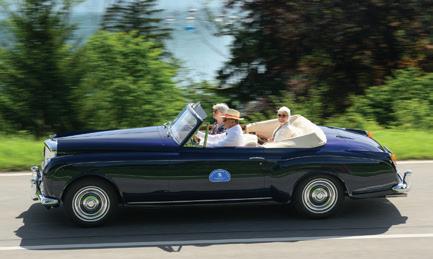
THE WORLD OF AUTOMOTIVE EXCELLENCE AT GUT KALTENBRUNN
Including the Grand Arrival, Best of Show Parade, Car Club Displays, the Emerging Collectors, the Ladies’ Concours, the Junior Concours & Saturday’s Grand Depart which completes the showcase of timeless elegance, craftsmanship, and style at the Concours of Elegance Germany presented by A. Lange & Söhne.
For tickets visit concoursofelegancegermany.com
PRESENTED BY
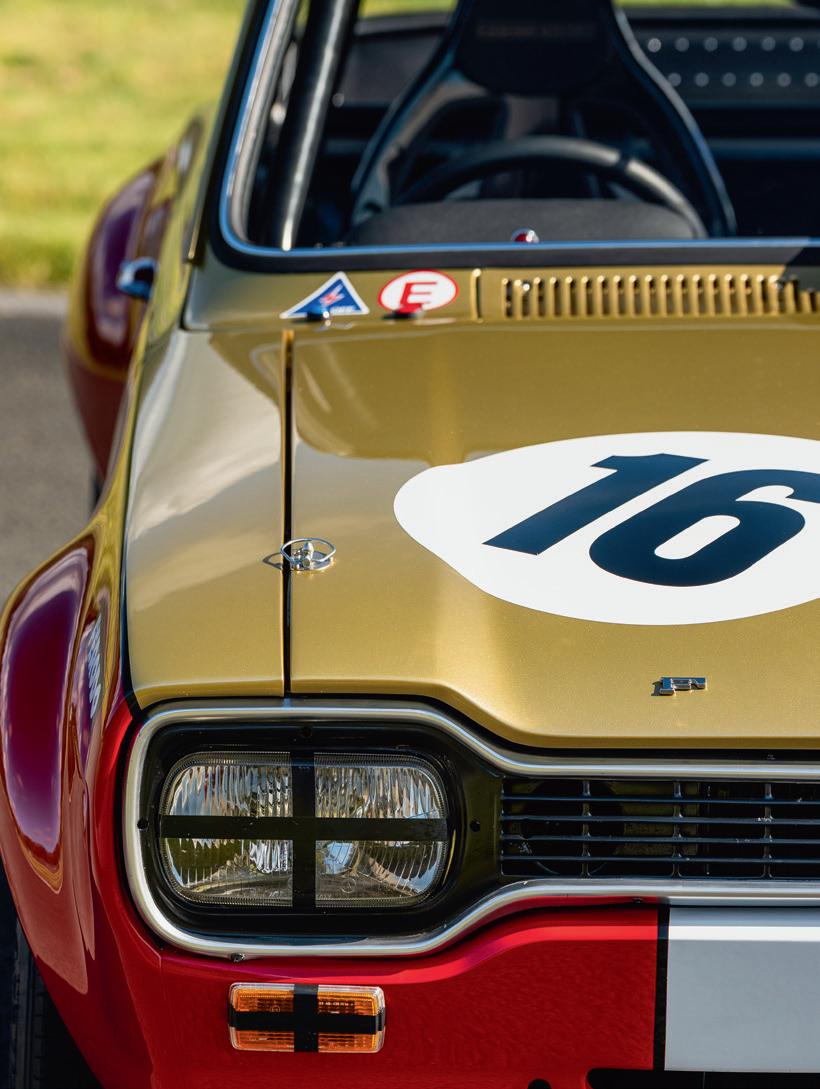
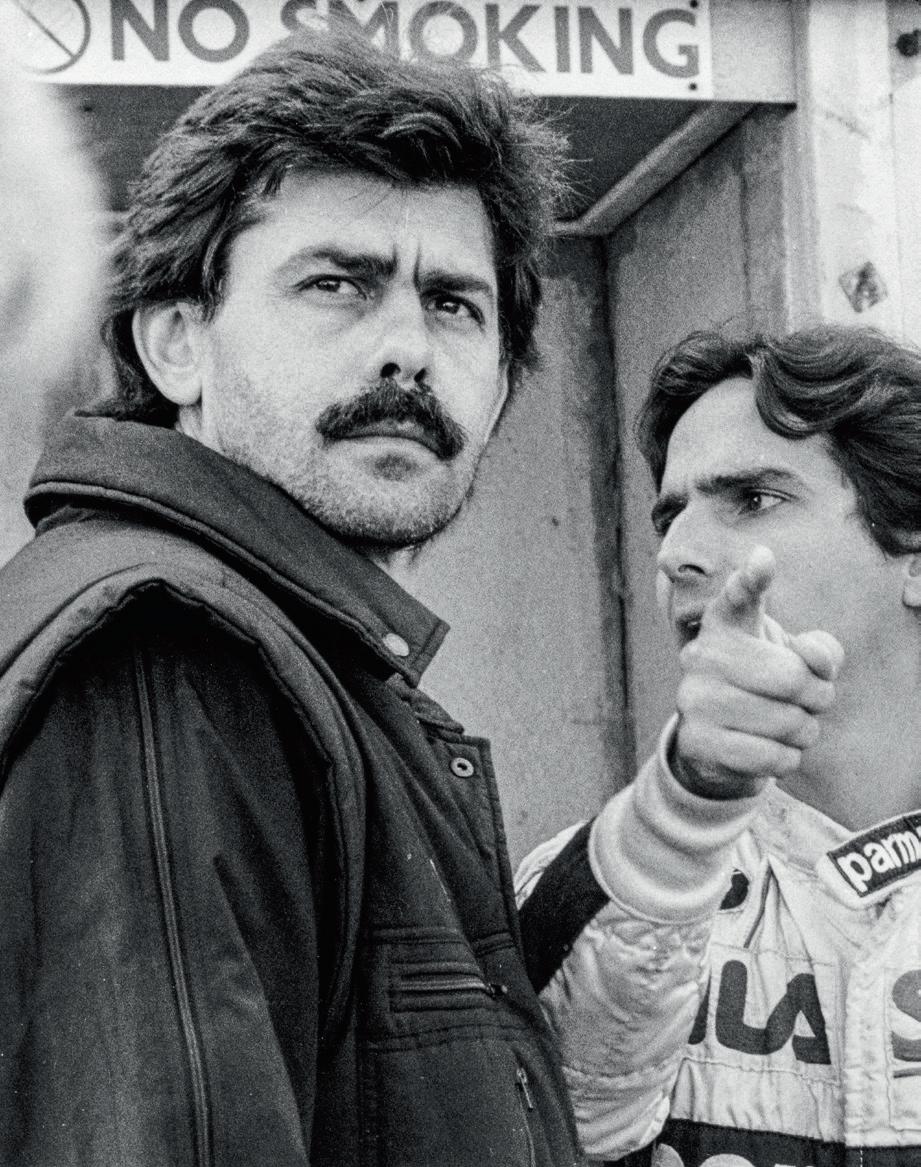
While he is not the first-ever lightweighting devotee, Gordon Murray is one of the principle’s heaviest hitters. For 60 years, nearly all at the pinnacle of circuit- and street-machine creation, he has prioritised low mass, engineering purity and technical innovation with more single-minded consistency than any of his peers
Murray was just 19 years old when he built his first car. The Lotus Seven-like machine was powered by a modified 1.1-litre four-cylinder Ford Anglia motor. Mods included Weber side-draught carburettors, a ported cylinder head and a racier camshaft, among others. With power up to around 93bhp, Murray successfully campaigned it in various hillclimb events, sprints and National Class A Sports Car Racing in 1967 and ’68. He sold it before moving to the UK, so in 2017 he had his team build a replica from the original sketches.
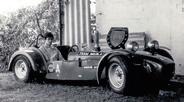
In only Murray’s second year as chief designer at Brabham, the Ford Cosworth DFV 3.0-litre V8-powered BT44 became the first car he designed to win a Formula 1 race. Widely praised for its clean looks and effective aerodynamics, the innovative race car was also notable for its angular cross-section monocoque, downforce-inducing underbody skirts, semi-dry-sump gearbox and risingrate pull-rod front suspension. Carlos Reutemann drove the BT44 to victory at the South African, Austrian and United States Grands Prix. Team-mate Carlos Pace finished in second behind the Argentine at the 1974 season-ender at Watkins Glen, giving Brabham its first 1-2 under new owner Bernie Ecclestone. Revised for 1975, the Martini-liveried BT44B delivered two additional victories for the team.
BORN IN SOUTH AFRICA IN 1946, Ian Gordon Murray qualified as a mechanical engineer. He built and raced his own car, before setting off to the UK with a steely determination and no shortage of ability.
Turning up by chance to an interview for a role he never applied for, Murray got the job at Brabham in 1969. How it came about may have been fortuitous, but his 17-year tenure with the team –chief designer from ’73 – would yield two World Drivers’ Championships for Nelson Piquet, in 1981 and 1983 with the BT49 and BT52 respectively.
Joining McLaren in 1986 as technical director proved even more fruitful for Murray. Here, he oversaw the design and development of the 1988 Drivers’ and Constructors’ titlewinning MP4/4. That car’s immediate successors, the 4/5 and 4/5B, would repeat the feats in 1989 and 1990.
With 50 GP wins in the bag, and the Formula 1 world seemingly conquered,
Murray took his race-car nous to the streets, co-creating the brilliantly bonkers Rocket with friend Chris Craft, followed by the seminal McLaren F1 supercar, its legendary GTR competition derivative and the Mercedes-Benz SLR McLaren.
For most, that would be mission handsomely accomplished, but he pressed on, establishing Gordon Murray Design in 2007, out of which flowed his iStream production process, T.25 and T.27 city car prototypes, stillborn projects for Yamaha, Toray Industries and TVR, along with the dormant flat-pack OX truck project.
Gordon Murray Automotive (GMA) followed in 2017. All its T.50s and T.33s have sold out almost instantly, with finished cars to date being met with critical acclaim. These latest chapters of his life story still reveal a singularly focused man who refuses to lighten up – even if that’s exactly what he’ll demand from the next GMA model.
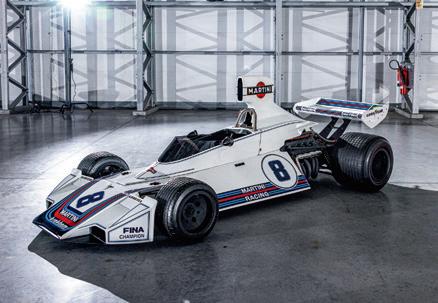
Not forgetting the devastating pace of the 1978 BT46B ‘fan car’ and the 1981 BT49 that delivered the first Formula 1 title for a Murray-designed machine, the BT52 was perhaps even more significant as the first turbocharged car to win a World Championship. Adapting to 1983’s ‘flat-floor’ regulations and the introduction of fuel stops more effectively than rivals cemented Murray’s position as the era’s leading light in F1 car design. With its cleverly proportioned, dart-like shape and Peter Stevens-designed Parmalat livery, the BT52 remains one of F1’s most broadly admired and instantly recognisable machines.

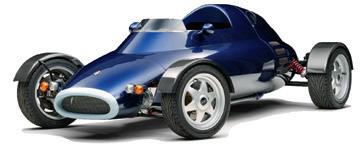
The challenge to build a road car significantly lighter than a Lotus Seven was met with Gordon’s typically fastidious attention to detail and engineering purity. The clean-sheet Rocket design featured a purposefully retro-styled outer bodyshell of GRP sandwich construction attached to a steel spaceframe chassis. Precision-packaged within the tandem-seat body was a 1.0litre 20-valve Yamaha motorcycle engine that made 143bhp at 10,500rpm, and a five-speed sequential ’box and bespoke transverse final-drive unit incorporating a limited-slip differential, twin-speed axle and reverse gear. A kerbweight of just 370kg gave the Rocket a 0-100mph time of 10.0 seconds and a top speed of 145mph. Bonkers. Brilliant. Murray.
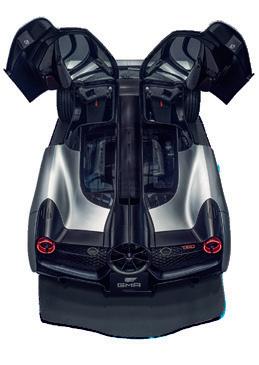
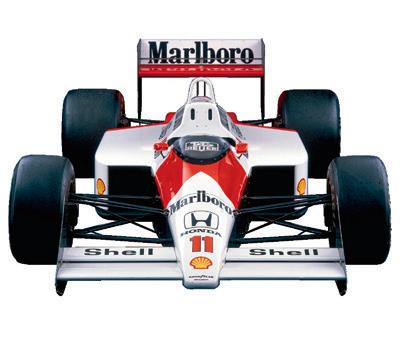
Epic. Legendary. Iconic. The F1 attracts every superlative. And rightly so. No other sports car has rocked the establishment as seismically as Murray’s ultimate driving machine. A masterclass in lightweighting with an all-carbon chassis, gorgeous body, brutal, unblown BMW 6.1-litre V12 and central-steer driving experience that has been the benchmark for decades. From the engine bay’s gold foil and the titanium throttle pedal, to the shaved-leather trim and the magnesium alloys, everything was designed to produce maximum function from minimal material. With a manual gearbox, unassisted steering and no ABS or even traction control, the F1 is peak analogue – a work of sublime engineering art that is still the fastest naturally aspirated car ever.
The spiritual successor to the F1 repeats that car’s winning recipe of all-carbon construction, naturally aspirated V12, three seats, central steering, advanced aerodynamics, compact dimensions and ultra-low mass. The T.50, though, takes advantage of 30 years of technical progress: better brakes, massively improved headlight performance, a smaller, lighter, even more powerful engine, modern system electronics, a full set of driver aids and visibly more effective fan-assisted ground-effect aerodynamics. There is also the not insignificant matter of sales performance. The F1 road car took years to find just 64 customers, while the 100 T.50 units were all allocated within 48 hours.
In the single-season wins vs races ratio stakes, only Red Bull’s RB19 scores higher than the MP4/4. Powered by Honda’s 1.5-litre turbocharged V6 RA168E motor, and designed by a talented team under the technical direction of Murray, the car was nigh-on unbeatable. With sheer mechanical grip, explosive engine power and wizard-grade proficiency in aerodynamic dark arts, the McLarens dominated at every track bar Monza. No doubt the pairing of Alain Prost and eventual champ Ayrton Senna played its part, too, with the duo sharing the team’s 15 victories seven to eight, respectively. The momentum continued well into 1990, culminating in three consecutive double championships for Murray and McLaren.
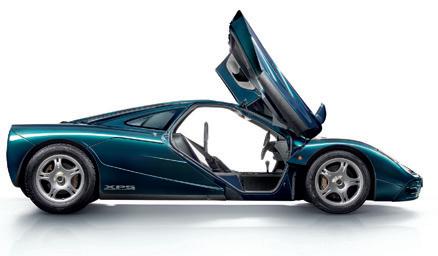
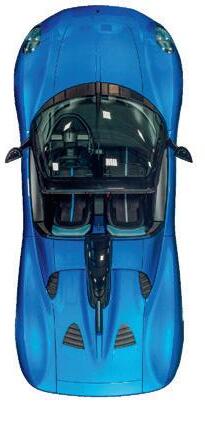
The latest landmark GMA creation is Gordon’s love letter to the “cleanly styled and gorgeously proportioned” sports cars of the 1960s. Powered by a derivative of the T.50’s 3.9-litre Cosworth V12, making 609bhp and capable of revving beyond 11,000rpm, the T.33 Spider promises an immersive open-top driving experience accompanied by the aural delights of a ram-induction intake mounted just at driver’s ear height. With 60 years of world-beating technical know-how hard-wired into its core, fuss-free retro-modern styling, advanced aerodynamics, a trademark-low 1.1-tonne dry weight, blistering performance and limited production, who would dispute the T.33 Spider’s instant collector status?
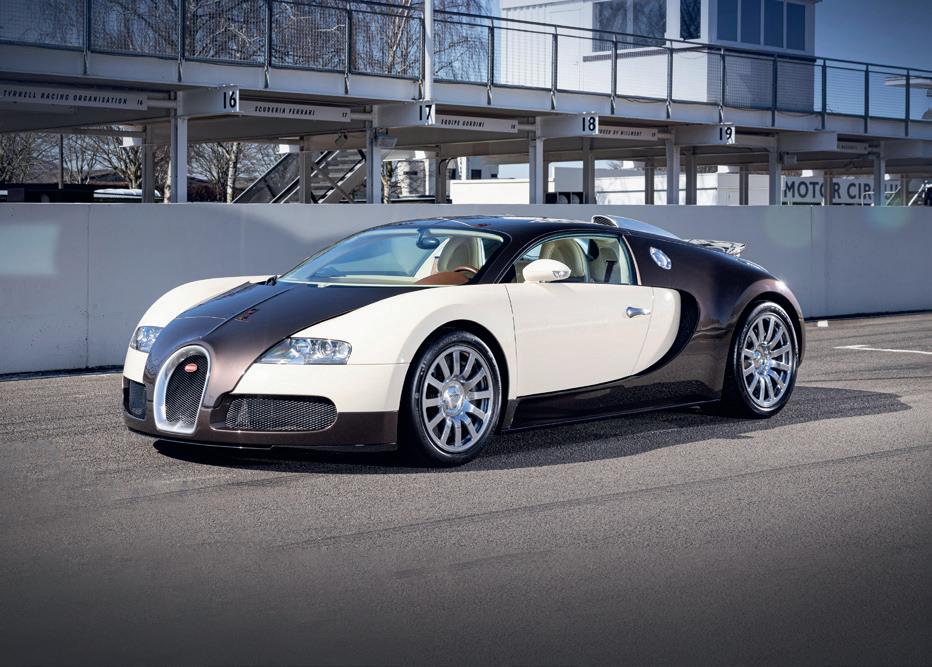
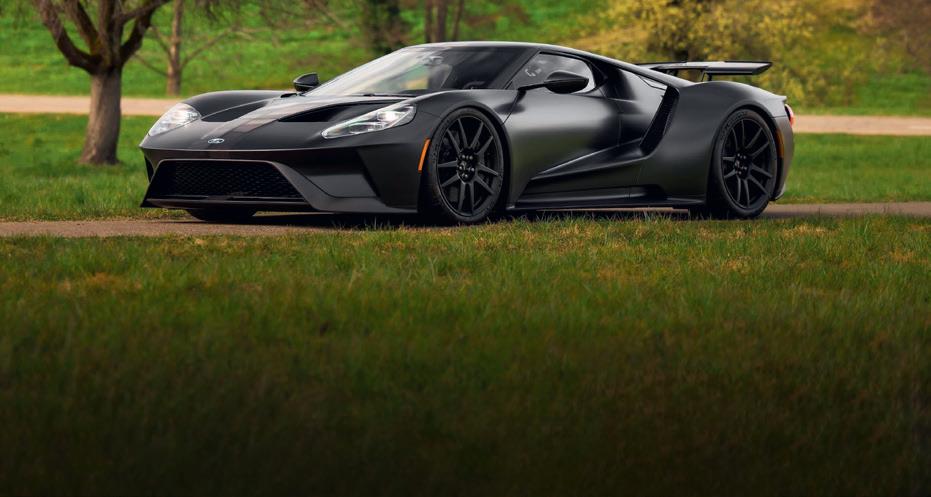
Symbolic gold stars and dragons adorn this bespoke footwear from Schuey’s penultimate season in F1
THESE BESPOKE BOOTS WERE produced by Alpinestars for Michael Schumacher, and they were used in his penultimate season of Formula 1 in 2011. They feature seven gold stars on the toes to represent his World Championships, as well as delicate Chinese dragons on either side.
The dragons – which represent power and strength – were adopted in 2006, when Schumacher ran them on his helmet. As a wider part of his personal branding they later appeared on merchandise clothing and other customisable areas of his race kit, such as the boots seen here.
In 2011 he raced to 11 points, scoring finishes that helped the Mercedes team lay the foundations for the superpower that was set to emerge in the coming years. These boots are the only custom pair to be retained by the Mercedes Heritage Archive, which holds in excess of one million relics that relate to the team. A further exposé on this incredible vault starts on page 112.
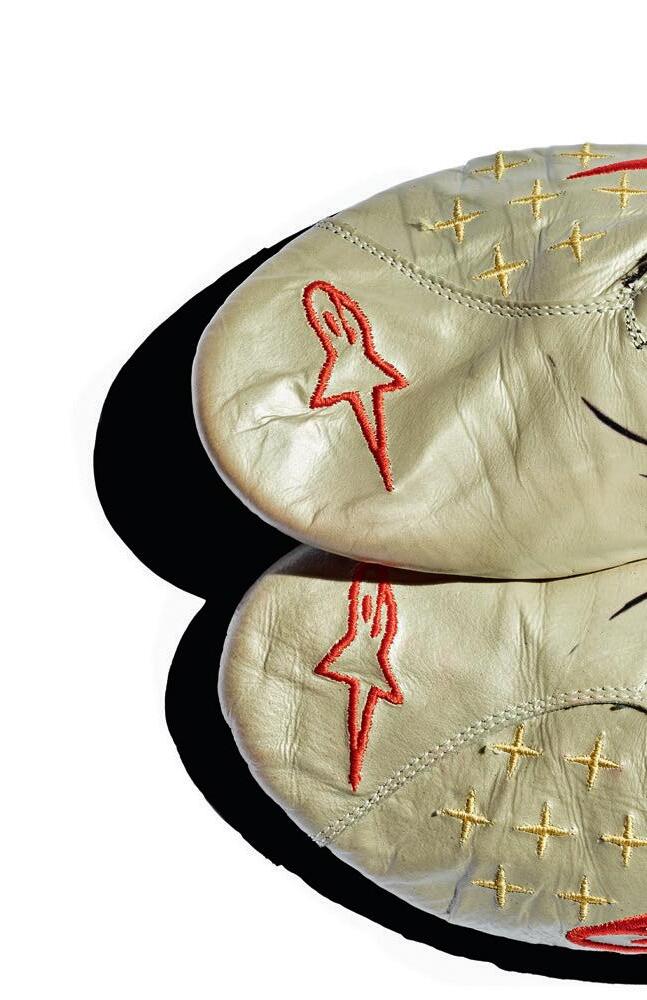

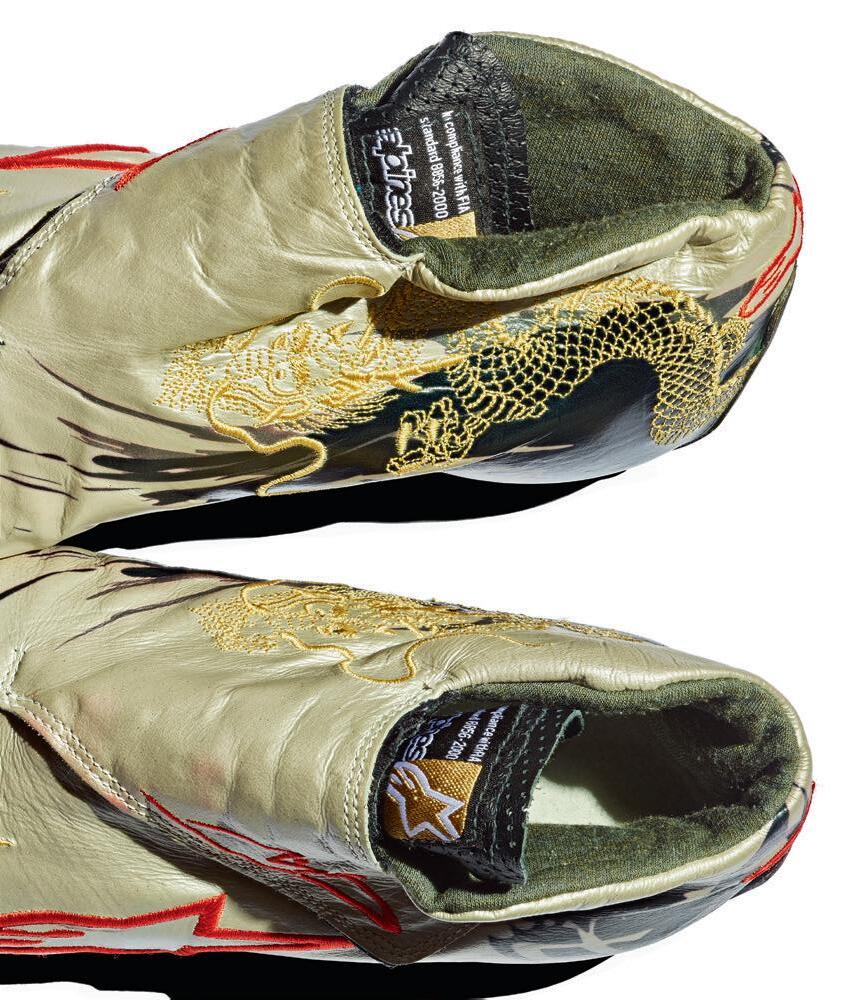
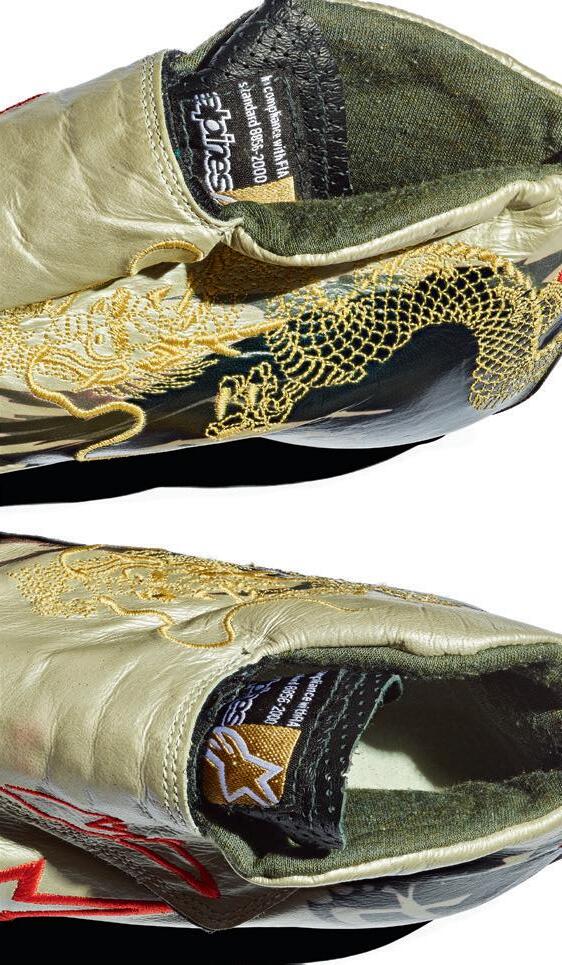
want your award nominations!
You can nominate for the 2025 IHMAs – and there’s a new category for Historic racing
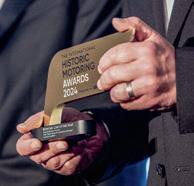
Words David Lillywhite
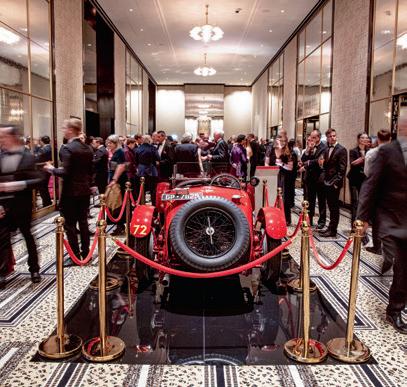
THIS PAGE The prestigious IHMA award ceremony will take place at the Peninsula London hotel on November 14.
WE HAVE NOW OPENED OUR nominations, ticket bookings and sponsorship opportunities for the International Historic Motoring Awards sponsored by Lockton, which once again take place at the stunning Peninsula London hotel on Friday November 14, 2025.
Following the relaunch of the awards last year, there will be further surprises for 2025. We’ve also added Race Series of the Year, changed Young Achiever of the Year to Rising Star of the Year, and incorporated Book of the Year into Best Use of Media. The full categories are listed here. As previously, Car of the Year will be voted for by Magneto readers. We’ll publish the shortlist of contenders on the IHMA and Magneto websites. The
rest, with the exception of the Lifetime Achievement Award, will be judged by an independent panel of experts.
This is one of the best nights out in the collector car world’s calendar, bringing together some of the most influential collectors, organisers and specialists in the world. Being shortlisted or winning an award carries global kudos. Don’t miss out on your chance to take part in some way.
To nominate or for more information, see www.historicmotoringawards.co.uk.
To book a table (note that we sold out well ahead of the event last year), contact events manager Jasmine Love at jasmine@hothousemedia.co.uk.
To talk about sponsorship opportunities, contact managing director Geoff Love at geoff@hothousemedia.co.uk.
Rising Star of the Year
The person under 30 years old who has demonstrated outstanding work in the collector car world.
Personal Achievement of the Year
The person who has made a significant difference to the collector car world through their personal endeavours.
The car – classic or new – that has made the greatest impact on the collector car world this year.
Most significant one-off or low-volume new car launched since November 2024.
The collector car specialist that has made the most significant contribution to the collector car world, or that has achieved something new or special for its own benefit, since November 2024. This goes across all genres, from car sales to restoration and parts supply.
Restoration of the Year
The best classic restoration completed since November 2024, demonstrating skills, understanding of history, provenance and overall achievement. Open to all eras and types of collector car.
The Historic race series, whether national or international, in any country, that has demonstrated particular success and/or innovation since November 2024.
The car club that has made a significant achievement this year.
Industry Supporter of the Year
The individual or organisation that has made the greatest contribution to the collector car world.
Museum or Collection of the Year
The museum or collection that has made the greatest achievements this year.
The best publication, article, website, video, film, social media or any other type of collector car-focused media.
The best collector car event that had its inaugural running after November 2024.
The collector car rally or tour that has demonstrated innovation, participant satisfaction or significant achievement.
The world’s best motoring event, whether a festival, concours, one-marque gathering, anniversary celebration or other collector car show.
The best collector car competitive motor sport event, from the disciplines of racing, hillclimbing, stage rallies, sprints, drag racing and more.
The person who has spent their working life involved in the automotive world, and who is judged to have made significant differences to that world along the way.
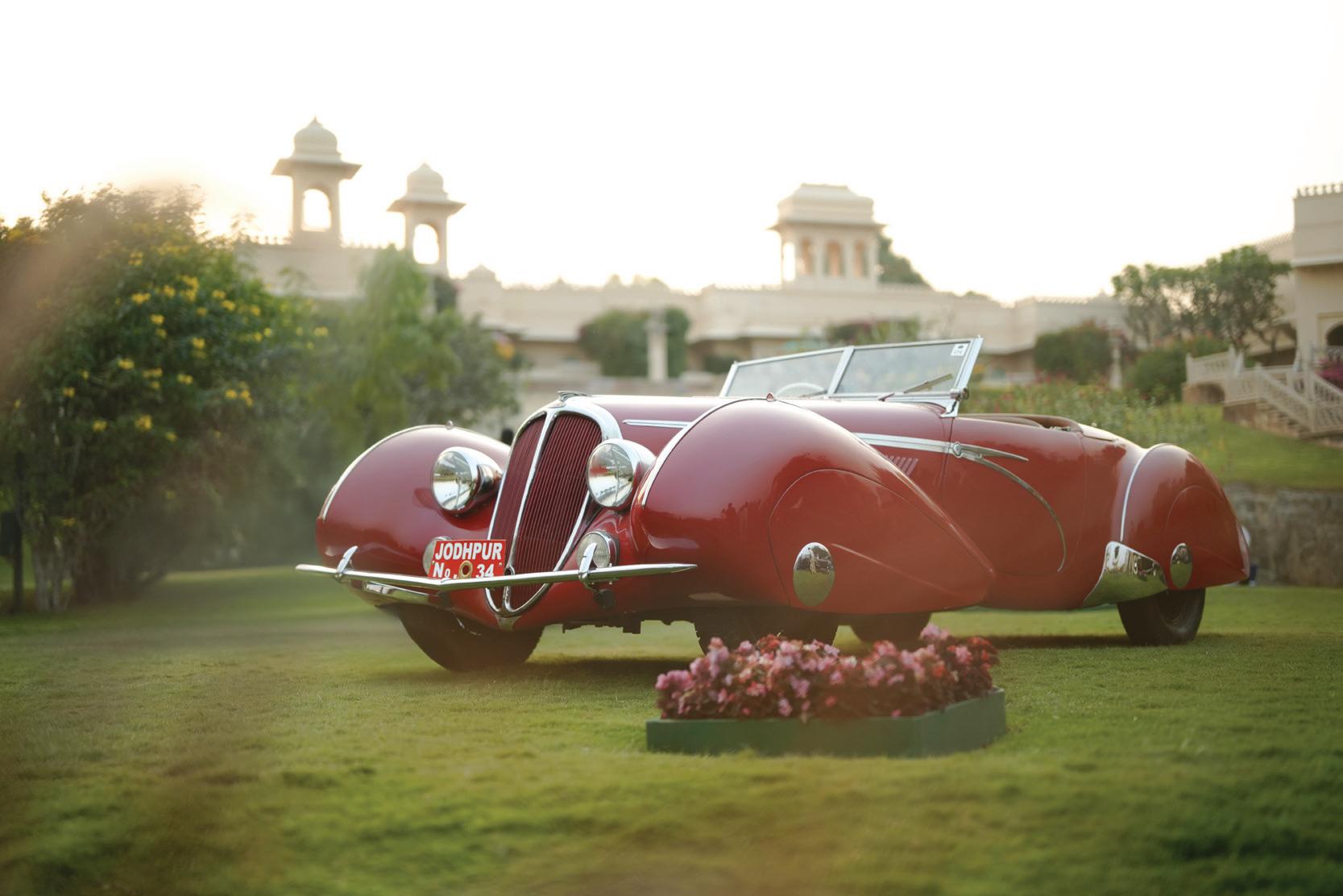
Formula 1 teams and stars have always added showroom glitz to road cars. Some, such as the Renault Clio Williams, are successful – but some aren’t, or else they are just plain odd. Here are a few of the latter…
ROVER 200 BRM (1998)
Qualifying performance?
Leading credentials?
To inject some Max Power magazine machismo into the distinctly Daily Express 200, Rover decided to pay tribute to a Formula 1 team that helped the brand take a gas-turbine car to Le Mans. A team that stopped racing before most of the target demographic were born...
Sprightly 143bhp variablevalve-timed K-series engine, Torsen limited-slip diff, closeratio ’box and lower, stiffer suspension: 500 planned, 1100-plus produced.

Sliding off the back of the grid?
Pole or own goal?
The BRM livery-referencing bright orange grille made the Rover 200 BRM look like a baboon in need of ointment.
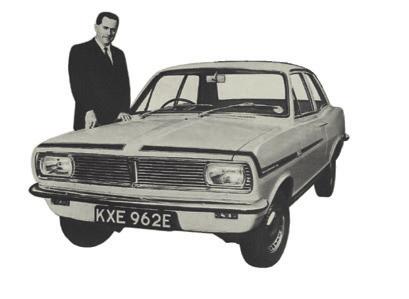
(2004)
While it was not the first Schumacher Fiat (there is the Seicento, too), in a desperate bid to improve the Stilo’s fortunes the brand slapped the German’s name on an horrendously loss-making family hatch. Perhaps fortuitously, it was released just as Schumi’s F1 stranglehold began to slip...
The 170bhp 2.4-litre five-cylinder engine from the Stilo Abarth gave the newcomer some oomph, but the best was saved for the GP version. That had Prodrive suspension tweaks, a fruitier exhaust and 18-inch alloy wheels. Fiat built 3500 of all kinds.
The Viva was always a smart-looking car, but it was not exactly a sprightly one against sportier options from the likes of Ford. Vauxhall turned to Jack Brabham to extract the maximum from the model’s 1159cc four-pot for some youthful dynamism.
MERCEDES-BENZ A160 EDITION HÄKKINEN/ COULTHARD (1999)
McLaren-Mercedes was in its Newey-era pomp, so what better way to celebrate than with 250 special editions dedicated to drivers David Coulthard and Mika Häkkinen? Er...
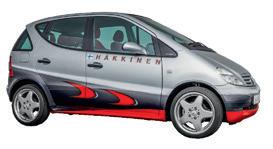
Modified head and manifold, twin Stromberg carbs and a zingier exhaust gave 78bhp. Visual tweaks and Koni dampers among options.
170bhp in a large hot hatch wasn’t much to write home about in 2004. Tellingly, its
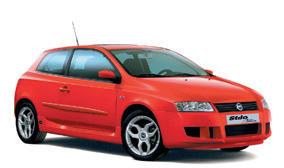
When new, it missed its target demographic completely: it was largely bought as a daily driver by British roadster-owning retirees. But more fool the young – it was an engaging steer and is now collectable.

Prodrive’s suspension tweaks woke up a somewhat woolly chassis, but few bothered to care. Of the 200 that came to the UK, 30 are now taxed and MoT’d.
Sporty stripes down the sides and ‘Brabham’ plastered across the car must have confused people in the late 1960s. That, and paying more than an entire Ford Cortina’s worth for an extra 9bhp (£699 vs £730).
With its garish decals and dog’s lipstick interior, at least the A-Class’s nemesis, the elk, would have run the other way – in disgust.
Merc built four prototype twin-engined A190s with 4WD, 250bhp and a 5.7second 0-60mph. Why couldn’t we have had that, rather than a limp, 102bhp 1.6-litre four-pot?
We’d rather commute via the elk, frankly.
Although Motor Sport’s review noted the extra handling nous, the best it could come up with in summary was ‘creditable’. Hardly effusive, is it?
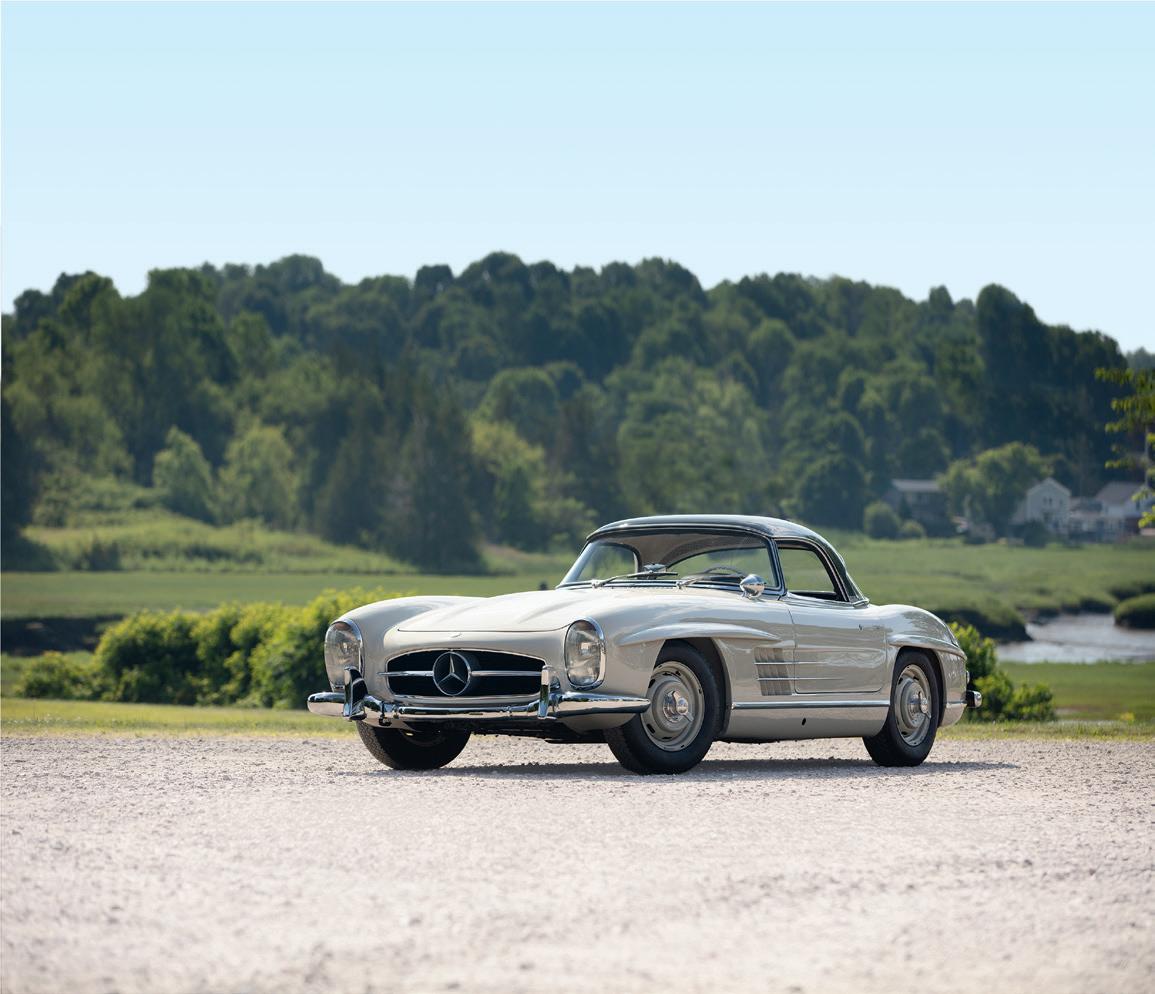
Who’d have known the significance of F1 in 1950?
75 years ago the arrival of the Formula 1 World Championship made motor sport history. If only people had realised...
THE FIRST OFFICIAL FIA WORLD Championship Formula 1 Grand Prix took place on Saturday May 13, 1950, at the UK’s Silverstone Circuit – but at the time the ‘Championship’ aspect seemed to have gone virtually unremarked upon, despite a visitor attendance of more than 150,000.
The programme made no mention of the new points system, although it described the race as “the greatest occasion in the history of motor racing in this Country”. This was also the first (and so far last) time that a reigning sovereign “graciously consented” to attend a motor race.
Now, 75 years on, we can look back on the significance of this race. The new World Championship introduced the points-scoring system for the very first time, with seven prominent Formula 1 races selected in Britain (Silverstone), Monte Carlo, America (the Indianapolis 500), Switzerland, Belgium, France and Italy.
Points were awarded to the top five classified finishers, with eight going to the winner, six to the runnerup, four for third, three for fourth and two for fifth, with an extra point being awarded for setting the fastest lap. A driver’s four best results were then totalled up – and the one with the most points would be crowned as the World Champion.
At the time, though, the focus was on the attendance of His Royal Highness King George VI, Queen Elizabeth, Princess Margaret and the Earl and Countess Mountbatten of Burma. The royal party was introduced to the drivers, and a
special Royal Box was constructed for them to watch the action from.
Among the 21 drivers taking part were Prince Bira of Siam – a member of the Thai royal family – and Baron Emmanuel ‘Toulo’ de Graffenried, a Swiss nobleman who had won the previous year’s non-Championship British Grand Prix in a Maserati.
Ferrari had chosen not to attend the Silverstone event, and so the race was dominated by the all-conquering Alfa Romeo factory team, which dispatched four of its supercharged 158s to Silverstone. Juan Manuel Fangio, Nino Farina and Luigi Fagioli would race three of these, while the fourth car was kindly ‘loaned’ to local ace Reg Parnell. One such ‘Alfetta’ is featured further on in this issue of Magneto
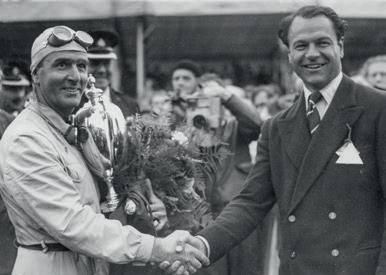
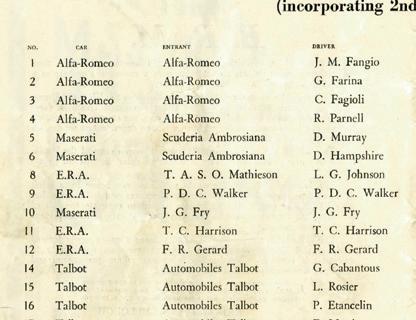
Fangio subsequently retired with engine problems, but the other three Alfas took the podium, with Farina earning the maximum nine points and £500 of prize money. Later that year he became the very first Formula 1 World Drivers’ Champion.
This year, the Silverstone Circuit will celebrate 75 years of the Formula 1 World Championship with an unprecedented display of titlewinning machinery driven by all 34 of the sport’s World Champions, at the Silverstone Festival on August 22-24. It will showcase cars used by Fangio, Jim Clark, Jackie Stewart, Niki Lauda, Ayrton Senna, Michael Schumacher and Lewis Hamilton, all the way through to Max Verstappen’s titlewinning 2024 Red Bull RB20. More details at www.silverstone.co.uk.
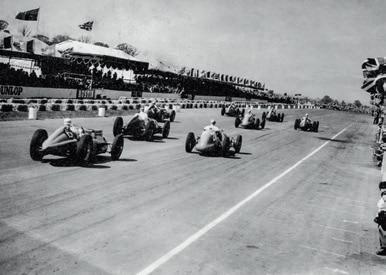



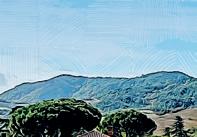

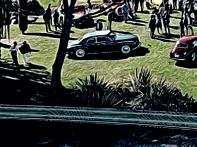



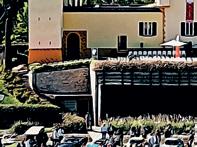
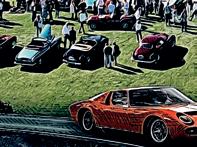
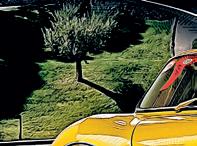





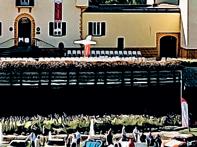
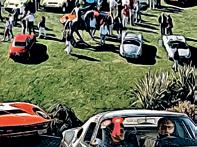
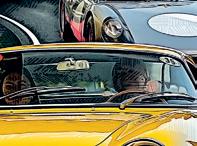

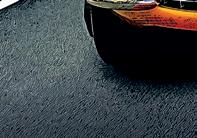


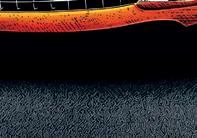



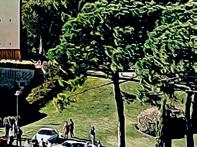

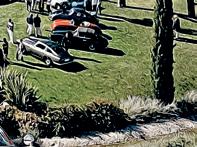
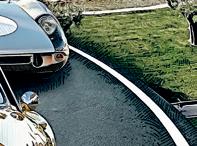

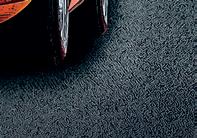




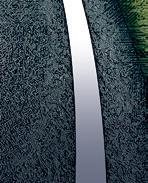


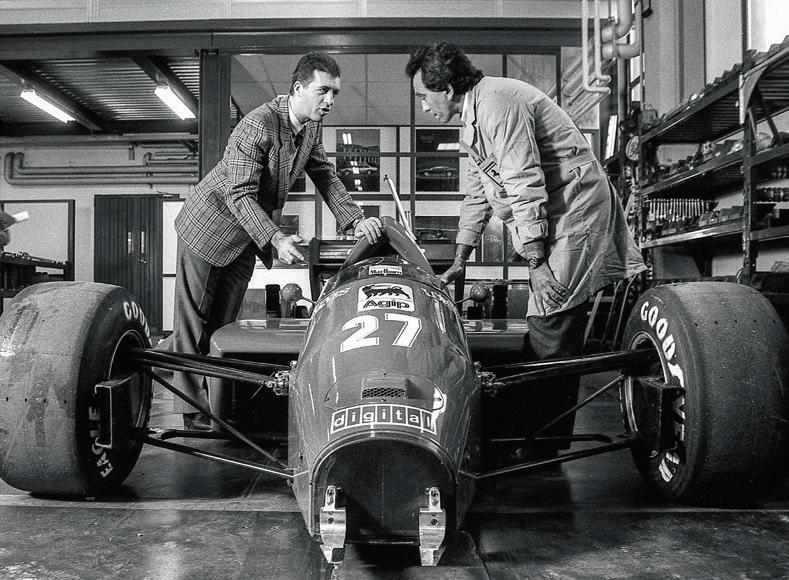
The 1980s saw the start of a period of great change at Maranello – and Piero Ferrari was destined to oversee the next chapter
IN LATE JANUARY 1987, CAR AND Driver magazine editor Don Sherman called me, asking me to be in Modena the following Friday to team up with Formula 1 journalist Peter Windsor. Peter had wangled an exclusive interview with Piero Lardi Ferrari. This, he stressed, was a big deal.
Piero, son of Enzo Ferrari and Lina Lardi, had been working for Ferrari in the purchasing department. Due to growing recognition from his father, he had recently been promoted to a Gestione Sportiva position at the F1 racing department, but still kept away from the media spotlight. Peter sold the story to Ferrari on the recent arrival of John Barnard in the Ferrari F1 camp and the IndyCar racing project planned for 1988.
I’d never worked with Peter, and he wasn’t a regular C&D contributor, but
upon meeting up in Modena he briefed me on what he hoped would happen. This being Italy, there were no guarantees. As it turned out, Piero arrived in a red Alfa saloon complete with a driver, and during the long day that followed we were guided around the racing department where we were shown the F1 and IndyCar prototypes. Both had been designed by Gustav Brunner, and Peter discussed many technical aspects with the engineers. It was noted that Mr Barnard would only tweak the 1987 cars. Piero explained about the recent change in drivers, with Austrian Gerhard Berger joining the Scuderia due to Stefan Johansson’s criticism of the 1986 car.
In sit-down interviews Piero talked of the past and his relationship with his father. He mentioned that his dad said he should stay away from racing
SPREAD
Piero Lardi Ferrari was ascending the family ladder in the late 1980s, as Ferrari left behind the Enzo era on its way to becoming the road and track monolith it is today.
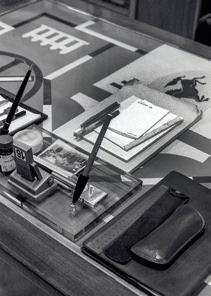
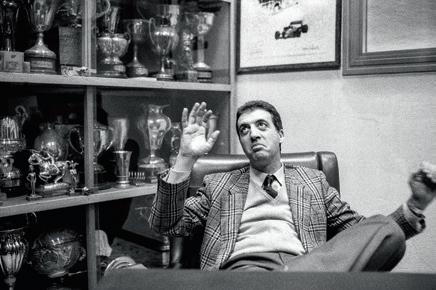
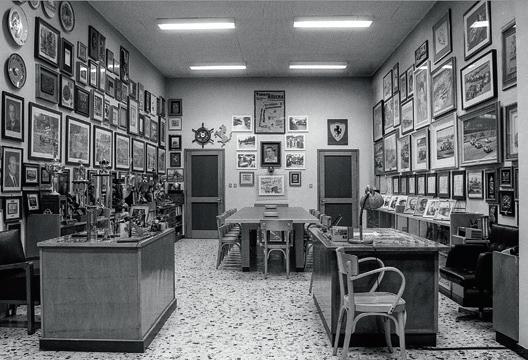
cars and be a farmer (he had grown up on a small farm). However, Piero had always enjoyed working on the farm machines, as well as helping a local motorcycle mechanic in his youth. After reading business studies at Bologna University, he’d joined Ferrari SpA working in admin. He then graduated to the racing department, and by 1987 he was working closely with Mauro Forghieri to engineer the radical step of hiring Barnard to design the new chassis despite the latter’s refusal to move to Italy. Piero stressed that Il Commendatore had the final say on all racing matters, but that he had supported the plan on the grounds of ‘whatever it takes to win’.
During this tour of the factory and design studios, I shot reportage images. I chose black-and-white film, because I needed to travel light and stay in the background, all subject to challenging lighting conditions. I think they really
forgot I was snapping away, so engrossed were they in the interesting topics of the interviews. By late afternoon Piero suggested that, as our dinner reservation was quite close by, we had time to look at Enzo’s original office in the old factory.
We were whisked through the traffic to a brick warehouse in the heart of Modena. Entering through a wicket door, we found a space full of storage racks. Piero lead us into a darkened room and hit the light switch to reveal an office with two facing wooden desks. The walls and shelving were loaded with trophies and artwork. He explained that one desk was Enzo’s and the other was that of his deceased son Dino – Piero’s half-brother. The office was a time capsule, and we were told that Enzo kept Dino’s desk just as his son had left it before he died of muscular dystrophy in 1956. As any photojournalist would do, I asked if I could photograph the room; to my surprise, Piero said I could go ahead.
We must have spent nine hours with him, without any PR navigating us around the factory and restricting my photography. The session ended at a restaurant that specialised in a balsamic vinegar menu. It had won a competition for the most innovative dishes using the local vinegar. In fact, all three courses featured the brew, ending with strawberries and ice cream bathed in a gran cru of balsamic. A nice touch that highlighted Mr Ferrari’s friendly nature was that our driver was invited to have dinner with us.
Peter Windsor’s story appeared in the May 1987 Car and Driver. The F1/87 cars were not a great success, chalking up only three wins that season, while
the IndyCar project never materialised. Later that year I returned to Maranello to photograph the last Enzo-era car, the F40, and I was granted a brief shoot with the great man himself. Fast forward to 2025, and I decided it was time to revisit Maranello. I wanted to look at the latest state-ofthe-art racing department, and view Enzo and Dino’s old office as displayed in the Museum Enzo Ferrari Modena.
Before this visit I’d had to submit a request as to what departments I wanted to visit and the questions I’d like to ask various heads. It was a far cry from the informal 1980s visit, when the marque had focused on racing and future production. We took the train to Modena and walked to the museum near the station, which consists of the original Ferrari family workshops and a modern glass eco-structure.
This visit was scheduled like a politician’s campaign trail, so we had to move through the exhibits sharpish, starting in the old workshop space packed with Ferrari engine history, and finishing with a ‘recreation’ of Enzo’s office – sadly showing none of the original’s size, layout or contents. We then entered a cathedral-like space dedicated, at the time of our visit, to the supercar, from the 250 GTO via just about every Ferrari contender to the current WEC Hypercar 499P.
An electric blue Ferrari Purosangue then whisked us to lunch at the famed Cavallino Restaurant. First, though, the security office placed a red sticker over my smartphone’s lens. To my recollection, every road and building had changed save for Via Abetone outside the old factory entrance. The Cavallino was once a workers’ coffee
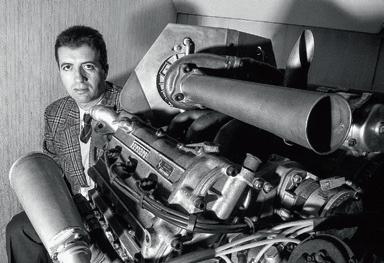
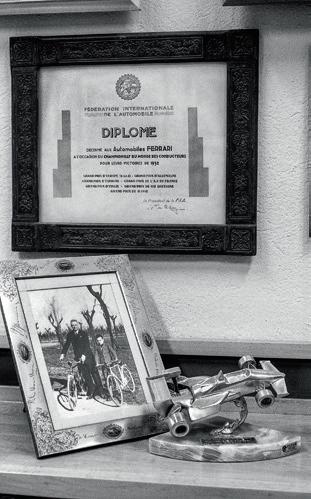
THIS PAGE Enzo and Dino’s office was a time capsule; son and half-brother Piero stepped up to continue their work.
bar, but today – as part of Ferrari itself – it serves excellent regional food with great service. As I tucked into my tortellini, Piero Ferrari brushed past our table with a couple of colleagues on route to a private dining room.
After lunch, we walked to the Museum Ferrari Maranello for a tour heading to the Fiorano track, to visit the new Endurance and XX track-car building. I was given the all-clear to shoot the Le Mans car in the storage area, and also the rows of customers’ historic F1 cars. These were all ready for the lucky owners to participate in various track days – but when it came to the stroll through the workshops, unlike in ’87, my lens cap remained on. I was disappointed not to at least shoot an overview of the workshop, but our final destination more than made up for it. What is now Ferrari Classiche is housed in the original competitions department that I photographed back in the day. Head Andrea Modena gave us an interesting
department overview. The team understand that there are many fine restoration shops around the world, and indeed they have affiliations with 73 of them. What the factory possesses is the technical and sales data of every Ferrari ever produced.
We were given access to the archive, including the data sheets for the very first car and the 1951 sporting logbook with a report on the British GP won by José Froilán González in a Ferrari 375. Enzo might not have retained a collection of old cars, but he was fastidious about keeping records.
The workshop handles around 25 projects a year, with a waiting list of up to 55 cars – their owners all coveting that famous Red Book. The archive was mind-boggling in its size and organisation. We concluded the day with a good look around the workshop, photographing the examples of just about every decade of the marque. The space is now packed with classic Ferraris, where before a mere handful of F1 cars graced the premises.
When I departed Modena in 1987, I left a specialist auto manufacturer. In 2025, the factory builds 13,000 cars a year, and 700,000 people visit the museums. I was leaving ‘Ferrari land’.
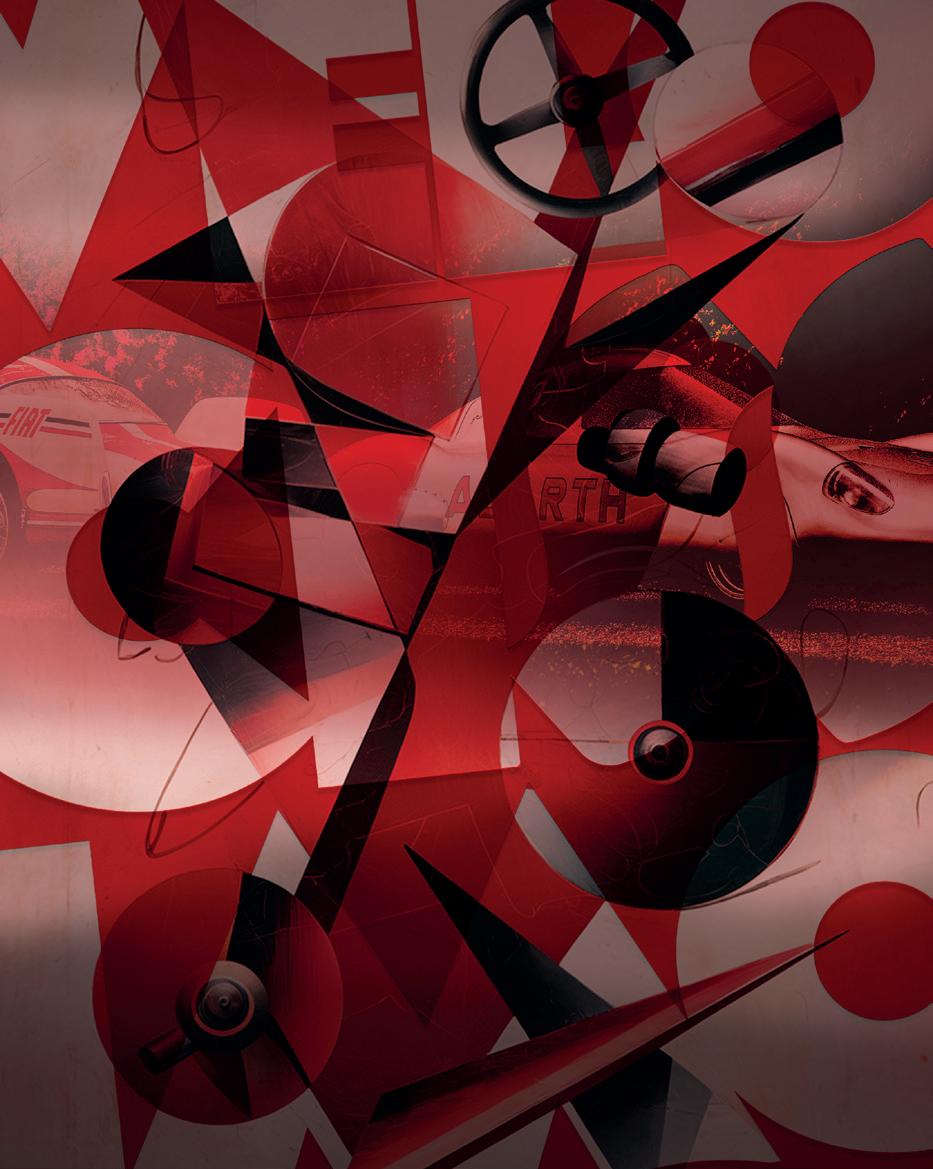

Swiss watch brand Tudor has given wings to its motor sport sponsorship. There’s history here
controversies and the term ‘DRS’ on constant repeat, there have not been as many eyes on this area of a Formula 1 car since aerofoils first appeared back in 1968. Fans will have noticed that Swiss watchmaker Tudor, a sponsor of the Visa Cash App Racing Bulls F1 Team (VCARB) since 2024, has dramatically increased its visibility in the sport with the prominent application of ‘TUDOR’ branding across the rear wing of the 2025 car. Tudor, much like sister brand Rolex, is no stranger to the motor sport arena. Avid followers of motor racing in the US will remember when the Rolex Sports Car Series merged with IMSA’s American Le Mans Series to create the very popular Tudor United SportsCar Championship of 2014-15. Before that, Tudor was the official timing partner of the 2010 Porsche Mobil 1 Supercup Championship, and a sponsor of Dutch racing driver Patrick Huisman.
However, Tudor’s official association with motor sport goes back to 1968, when Japanese Rolex and Tudor distributor Liebermann Waelchli’s sponsorship created the Tudor Watch Racing Team. The outfit’s weapon of choice was a Porsche 906, chassis no. 120, which it purchased from Shintaro Taki of Taki Racing. The Carrera 6 was given a new red livery with large ‘TUDOR’ lettering on the nose, rear haunches and tail-light panel. Rolex branding also featured, although not as overtly.
The Tudor car’s first race ended in a DNF for drivers Mitsumasa Takano and Jiro Yoneyama at the 1968 Fuji 1000km, but the same pairing finished second at the Suzuka 1000km event two months later.
After an opening win at the All Japan race at Suzuka in March 1969,
THIS PAGE Black Bay Ceramic ‘Blue’ marks Tudor’s alignment with motor sport from Porsche 906 in the late 1960s to Racing Bulls’ VCARB 02 in ’25.
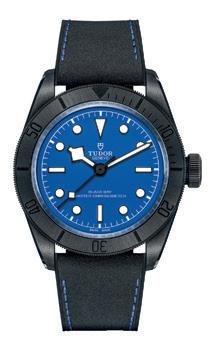
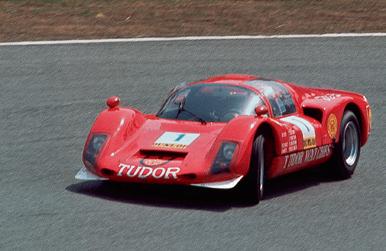
and a third place at the All Japan Clubman Fuji race in April, the Tudorsponsored Porsche’s outing at the Suzuka 1000km race in June would be its most significant.
Starting from second place, the driver pairing of Tomohiko Tsutsumi and Yoneyama took the lead shortly into the race after Taki Racing’s polesitting Lola T70 ran into trouble. Falling back briefly, the Tudor car reclaimed the lead after three hours, and went on to take a well earned victory four hours later.
Pictures of the podium show the Tudor drivers with their laurel wreaths placed strategically over one shoulder only, so as not to cover the Tudor shield logo on their race suits. That’s some switched-on marketing for you. Naturally, Tudor watches were also part of the deal.
Although the 906’s competitiveness began to wane, Tudor’s commitment to the Japanese racing scene continued well into the 1970s, with Peter Bellamy driving it at races such as the 1972 Fuji Masters 250. Tetsu Ikuzawa then campaigned a Tudor-branded GRD S74 in the 1976 Grand Champion series, winning twice in the process. That particular car bore the slogan ‘Tudor Time Machines’ and had ‘TUDOR’ writ large across its giant rear wing.
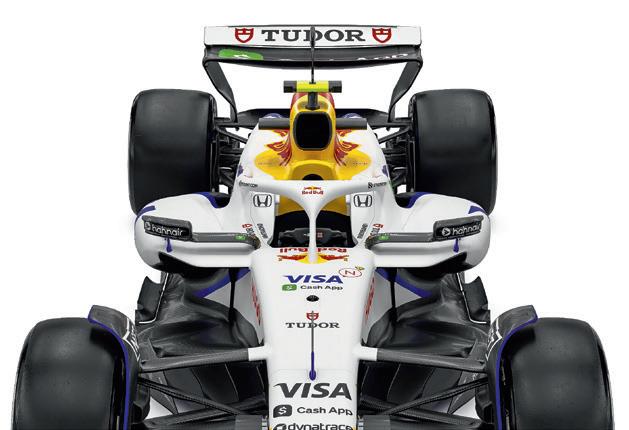
Now, almost five decades on, Tudor again adorns the rear wing of a premier racing car. Sadly, though, big brother Red Bull’s poaching of VCARB’s rising star Yuki Tsunoda two races into the season has severed the watch brand’s admittedly tenuous but charmingly nostalgic link to the Japanese motor-racing community.
Coming full circle in a sense, today’s VCARB drivers sport Tudor’s Black Bay Ceramic ‘Blue’ watches. Fifty years on, the Tudor marketing machine still appears to be ticking along nicely.
22
140 Years of the Motor Car
The first production motorcar built by Karl Benz the in 1885
The Greatest Endurance Drive in History
7o Years since Stirling Moss won the 1000 Miglia
50 Years of the Porsche 911 Turbo
A showcase of the 7 generations of the Iconic Model
The Rolls Royce Phantom
100 Years since the successor to the Ghost was launched
The Aston Martin DB Era (1947-1972)
To celebrate 60 years since the DB6 was launched
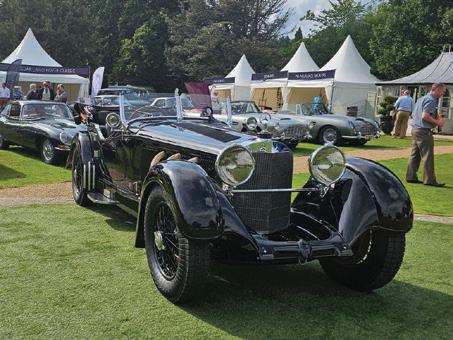

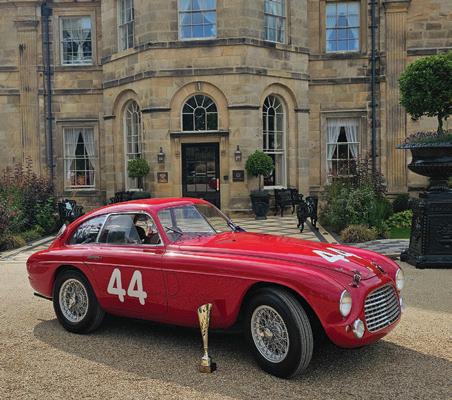

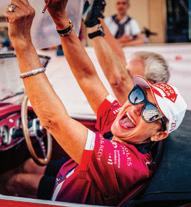

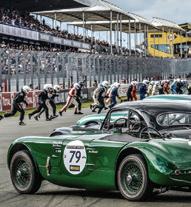
Words Nathan Chadwick
With the passing of Eddie Jordan in March of this year, we look back at the colourful history of the giant-killing race team that bore his name for 25 years, including 14 in F1
1979-1982 THE START
Eddie competed in Irish Formula Ford, Formula 3, Formula Atlantic and Formula 2 from 1974-79, but a series of serious injuries and a lack of cash curtailed his driving ambitions. He founded his eponymous team at the end of 1979 to compete in British F3. He gave up driving duties in ’80, signing David Sears (Jack’s son) and David Leslie for ’81, the latter finishing fifth. New signing for ’82 James Weaver repeated the season finish.
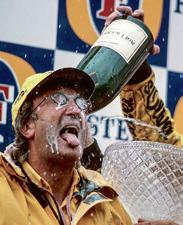
Damon Hill joined the team and delivered a first win at the wild Belgian GP after a disappointing first half of the season with new Honda engines. Behind the scenes, Schumacher fumed at not being able to overtake the Brit – brother Michael bought out his contract for £2m.

1983-1990 PRE-FORMULA 1
Eddie ran Martin Brundle during an epic British F3 fight with Ayrton Senna in 1983, which the Brazilian won only in the very last round. The team eventually took the title with Johnny Herbert in 1987. Stepped up to F3000 and won the series with Jean Alesi in 1989 after an intense battle with Érik Comas. Future F1 drivers Damon Hill, Heinz-Harald Frentzen, Eddie Irvine, Paolo Barilla and Martin Donnelly ran with the team in F3000.
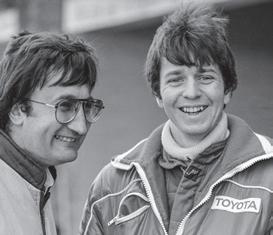
Progress continued with a new driver line-up of Ralf Schumacher and Giancarlo Fisichella for ’97. Plenty of podiums, and Fisichella came close to victory in Germany – but a holed radiator meant he had to get a lift home with Michael Schumacher. A team-mate collision at the Argentinian GP took a slight
1995-1996 SEASON FINISHES: 6TH, 5TH
Jordan became the Peugeot Works team and solidified its mid-pack credentials. A 1995 Barrichello and Irvine double podium was a highlight, although the podiums dried up in 1996 as the team adopted its signature yellow livery. A string of 4th-place finishes netted 5th.

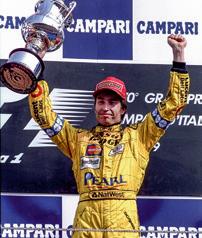
Heinz-Harald Frentzen joined the team and took two victories and a pole to put the German in the position of an unlikely title charge. Hill endured a nightmare season and retired at the end of the year. Frentzen finished third in the drivers’ title as Ferrari and McLaren proved quicker and more consistent.

Jarno Trulli replaced Hill but results for him and Frentzen slipped away, including a double DNF from promising positions at the 2000 Monaco GP. 2001 saw Frentzen leave mid-season due to disagreements due to the courtship of engine supplier Honda, although Trulli bagged four points finishes. 2002 saw Takuma Sato and Fisichella in the team, but sponsorship declined and the team dropped down the grid.
Stepped up to F1 and, due to Bertrand Gachot’s legal issues, handed an F1 start to a promising young German driver, Michael Schumacher for the Belgian Grand Prix. The legal battle to retain his services when he then signed for Benetton, despite assurances from Mercedes that he was due to race for the team for the entire year, cost Jordan dear. Other highlight was Andrea de Cesaris’ epic but doomed battle with Senna in Belgium.
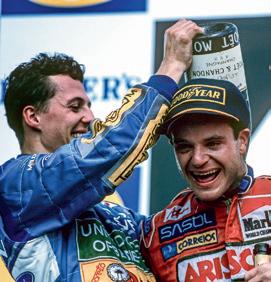
Despite finishing ahead of the other Honda team BAR, Jordan had to return to Ford Cosworth. The outfit slipped back to ninth in the standings, despite Fisichella winning the madness of the 2003 Brazilian GP. An attempt to sue Vodafone for £150 million of lost sponsorship ended badly, and the team would never recover.
Ford’s sale of Cosworth then left Jordan with no engines for 2005.
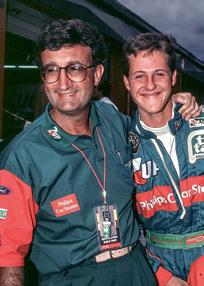
A switch to Yamaha and then Hart engines, plus a wide and varied driver line-up due to the fallout from the Schumacher battle, stymied progress for two years. 1994 was turbulent: rookie Rubens Barrichello bagged the team’s first podium, at the Pacific GP, but he was nearly killed qualifying at San Marino. He bounced back to score pole in Belgium, and the team entered the midpack with 5th place.
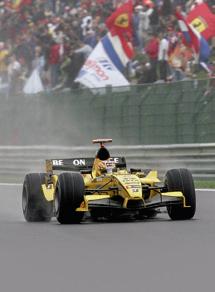
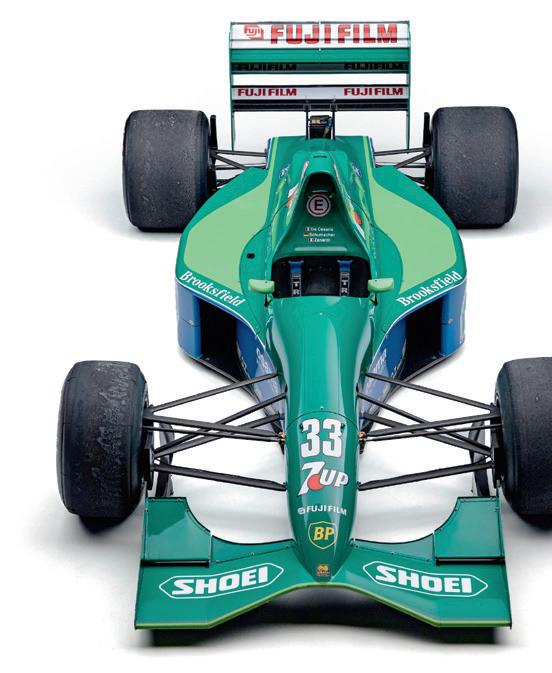
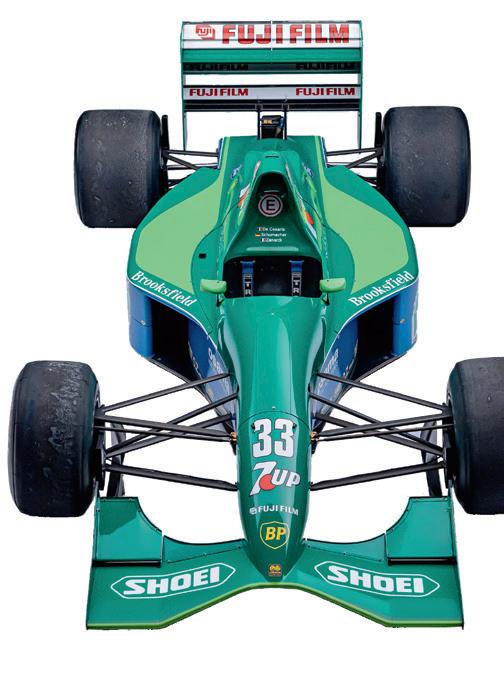
At the end of 2004 Eddie tearfully sold the team to Midland F1 for $60m, although the outfit would run as Jordan for a largely unsuccessful 2005. Engine was leased from Toyota. Tiago Monteiro bagged Jordan’s last point, with an eighth place in Belgium. The team morphed into MF1, Spyker, Force India, Racing

Italy’s FuoriConcorso is attracting more crowds, cars and manufacturer support year on year
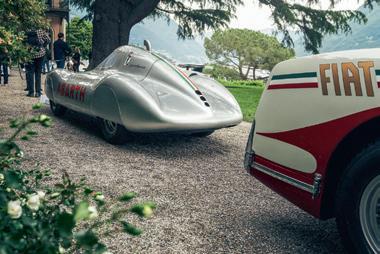
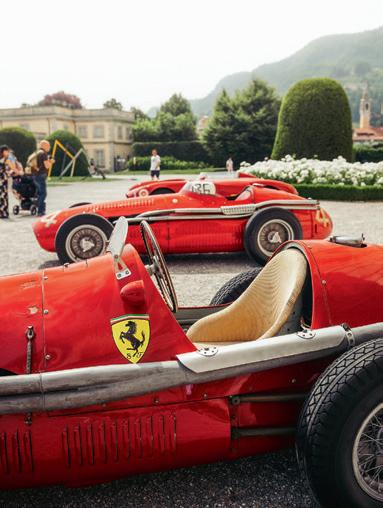
JUST DOWN THE ROAD FROM Concorso d’Eleganza Villa d’Este is FuoriConcorso – still very much the new kid on the block compared with its neighbour, which started in 1929. For 2025, FuoriConcorso takes place on May 24-25, at the Villas del Grumello, Sucota and Olmo, located only a 35-minute stroll around Lake Como from Villa Erba and Villa d’Este. First held in 2019 it has attracted increasing manufacturer interest, from major brands such as Porsche and Aston Martin to smaller boutique firms like Koenigsegg and Zagato.
It all began in May ’19, when one of founder Guglielmo Miani’s other enterprises, the hand-made fashion brand Larusmiani, was sponsor to the Concorso d’Eleganza Villa d’Este.
“That year I had produced a book marking 100 years of Bentley and celebrating the Continentals of the 1990s,” he recalls. “I asked Villa d’Este and BMW if they minded if I rented a villa not far away to showcase 12 unique Continentals, all hand-made, and to present the book’s world
premiere. They said it was a great idea, and I expected 300, maybe 400 people – but 600 or 700 came along.
That gave me the enthusiasm to organise further events.”
This first of these was held during the 2019 Italian Grand Prix weekend.
“We brought six legendary F1 cars to a beautiful villa near Milan, and that was a success far beyond our expectations.
Then we started doing dynamic events,” Guglielmo explains. “We went to California and did our first FuoriConcorso rally from Palm Springs to LA. And then Covid arrived.”
He kept the concept afloat with a rally for only white cars in Sardinia, but FuoriConcorso remained the main focus. Subsequent themes have been aerodynamics (2023) and British Racing Green (2024), and 2025’s theme – Velocissimo (Italian racing legends) – will field some very special cars.
“I can promise a grid of Italian F1 machinery, as well as Le Mans and Targa Florio models,” Guglielmo says.
“There are 13-14 automotive brands involved, but even if they are not

THIS PAGE FuoriConcorso 2025 will build on the success of previous editions, with potential plans for a week-long experience.
‘I can promise a grid of Italian F1 cars, as well as Le Mans and Targa Florio models’
Italian they will interpret the theme.” Already confirmed for ’25 are Berger and Mansell F1 Ferraris, the Mauto Museum’s Maserati 250F and a Fangio Alfa Tipo 159. Non-F1 highlights include an ex-NART Ferrari Daytona and the 166MM Export ‘Uovo’, plus an OSCA MT4 Carrera Panamericana.
Alongside private collectors, brand heritage and classic teams also field rarely seen cars.
“Some manufacturers have approached us to be overall sponsors,” says Guglielmo. “But we say no – we want to build a community that involves all makers. When there is a special moment for a brand – such as Porsche’s 75th birthday in 2023 – we can give them a lot of visibility because that is a time for them to be in the spotlight. Maybe next year it could be Mercedes-Benz, because it has an anniversary, or Ferrari.”
Over the next few years Guglielmo is eyeing expansion: “Our goal – and I think we share this with BMW and Villa d’Este – is to lengthen the event to a week-long experience.”
See more at www.fuoriconcorso.org.

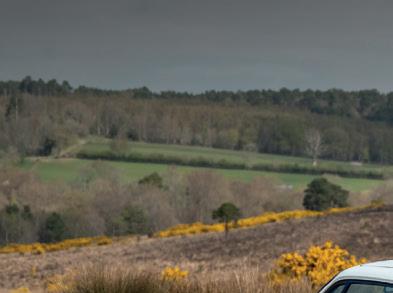

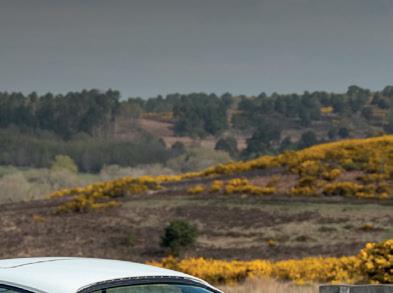













Rick Schad – better known as The Pope of Plastic – performs a miracle on a neglected GP winner
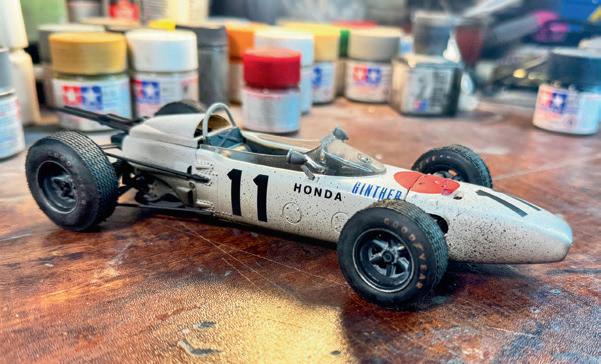
work of American Rick Schad – better known as The Pope of Plastic – who agreed to rescue my neglected RA272 from the twilight zone and transform it into a veritable work of art.
FOR MORE THAN FIVE YEARS, A 1:20 scale Tamiya kit of Richie Ginther’s 1965 Mexican Grand Prixwinning Honda RA272 Formula 1 car languished at the bottom of my wardrobe. As with many people I have fond childhood memories of building model cars, but my enthusiasm was always tempered by my lack of patience – and skill. So, rather than risk a disappointing result, I left the Honda kit in wardrobe purgatory, convincing myself that one day I would finally finish it.
That day never came. Yet, the little Honda Grand Prix car now sits completed, its elegant white bodywork weathered with faux oil and dirt, and its tyres marbled and worn. Even the exhaust pipes look as though they would be hot to the touch. The level of detail is staggering. Such incredible craftsmanship is the
Before The Pope anointed the model with glue, primer and paint, he did hours of research on Ginther’s car, referencing archive photographs to ensure fastidious levels of accuracy.
“I love doing research and using old images to create realism,” Rick says. “I certainly exaggerate the weathering –it’s not quite like this in real life – but this is art and it emphasises the car’s story. When you look at it, you should be able to almost smell the exhaust smoke and burning rubber.”
In total, it took him about 12 hours to complete the model – which is incredibly fast for the quality of finish and level of detail. “I build all the time, so it doesn’t take as long for me – for a regular person, it would probably take a week or so,” Rick reveals. That said, every build presents challenges, and the Honda GP car was no exception.
“Suspension is always tricky, no
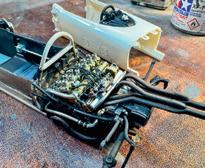
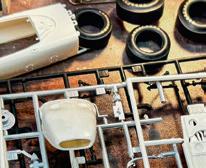
matter how experienced you are –there are so many tiny parts,” he says. “You have to be really careful, because if you break the parts – which I have done many times – they’re difficult to fix. So that was challenging. I also lost one of the brakes for more than two hours,” he laughs.
For me, one of the most engaging aspects of the experience was watching Rick livestream the build on TikTok, allowing every artisan dab of glue and stroke of the paintbrush to be seen in real time. Ironically, following along only reinforced my decision to leave the kit untouched by my own hands – because the final result was far beyond anything I could achieve.
Maybe I will attempt another model, but for now I’ll simply enjoy this one – and continue watching The Pope work his magic on TikTok, where he’s inspiring a whole new generation of modellers. You can catch Rick live on TikTok on weeknights from 7:00pm ET and weekends from 11:00am ET.
To commission your own model, head to www.thepopeofplastic.com.
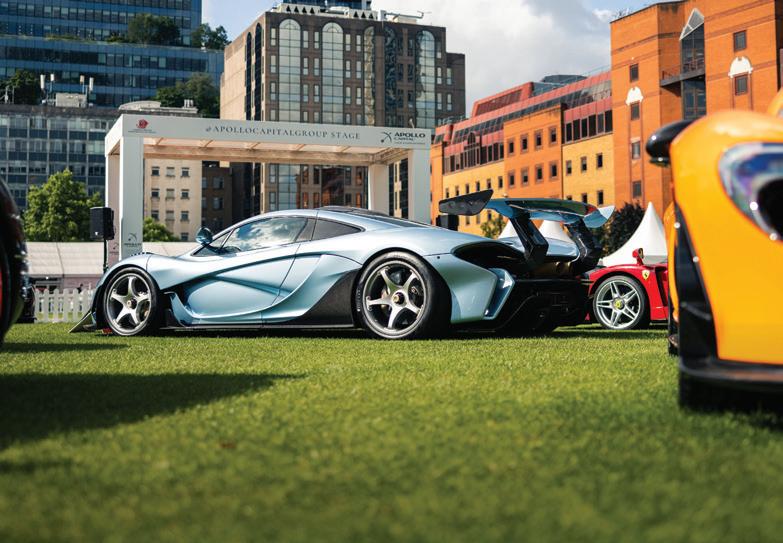
The London Concours is the capital’s leading automotive summer garden party, gathering together nearly 150 spectacular privately owned cars into one of London’s most beautiful hidden venues. Hosted at the Honourable Artillery Company HQ, a five-acre oasis of green in the heart of the City of London.
This year the London Concours will host – among many others – celebrations of Aston Martin, Mercedes-Benz and a dedicated Supercar Day to showcase the very latest performance innovations. Alongside these breathtaking displays, the London Concours is an occasion of pure indulgence, featuring luxury popup boutiques, champagne by Veuve Clicquot, catering by Searcys and a line-up of celebrity and expert guests as well as live podcast recordings
For tickets visit londonconcours.co.uk
TUESDAY 3 JUNE – A BRITISH ICON – ASTON MARTIN
WEDNESDAY 4 JUNE – THE GREATEST MARQUE – MERCEDES-BENZ
THURSDAY 5 JUNE – THE NEED FOR SPEED – SUPERCAR DAY
Boreham Motorworks’
Alan Mann Ford Escort Mk1 is one of the best Continuations we’ve driven
CONTINUATIONS DON’T GET better than this. It’s built by the original team, headed by the son of its creator, with several of the original engineers. It’s fully sanctioned by the original manufacturer. It’s also FIA approved for Historic racing.
This, then, is the Boreham Motorworks Alan Mann 68 Edition, a perfect copy of the 1968 British Saloon Car Championship-winning Ford Escort XOO 349F driven in ’68 and ’69 by Australian Frank Gardner.
In the Escort road car’s launch year, Alan Mann Racing built XOO to exploit every limit of the Group 5 regulations of the day, to the point that it ran a double-overhead-camshaft Formula 2 FVA engine, and suspension that used GT40 components at the front and torsion bars at the rear. Even the bubble arches, much-copied ever since, were an XOO first.
The recreation differs only in having modern cage, seats, harnesses and fire-extinguisher system (although an even more period-correct version can be ordered without the safety gear), along with Koni instead of Armstrong dampers. Otherwise, it’s just as the late Frank Gardner would have experienced XOO – which, as it turns out, is as raw, visceral and responsive a car as you’ll ever drive.
On the challenging, twisty private track of M-Sport, rally legend Malcolm Wilson’s all-conquering motor sportpreparation team, the new Alan Mann 68 Edition is a revelation. Strapped in tight by the five-point harness, you’re faced with an early race version of the classic six-dial dash and trademark deep-dish steering wheel. On correct Elektron magnesium-style aluminiumalloy 13 x 8in front rims (the rears are 13 x 9in), the steering is initially heavy and the twin-cam engine vibrates the bare shell, but the clutch is easy and
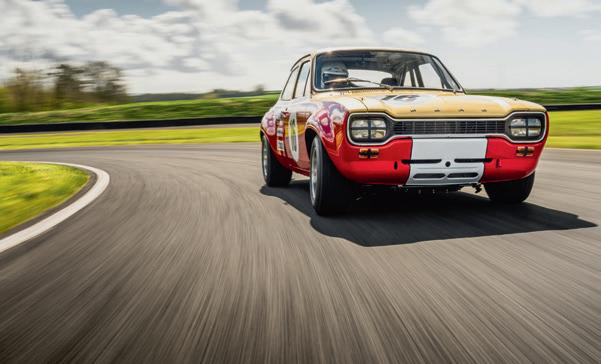
there’s enough torque to set us into motion without drama. That’s a relief in itself, for Alan Mann’s son Henry, who now runs the team, is watching.
Down to the first corner and the unservo’ed brakes – solid discs all round – need a hefty shove, but the car turns in exactly as expected and the engine picks up instantly, sounding glorious as the revs rise.
The four-speed ‘Bullet’ ’box can’t be rushed and needs a heel-and-toe throttle blip for the perfect shift, but it’s so direct that it feels like the selectors are in the palm of your hand.
As the laps go by, it becomes clear that the more you put into this car, the more it will give, whatever your skill levels. On a damp track this is a truly
THIS PAGE David Lillywhite in one of his childhood poster cars – or at least a recreation of it. Only 24 will be made, in period or FIA specifications.
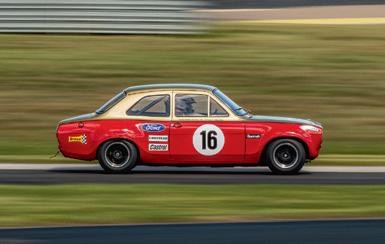
unheroic drive, but instructor Karl Jones has already shown what the Escort can do, flicking from initial understeer to perfectly throttlecontrolled oversteer. It feels so good.
There will never be the chance to drive the original, XOO, in anger, but the Alan Mann 68 Edition could be as satisfying for an experienced racer as for a complete novice. Indeed, as part of the package Boreham Motorworks will invite buyers to events and offer training and racing fully supported by an Alan Mann Racing pit crew.
Boreham Motorworks and, since late 2024, Alan Mann Racing, are part of DRVN Automotive Group, which has engineering and production facilities around the UK. Its in-house teams have scanned and digitally modelled every component of XOO, while all new panels and parts are being manufactured using state-ofthe-art tooling and hand-built on new modern jigs for precision.
Next up is a road-spec restomod version of XOO, which will be followed by a ‘reimagined’ RS200 and further Alan Mann models – all officially approved by Ford, which shows the respect for DRVN in the industry.
For more on the Alan Mann 68 Edition, visit the Magneto website and see www.borehammotorworks.com.
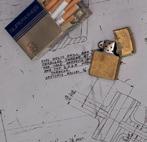
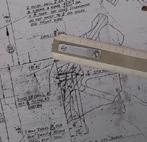

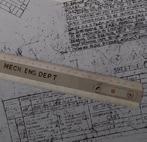
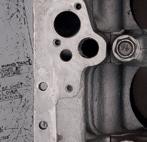
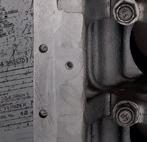
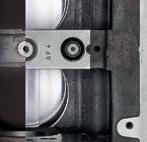
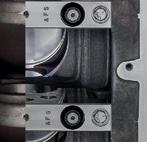



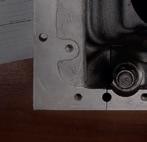
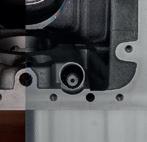


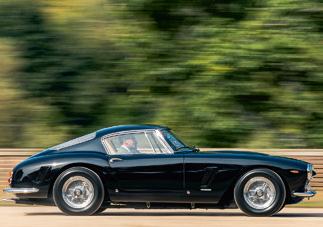
AN ALL-NEW CONCOURS EVENT
is set to take place in Bahrain on November 7-8, 2025. The event has the full support of His Royal Highness
Prince Salman bin Hamad Al Khalifa, Crown Prince and Prime Minister of Bahrain – who is best known for his part in the creation of Formula 1’s Bahrain International Circuit.
The Royal Bahrain Concours comes from Thorough Events, the team behind the successful Concours of Elegance Hampton Court, London Concours and Concours of Elegance Germany. It will take place at the Royal Golf Club, with exclusive activities for participants such as private track days and cultural excursions to Bahrain’s souks and historic sites, as well as a unique
November’s exclusive Royal Bahrain Concours to be staged by British team behind Concours of Elegance Hampton Court
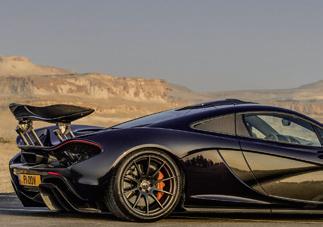

Cars by Candlelight evening event.
The concours will feature 60 handselected, world-class collector cars. Forty of these will come from across the region and the rest from around the world, encompassing historic examples, coachbuilts and modern hypercars. This machinery will be supplemented by a display of 200 cars from local auto clubs.
“This is a Gulf concours, not a British concours in the Gulf,” Thorough Events CEO James BrooksWard said. “The date was chosen by His Royal Highness and the Bahrain Tourism and Exhibitions Authority. The people of Bahrain are very warm, friendly and welcoming, and we’ll be encouraging owners and their families to take part in all the events. We
are immensely privileged to have HRH Prince Salman bin Hamad Al Khalifa as the Patron.”
Bahrain has become a tourist destination for the Gulf as well as a winter destination for Europeans and Americans. The temperature in November is usually around 25ºC to 30ºC, making it more comfortable for those flying in from outside the region.
Several major collectors from the Gulf, US, Europe and the UK have already committed to showing their cars. Concours classes will include Cars of State, The Cars of the Maharajas, The Cars of Falconry, 75 Years of Formula 1, American Classics, Modern Coachbuilding and Achievements in F1: McLaren’s Story. More details at www.royalconcours.com.
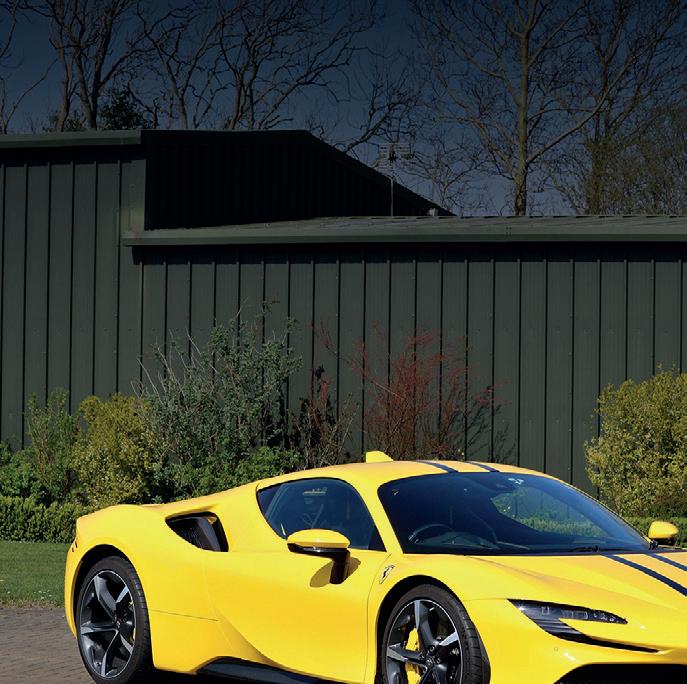
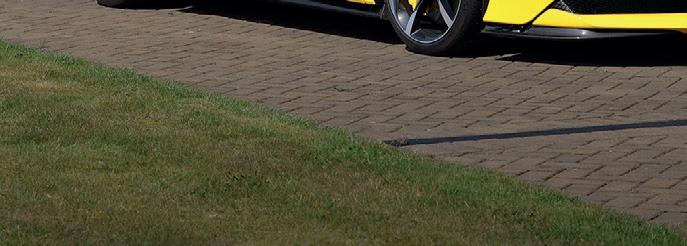





The 2025 Blenheim Palace automotive garden party will mark its anniversary with a series of innovations and new, special treatment for car owners and VIPs

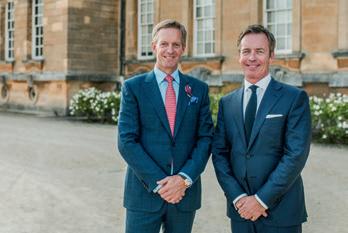
THIS SPREAD Salon Privé founders Andrew and David Bagley have planned plenty of treats and surprises for this, the event’s 20th anniversary.
IT’S NOT JUST THE QUALITY of the concours, the garden-party atmosphere or the locations that define 20 years of Salon Privé. It’s also the continual innovation from founders David and Andrew Bagley and their team throughout the decades.
Think of how the event has changed, from its early beginnings at The Hurlingham Club in Fulham, West London, to Blenheim Palace in Oxfordshire. It’s at the latter where it’s become a happy fixture in the calendar – indeed 2025 sees the tenth anniversary of Salon Privé at Blenheim.
To mark these two big occasions, the team has introduced several more innovations for Salon Privé week (Wednesday August 27 to Sunday August 31), as the Bagley brothers recently told Magneto:
“The key change this year is the new structure – this beautiful glass gallery that blends itself aesthetically with the palace and the surroundings to create a central covered area for all of the automotive brands and sponsors as well as the hospitality areas,” explained David.
“It brings all of the brands together
under one roof. It puts them all back on a level field, so the cars are the focus. It principally provides weather-proofing and sustainability, as well as a new direction for the event on its 20th anniversary.”
There’s also a new experience for concours car owners and VIPs, which marks a first for the Blenheim Palace estate since the venue was opened to the public 75 years ago.
“Owners and VIP guests of sponsors and automotive brands will now have a private gate, the Ditchley Gate entrance, further out on the estate,” explained Andrew. “They have their own private entrance to drive in and experience the estate all the way through, as they come up to and drive over the bridge and then park in the VIP paddock in front of the Great Court.
“And they’ll then come into the Great Hall and have their own mini history tour, because they’ll be taken right through some of the state rooms to the Long Library, and then come back along the rear side of the palace rooms and into the Saloon before they drop out onto the steps and into Salon
Privé. They’re going to have the most incredible and unique experience on arrival, before they even get onto the lawn and the event itself.”
Not only will this be the first time that Salon Privé owners and VIPs have been allowed this unique experience, it’s also the first time that Blenheim Palace has opened in this way to any public visitors.
To add to this, once again for the first time, the grounds of Blenheim Palace won’t open to the public until 11:00am instead of the usual 10:00am, meaning that owners and VIPs will have the place to themselves at the start of each of the three VIP days –Wednesday and Thursday’s Concours Days and Friday’s Ladies’ Day.
The 20th anniversary celebrations will add extra sparkle elsewhere, too, with the annual Gala Dinner this
year extended from the Great Hall to include the Saloon and the Long Library. This will allow capacity to expand from the accustomed 240 visitors to around 600.
Similarly, there will be anniversary celebrations at Salon Privé’s newest addition, the stunning MotorAvia evening party down the road at London Oxford Airport, which this year takes place on the Wednesday night.
The concours aspect, too, will be ramped up for 2025, with the toplevel ICJAG judging continuing to attract the very best cars from around the world. Indeed, every aspect of Salon Privé week has been given a touch of 20th anniversary magic, including the popular Supercar and Club days over the weekend.
For more information and for tickets, see www.salonpriveconcours.com
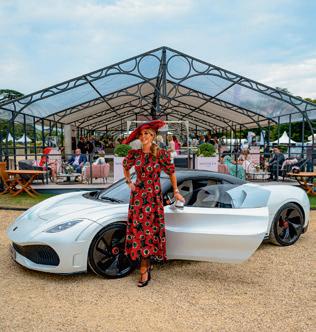
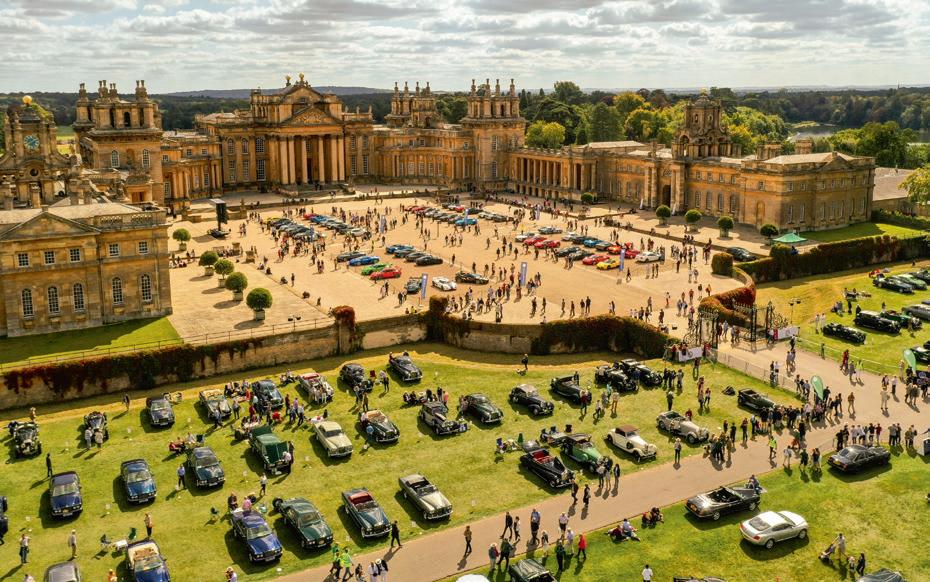
Team facilities
Power
Weight
1. NO
doubt you will have noticed all the 75th anniversary marketing fanfare and accompanying celebratory events. Of course, informed fans know that Formula 1 as a set of continuously evolving regulations governing top-tier post-war motor racing has been around for longer.
The first official F1 race was the 1946 Turin Grand Prix – a successful trial run for F1’s full introduction in 1947. For two further seasons, entrants campaigned for prize money and bragging rights but no real recognition. The institution of the FIA World Championship of Drivers in 1950 fixed this glaring lack of prestigious silverware, with Giuseppe ‘Nino’ Farina being crowned the first F1 World Champion. It’s this Championship we’re all celebrating.
From the downright obsessed to those who claim to only take a passing interest, almost all who follow Formula 1 will remember the moment the sport first got its hooks into them. Moss at Aintree in ’55; Jack Brabham pushing his Cooper to the drivers’ title at Sebring in ’59; Lauda’s gutwrenching, fiery, near-fatal Nürburgring crash, or his miraculous fourth-place finish at Monza just 42 days later; Gilles Villeneuve drifting his Ferrari in Argentina (and everywhere else); Senna in the wet at Donington Park; Räikkönen blindly refusing to lift through thick smoke while qualifying for the 2000 Belgian GP at Spa; Hamilton at Silverstone, for any one of his record nine British GP wins; the list could go on and on… Heroic, dramatic, dangerous and, yes, predictable too on occasion, the Formula 1 World Championship has delivered 75 years’ worth of unforgettable speed, courage and controversy,
while providing a premier showcase for outrageous driving skill, crafty team management and ingenious automotive engineering – the last of these being crucial to on-track success. After all, even the very best drivers can do nothing without a reliably quick car beneath them. From 1958, team owners and managers, technical directors, designers, engineers and mechanics got to battle it out for their own bit of silverware (and in recent decades, a healthy share of television-broadcast revenues) in the form of the International Cup for Formula 1 Constructors, known these days as the F1 World Constructors’ Championship – just one of the innumerable changes to a sport in constant evolution.
A lot can happen in 75 years. Picking just a few highlights from F1’s powerplant chronicles underscores the flux. From supercharged 1.5-litre and naturally aspirated 4.5 origins via the 1500bhp qualifying-spec turbocharged V6 grenades of the 1980s and near-20,000rpm turnof-the-century V10s, to the current 1000bhpplus hybrid era, F1 engines have driven innovation, specific power outputs and efficiency to stratospheric heights. Advancements in car construction, aerodynamics and suspension design have transformed these machines from unwieldy beasts to rockets on rails. Trackside clips of the cars blitzing Singapore’s Marina Bay circuit at night may as well be footage from the next Tron film.
Along with the phenomenal dynamic progress has come an absolute revolution in safety. In the early days, drivers in cotton overalls, cloth skull caps and goggles would hope to be thrown clear of the wreckage. Today’s flame-retardant Nomex-suited drivers wear full-face carbonfibre helmets, HANS devices and biometric-enabled gloves, and are strapped into halo-equipped, virtually impenetrable carbonfibre survival cells.
The result is that driver fatalities in the sport have gone from something morbidly routine to a freak occurrence. A measure of the step-up in safety is that four drivers – de Angelis,
Ratzenberger, Senna and Bianchi – have lost their lives testing and racing in Formula 1 in the past four decades, while four F1 drivers died in 1958 alone. In both cases it’s four too many, however, and no real comfort at all.
While the sport’s rapid evolution makes direct comparisons impossible, at the 1950 British Grand Prix at Silverstone the average age of the 21 starters was 39. Three of those were over 50 years old. At the 2024 season-ending race in Abu Dhabi, the average driver age was 29, with 13 of the 20-strong grid still in their 20s. In 1950 Alfa Romeo brought 12 personnel to the track. Three of them performed a fuel-andtyres pitstop in what was then a remarkable 22 seconds. In 2024, 20 of McLaren’s 50 team members – the maximum permitted on race day – changed the MCL38’s four tyres in 1.9 seconds. The prize money for the winner of the 1950 British GP was £500, while 2024 Constructors’ Champion McLaren won an estimated $161 million for its season’s efforts.
The differences are stark, with the role played by many of the sport’s most influential figures –Bernie Ecclestone, Max Mosley and several other FIA presidents, Professor Sid Watkins and Jackie Stewart, not to mention all the commercial partners, team sponsors and advertisers – being pivotal in transforming a little-known, extremely dangerous motor-racing discipline into the third most watched sporting event on the planet. The challenge for current overlord Liberty Media is to sustainably balance entertainment with authenticity. As long as that ratio stays within enthusiasts’ reasonably broad tolerance margin, we’ll keep on championing the sport. Long live F1!


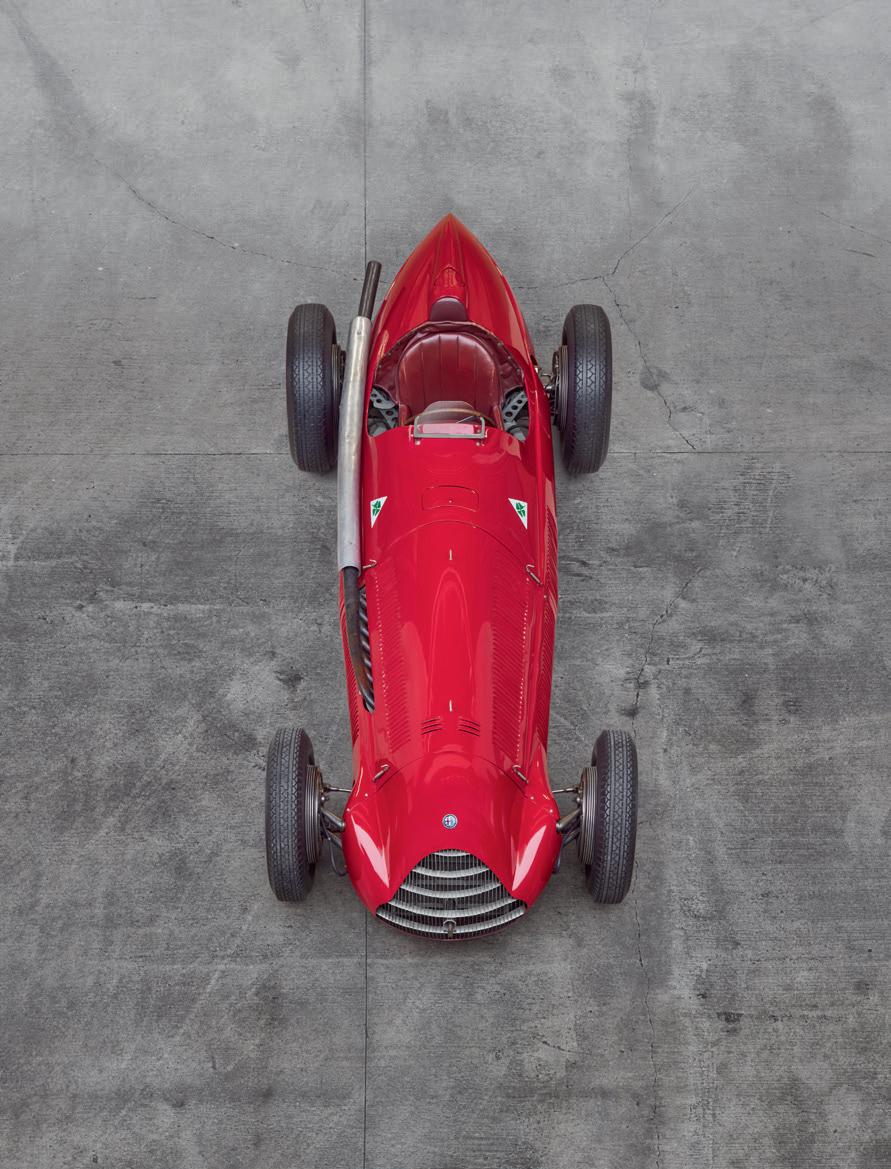
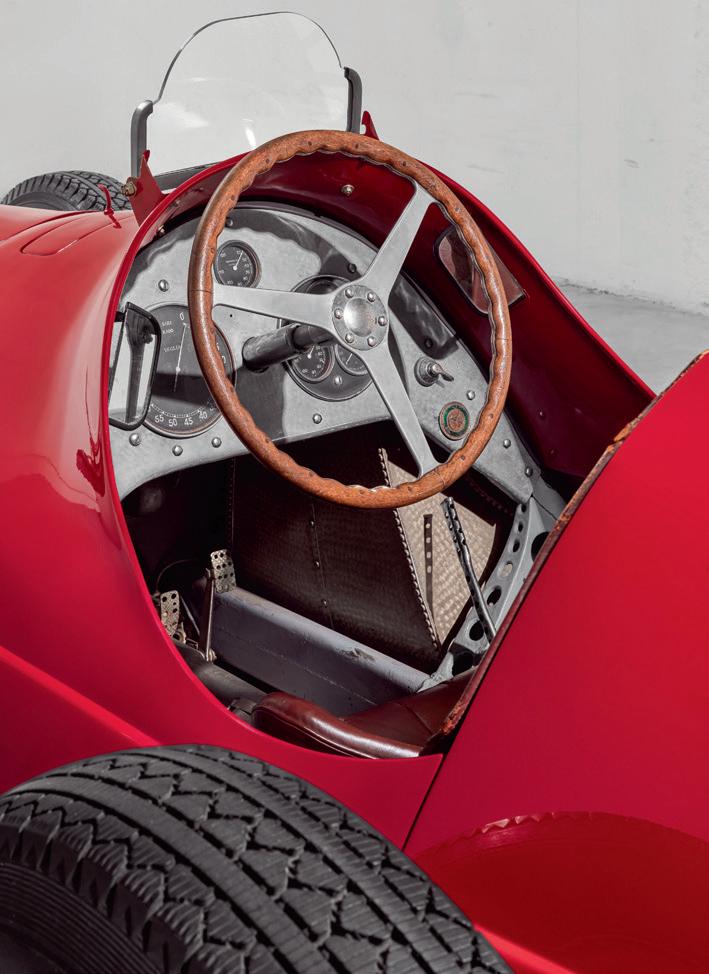
RISING FROM THE ASHES OF GLOBAL CONFLICT WITH MORE SPEED AND PURPOSE THAN ITS RIVALS, ALFA ROMEO TURNED ITS ‘ALFETTA’ INTO A KINGMAKER, A RACE CAR WORTHY OF DELIVERING THE FIRST FORMULA 1 WORLD CHAMPIONSHIP CROWN
YEARS OF F1
AS MUSEO ALFA ROMEO CURATOR Lorenzo Ardizio wheels the ruby red Tipo 158 from its darkened exhibition hall into a floodlit tunnel beneath the building, thoughts of Alfa personnel extracting 158s from the darkness of wartime hidey-holes back in 1946 spring to mind. They could not have known the full extent of the glory that awaited the dusty metal panels they handled that day, but as I run my palm across the polished bodywork almost eight decades later, the historical significance of this motor sport jewel could not feel more tangible. Ironically, the 158 was initially developed to race in the second-tier Voiturette class, in response to the Italian carmaker’s inability to compete effectively against the might of the German marques in the 750kg Grand Prix era. However, with the governing AIACR – the precursor of the FIA – announcing new regulations for 1938, Alfa wasn’t about to give up on GP racing altogether. No longer driven by a
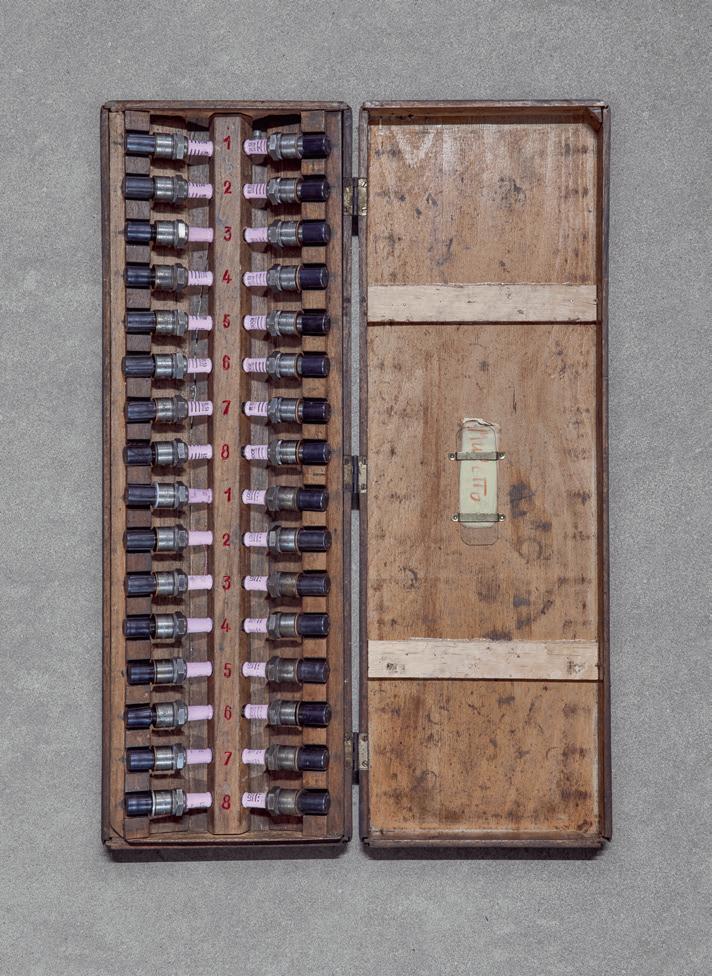
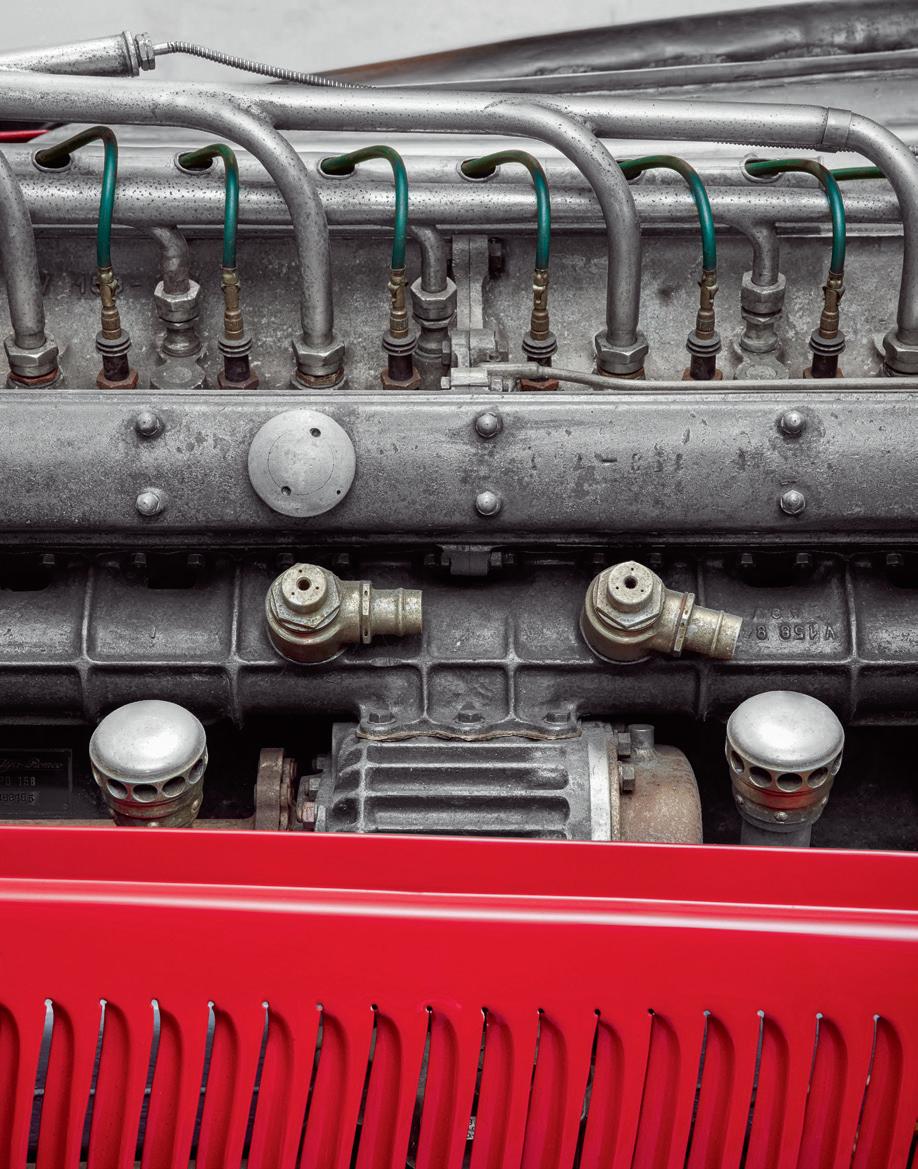
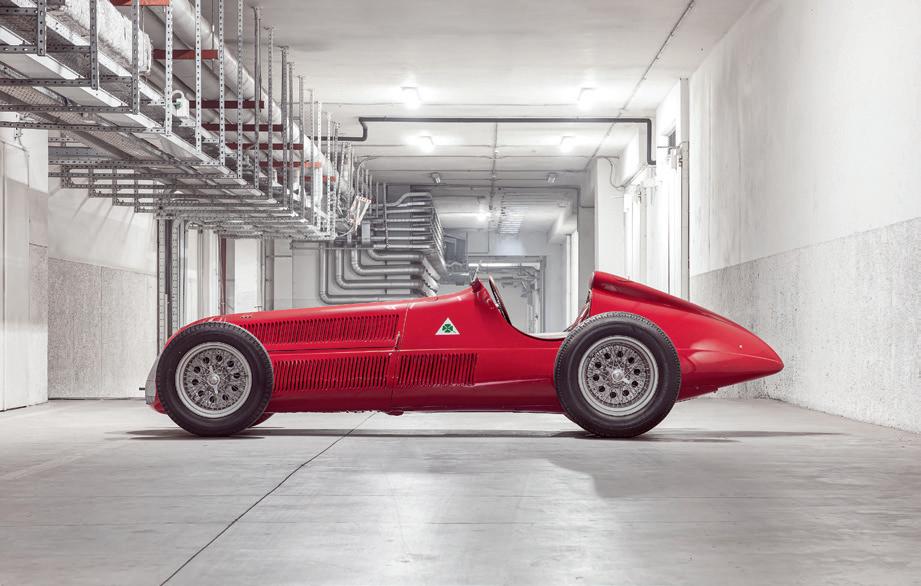
maximum weight, the new rules placed limits on engine capacity instead, allowing teams to run either normally aspirated 4.5-litre or supercharged 3.0 units. With expediency in mind, Alfa Romeo entered the Tipo 308 – a rebodied, modified Tipo C powered by a slightly bored-out version of the 8C 2900’s straight-eight – as its 3.0-litre contender. The 308s, though, along with the 312 and 316 race cars that followed, were not a great success. Instead, it was hoped that Alfa’s Tipo 158, designed by Gioacchino Colombo and partially built by Scuderia Ferrari in Modena, would deliver the motor sport glory that Italy’s leaders so greatly desired. The all-new model was powered by a 1.5-litre straight-eight that featured a light magnesium-alloy block, a nickelchromium steel crankshaft, screw-in steel bores, Vittorio Jano’s gear-driven dual overhead camshafts, a triple-body carburettor and a Roots single-stage supercharger. In its earliest guise, it produced 185bhp (195bhp on its race debut). Mounted up front, the engine drove the back wheels via a transaxle arrangement. The 158 featured Ferdinand Porsche-type independent swing-axle rear suspension and independent trailing-arm front suspension, with transverse leaf springs fitted all round.
With the fortuitous news that the 1.5-litre supercharged Voiturette class was to become the leading Grand Prix class in 1940, Alfa Romeo’s Wifredo Ricart-run Servizio Studi Speciali began work on the Tipo 512, a far more radical and innovative 1.5-litre design as a possible replacement for the 158. It would not be required. Inspired by the mid-engined Auto Unions, Ricart opted for a similar layout for the 512, his second Alfa Romeo after the unsuccessful V16engined Tipo 162. The experimental flat-12, called ‘quadro’ in Italy due to its virtually identical bore and stroke measurements, is said to have produced 335bhp thanks to two twin-stage superchargers. Given more development time, that figure would likely have exceeded 500bhp. Its advanced suspension comprised double wishbones up front and a de Dion rear axle. However, serious handling issues put a damper on progress.
These two quite diverse projects reflected the split organisational set-up at the time. Enzo Ferrari’s Scuderia Ferrari was contracted to run Alfa’s racing programme, and Servizio Studi Speciali was tasked with special projects, the latter being the genesis of the company’s engineering department. Both were able to develop a car from scratch – an unnecessary duplication that likely played a role in Alfa’s decision to bring the entire operation in-house under the newly founded Alfa Corse racing department in Portello, Milan. Unhappy with the changes, Enzo soon parted ways with Alfa Romeo. By incorporating the Scuderia, Alfa Corse inherited a team of people with exceptional motor sport experience. They knew how to design a car, how to set it up – and how to race it. This was evident from the start because the
BELOW Nino Farina (on the right), second on the starting grid for the 1950 French Grand Prix at Reims-Gueux.
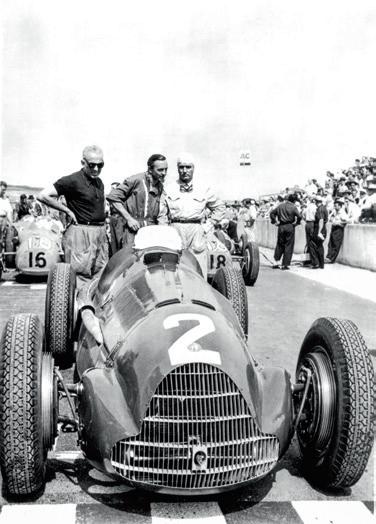
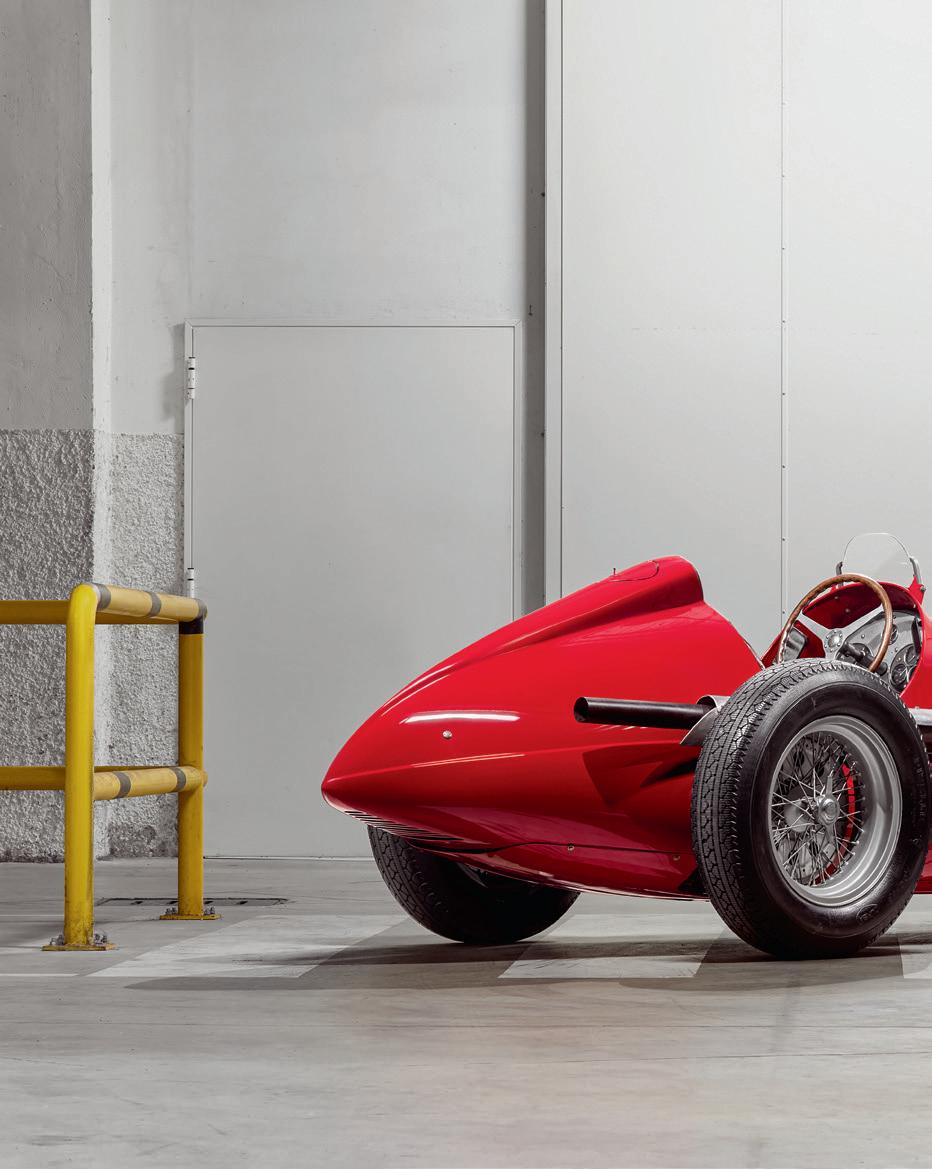
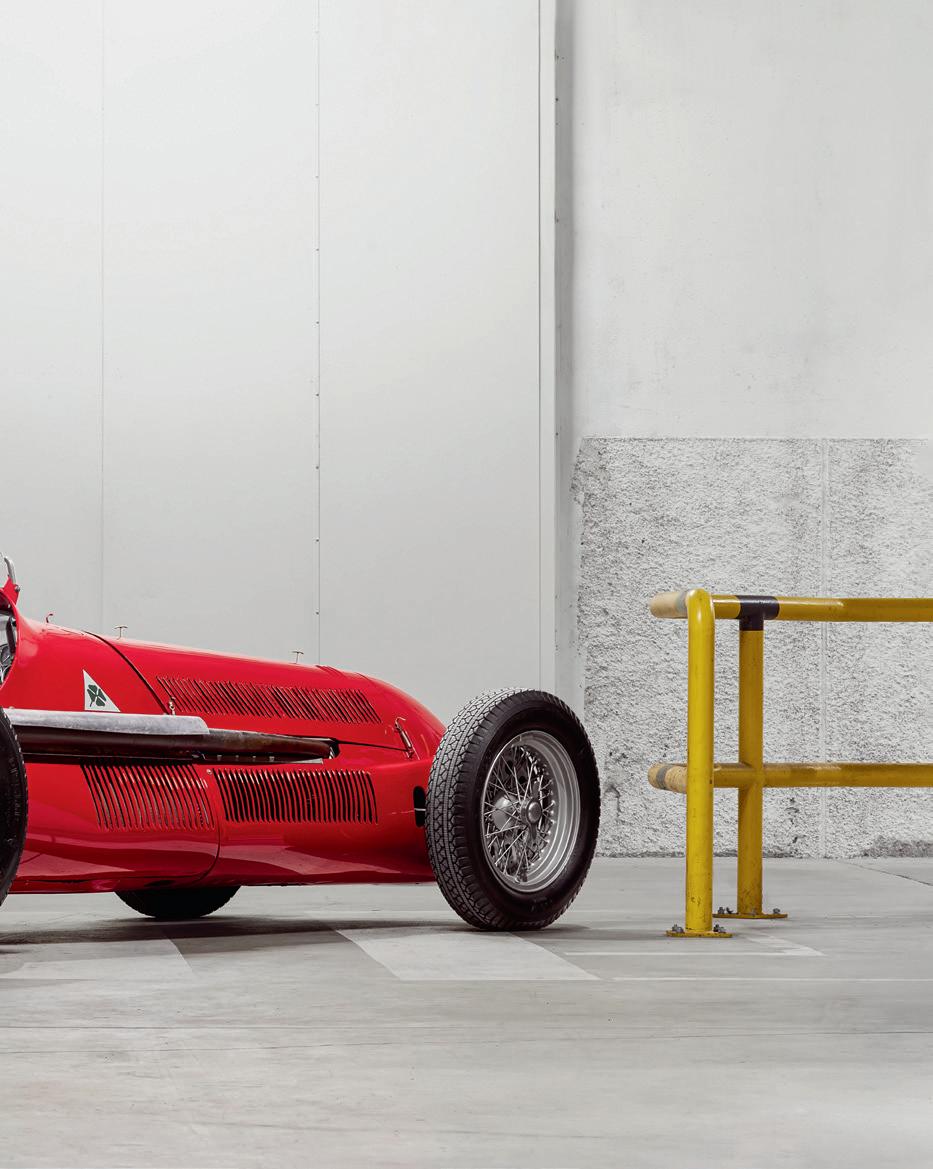

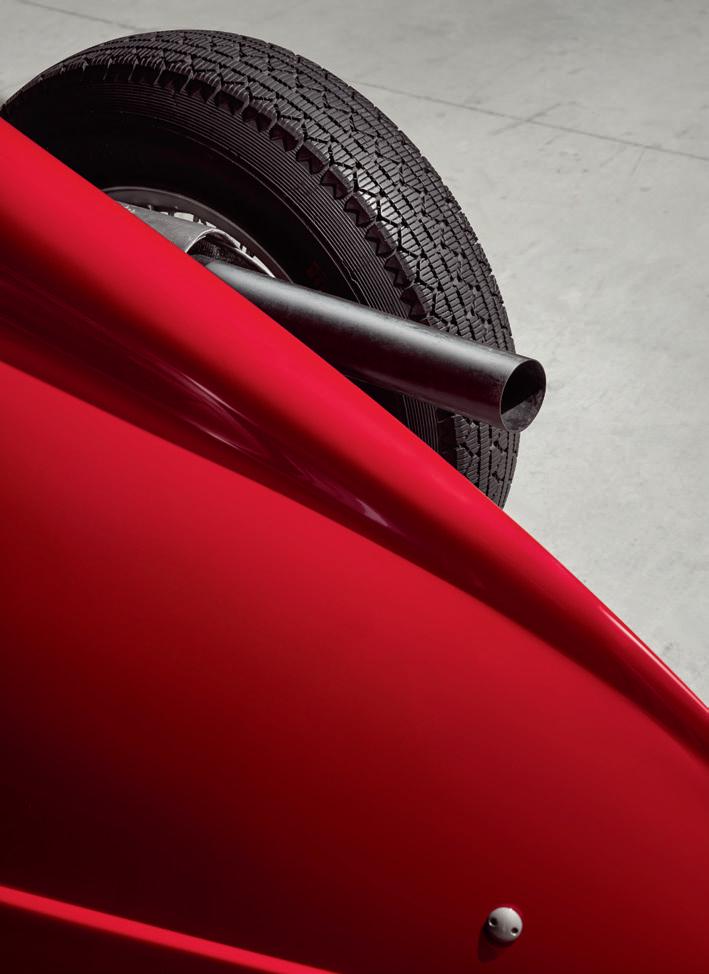
158, driven by Emilio Villoresi, won the Voiturette class on its debut in Livorno, Italy at the Coppa Ciano Junior in August 1938. People took notice, especially the press, with the influential Auto Italiana bestowing on the 158 a nickname that stuck: Alfetta (Little Alfa). Villoresi won again that year, at September’s Milan Grand Prix. Continuous development throughout 1939 involved bodywork revisions at the front, substantial improvements to the car’s airflow and cooling, an evolution of the chassis and an increase in engine power output. Class wins at the Coppa Ciano, the Coppa Acerbo and the Swiss Grand Prix in Bremgarten were just rewards for the constant work. The only race the 158 lost that year was the Tripoli Grand Prix in Libya, which Hermann Lang won at a canter in a Mercedes-Benz W 165, with a sister car finishing second. These very special 1.5-litre supercharged eight-cylinder Silver Arrows had been purposefully designed for the Voiturette-only 1939 Tripoli race and would never compete again. Stuttgart clearly did not have a resource problem.
By then the Alfetta’s engine was producing more than 225bhp, thanks in part to a revised lubrication system and crankshaft, but predominantly to work done on the fuel. Specific compositions of methanol, acetone, benzine, castor oil and other ‘secret ingredients’ allowed higher compression from larger supercharger rotors, resulting in an increase in power. Alfa was one of only a few companies with its own chemical-research laboratory, which it used to develop, in close cooperation with Agip, fuels and lubricants, as well as metal alloys for aviation and automotive applications. Everything was pointing to 1940 and the proposed new 1.5-litre GP regulations. Sadly, after a final Alfa 1-2-3 at the 1940 Tripoli GP, the escalation of World War Two prevented their implementation and ultimately brought the curtain down on motor racing in Europe.
As daily operations became increasingly difficult in the early 1940s, Alfa moved various development departments away from the city of Milan and its associated threat of bombings and war requisitions. The Alfettas were reportedly stored at Monza, before being hidden on nearby farms and behind a false wall in a factory in Melzo, not far from Milan. Ardizio tells me that a couple of race cars and Alfetta engines were hidden in the Villa Castoldi in Abbiategrasso. Achille Castoldi had been using marine-modified 158 engines in motorboat competitions since 1938. A letter in the archive thanks him for his help in hiding company assets during the war. Castoldi again received engine support after the war, setting a record in the 450kg hydroplane class with his Alfetta-engined Arno II, in what was a successful side hustle for the GP engines. Development work on the Alfettas commenced almost immediately post-war, with the focus again on increasing power. The introduction of a
two-stage supercharger saw the engine peak at 275bhp and its maximum speed jump to 168mph – enough to see Giuseppe ‘Nino’ Farina take the win at the 1946 Nations Grand Prix in Geneva. Interestingly, Alfa had continued to pay Farina a monthly salary throughout the war, even during the bombings, in order to retain his services when motor racing resumed. “We have the receipts,” Lorenzo Ardizio tells me. He is less proud of an official Highway Administration ‘cease and desist’-type letter issued to company managers after several clandestine speed tests were carried out on the highway near to the factory. With the Monza circuit full of military vehicles that the Allied forces were looking to offload, Alfa had no option but to go public.
Achille Varzi was next to taste victory in a 158, winning the Turin Grand Prix in ’46 – the first race run according to the new Formula 1 regulations that would come into effect from 1947. The 158’s final win for 1946 was claimed by Count Carlo Felice Trossi, in Milan.
full seasons conducted under Formula 1 regulations, the Alfettas won many races, including most of the more prestigious Grandes Épreuves: the Swiss, Belgian, Monaco, French and Italian Grands Prix. “Actually, without much competition, because German brands were out of the game and the British brands were not ready,” Ardizio graciously admits. Alfa Corse’s incredible driver line-up of Jean-Pierre Wimille, Trossi, Varzi, Farina and others played a role in the success too, no doubt.
For two reasons, Alfa Romeo chose not to race in 1949. Firstly, to prepare both technically
and financially for the first Formula 1 Drivers’ Championship and, more poignantly, because two of the team’s top drivers had died within six months of each other, while a third was terminally ill. Varzi was killed in a 300bhp version of the Tipo 158 in what was pretty much the first real accident of his life, during the Swiss Grand Prix in July 1948; Wimille died driving a Simca-Gordini in January 1949 practising for the Buenos Aires Grand Prix; and Carlo Felice Trossi succumbed to a brain tumour four months later.
By 1950, the Alfa Romeo team had regrouped and had become a genuinely professional outfit. This showed itself in various ways – not least in terms of how quickly the crew could service the cars during pitstops (just 22 seconds), but also in the team’s official connection with Pirelli and its Stella Bianca tyres. “The Pirelli branding on the team overalls was more prominent than the Alfa Romeo script,” declares Ardizio.
Not just well organised, Alfa Corse was firedup – and its Alfettas were powered-up, with their motors boosted to 340bhp and capable of 180mph. For the first F1 Championship race, the British Grand Prix at Silverstone, Alfa Romeo arrived with four cars, trucks, mechanics and Works drivers Nino Farina, Juan Manuel Fangio and Luigi Fagioli. These three were soon dubbed la squadra delle tre effe (team three ‘F’s). Longtime Alfa man Farina needed no introduction; Fangio had come to Italy with support from his native Argentine state and was staying at Varzi’s house not far from Milan; while ‘old man’ Fagioli was a very experienced ‘safe hand’ – an excellent mix of consistency and speed. Reg Parnell was invited to drive the fourth car.
BELOW The 158s of Farina, Fangio, Fagioli and Parnell ready to make F1 history at Silverstone.
The four Alfettas dominated qualifying, with Farina on pole. Nino would go on to record the fastest lap and take the win in the 70-lap race, ahead of team-mates Fagioli and Parnell. Fourth-placed Yves Giraud-Cabantous in the
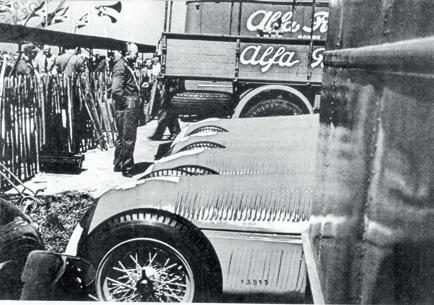
Talbot-Lago T26C finished two laps behind. The 1950 Championship involved seven races and included the Indianapolis 500, which Alfa and other European-based outfits did not take part in. The 158s won all six of their races plus five more non-Championship events. For the final Championship race of the year, September’s Italian Grand Prix at Monza, Alfa Romeo effectively ran the 158s with many of the revisions the team was preparing for the 1951-season car, the 159. In the final analysis, the Alfetta raced 11 times in 1950, winning on each occasion.
Alfa Romeo design engineer Giuseppe Busso reportedly said: “Our main problem was deciding which of the three drivers should win any given race.” Apparently, team orders in F1 have been there all along. Still, a delightful dilemma to have... With a driver’s four best results counting towards the title, three wins apiece for Farina and Fangio gave the Italian the Championship courtesy of a fourth-place finish in Belgium against the Argentine’s trio of DNFs. It was utter domination for Alfa’s engineering department, the Direzione Progettazione Esperienze. Up-andcoming rival Ferrari raced with three different cars during the year, as Enzo’s team wrestled with which engine type had the most potential.
Alfa had no such quandary to ponder. The choice to focus on the 158 and shelve the 512 had worked out beautifully. Even now, 75 years on from that first title, the Alfetta still looks purposeful, sleek and, well, just a little bent, too. Photographer Sam, while trying to line up a bang-on rear shot, calls chassis no. 158.005 “a beautiful red banana”. Walking around the longeron-frame car’s exquisite body, each detail tells a story. From the wild variability of its side louvres and the quaint imperfection and asymmetry of the egg-crate grille, to the mechanical beauty of the exposed drum brakes and the pragmatism of the sidemounted exhaust, so much of this over-80-yearold’s hand-crafted creation is proudly on display.
Look beyond the minimalism and you notice innovative ideas such as the flap in front of the windscreen. Operated by reaching around said screen and hooking it open with a finger, presumably while doing 160mph, the flap reveals separate ducts that channel additional air to the supercharger as well as directly to the driver’s feet. “With no firewall, it gets hot enough down there to melt your shoes to the pedals,” says Ardizio. Having driven 158/159s on several occasions, he would know. Side mirrors mounted inside the cockpit must have been great for the drag coefficient but less useful for those with the broad shoulders required to effectively command the large-diameter steering wheel.
Seeing the quadrifoglio verde, Alfa’s motor sport ‘lucky charm’ and symbol of performance since 1923, on the flanks of this world-conquering race car is almost spiritual, its historical ‘weight’ a result of layer upon layer of myth and legend. No
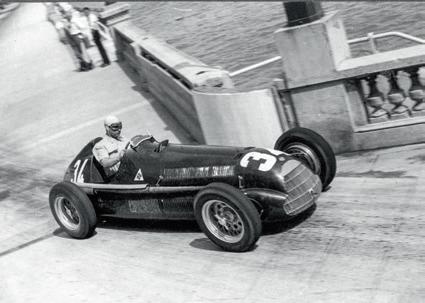
ABOVE Fangio was untouchable in the Alfetta around Monaco in 1950, finishing a lap ahead of Ascari in second.
wonder the marque is still so selective about which models get to wear the iconic insignia.
A surprising find is the Saint Christopher medallion hard-fixed to the instrument panel. I guess with motor racing in the late 1930s and ’40s being more dangerous than swimming with crocodiles in a thunder storm, who wouldn’t accept a little divine intervention from the patron saint of [high-speed] travellers? “The Italian drivers for sure, but not Fangio,” says Ardizio.
As for that instrument panel, there’s nothing unnecessary, just a revcounter, gauges for oil pressure plus oil and water temperature, and a switch for the magneto. No fuel gauge – but there is a valve buried deep in the cockpit to strategically shut off the fuel supply during the intricate and quite dangerous cold-starting procedure, and to switch between rear and smaller lateral tanks. A handbrake, dramatically angled gearlever and reversed pedals – central throttle, brake on the right – complete the controls.
“When you drive the Alfetta, you know you are driving something that is near to the limits of its evolution,” says Ardizio. “Everything is extremely sensitive because you have no margin. The rear fuel tank is positioned quite high, above the transaxle, in the tapered body, and the consumption is also so high that every lap feels different. Another problem is that the brakes, which Fangio called ‘speed adjusters’, are still a 1930s design. The Alfetta is so well balanced, the weight distribution so good, that it steers quite easily on the throttle.”
The propshaft of the 158-rivalling W 165 ran alongside the driver, allowing the seat to be set low, but here, millimetres beneath the deep tub-style seat, is a prop that rotates between your legs at up to 9000rpm. Thankfully it’s shrouded so you can’t see it turning. “Yes, it is a bit concerning, but so far
it has never exploded in an Alfetta,” says Ardizio, adding: “Except for that one time in a powerboat...”
A measure of the effort Alfa went to is the 158’s bespoke equipment, which include items such as a specific jack and tyre-removal tool, a perfectly weighted hammer for the knock-off spinners and a specially built truck starter motor and battery trolley that is still in use today. Also roughly 80 years old is 158.005’s 32-unit spark plug box. Cold starts with normal petrol required a set of eight hot plugs to be used until the engine reached a temperature of 90ºC. That would give enough time to swap to eight cold plugs and methanol before the temperature dropped below 65ºC –the minimum operating temperature for the race fuel. At the end of the track session, the plugs would have to be swapped out again for a midrange set in order to run petrol through the stillhot engine to wash out the corrosive methanol.
It takes three people to start the 158: one to manhandle the starter, one to spray petrol directly into the carburettor, and a driver to watch the gauges, flip the magneto switch and operate the fuel-tank valve. Ardizio assures me that the sound is quite distinctive: “It’s very recognisable when you open the throttle and hear the exhaust and also the loud whine of the compressors.” I can only imagine what it must have been like for a struggling backmarker with future fivetime World Champion Fangio in a screaming supercharged straight-eight filling his mirrors. It’s a great final thought as I watch the 158 being returned to its lair. It is a car of unimpeachable significance and an enduring motor sport icon. While WW2 put a six-year pause on the Alfettas’ evolution, they were still technologically relevant and highly competitive six years into the post-war period. The Little Alfa’s scalable performance and bulletproof reliability had helped Giuseppe Farina become king for a year and given the F1 Championship a royal start. With thanks to Alfa Romeo UK, Museo Alfa Romeo, Lorenzo Ardizio and Alberto Staiz for their invaluable assistance with this feature.
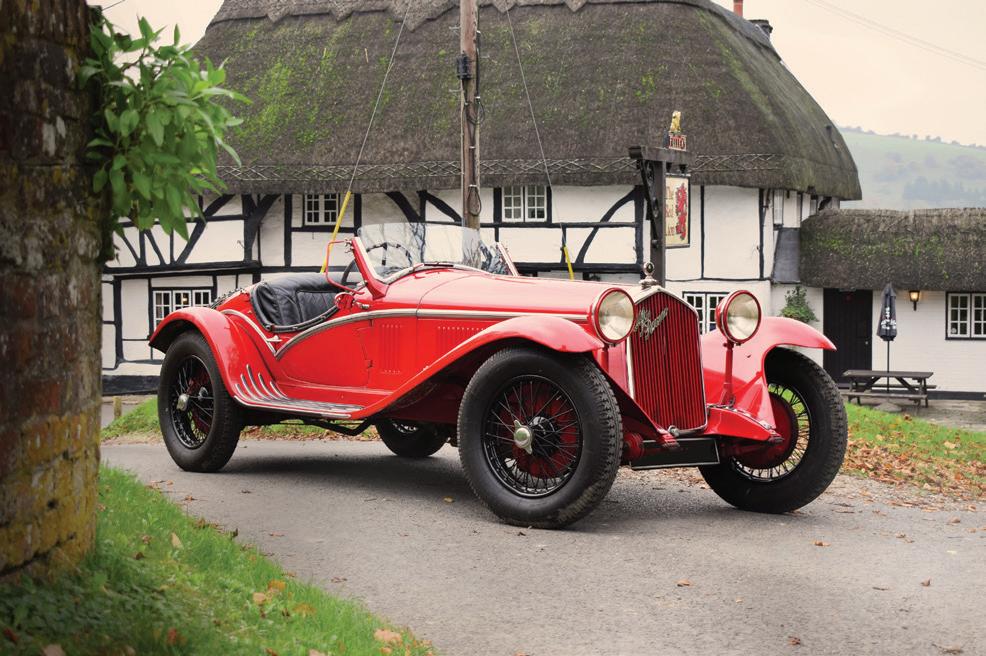
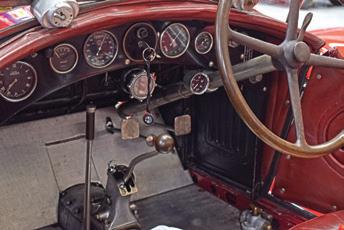
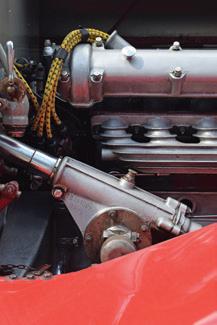





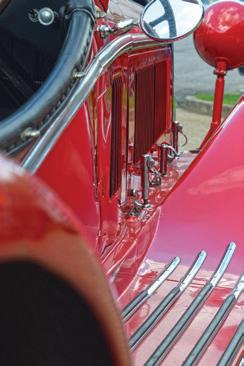
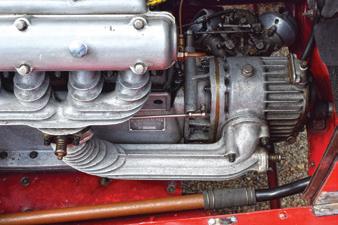






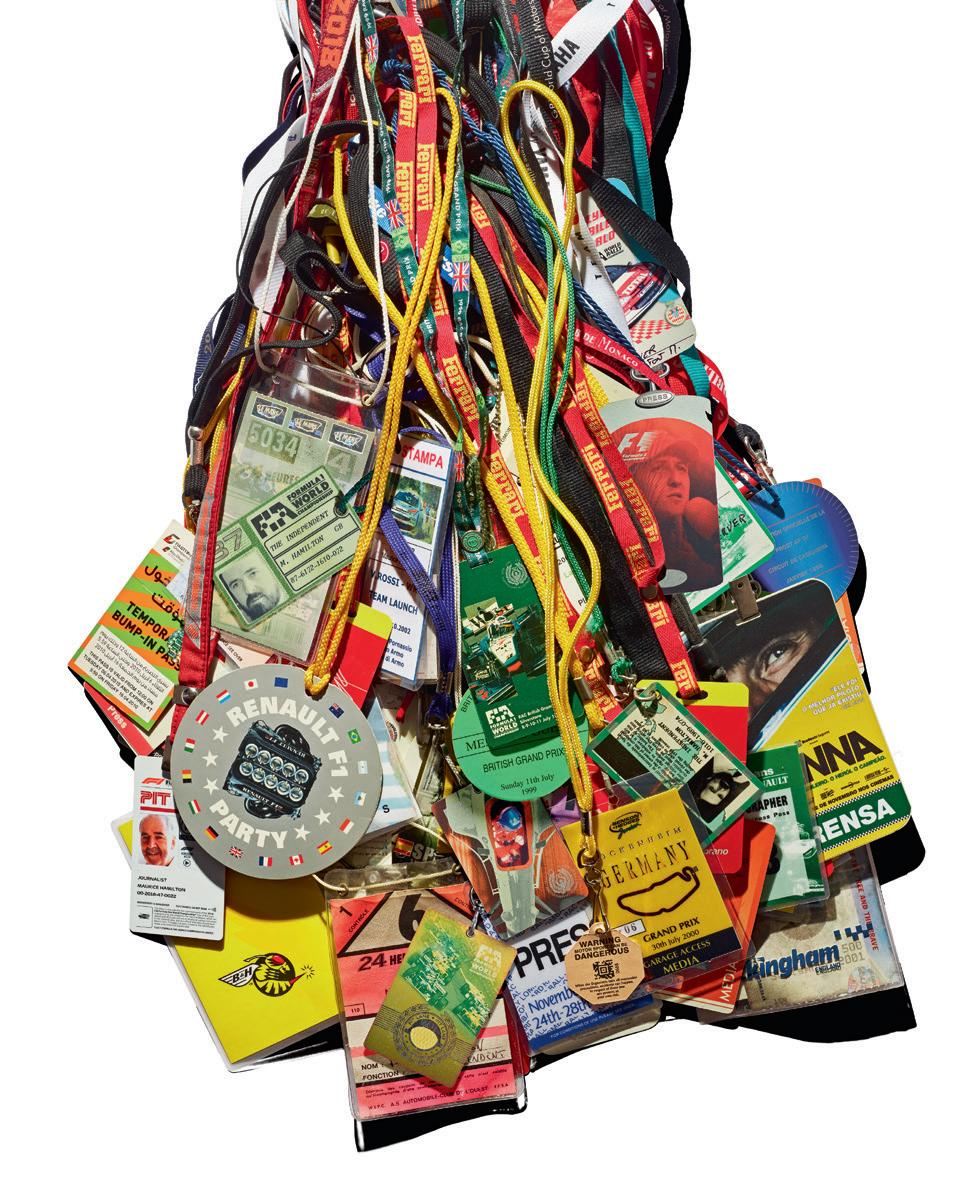
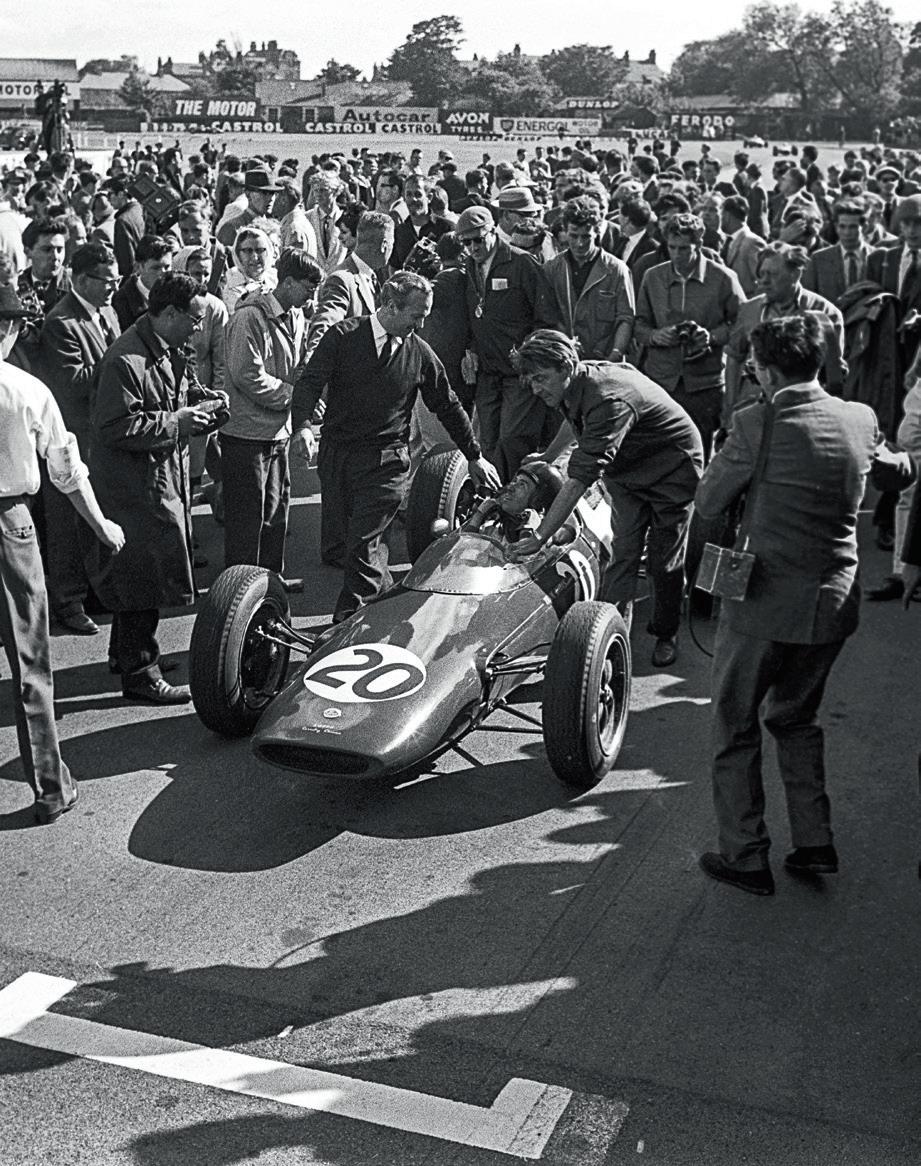
THE MAN WAS WEARING A HARRIS
Tweed jacket with a tie bearing allegiance to the British Automobile Racing Club. Trailing from the lapel buttonhole, a clutch of cardboard credentials added to his appearance of importance – in my mind at least. This feeling was enhanced by the imposing dining room in Liverpool’s Exchange Hotel; a handy location, since the station beneath was the departure point for trains to the Aintree race course, host on this July weekend for the RAC British Grand Prix.
Being 1962, the feeding-trough syndrome of congealed eggs and fatty bacon displayed on a buffet had yet to be invented and declared as a culinary evolution. Breakfast was being gently served by waiters wearing starched whites and a deferential mien, their serene progress allowing the confident conversations of guests – who were predominantly male – to resonate around the high-ceiling room.
Several diners were hidden behind the broadsheet expanses of the morning quality newspapers, each publication with a wraparound ‘Grand Prix Special Edition’ to both inform and cash in on the occasion. I noted that my father, having bought the Daily Mirror, quietly folded the tabloid and slipped it under the table. Despite the ‘Mirror’ sponsoring the Grand Prix, it did not appear to be required reading within this grandiose gathering of Formula 1 officialdom, the BARC having been
MAURICE HAMILTON, ONE OF F1’S TOP WRITERS, WAS THERE WHEN TICKETS COST £1, WHEN A TEAM GARAGE IN MONACO WAS YOUR HOTEL’S BASEMENT PARKING, WHEN THE ECCLESTONE ERA BEGAN, AND WHEN LIBERTY TURNED IT INTO A MADEFOR-TV SHOW. HERE ARE SOME KEY MOMENTS
OPPOSITE Despite Clark’s sublime drive, nothing at Aintree in ’62 made Maurice think his career would involve F1.
designated as organiser of the fifth round of the 1962 F1 World Championship.
Those engaging in conversation were discussing prospects for the race. My man in tweed cleared his throat and declared with impressive authority that Clark was “on good form” in the Lotus, and Hill’s Ferrari had been approaching each corner “as if there were traffic lights going red”. The latter comment brought sage nods of agreement and chortling from neighbouring tables.
This piece of insider information came as a shock. I had expected Phil Hill, as reigning World Champion, to be competitive and Ferrari to be…. well, exhibiting the magic of the name. I had never seen a Ferrari F1 car before, and the beauty of the all-conquering ‘Sharknose’ during the previous season had cranked up the anticipation. Surreptitiously retrieving father’s newspaper, a glance at the starting grid showed the sole Ferrari representative to be 12th fastest, 2.6 seconds slower than Jim Clark on pole. Even allowing for the emerging dominance of the Lotus 25 and its equally sublime driver, this represented a major shortfall in Ferrari’s performance that did not bode well for the 75-lap race.
Sure enough, Hill made a sad sight as he struggled in the mid-field and was lapped before half-distance, the thoughtful American eventually being put out of his obvious misery by faulty ignition. Clark, meanwhile, remained
unchallenged from start to finish. It was a dull race on a sunny day. Whether this combination of Latin let-down and British boredom had a subconscious effect, I really don’t know. But Formula 1 was about to slip below my radar for a couple of years.
It was probably no coincidence that the city of Liverpool was about to provide an explosion of musical innovation that would have a profound effect on a restless teenager. It would be difficult for the slim and simple 1.5-litre F1 cars fashioned by Chapman and Cooper to hold a candle against the equally creative genius of Lennon and McCartney.
The British teams may have been naive in the late 1950s when they initially refused – at their cost – to accept the proposed change from lusty 2.5-litre engines to the relatively breathless 1.5 formula. But they had my vote. This dilution of bhp, combined with the move from front to rear engine, produced cars for 1961 and beyond that, by today’s standards, were like a Tesla Model 3 compared to a Ferrari 250 GT Lusso. My day at Aintree had merely confirmed the muddled thinking of the sport’s governing body. But that would change dramatically four years later.
The Beatles may have been on top of the charts with Paperback Writer in July 1966, but the band was no match for a different kind of sound echoing around Brands Hatch. The track in Kent, with its comparatively recent extension, had
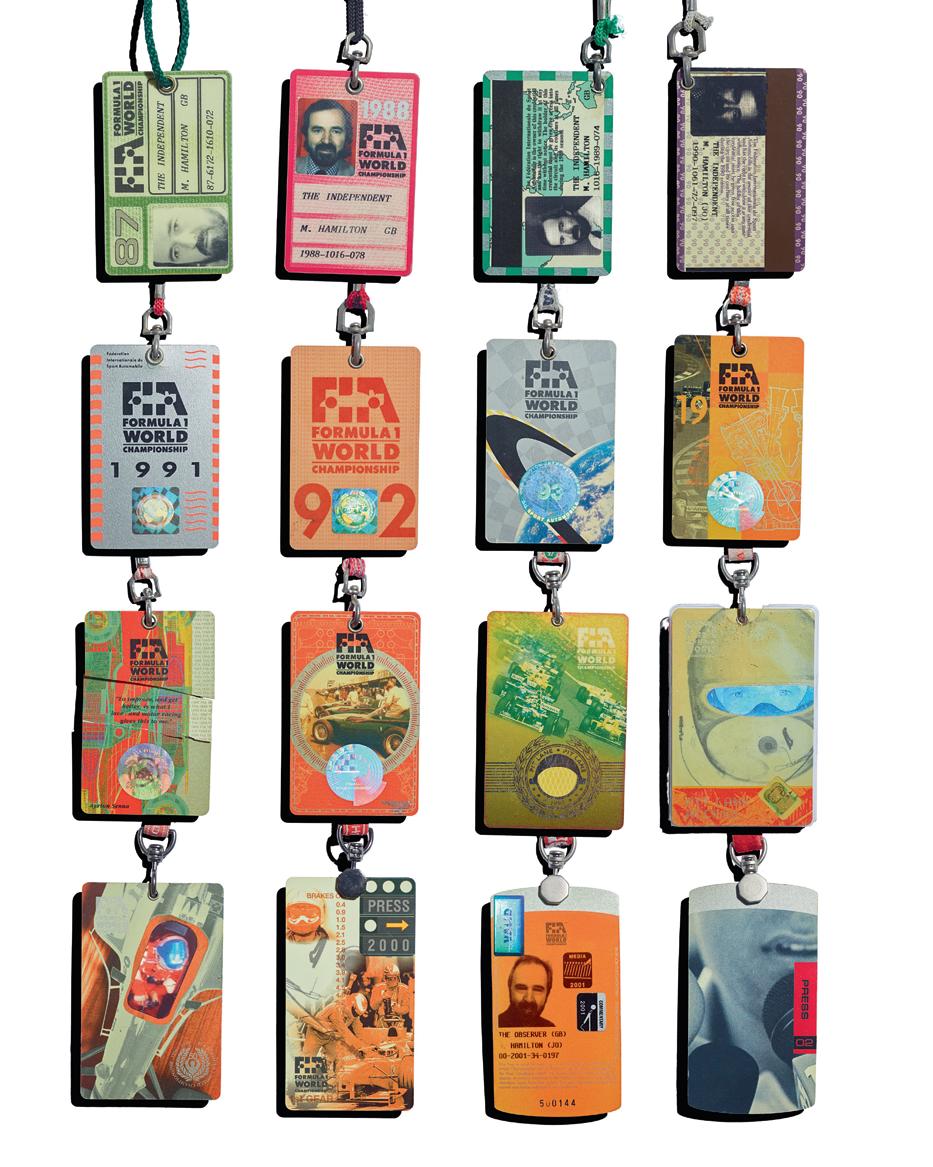


Unrestricted access: Oh, the stories Maurice’s comprehensive collection of press passes could tell.

been granted the RAC British Grand Prix for the second time, the organisers making the most of an encouraging change in formula as engines doubled in size. ‘The Return of Power’ had become the advertising catchphrase. I travelled from Northern Ireland with three mates, each paying £1 at the gate (including parking and a programme), to see if the claim was true. It was!
Having parked our Volkswagen Beetle and heard the urgent sound of F1 cars, we ran to the fence at the top of Paddock Hill Bend. We were greeted by the sight of Jochen Rindt chucking his unwieldy Cooper-Maserati into the downhill righthander. The extrovert Austrian was followed by the sleeker BRM P261 of Jackie Stewart, the twin exhausts nestling in the centre of the V8 producing a beautiful high-pitched harmony in pursuit of the deep-throated Maserati V12.
Then came Jack Brabham, on and off the throttle as he urged a harsher noise from the Repco V8, his left-rear Goodyear kicking up the dirt as he finally went for full power at the exit and booted his BT19 up the hill towards Druids. Within a couple of minutes, my perception of Formula 1 cars in full fury had rocketed to where I felt it should have been all along. Move over Rolling Stones and the rest. F1 is back in business. It’s true that the F1 teams were ill-prepared for the new 3.0-litre formula. The crafty Brabham –who definitely had his mechanical ducks in a
row – romped to one of the four wins that would bring a third World Championship. There had been six different engines on the starting grid at Brands and, even if most of them failed to reach the finish, there were more in the pipeline. And one – the Ford-Cosworth DFV – would provide a mechanical bedrock in F1 for years to come. F1 was better prepared for 1967. And so were we. Having gone to Brands Hatch without so much as a tent (the less said the better about one alcohol-infused night spent sleeping in the Beetle), 12 months later we pitched camp in the field opposite Silverstone’s main gate. Talk about living the dream. On race morning, we walked across the road and had breakfast in the paddock café – along with John Surtees and other F1 names.
It may have been early but, as we stepped outside, the sound of a V12 could be heard from Club Straight, which was acting as a paddock for the support races. Running to investigate, we found Rindt blasting his Cooper-Maserati up and down in a bid to check if a misfire had been sorted. The overnight work had been a success, judging by what Jochen said to team manager Roy Salvadori as he switched off and a small group of grinning fans stood around the ticking green car and listened in.
Much as we admired Rindt and his extrovert style, our focus was on the combination of Jim Clark and the new Lotus 49 with its Ford
Silverstone paddock entry in 1967 meant Hamilton witnessed first-hand Clark’s final Silverstone win.
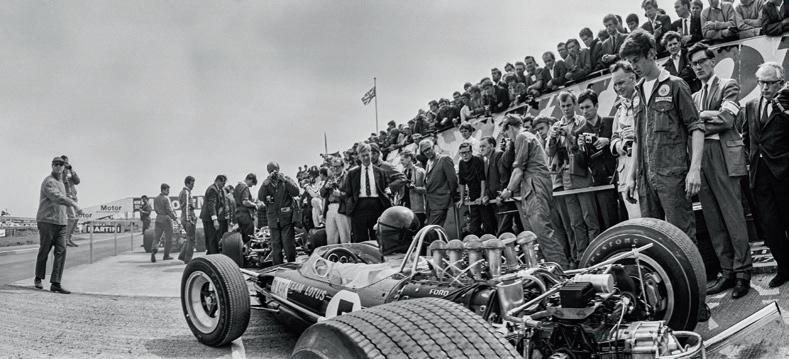




V8. Colin Chapman had pulled yet another masterstroke, not only with such a clean car, but also by persuading the Ford Motor Company to fund an engine for the new formula. The Blue Oval’s £100,000 investment with Cosworth Engineering would pay dividends as the DFV became available to whoever wished to part with £7500. The V8 would go on general sale in 1968 – on the assumption it would prove desirable during this debut season with Lotus. There could have been no better testimony when the LotusFord 49 won first time out in Holland a couple of races before this appearance at Silverstone.
The stand-out memory of the 1967 British GP is literally that. We watched from behind the earth bank lining the outside of Woodcote, the very fast right leading onto the pit straight. From this angle, you could see cars lurching and sliding on a mid-corner bump that was barely discernible to the eye but graphically evident when attempting to put 420bhp onto the road.
Clark won with ease. There was no podium as such, the presentation being made on a trailer, manoeuvred onto the grid and loaded with the green and yellow Lotus 49, plus the Lotus team – probably in its entirety – and several trade associates and luminaries from the RAC. Clark, bedecked in the winner’s wreath and holding the cup, waved with modesty to the crowd – as was his wont as a Scottish sheep farmer who happened to have been blessed with car control seemingly from another planet.
We had watched the race leaning against a horizontal scaffolding pole that, along with the grass bank, delineated the boundary between spectator and racetrack. As the flotilla set off, we joined the surge of fans who dared to duck under the pole and, in the absence of a (yet to be invented) debris fence, climb the bank and venture onto the edge of the track. In 1967 this was tantamount to seriously unruly behaviour. There was cheering and warm applause. Then everyone dutifully returned, aware that there was another race to run. It was as different to spectating today as a gospel meeting is to Glastonbury. Little did we realise this was the last time we would see our idol race and win in Britain.
Sunday April 7, 1968 is seared in the memory of those who believed Jim Clark to be indestructible, such was the effortless ease with which he conducted a race car. It was as if he didn’t need to go to the edge and invite risk. Clark’s death in a Formula 2 race brought a terrible reminder of motor sport’s larcenous nature, one that would be underlined by the loss of four top drivers –Clark, Mike Spence, Ludovico Scarfiotti and Jo Schlesser – in as many months.
Initially, Clark’s demise took the edge off plans for our first race ‘abroad’. It is not being disrespectful to our hero to say the feeling of loss and disquiet was instantly dispelled from the moment, on a warm evening, the coach set us
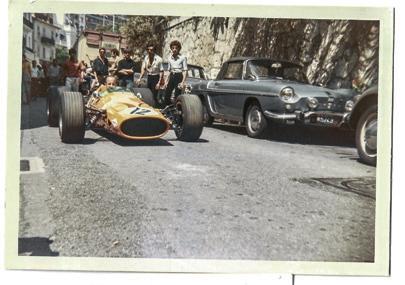
ABOVE
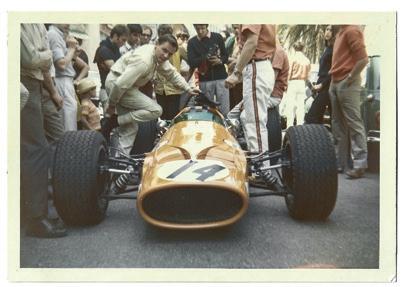
McLarens in Monaco provided Maurice’s first up-close-and-personal F1 experience abroad.
down on the hallowed surface of Monaco’s Mirabeau corner. It was a short walk down the escape road to the Hotel Europe (the elegant building long since demolished to make way for a bland concrete ziggurat), our growing sense of awe sent into orbit by a besuited Bruce McLaren waiting at the door for a taxi to take him to dinner. And there was more.
It didn’t take long to discover that the orange McLarens were garaged beneath the hotel. In the absence of a paddock at Monaco, this was how it worked – teams making their own arrangements and staying where they could. Every waking hour outside track action would be spent standing at the garage door, watching the Kiwi crew at work. Then a surreal moment as the pair of M7As – which had become ‘our cars’ – were wheeled out, Denny Hulme and Bruce climbing on board and burbling down the narrow back street in search of a track entrance. This sense of attachment and intimacy would be beyond comprehension in today’s tightly managed and consequentially remote world of F1.
Monaco delivered endless unique experiences, among them rubbing shoulders – literally – with the good and the great of Grand Prix racing in the tiny Tip Top bar. Somewhere within this heady assembly had come the realisation that people were actually making a living from doing
something they loved. The first seeds of a journalistic career had been sown, even if the subsequent cultivation would be long and frequently attacked by administrative frost.
My attempts to gain a foothold had started with club reports for the weekly magazine Autosport. A seven-race meeting at Lydden Hill was all very well, but it was hardly Monaco or Monza. The problem with turning up unannounced at Zandvoort or Zolder for the GP was a point-blank rejection by the press officer thanks to the absence of journalistic validation from my national authority. When the RAC refused to issue authorisation on the reasonable if frustrating grounds that I wasn’t actually a professional journalist, there was no alternative but to take matters into my own hands.
By chance, I came across a small firm producing laminated security passes – an essential requirement today, but in its infancy in 1976. Together, we cobbled together a pass, made to look impressive by a fake business name (Motor Racing News Service) and an address in Chelsea borrowed from a friend whose mother actually ran a sweet shop at that location on King’s Road. This dodgy piece of ID needed to be accompanied by persuasive chat, cuttings of my Autosport reports – and a refusal to go away despite initial curt rejection by the press officer

in question. Remarkably, it worked at Monaco and, later, at the Nürburgring Nordschleife.
The visit to the 1976 German GP would be crucial for reasons beyond the fiery accident that almost claimed Niki Lauda’s life. Eoin Young, an established journalist, had been so intrigued by my unconventional method of entry that he arranged for me to join a couple of F1 writers for a drive with Jackie Stewart around the ’Ring in a BMW 7-Series. I never uttered a word – but my mind was in overdrive, taking on board the retired champion’s eye-watering descriptions of this awesome track. When it was over, Young wanted to know if I could write a piece on the experience. That was like asking if James Hunt was attracted by the opposite sex. Thanks to Young’s support, the story was widely published. I was on my way.
The reality of turning professional (as an assistant to Young) would hit hard at the 1977 South African Grand Prix, our first race together. In the absence of television pictures or computerised timing, it was necessary for journalists to stand trackside and keep a lap chart in order to follow the race. Crowthorne, the first corner at Kyalami, was the perfect place. After years of ducking and diving, this represented nirvana as, suitably – and legally –credentialled, I watched the Grand Prix play out on a sunny Saturday afternoon. Then, within a few shocking seconds, this weekend in Heaven was ripped apart by a vision from Hell. In a moment of tragic happenstance, Tom Pryce had crested a rise on the main straight to find a volunteer marshal running across the track
to attend to a stricken car on the opposite side. Both were killed instantly, the man’s fire extinguisher catching the Shadow driver such a devastating blow to the head that the impact sent the extinguisher up and over the main grandstand. The Shadow, with the Welshman’s foot jammed on the throttle, continued down the straight and did not stop until it smashed into the bank where we stood on the outside of Crowthorne.
The truly shocking scene beneath our feet was compounded by having absolutely no idea about its cause. The fact that the race continued – almost barbaric by today’s thorough safety protocols –did nothing to ameliorate the shock inflicted by this distressing flip side of the shiny motorracing coin. After a period of quiet contemplation, I knew deep down, having got this far, in which direction my life was heading. More than 500 Grands Prix later, I have absolutely no regrets.
The incident at Kyalami in March 1977 has served as a continual reminder of the sport’s ever-present perils and an obligation to deal with them in a professional manner. It is a measure of F1’s progress that such moments have been few and far between, the loss of Roland Ratzenberger and Ayrton Senna on a single weekend in the spring of 1994 being the distressing outlier. F1, as with many sports, has changed almost beyond recognition. At Monaco in 1968, we had not known who would be racing (Ferrari simply failed to turn up) and at what time practice would begin. On the first day of practice for the 1979 British GP, a chalked notice in the Silverstone press room said: “Ensign stuck in traffic. Did not
compete in 1st session.” Such an occurrence among the ten immaculately presented teams today would be akin to King Charles III arriving half an hour late for the State Opening of Parliament because he had been watering geraniums in the grounds of Buckingham Palace.
You could say that Bernie Ecclestone became F1’s de facto Head of State in the 1980s, although Dictator was probably a more apt title. Either way, the astute former car salesman and Brabham owner was responsible for not only pulling F1 up by the bootstraps but also replacing scuffed heavy-duty footwear with custom-made alligator.
The sport began another metamorphosis in 2017 when Liberty Media bought F1. Apart from demolishing Ecclestone’s ‘secret-society’ policy, the US firm focused on making F1 an entertainment business – arguably at the expense of fundamental sporting values. Revenues rose to $3.65 billion in 2024, partly due to the race-fee income having benefitted from the calendar expanding to 24 races. Each of the ten teams received in the region of $100m, depending on their success.
In an 11-race season, Tyrrell won the 1971 World Championship with a staff of 19 – which included Ken Tyrrell and his wife, Norah. Today, an F1 team with fewer than 900 employees is not considered serious. On the spurious grounds of cost-cutting, each entry is restricted to 58 personnel at the racetrack. Every member will have an electronic identity tag and an immaculate uniform sponsored by a leading leisure brand. Officials will be similarly attired. And not a Harris Tweed jacket or a cardboard credential to be seen.
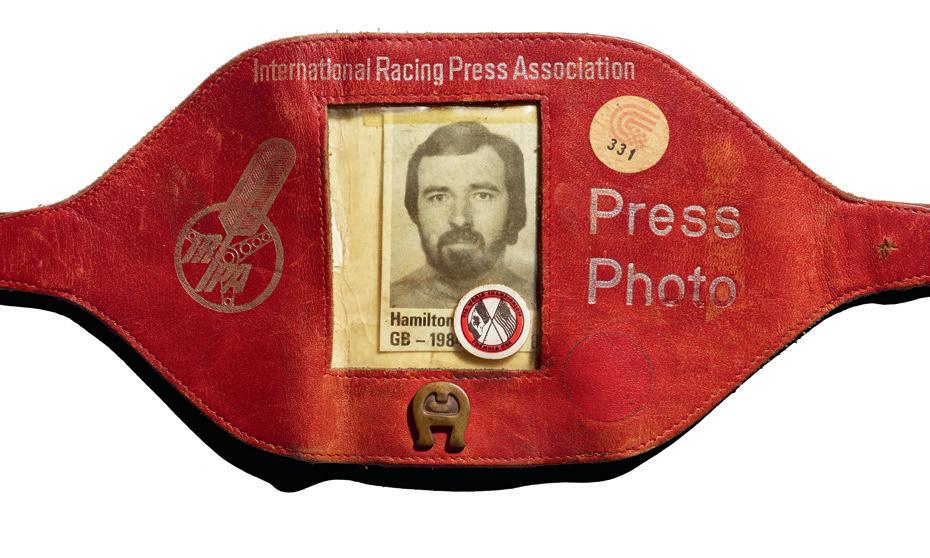
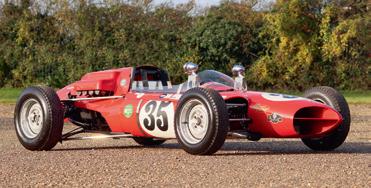
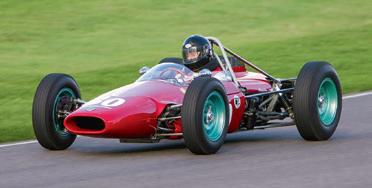
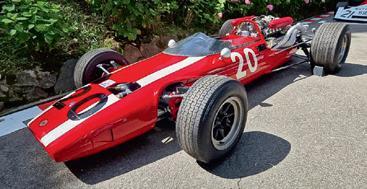
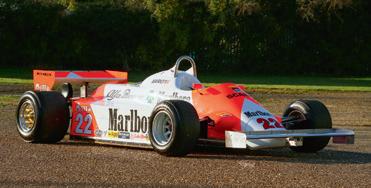
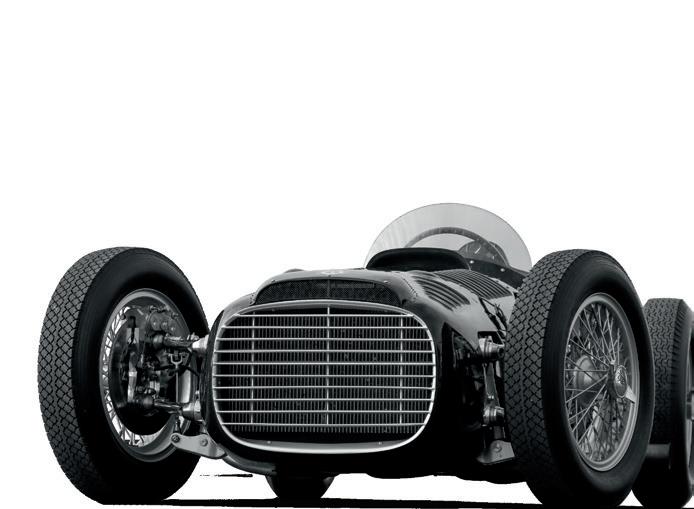
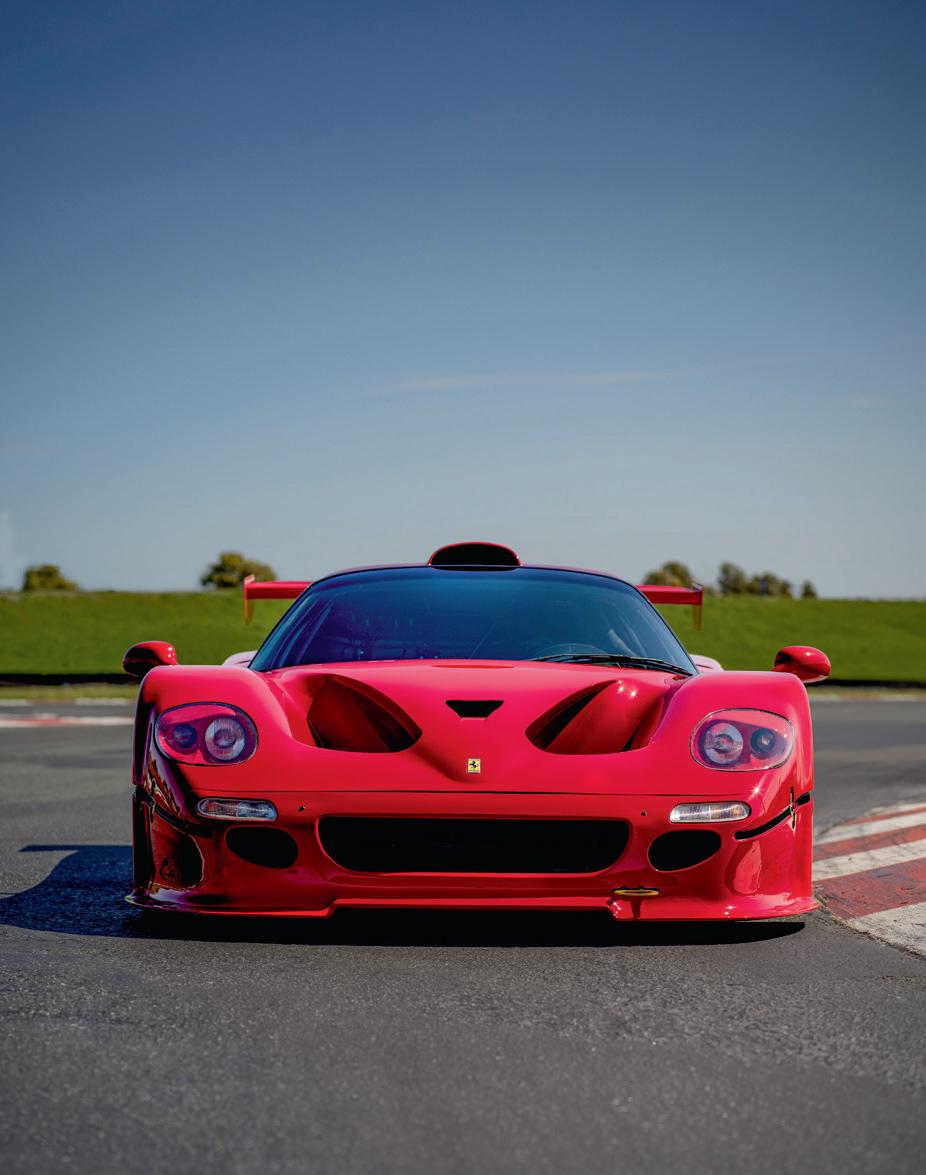
75 YEARS OF F1
DESIGNED FOR GT RACING BUT ULTIMATELY SHELVED IN FAVOUR OF FERRARI’S PLANNED F1 COMEBACK, THE OUTRAGEOUS F50 GT WAS A CAGED FIGHTER BORN FOR MORE. THIS RARE LOOK AT CAR NO. 1 CELEBRATES WHAT MIGHT HAVE BEEN
BY 1995, MCLAREN HAD EARNED A mighty target on its back. Not only did the brilliant F1 rip a hole through the supercar time/ space continuum, but the carbon-tubbed wonder also went on to win the 1995 Le Mans 24 Hours outright in F1 GTR form. The knife twist was absolute because the road car it was based upon was never intended for competition.
Porsche was unburdened by Formula 1, and thus thrust the mid-engined 911 GT1 into the BPR Global GT Series (the precursor to the FIA GT Championship) and, of course, the granddaddy of all endurance races, Le Mans.
Old man Enzo would have found the comeuppance intolerable. Not only was the Prancing Horse officially absent from endurance racing, the brand’s latest flagship F50 lacked the NACA-ducted nastiness of the F40, the last model presided over by Il Commendatore. The F40 had proudly spawned myriad race variants: LM, Competizione, GT, GTE et al. Its softly styled F50 successor, on the other hand, came across as a bit of a punt, producing no competition variants and barely managing to
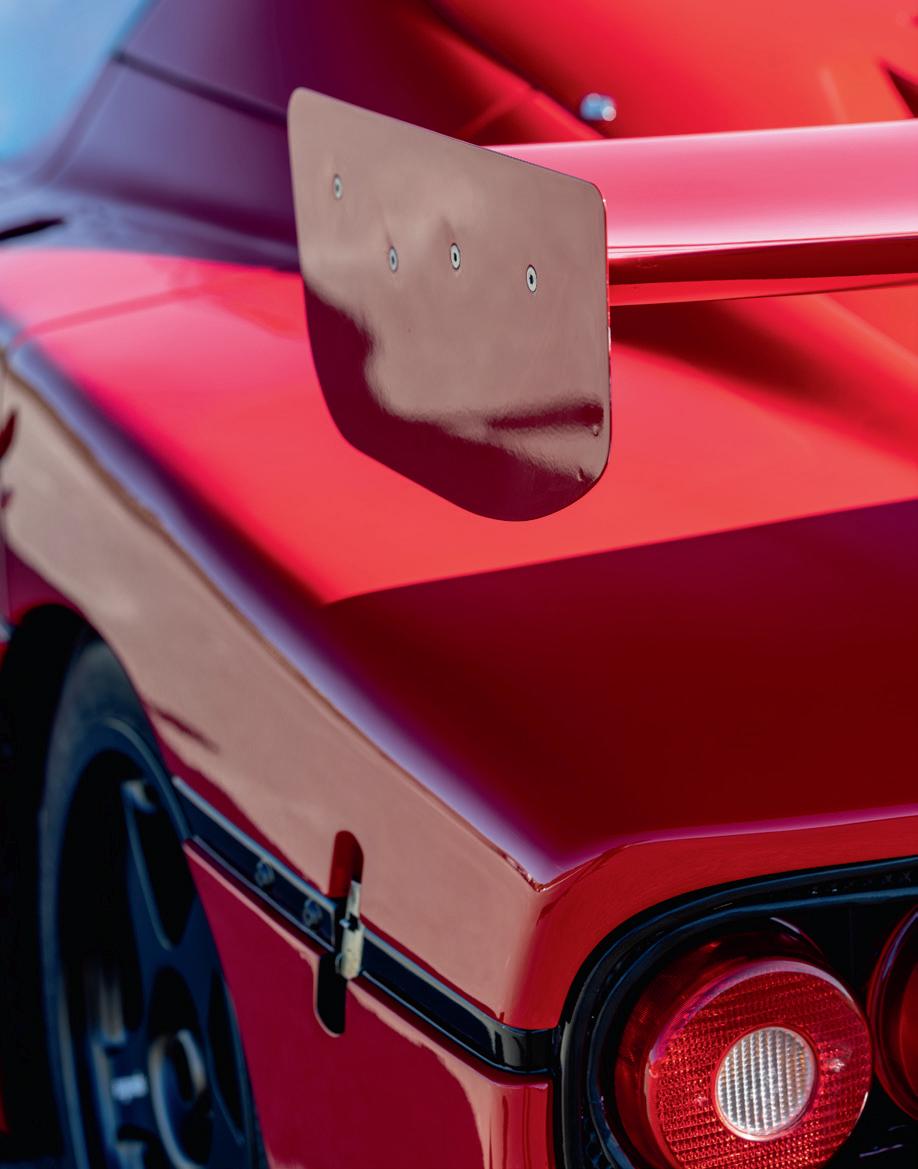
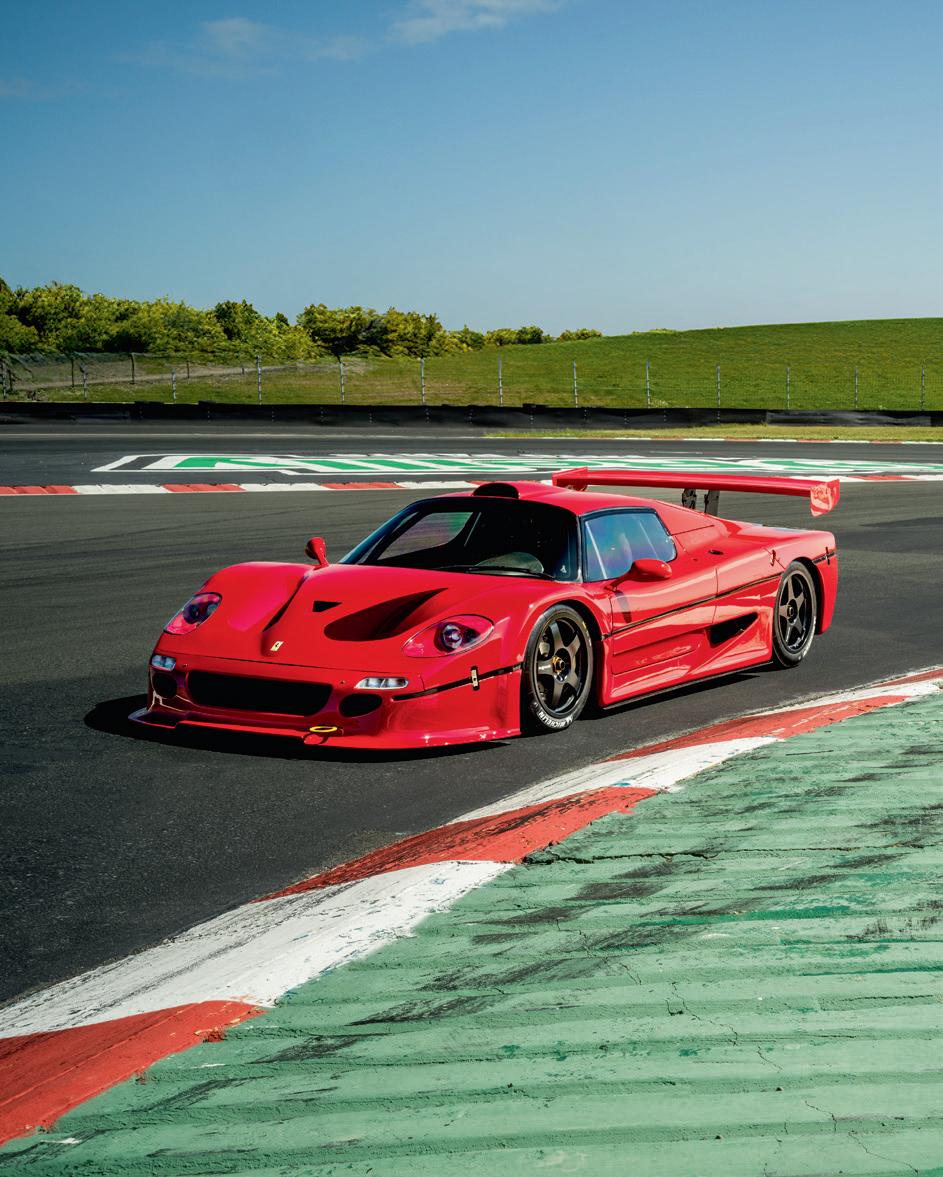

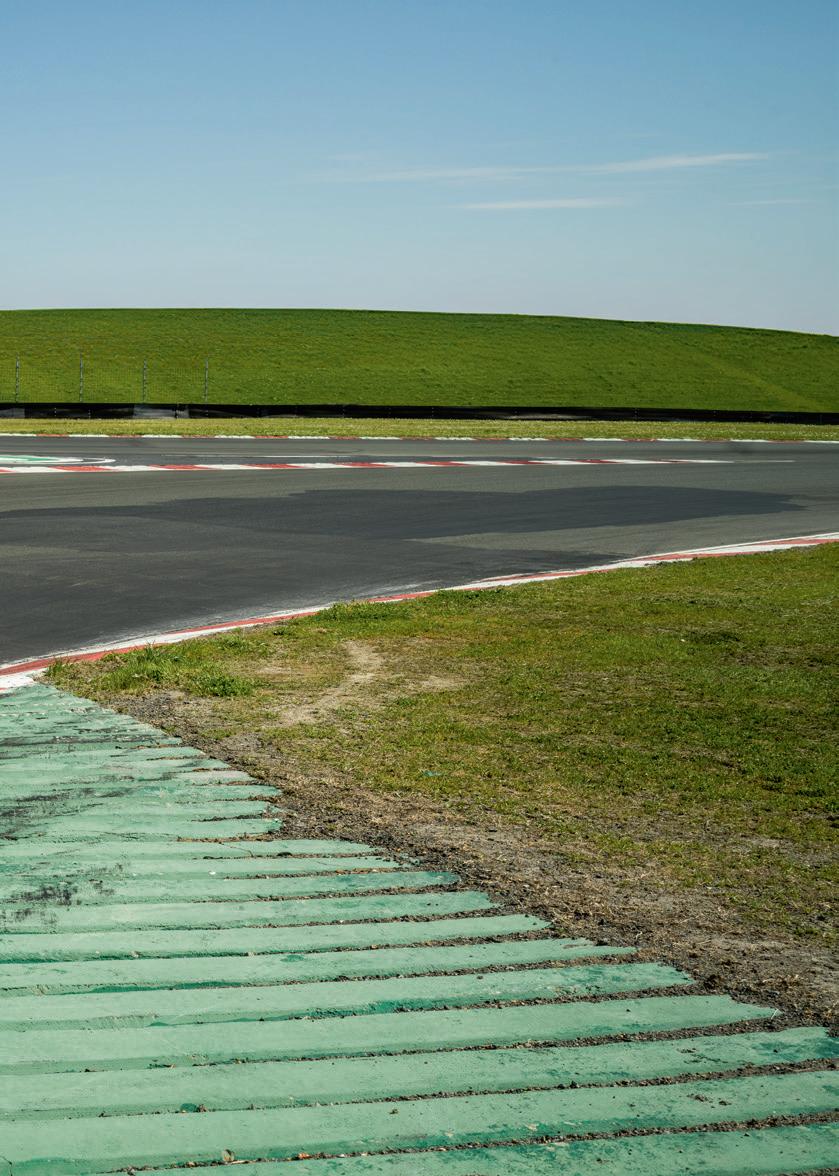

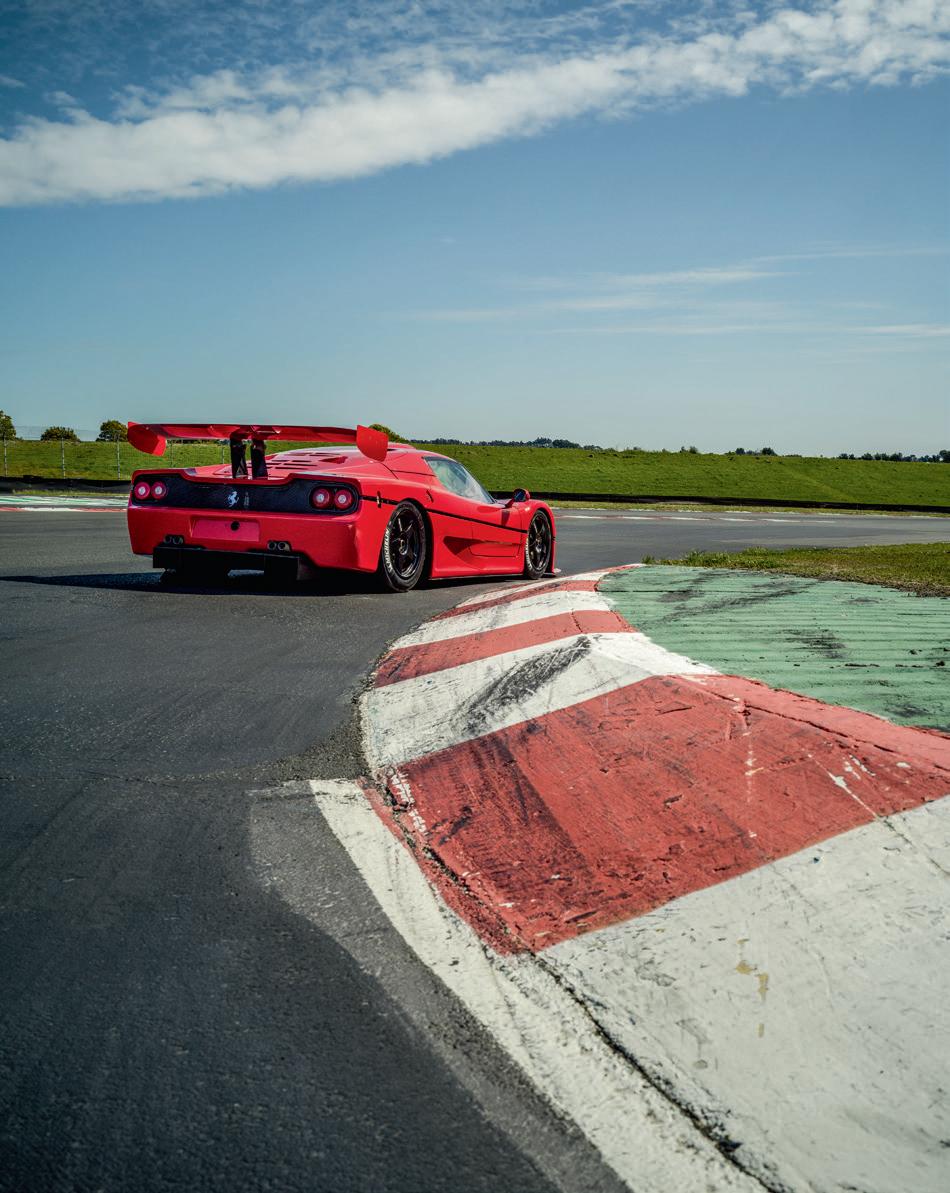
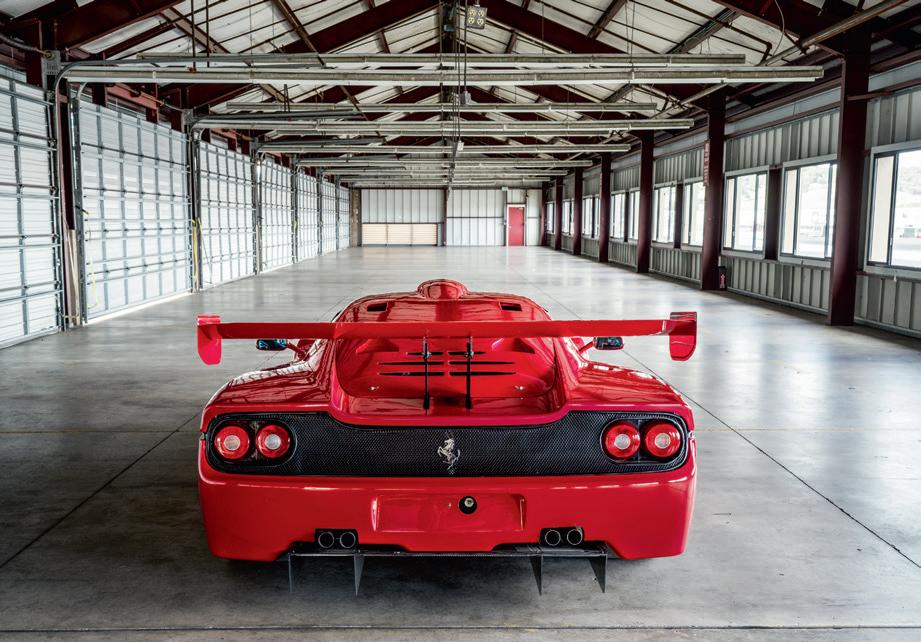
ABOVE
F50 GT has an adjustable rear wing with a central strut in place of the standard car’s fixed unit.
Pared-back carbonfibre panels and analogue wheel belie this Ferrari’s sheer complexity and power.
OPPOSITE
outperform the road-going version of the F40.
Yet despite its animé exterior, the F50’s underpinnings meant business. Its 4.7-litre 60valve V12 was at least partially derived from a 1990 Ferrari Formula 1 car’s, and it was rigidly bolted to a carbon tub, acting as a stressed member along with two stabiliser bars that enhanced rigidity. The powerplant produced 512bhp and 347lb ft; mated to a gated six-speed manual it could hit 0-60mph in a claimed 3.7 seconds and achieve 202mph with enough Tarmac. It was also a rarer beast, seeing only 349 units in contrast to the F40’s 1315 examples.
Ferrari scrambled to catch up, conspiring with long-time collaborators Dallara and Michelotto to produce an endurance racer that could rule them all. Naturally, the top-of-the-heap F50 would make a fine starting point; six chassis were set aside post haste, and Maranello orchestrated the transformation of the streetlegal road car into an indomitable GT1 racer. With performance stats surprisingly close to those of the twin-turbo V8-powered F40, the F50 required a dramatic mechanical reimagining to make it competition worthy.
The Pininfarina-penned bodywork was resculpted into a sleeker silhouette and a slabbier, blockier overall form for more aggressive aerodynamics. Appropriately, the body was dropped perilously low to the ground. Ditching the removable targa top, the fixed-roof race version inherited a high-mounted scoop to feed the V12, its sloped form initiating a gently arced line that extended from the midpoint all the way toward the tail. Up front the revised nose added a NACA duct, while the peekaboo Plexiglass engine cover was traded for a louvred carbonfibre cover. An adjustable rear wing replaced the roadgoing version’s massive sculpted fixed arch.
The stock F50 boasted carbonfibre chassis and body panels alike, wearing a thin layer of paint that showed off the weave pattern beneath. Counterintuitively, the race version’s paint did not reveal this weave pattern. Whether this was due to refinements made to the carbon-finishing process, or an intentionally thicker paint layer to enable smoother laminar airflow and therefore less aerodynamic drag, the GT’s claimed top speed of 235mph represented a whopping 33mph improvement over that of the stock car.
Despite starting off with a carbon chassis, some 900lb of mass was further trimmed from the F50, resulting in a kerbweight of around 2000lb. Already no slouch, the naturally aspirated iron-block F130A V12 was massaged based on Dallara’s 333 SP powerplant. Ferrari’s famously secretive race efforts mean the details of the engine modifications remain a mystery, but the enhancements produced a claimed 750bhp, elevating the red line from a heady 8500rpm to a stratospheric 10,500rpm. Feeding the motor were no fewer than three Bosch fuel pumps, two of which ran at all times plus an additional unit that could be summoned
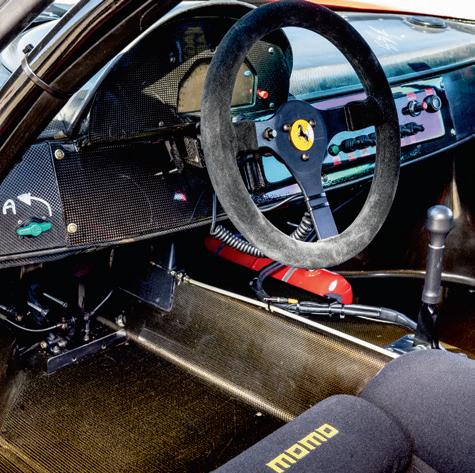
– perhaps on the Mulsanne Straight – at the flip of a switch. The engine was mated to a sequential Hewland six-speed gearbox with carbon clutch plates. Speedlines of 20 inches replaced the 18inch wheels, with girthier 11- and 13-inch widths filling the wells with Michelin Pilot SX slicks. The pushrod suspension was updated for track duty, and a rear diffuser tucked beneath four Inconel exhaust tips rounded out the visual package.
Ferrari has long been cagey about instrumented testing of its limited-production halo models, and the release of the road-going F50 was no exception. It took Car and Driver over a year to track down a civilian-owned F50, and it landed on Andy Evans, owner of championship-winning Team Scandia and an accomplished racer in his own right. Evans did the driving for the publication’s instrumented testing, helping avoid criticism for what might be considered a breach of Ferrari’s famously restrictive contracts.
“I’m frustrated they won’t concentrate on the racing version of the F50 – get back to their sports car roots, rather than all this F1 emphasis,” he told author John Phillips. “But I’m willing to wait it out. If they do construct an F50 GT, Team Scandia will buy one.”
Art Zafiropoulo was raised by Greek immigrants in a Boston suburb and became struck by the car bug at an early age, winning more than 25 trophies by customising his family’s 1951 Ford. He also dabbled in motorcycle racing, later indulging in that passion through a collection of pre-war bikes. His most formative automotive experience came when he spotted a Ferrari while attending university in Boston. The memory lingered, and his upward trajectory in the semiconductor industry eventually enabled him to purchase his first Ferrari, a Testarossa, in 1987. The acquisition predated many more.
Zafiropoulo eventually partnered with Giacomo Mattioli and founded Ferrari Silicon Valley in 2013, funding racing ventures through the dealership that led to Grand-Am and IMSA wins in four of the first five years they competed. Mattioli was married to Piero Ferrari’s daughter Antonella, which bolstered ties to the factory and all the ancillary connections that come with those relationships. When Ferrari announced plans to go racing with the F50 GT, Andy Evans announced his intentions to buy and campaign two of them. But the project was killed nearly as soon as it was announced, with the factory building only one F50 GT and the remaining pair becoming assembled from spares. Some cited homologation rule changes, which enabled competitors to build wilder ‘evolution’ versions of their road-going race cars, making the F50 variant look tame in comparison; others suspected the carmaker didn’t want to distract from the still-profitable 333 SP prototype. Most recognised Ferrari’s reluctance to draw resources away from its F1 efforts, which anticipated a bright future following
Michael Schumacher’s advent in the 1996 season.
As fate would have it, Zafiropoulo had discussed bankrolling one of the two cars Evans planned on racing. When the F1 GT’s racing plans were scrapped, Evans asked if he would like to purchase serial no. 001 outright. “I nearly shit my pants,” Zafiropoulo recalls. “I said, you must be kidding me. I’d love it.” A seven-figure price was agreed upon, and approximately four months of prep later the car was crated and shipped to San Francisco Airport, arriving in the US on Friday April 18, 1997. The vehicle was expedited through customs thanks to Dick Merritt, who co-founded the Ferrari Club of America and happened to work at the Department of Transportation. From the Bay Area it was trailered overnight to Beverly Hills – just in time for its stateside debut at that weekend’s Rodeo Drive Concours.
“The first time I saw it was at 6:00am when the concours opened. I got goosebumps,” Zafiropoulo recalls. While he owns around 30 Ferraris, many of which are significant and claim delivery miles, he felt compelled to get the F50 GT running despite his agreement not to use it for competition purposes. Before long he booked time at Sears Point Raceway (later dubbed Infineon and Sonoma Raceway) and hired racer Didier Theys to help him explore its limits. Theys configured the wing for maximum angle of attack, and therefore maximum downforce in order to keep the rubber side down. “He didn’t want me to go fast,” Zafiropoulo says. “He thought it was just too dangerous.”
Further complicating matters was the factory set-up, which proved fabulously out of whack. Not only did the engine idle at an abnormally high
Fixed roof, aggressively reworked aero, Speedline wheels and that huge rear wing add visual menace.
2300rpm, the front tyres were a soft compound while the rears were hard. There was also an excess of rear weight-distribution bias, which necessitated revised springs. The high idle turned out to be due to injector leaks, leading to troubleshooting and tuning via mass-flow meters, ultimately returning the resting heart rate to 900rpm.
Despite owning shrink-wrapped Ferraris including an Enzo and a LaFerrari, Zafiropoulo kept the GT running for several years and appearing at various events, from Concorso Italiano at Monterey Car Week to Ferrari’s 60th Anniversary Race Through the Decades show in Beverly Hills. Track time was not without its risks; once, racer Johannes Von Overbeck crashed it at Sears Point, resulting in the F50 GT getting sent back to Maranello for repairs.
A silver lining revealed itself when the car, once fixed, was track-tested at Fiorano by Michael Schumacher. Ferrari Hypercars by Winston Goodfellow states that the GT’s Fiorano lap time in Schuey’s hands was estimated between 1:08.4 and 1:10.4 – a blistering pace that outshone the 333 SP (1:11.9), FXX (1:16.2), LaFerrari (1:19.0), Enzo (1:24.9) and, of course, F50 (1:27.0). Michael’s signature remains on the dashboard... Zafiropoulo’s technician Giuseppe Di Gennaro worked at the factory for several years before moving to the States, and his connections would come in handy. “I started bugging the responsible people in the GT programme for two years,” Di Gennaro says. “I knew they have an off-base warehouse where they keep the old stuff.”
All this persistence eventually paid off; Zafiropoulo negotiated three engine blocks, a set of cylinder heads, magnesium valve covers, fuel rails and even a telemetry harness as part of a back-up stash. Even better, the factory charged him only $35/hour for repair work. He later added to the arsenal of extra parts a set of magnesium wheels made from castings of the stock
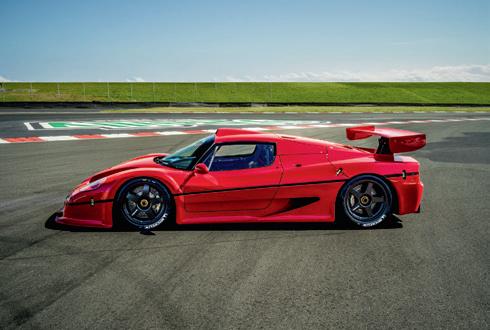

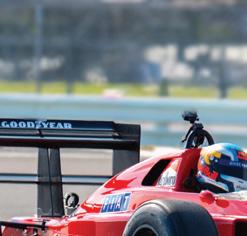
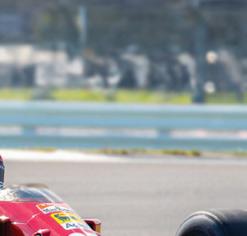









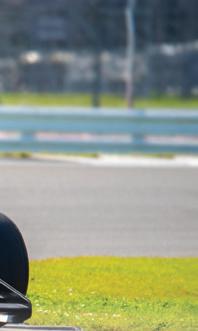






aluminium rims in order to reduce unsprung mass.
The owner was not afraid to take the wheel again, although an unfortunate incident at Laguna Seca Raceway in 2004 necessitated repairs to the front clip. Exiting turn 11 onto the straight, the GT hit a spot of sand that had blown onto the track, and tapped the front end against the wall. “Jean Todt said: ‘You won’t know it was ever damaged when it comes back [from being repaired].’ He said: ‘What’s your budget?’ and I replied: ‘No budget!’ He loved those words.”
Despite the risk involved, the F50 GT has seen a total of approximately 20 hours of track time to date at the hands of a very select few. By all accounts the rare race car is quite the handful – a reputation bolstered by the fact that it received more tuning and massaging than the other two extant examples. Zafiropoulo says that when it was run on a dynamometer rated at 1000bhp in order to sample exhaust notes for the Forza video game, it overheated the dyno twice.
“I’ve driven no. 003, and it felt very different. The power wasn’t the same.” He adds that Derek Bell’s feedback left an impression on him: “He was blown away by the torque. He said he’d never felt any Ferrari like this before – and he drove in F1.”
I was eager to hear the story of Zafiropoulo’s beloved F50 GT when I first interviewed him on a call. Admittedly, I also had the intention of digging around for an invitation to drive the thing – that is, until I heard fearsome tales about its feral energy, obscene power output and general intractability in the hands of some of the world’s most talented drivers. I may be adventurous, but the more I learned about its history, the more I managed my desire for first-hand experience.
My date with the vaunted machine came more mildly in the form a shoot at Sonoma Raceway with photographer Michael Alan Ross. The Ferrari was delivered incognito in a closed trailer, and a careful ballet of ramps and foam wedges was required before the car stood safely on terra firma. This was an agonising task to observe.
In person, the F50 GT appears low yet huge and imposing, its crimson bodywork cutting through space with every race-inspired feature in the book. Poised proportions, ducted bodywork, roof scoop and all lend it an air of potency and gravitas the swervy curvy F50 simply lacked. Because it looks like nothing else, it invites long stares and deep consideration for its familiar-yet-alien appearance. Zafiropoulo offers up a suitable analogy involving his father, who owned a jewellery store. “He had a four-to-five carat diamond when I was maybe six years old. He said: ‘This is the most perfect diamond I have ever seen,’ and handed me a 100x loupe. ‘If you can find a flaw, I’ll give you a dollar; and if you don’t, you’ll give me a dollar.’ So I look at the F50 GT car, and if someone looks at it enough times it’s going to pay for itself.”
Indeed the Ferrari exudes a killer presence, not only due to its striking proportions but also
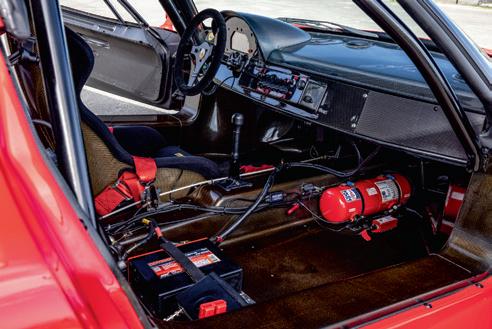
ABOVE Only very few people have been fortunate enough to sit here and drive this one-of-three stallion.
because of its extreme rarity. No. 002 was originally sold to Yoshikuni Okamoto of Japan, and no. 003 wound up with American collector Jim Spiro before selling to an Australian in 2000, and those two examples have flown under the radar. Meanwhile, no. 001 has been shown publicly only a handful of times. “That’s part of the deal I made with Piero Ferrari: the car would be available to them whenever they needed it for any reason,” Zafiropoulo says.
Some visual details stand out: the visible carbon weave within the door panel; the surprisingly imperfect metal grille across the tail; the tiny weld spots on the aluminium enginecooling hardware; the red Dymo-printed labels on the otherwise anonymous toggles denoting ‘DIREZIONE’, ‘POMPA AUX’ et al.
But then there was the thing I’ll not forget: the sound of the starter whirring into action, furtively spinning the 4698.5cc V12 in vain, pausing and attempting once again until finally, by sheer will (and a torrent of racing fuel), it finally facilitated enough combustion pressure to ignite, catalysing octane into an uproarious blast of crackling decibels, heat and ground vibrations.
At first the exhaust rhythm was disconcertingly uneven, as though it might die at any moment –and it did. But when the engine fired up once more it was aided by temperature and momentum, trading staccato uncertainty for a smoother idle that still exuded the pops, burbles and shrieks which only a large, naturally aspirated V12 free from the burdens of a muffled exhaust can provide.
Di Gennaro had been tasked with starting and moving the GT for our photos, and only when the engine was slightly warmed did he blip the throttle
a few times to reveal impossibly quick revs that rose as quickly as they fell. I may not have been behind the wheel, but I was vicarious in my appreciation for the exoticism of the titanium internals that enabled this highly moveable acoustic feast, the blind ambition that guided the F50 into a nearly impossible performance paradigm, and the implicit tragedy that its GT variant never turned a wheel in anger against its sworn enemies.
Zafiropoulo says he has turned down offers of $20 million for his F50 GT and has heard suggestions that it deserves valuation around where 250 GTOs start – somewhere in the neighbourhood of $45m. He is also adamant that he will not part with it while he is alive. “I wouldn’t sell. It’s not the money; I would lose control of the car. When I die it can get sold, but until then, I’m not selling anything.”
It’s a powerful thought, an 86-year-old man who is so strongly bonded to his platonic ideal of a car that he holds onto it with all his might. Maybe it’s beyond that – the idea that unlike the McLaren F1 GTR which proved itself on the world stage, the Ferrari was never afforded that luxury and could therefore, somehow, be more perfect. It’s both a tragedy and a triumph that such a promising machine was relegated to a universe of ‘what ifs’. Others would go on to claim endurance greatness – notably Porsche’s aforementioned GT1 and Mercedes-Benz’s CLK GTR. Ferrari’s last outright win at the Le Mans 24 Hours had been in 1965; it wasn’t until nearly six decades later in 2023 that the scuderia would take the top prize again, with the no. 51 499P – a remarkable dry spell concluded by a stunning victory.
But in the grand scheme, perhaps it was the Prancing Horse that earned the last laugh. Ferrari of course had gone on to shine in F1 thanks to the unprecedented success of Schumacher and Ross Brawn – and it likely reaped those rewards because it didn’t succumb to the distraction of nurturing the F50 GT into a world-beater.
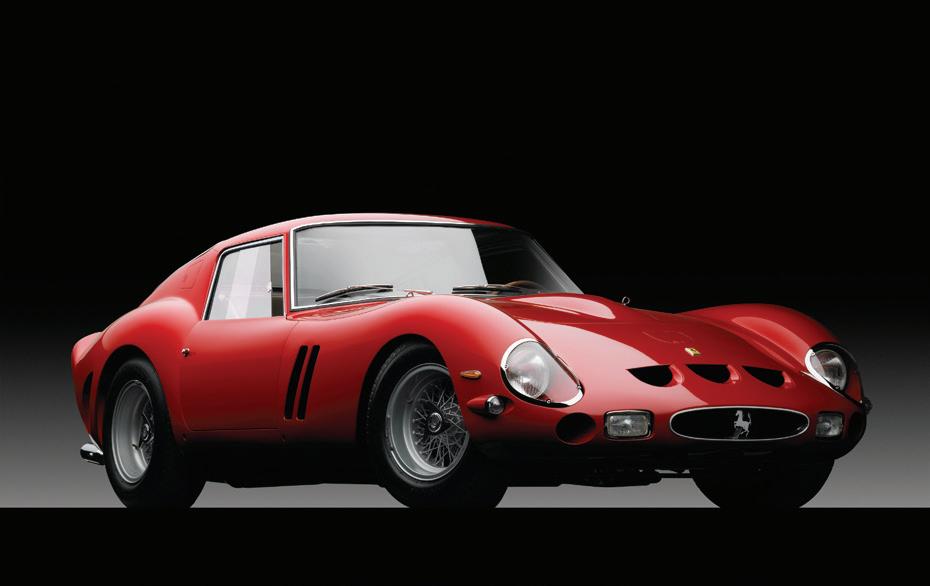
THE INTELLIGENT ALTERNATIVE FOR FERRARIS OF YESTERDAY, TODAY AND TOMORROW
An Excellent Investment
Ferrari Financial Services offers personal, discreet and tailor-made financial solutions over the entire range. This even includes Race cars, classic and special models - leaving you to enjoy the ride with complete peace of mind.
Whether you’re looking to make a new purchase or release equity, we offer finance programmes designed to offer you the flexibility to build, grow and enhance your collection of Ferraris.
Contact our team today to discuss your next Ferrari purchase.
Steven McLaren
+44(0)7739 035782 steven.mclaren@ferrari.com
Ferrari Financial Services GmbH
275 Leigh Road, Slough Berkshire, SL1 4HF www.ferrarifinancialservices.com
Kevin Briggs
+44(0)7500 074390 kevin.briggs@ferrari.com
Nick Simmons
+44 (0)7887 724992 nick.simmons@ferrari.com
A Mercedes-Benz contract alongside Juan Manuel Fangio. Races around the globe. A record-setting Mille Miglia. A tragedy at Le Mans. Mechanical malfunctions. Lost comrades. Controversy. A nightclub or two... These are all things a Boy’s Own hero is made of – and, in 1955, they proved to be the making of The Boy
December 4, 1954: 25-year-old Moss tests the W 196 around Hockenheim at Mercedes-Benz team boss Alfred Neubauer’s invitation
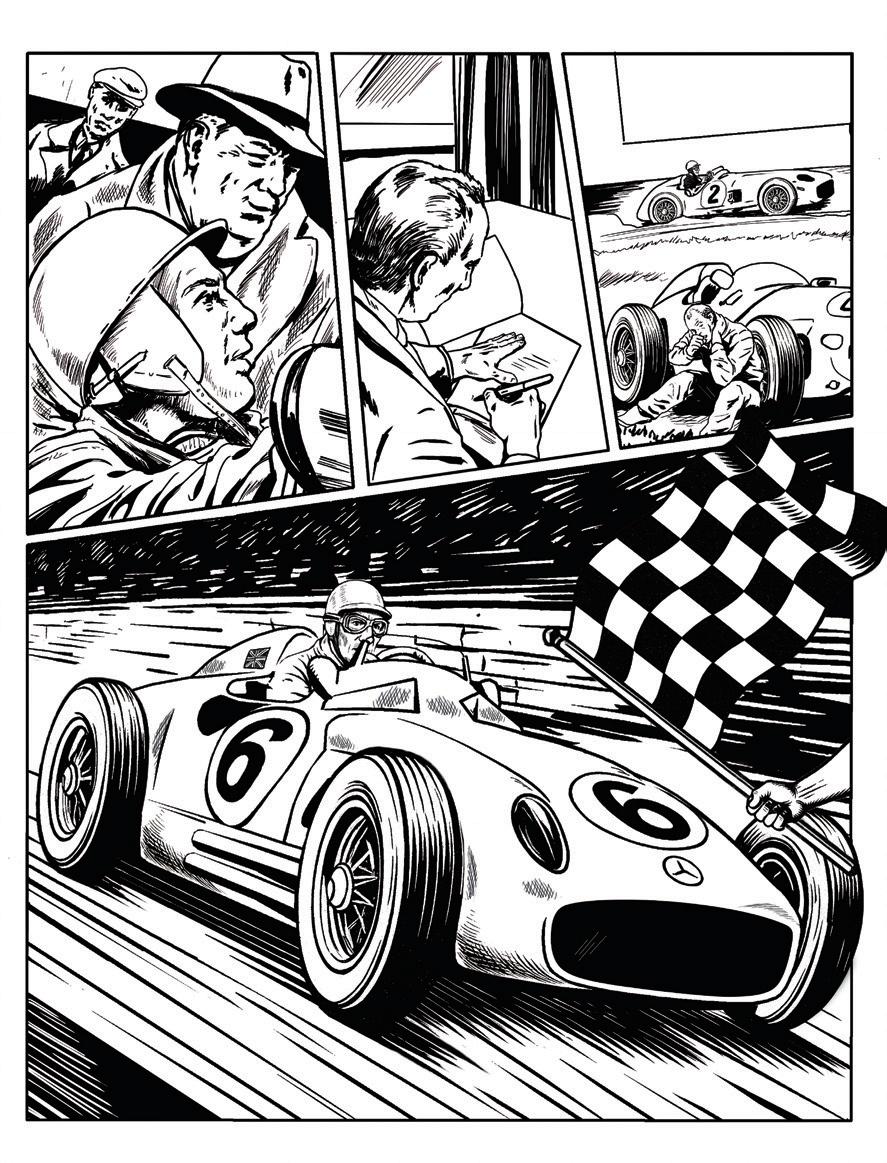
January 30, 1955: Moss clinches his first win with Mercedes in the second heat of the non-championship
Formule Libre Buenos Aires City Grand Prix
January 4, 1955: Moss officially signs as a Works driver for Mercedes-Benz
January 16, 1955: In his first Formula 1 race for Mercedes, a groggy Moss takes a break due to a fuel vapour-lock issue
Late February-early March, 1955: Moss plays hard in Nassau, The Bahamas
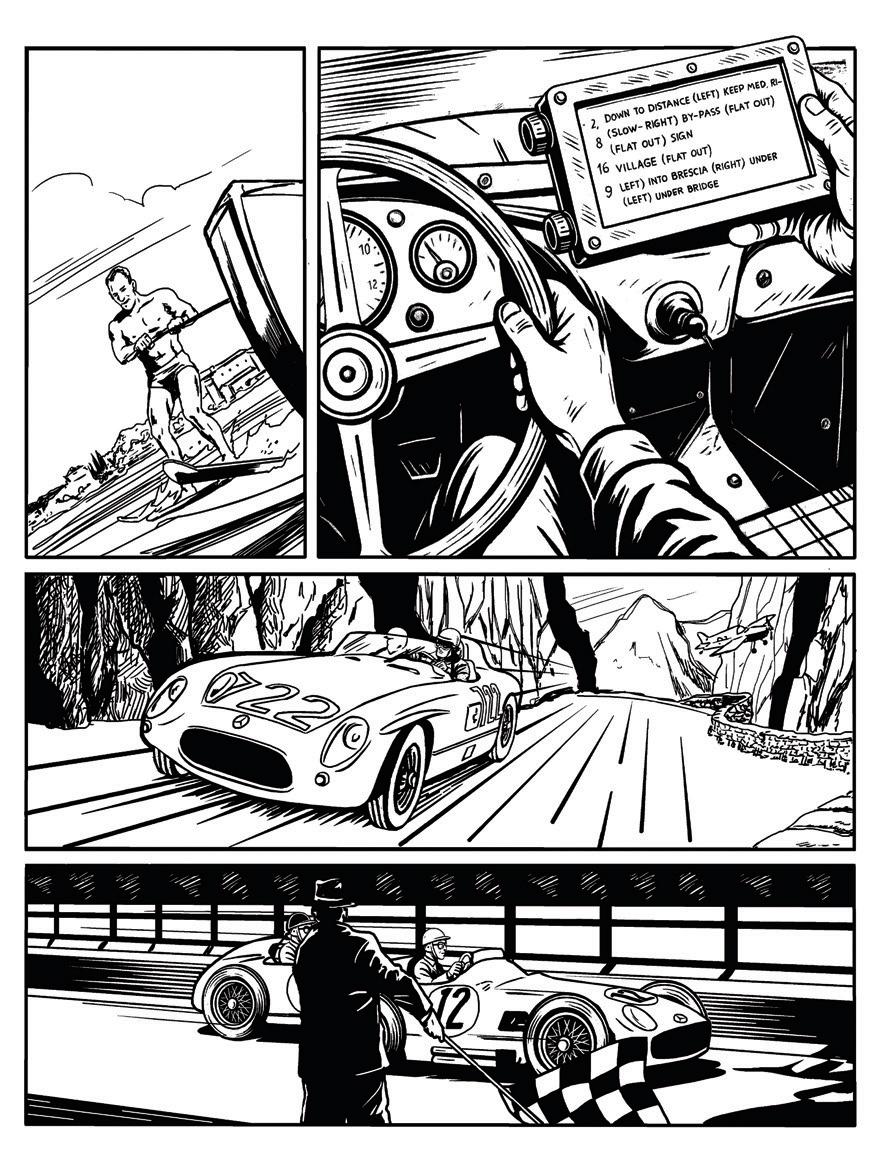
July 16, 1955: Moss scores his maiden World Championship GP win in a W 196 R
April 19, 1955: Practising for the Mille Miglia, co-driver Jenks reads innovative ‘bog roll’ pace notes
May 1, 1955: 7:22am start. Survives on bananas, lemon juice and Fangio’s ‘mystery pill’. Hits 176mph and wins the Mille Miglia, averaging a record speed of 97.95mph
“WHITHER STIRLING MOSS BOUND FOR 1955 [STOP] OUR ENQUIRY WITHOUT COMMITMENT [STOP]”
To ‘get the call’ from Mercedes-Benz is the stuff of racing drivers’ dreams. But, at this very minute, Moss is bound for America – and dashing for his flight. Distracted, he decodes the telegram’s pitfalls rather than its opportunities: his contract with Shell-Mex and BP has a year to run – and M-B is aligned with Castrol – plus he has made a verbal agreement with Maserati for 1955. Sorry, old chap, simply must fly.
22 Friend and manager Ken Gregory has been digging on mercurial 25-year-old Moss’s behalf, and calls him at Rootes Group’s New York HQ with the news: M-B is not only offering him big money [60,000 Deutschmarks reportedly], but also twotime reigning World Champion Juan Manuel Fangio as his Le Mans 24 Hours co-driver. Suddenly Moss is very receptive. His diary entry: Wow!
25 Although he leads jointly after the first leg of the Great American Mountain Rally, Moss’s mind is understandably elsewhere.
26 Leg two sees him move into the outright lead.
27 Victory slips from him when a competitor baulks his Sunbeam-Talbot convertible at Lincoln Gap, in snowy Vermont. The Manufacturers’ Team Prize is some consolation.
4 Having quickly learned the anti-clockwise Hockenheimring circuit aboard a M-B 220A saloon and 300 SL ‘Gullwing’ coupé, Moss sets an impressive 2min 15sec (128mph) best within ten laps in the very flighty W 196 Grand Prix car. Team regular Karl Kling matches this time –albeit in drier conditions. After a convivial lunch, the buoyant Moss camp boards Pan Am’s 4:30pm flight to London, leaving plenty of time for a big night out with friends at Mayfair’s Colony Club.
5 Bed at 4:00am. Late nights/early starts are quite the norm for young Moss.
7 Vice-president Moss stars at Golden Jubilee for London Motor Club at Mayfair’s Park Lane Hotel – but funny man Tommy Cooper tops the bill.
9 For the benefit of the British press, Moss signs a one-year M-B ‘deal’ at Downtons Advertising’s Fleet Street HQ. Speaking directly into a British Pathé newsreel camera, he insists that: “[My] greatest ambition is [still] to try and be World Champion driving a British car.” His handlers are fearful of an anti-German backlash.
10 Moss receives a record fourth BRDC Gold Star (for 1954) at London’s Dorchester Hotel. Crooner Max Bygraves headlines.
17 Moss is flagged in a House of Commons debate about National Service. The controversy dating from 1953 that surrounds his Grade 3 fitness rating – which was due to childhood nephritis – simmers still, very much to the
‘More rain, hail and snow along the Adriatic coast causes their windscreen and goggles to ice’
embarrassment of this unabashed patriot.
22 Tax-efficient Stirling Moss Ltd is incorporated.
27 Moss gives the first UK demo of a Gullwing, at the Boxing Day meeting at Brands Hatch. He then hands out trophies while dressed as Santa.
1 Moss visits London’s Boat Show with longtime lady friend Sally Weston. They decide to call time that night.
2 Yet Sally waves him off from London Airport. Moss is accompanied on a Pan Am Clipper to Frankfurt by his parents, along with Ken Gregory and his lawyer Felix Nabarro.
4 Moss signs for M-B for real: regular retainers reportedly worth a total of £25,000 – plus a percentage of start money/winnings and a brand new 220A. His long flight to Argentina for the first GP of the season begins with a short hop to Zurich, thence to Lisbon…
4-5 … Dakar. Recife. And Rio. Local hero Fangio greets them at a chaotic Buenos Aires Airport.
10 Team-mate Hans Herrmann crashes their loaned M-B 300 saloon into a van en route to the Buenos Aires circuit. They have it repaired on the QT. Moss is ill, and manages just 15 practice laps in searing heat. He has serious doubts about his ability to complete 90-100 laps come race day.
11 With a brake servo from a Chevrolet road car fitted to his W 196 overnight, a happier, but not yet healthier, Moss sets the day’s fastest practice lap.
12 Heavy rains. It dawns on Moss that only two new W 196s – wheelbase shortened by 14cm –are available: to Fangio and to Kling. He is 2.0 seconds slower than the latter.
14 A passport drama results in a $100 fee, in addition to a $100 fine.
15 Moss is 1.3sec slower than Fangio in final practice. They’ll start from P8 and P3 respectively.
16 Hotter than ever: 60ºC track temperature. Moss, still unwell, makes good progress from the
inside of the third row to be running second to Fangio at 30 laps, when his fuelling system suffers a vapour lock. Groggy, he lies on the grass to recover. Returning to the pits on foot – after a translator persuades zealous medics to release him – he has a cold drink and shower. Taking over Herrmann’s car – from Kling – he reels off the remaining 18 laps. This cooked trio shares the three points for fourth place.
21 Meeting with Argentina’s President Juan Perón.
26 Three W 196s have been fitted with the 320bhp 3.0-litre from their 300 SLR sports car ‘cousin’ for the Formule Libre Buenos Aires City GP.
27 Moss is fastest in practice – in a 280288bhp 2.5-litre car. A chest-mounted cooling/ breathing tube proves a bust.
29 He proves to be the fourth-fastest driver in a wet qualifying session…
30 … and leads the 30-lap opening heat from the outside of the front row. But his Continentals are too hard, and his left-front brake keeps locking. Ceding to Fangio on lap 14, he finishes third. Softer tyres with a shallower tread are fitted for the second heat. And oil is squirted into the sticky brake drum – a fix confirmed on the Avenida General Paz dual-carriageway. Moss overtakes Fangio for the lead after 25 laps, equals the fastest lap of Ferrari’s Giuseppe Farina from heat one, and wins by 3sec. He is, however, second on aggregate: 11.9sec behind Fangio.
4 Moss meets Motor Sport magazine’s Denis Jenkinson for lunch in London. Their daring Mille Miglia plan is go, with a practice first.
10 From Heathrow, Moss and ‘Jenks’ fly to GenevaMilan in a Vickers Viscount – and are driven to Brescia in an M-B 170 saloon. There, they are given a quick tour of the 300 SLR prototype. They had been expecting to practice in a Gullwing.
11 They leave Brescia at 7:45am, with no intention of going quickly. Team instruction: Do not
exceed 170mph in top gear. Lunch in Pescara. L’Aquila. Rome. Overnight in Viterbo.
12 The clutch slips from Siena onward. Even so, they give the Modenese police the slip – and return to Brescia at 5:10pm. Moss has the flu.
13 Forced to patch a split radiator near Rimini, and delayed further by heavy rain, they spend an early night in Pesaro.
14 More rain, hail and snow along the Adriatic coast causes their windscreen and goggles to ice. After lunch in L’Aquila, they hit a sheep near Ravenna. The 300 SLR’s left-rear wheel whacks a concrete bollard during the car’s spin. The crew is uninjured, but the M-B is hors de combat and stored in a local Agip garage. A night in a gloomy hotel in Montefiascone mirrors the men’s mood.
15 Moss and Jenks return to Brescia on the back seat of Kling/Herrmann’s 220A. Moss has a metal fragment removed from his eye.
16 Herrmann drives them to Milan in Neubauer’s 220A. Their Heathrow flight lands at 7:00pm.
25 Moss pleads not guilty to causing an obstruction on London’s Adelaide Street. Bow Street Magistrates’ Court fines him 30 shillings.
26 Moss flies Pan Am to New York…
27 … thence to Nassau, The Bahamas, via Miami.
28 For some water-skiing…
1 … and spear-fishing, etc.
2 Moss has a leisurely lunch with Aston Martin owner David Brown.
7-8 A flying visit to Havana, Cuba.
9 It’s back to business. Moss ‘meets’ the only British Works entry for the Sebring 12 Hours: an Austin-Healey 100S, piloted to Miami from New York by co-driver Lance Macklin.
11-12 106 miles of day/night practice: 4.5mm of tread and 10-11mpg US.
13 Moss excels at the run-and-jump start: from 33rd, he is second across the timing line to begin the first lap. He and Macklin finish a brake-less
September 17, 1955: Stirling celebrates 26th birthday with victory at the RAC Tourist Trophy
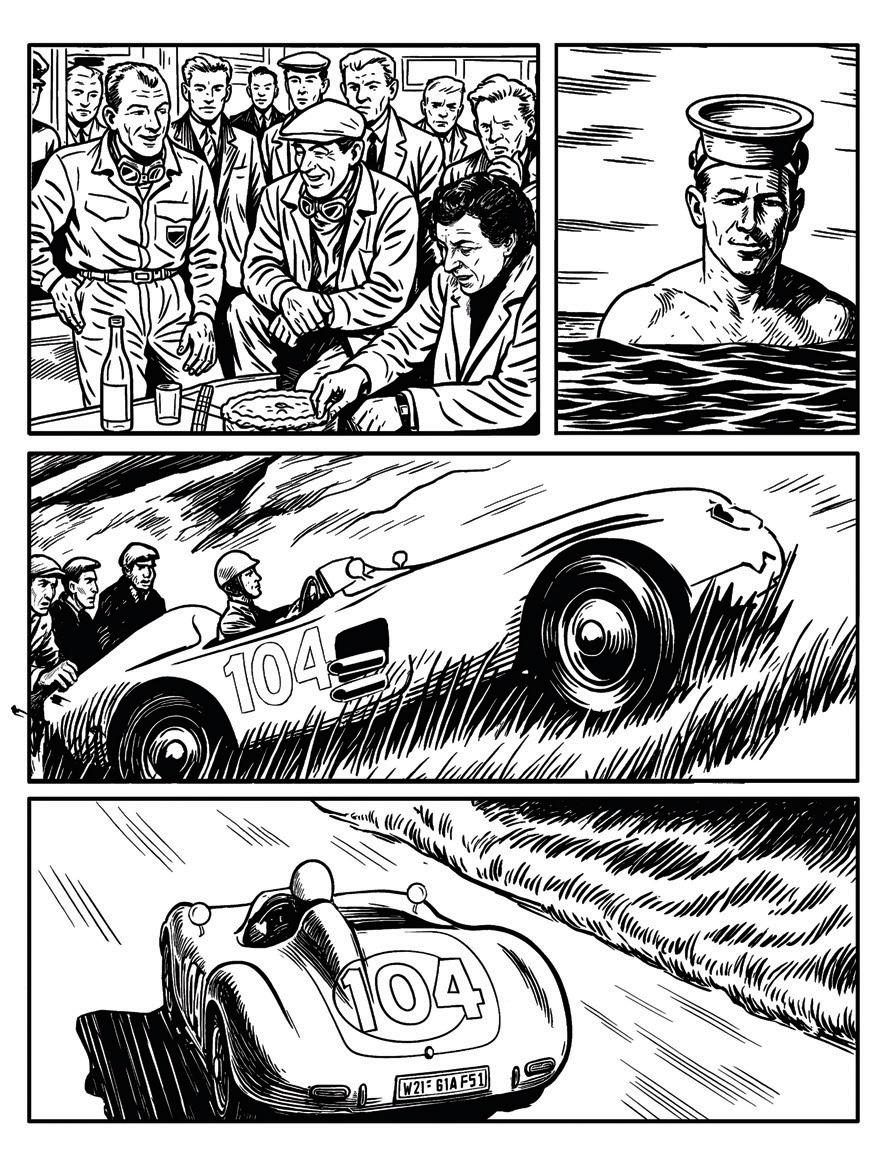
September 28, 1955: Scuba-diving (again) from a chartered yacht off the coast of Juan-les-Pins, French Riviera with best friend David Haynes
October 16,
October 16, 1955: Moss and Collins recover to claim victory and the sports car championship for Mercedes
sixth overall – 176 laps/915.2 miles – and win their class: Series Production, Group 9: 2601-3500cc.
16 Moss boards RMS Queen Mary in New York. His sailing is delayed by fog.
19 The Autocar sports ed John A Cooper – Moss’s close friend, colleague, co-driver and occasional chef d’équipe – is killed in a road accident.
21 Moss disembarks at Southampton.
22 His Mercedes-Benz contract allowing him to drive other manufacturers’ cars if there is no clash of interest, Moss tests his own Maserati 250F at Silverstone: its SU fuel injection is effective, but its handling is atrocious. He finds time to coach sister Pat in her MG TF… 26 … and films her winning the Ladies’ Handicap at Goodwood’s 18th Members’ Meeting.
27 Moss flies to Milan. Collects a 220A. Drives to Brescia. Meets Jenks.
28 This slower car allows them to make increasingly detailed pace notes: 17 pages. They overnight in Rome’s Hotel Parioli… 29 … before returning to Brescia.
30 It pours with rain – until Pescara. Fangio’s 300 SLR overtakes them at Popoli. They overnight in Viterbo.
31 Sunshine! Moss collects some 250F parts from Maserati in Modena, en route to Brescia.
1 9:45am: Moss crashes his Gullwing into an army truck – loaded with unexploded shells – near Forli. He and Jenks are again uninjured. The local police chief apologises for military inattentiveness.
2 Having returned to Brescia at 1:00am in a 220A, the pair are not overly disappointed when their scheduled practice lap in a 300 SLR is cancelled due to brake problems. Moss overnights in Milan… 3 … before flying home.
9 He battles his 250F to claim pole position for Easter Goodwood’s Richmond Trophy. Incorrect hubs are blamed for the car’s waywardness. He also qualifies the 1100cc sports car built for Francis Beart, tuner of his most recent (1954) 500cc Formula 3 cars, by Bernie Rodger. Clutch slip and oversteer hamper it.
11 The unpainted Beart-Rodger’s throttle linkage snaps on the third lap of the 1500cc race. The 250F finishes a distant third in the Formule Libre Chichester Cup, and its injection system causes its retirement from the lead of the Richmond Trophy.
15 Restored to carburettors, it is 2.6 seconds faster around Goodwood in testing.
17 Jenks greets Moss upon the latter’s arrival in Brescia in the evening.
18 Brescia to Florence – 750 miles – in a Gullwing. Fangio’s 300 SLR overtakes them again, this time near Verona.
19 The Futa Pass is crossed in 1hr 13min. Co-driver Jenks is by now reading pace notes
‘He is surviving on bananas and lemon juice – plus a mystery pill that Fangio gave him’
from an 18ft ‘bog roll’ housed within an alloy case with a Perspex window. He relays these via 15 different hand signals. Intercom has been tried – and rejected.
20 A broken crankshaft near Rimini halts the pair’s ‘dress rehearsal’ in the hard-pressed 300 SLR practice ‘hack’.
21 Moss and Jenks have completed six and a bit practice laps; Kling is said to have done 15.
22 Moss breaks from his Mille Miglia preparations to contest the Bordeaux Grand Prix. He flies from Paris-Orly.
23 An oil spill prevents his 250F from bettering its Friday time. Two Works versions are faster.
24 Disc brakes are snatching from the second lap; Moss drops to eighth. The pads bed in, slowly. Lap 62 (of 123): a broken fuel-tank strap costs him three laps. He resumes last, unlaps himself twice, thrice breaks the lap record and finishes fourth.
25 Moss and Jenks get comfortable and familiar with their Mille Miglia 300 SLR in Stuttgart. They study its injection, fuel pump, wiring and onboard spares; they also practice changing wheels and spark plugs, and fitting aero-screens.
26 Moss drives chassis no. 0004 the 100 miles – behind the 1952 Carrera Panamericanawinning W 194 – to the Hockenheimring. Following several high-speed runs, he complains about buffeting in the cockpit, and admits to selecting fifth gear from second on occasion. He enjoys a night out with a girlfriend, while Jenks stays ‘home’ to perfect his notes.
27 After an M-B photo session, the racing duo fly to Brescia. A 1min 25sec practice wheel change impresses the mechanics.
29 Scrutineering is followed by a swanky lunch with Count Aymo Maggi, the Mille Miglia’s co-founder/organiser.
30 The efficacy of the 300 SLR’s windscreen
mods and new gearchange-interlock mechanism are confirmed by a blast along the autostrada.
1 Up at 6:00am for a 7:22am start. Eugenio Castellotti’s Ferrari overtakes them approaching Padua. Cresting a hump at 170mph – 70mph faster than practised – Moss and Jenks exchange furrowed glances mid-flight. Moss hits bales guarding a petrol station entering Pescara. He leads by 15sec from Ferrari’s Piero Taruffi. A partisan crowd boos him during a 28sec stop for an 18-gallon ‘splash’ of fuel. Flustered, Moss hits bales exiting Pescara, too. Rome: he leads by 1min 52sec from Taruffi. The 300 SLR’s rear tyres are changed, its fuel tank brimmed and oil checked – while Moss takes a quick pee, before a 70,000-seat grandstand. All in 1min 4sec. He is surviving on bananas and lemon juice – plus a mystery pill that Fangio gave him. Kling breaks ribs in a crash. Moss spins due to a grabbing front brake on the Radicofani Pass; crosses a slippery Futa Pass in 1hr 1min; outruns an aeroplane: 176mph maximum; and wins the Nuvolari Cup for the fastest Cremona-MantuaBrescia average: 123.4mph. He and Jenks finish in 10hr 7min 48sec, raising the record average by 10mph: 97.95mph. Moss: brakes fair. Fangio, delayed by an injector fault, is almost 32min behind in second place.
2 12:15am: Moss, accompanied by Weston, leaves Brescia in his 220A: Fangio’s pills are fantastic. Breakfast in Munich. Lunch at M-B in Stuttgart. 9:15pm: hotel in Cologne. Sleep at last.
3 6:00pm: Silver City Airways’ car ferry lands at Kent’s Lydd Airport, where Moss is greeted by family, friends and members of the press.
5 Moss’s overheating 250F is outpaced by Roy Salvadori’s sister car during first practice for Silverstone’s BRDC International Trophy. A lowered roll-centre, softer cams and a coat of paint improve the Beart-Rodger.
6 Mike Hawthorn’s Vanwall equals Salvadori. Moss is now sitting in P3.
7 A broken rotor arm strands the Beart-Rodger at Stowe Corner. Moss fits the spare he carries in his pocket, but finishes dead last. The 250F suffers another retirement: this time due to a slipped cylinder liner.
10 The BRDC celebrates Moss’s Mille Miglia win at London’s Park Lane Hotel. President Earl Howe calls it: “The greatest achievement by a British driver for all time.”
11 Moss tests the W 196 at the Hockenheimring.
12 He tests the 300 SLR there, too – before another run in the W 196, this time at Stuttgart-Echterdingen Airport.
15 Moss flies to Le Touquet. Drives to Paris… 16 … and presses on to Monte Carlo.
18 M-B mechanics check that the latest W 196 – 6cm shorter again, with outboard rather than inboard front brakes to suit – has sufficient
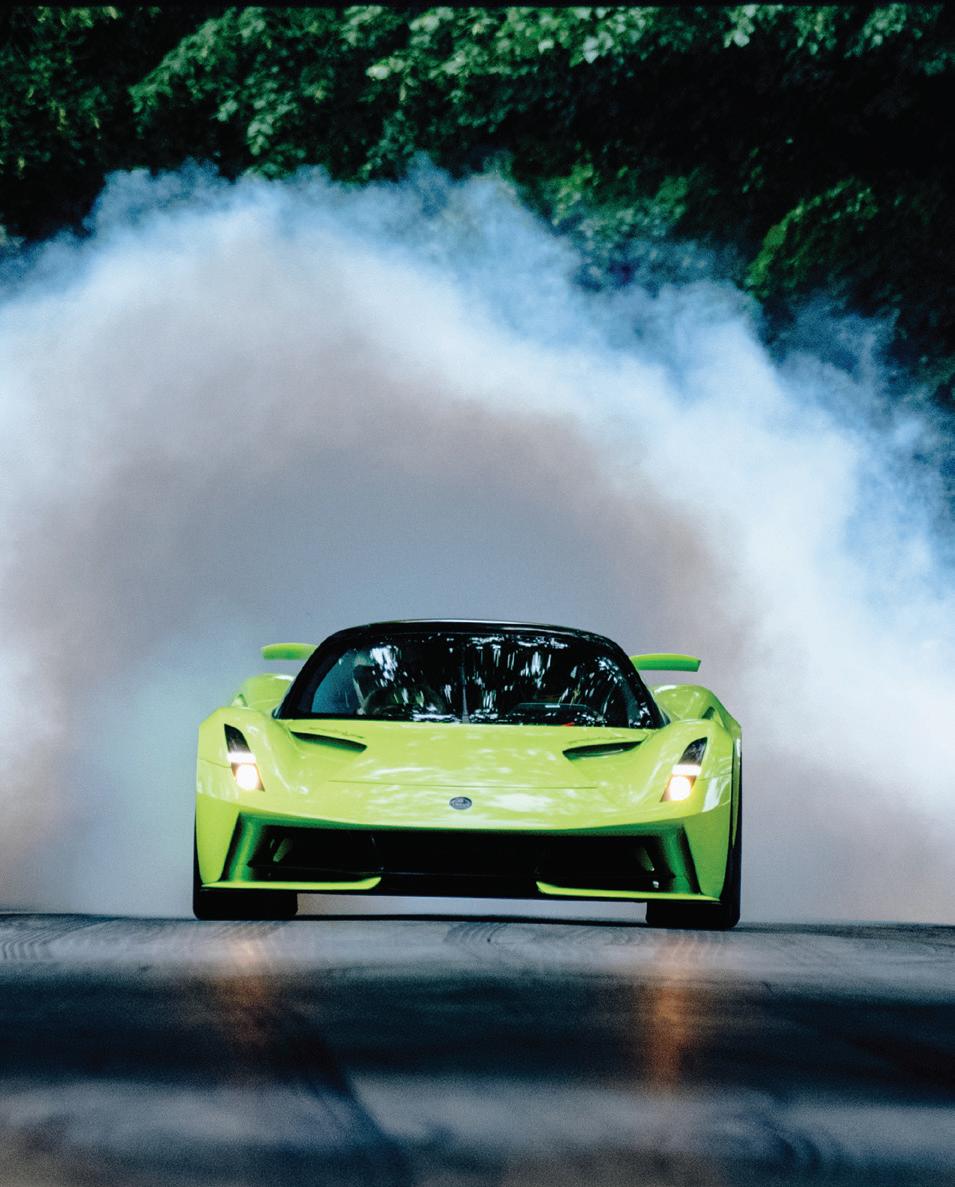

lock to negotiate Monaco’s Station Hairpin.
19 First practice decides the GP’s three-car front row. Moss is P3: 2.3sec behind Fangio. Herrmann crashes and breaks a thigh.
20 Moss tries out Fangio’s car, its engine set 60mm further forward, and gets within 0.1sec of the latter’s pole time.
21 Practice is delayed 40min – to 6:55am –because of a slick laid by Macklin in Moss’s 250F. Influential M-B designer/engineer Rudi Uhlenhaut drives the Maserati to assess its Dunlop disc braking system. Moss finds 0.8sec from his own W 196.
22 Fangio leads until his engine fails at halfdistance. Moss assumes the lead, and is almost a lap ahead when his own motor fails for the same reason – damage caused by a broken valve-adjustment dowel pin – with 18 laps to go. He pushes the car home in ninth place. Moss visits Alberto Ascari in hospital…
23 … steps aboard Aristotle Onassis’s yacht… 24-25 … and then drives to the Nürburgring to test out the 300 SLR.
26 Twice World Champion Ascari, having survived his Lancia D50’s spectacular plunge into Monaco’s harbour, is killed while testing a Ferrari sports car at Monza.
26-28 Moss qualifies second for the Nürburgring’s Eifelrennen sports car race…
29 … and, having set the fastest lap, follows team orders to finish second – 0.1sec behind Fangio.
1 Moss drives to Spa-Francorchamps in, ahem, a borrowed Lancia.
2 He is second-fastest in first practice for the Belgian GP. Fangio is 5.7sec faster.
3 Kling is again being favoured – this time with an original (now) long-wheelbase W 196. Moss improves by 5.2sec – but drops back to P3.
4 Rain ensures that Eugenio Castellotti keeps a surprise pole position for a bereft Lancia Corse. Moss remains in P3.
5 Fangio leads from start to finish. Runner-up Moss finishes 8.1sec adrift.
8 First practice for Le Mans 24 Hours: dark and drizzling. Moss is hit by a DB-Panhard when signalled to exit the pits by Alfred Neubauer. The DB crushes Gordini driver Jean Behra’s leg against the pit counter. The omens are not good: Moss is aboard the 300 SLR assigned to Pierre Levegh/John Fitch.
9 Moss visits Behra in hospital. He then sets the fastest time in daylight practice – and is less than 1sec slower at night. Moss is manually operating the car’s air brake – originally intended for use only at the end of the 175mph Mulsanne Straight – due to its unanticipated benefits upon turn-in/apex/exit elsewhere.
11 6:26pm: disaster. More than 80 are killed – including Levegh – when the 300 SLR launches over the tail of Macklin’s Austin-Healey,
and tumbles and explodes amid the spectators opposite the pits. Moss does not witness the accident; he “gets on with job”.
12 2:10am: Mercedes-Benz announces its withdrawal from the race. Moss/Fangio are leading by three laps, and the former is unimpressed: “A theatrical gesture, which came close to accepting some responsibility for what happened.”
15 Daimler-Benz chairman Dr Fritz Könecke writes to motor sport project leader Dr Fritz Nallinger: “I would like to say that I have deep reservations about the firm’s participation in the [Dutch] Grand Prix next Sunday.” Nevertheless, Nallinger races on.
16 Levegh’s funeral: Moss is among the mourners.
17 Moss is fastest in first practice at Zandvoort – 10sec under the lap record – in Fangio’s ‘Monaco spec’ W 196…
18 … but in his medium-wheelbase race car misses out on pole position by 0.4sec.
19 He muffs the start. Passes Luigi Musso’s Maserati on lap two. And thereafter tails Fangio. Just 0.3sec separates them after 100 laps. Kling completes an M-B 1-2-3 – achieved using three different specs of W 196. Moss’s engine is badly worn by ingested sand. The engineering department recommends to Neubauer that cars should run 30-50m apart in future.
21-30 A French Riviera holiday: scuba-diving, water-skiing, etc. Moss is photographed at the Whisky à Gogo nightclub in Juan-les-Pins by Picture Post’s Bert Hardy.
1-2 Moss drives to the Nürburgring – only to discover that the testing of the W 196 has been cancelled, in line with the German Grand Prix’s just-announced fate.
3 The original date for the French GP is
postponed. Then cancelled. More fallout from the carnage of Le Mans.
8-12 More frustration: the Alpine Rally is cancelled. Moss had been scheduled to drive it in a Sunbeam-Talbot.
14 Finally back in action, he is given the same spec of W 196 as Fangio’s – for the first time since January – and equals his own Aintree lap record in first practice for the British GP. He is also second-fastest in the spare W 196.
15 He shaves another 0.2sec to beat Fangio to pole position – by 0.2sec.
16 Moss scores his maiden World Championship GP win. Fangio leads twice briefly during the first 25 laps. But Moss, using shorter gearing, gradually pulls away to lead by 12sec after 50 laps. This shrinks in response to a PI – ‘piano’ –pit signal. Unsure of the situation, Moss equals his pole time on lap 88 (of 90). He beckons Fangio exiting the final corner, while keeping his foot down. His winning margin is 0.2sec. It’s not all good news: Macklin has pranged Moss’s 250F.
22 A recce of Lisbon’s Monsanto Park circuit in Jenks’s Porsche 356 helps Moss put his Works Porsche 550 Spyder on pole position for the Civil Governor’s Cup for 1500cc sports cars. He also substitutes for Aston Martin DB3S owner/ driver Graham Whitehead, whose foot has been injured by a falling farm gate.
23 Moss scores an easy win: his first for Porsche.
26 He tests both W 196 and SLR at the Nürburgring. Lancia Corse’s cars/equipment are donated to Scuderia Ferrari.
30 Moss’s troublesome Maserati wins at last –driven by Mike Hawthorn in Crystal Palace’s London Trophy. Moss is the race’s official starter.
31 The German GP cancelled, Moss instead visits BRM in Lincolnshire to view its new GP car. He’s already thinking about that British F1 future.
6 Moss qualifies his 300 SLR fastest for the Swedish GP for sports cars at the narrow and dodgy Råbelöv circuit. Elsewhere, his Maserati wins again – this time driven by Bob Gerard at Charterhall’s Daily Record Trophy.
‘More than 80 are killed when the 300 SLR launches over the tail of Macklin’s Austin-Healey’
7 More M-B team orders – and another photofinish 1-2 behind Fangio. This time they share the fastest lap. A stone smashes Moss’s goggles and gashes his forehead. Splinters are removed from his left eye after the race.
11 1:25am: Moss’s loaned Gullwing is involved in a Kensington RTA with an Austin van. His passenger – 20-year-old American actress Claudia Hall – is detained overnight at St Mary Abbots Hospital, bruised and shocked. The Moss/Weston relationship is more off than on.
12 Continuing eye trouble causes Moss to visit Norwich Hospital. His 250F is over-geared for the Snetterton circuit, but he qualifies it on pole position for the RedeX Trophy.
13 Battling a misfire – caused by a plug electrode
Life is racing, everything else is just waiting
25th Anniversary - October 5 - 11, 2025
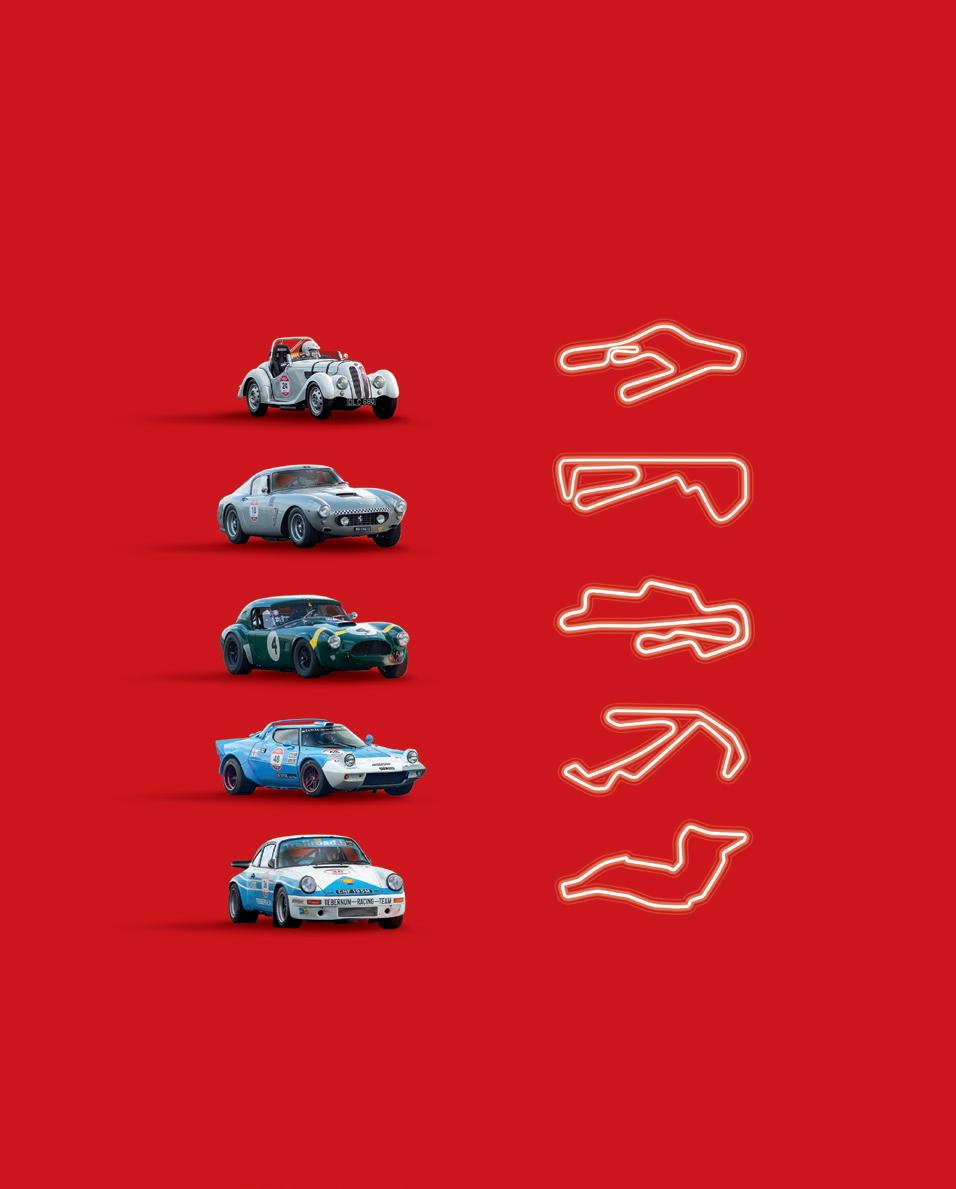
A special edition
5 days
5 circuits
10 special stages on closed roads
100 cars from 1919 until 1981
From Rome to Modena
On Italy’s most scenic roads
Competition and Regularity sections
Top-tier hospitality
dropping into a cylinder on the warm-up lap –and Jack Brabham’s nimbler, rear-engined Cooper on a damp track, Moss sets fastest lap and makes a late pass for third. Vanwalls score a 1-2: more British F1 promise.
18 Practice for Goodwood Nine Hours: Moss’s Porsche 550 is over-geared.
19 He qualifies P10: the fastest 1.5-litre.
20 His seven-lap class lead after seven hours – 237 laps – evaporates when he T-bones a Cooper-Bristol spinning on oil.
21 The original date for the Swiss GP: cancelled.
22 Moss tests a variety of W 196s on Monza’s newly banked, very bumpy oval. Both different nose configurations and an air brake are tried – and rejected.
23 He collects more 250F bits from Modena – and arrives back in the UK to news that… 24 … Interpol is looking for Weston, now ‘missing’ for two weeks.
24-25 M-B continues its Monza test. A medium-wheelbase ‘streamliner’ – enveloping bodywork unused since September 1954 – is deemed best suited.
25 Moss traces Weston to Prince Bira’s home in southern France.
26 Moss’s damaged SL unavailable for Oulton Park, he practices in a Jaguar D-type – and hates it. But he quite likes his Standard Ten. He spends the evening surfing – on the River Dee.
27 He finishes fifth in the Sporting Life Trophy saloon car race, beaten in its 1100cc class by the DKW of future Aston Martin/Vanwall team-mate Tony Brooks. For the Daily Herald Trophy sports car race, he settles for a Connaught ALSR. He starts last, not having practised in it, and finishes seventh overall, winning the 1500cc class.
2 Moss is fastest in practice for Aintree’s Daily Telegraph Trophy.
3 He harries Reg Parnell’s Connaught for the lead until his tired 250F burns a piston after 12 laps.
5-6 M-B confusion at Monza: its long-wheelbase streamliner is now best on the bankings, which have been smoothed out. And Fangio has the only example available.
8 The first practice session for the Italian GP is restricted to the oval section of the circuit. Later on, Moss is 4.6sec slower than Fangio over its full layout.
8-10 Stuttgart scrambles to configure Moss’s preferred specification of W 196 from the Formule Libre Buenos Aires GP winner – and rushes it to Monza overnight on its 110mph single-car transporter.
10 Rain delays final practice. Moss is fastest in his new car – but is still 0.3sec off Fangio.
11 Starting P2, a stone shatters Moss’s aeroscreen on lap 19, when giving chase to championelect Fangio. Mechanics replace it in 1min 40sec. Moss is impressed. Resuming eighth, he
Moss: A Boy’s Own hero
‘Moss is leading approaching 30 laps when his 300 SLR’s rightrear tyre throws its tread at 130mph’
3 Moss completes his first lap of the 45-mile Piccolo Madonie circuit, in Kling’s 190 SL. He borrows Herrmann’s car for three more, the inexperienced Haynes scribbling notes based on Moss’s running commentary. Co-driver Peter Collins – on Moss’s recommendation – arrives.
4 Moss does three laps in a 300 SLR. Then shares a 220A with Collins for two more.
5-7 Rain. Flu. More practice laps in 190 SL and 220A – some with Haynes, some with Collins and some in the dark.
8 Mud. Moss crashes Uhlenhaut’s 300 SLR coupé. 11 300 SLR proves a handful on bumpy roads.
12 Practice is cancelled due to rain. The DaimlerBenz Board posts a letter to Neubauer: its gist – a total withdrawal from motor sport is imminent.
13 Moss is now happier with his 300 SLR on softer front dampers.
14 Two laps with Jenks in a 190 SL. Mud is everywhere. The organisers are persuaded to bring the start forward by two hours – to 7:00am – to avoid a night-time finish.
promptly sets the fastest lap (134.01mph). But piston failure halts his charge on lap 28.
15 Drivers complain of dangerously ‘slow traffic’ in practice for the RAC Tourist Trophy. Ulster’s Dundrod circuit is fast, rough and hemmed by high banks.
17 A second-lap pile-up on lap two claims Jim Mayers and Bill Smith. Another driver – Richard Manwaring – will be killed later. Behra loses an ear when his Maserati rolls. Moss is leading comfortably approaching 30 laps when his 300 SLR’s right-rear tyre throws its tread at 130mph. Torn bodywork is ripped away during a 2min pitstop. Co-driver Fitch sheds at least 10sec per lap – and Moss is raring to go again after just six. Inexorable in wet/dry conditions, he recovers from third place to retake the lead within 20 laps. Post-race celebrations include a cake for his 26th birthday; mum Aileen slices it on no. 0004’s scuttle.
18 Moss visits Behra in hospital. Again.
23 His Works 250F – the prelude to a Maserati deal for 1956 – qualifies second for Oulton Park’s Gold Cup. Hawthorn’s LanciaFerrari D50 is 0.2sec faster.
24 Moss grabs the lead on the opening lap and is unchallenged thereafter. He beats Hawthorn by 1min.
25 Another Riviera jolly, this time with best friend David Haynes. They fly to Le Touquet. Drive to Paris…
26 … and press on to Cannes. M-B, meanwhile, confirms its late entry for the Targa Florio.
27 Moss and Haynes collects their charter yacht in Juan-les-Pins.
28 A stormy fog rolls in during a scuba dive. Landlubber Haynes, increasingly queasy on deck, luckily spots Moss surface in the distance.
30 Neubauer summons Moss to Sicily.
16 Up at 5:00am for a 7:25am – plus 30sec –start. Moss breaks the lap record from a standing start – and leads by 5min after three laps. But he spins on the next, dropping 12ft into a field. Spectators heave bent but unbowed no. 0004 off a rock, up a 45º bank, back onto the road. This costs 12min. And that’s before Moss’s unbuckled helmet blows off: he brakes and reverses to retrieve it. A damage check extends a stop for fuel and tyres to 3min. Collins survives hitting a wall to regain the lead within four laps. Moss’s fivelap final stint includes the fastest (62.25mph). Their winning margin after almost ten hours is 4min 41sec. M-B’s 1-2 secures the World Sportscar Championship for the team. Neubauer receives the ‘final demand’.
17 Nallinger is adamant at a Dorchester Hotel reception that M-B will race in 1956.
22 But it’s all over. Moss, Fangio, Kling and Neubauer veil a W 196 with a white sheet on Daimler-Strasse, Untertürkheim. The Board had voted in February to cancel its F1 programme at the season’s end. Moss had been made aware of this in May. But the sports car simultaneous culling is a shock.
23 The original date for the Spanish GP: cancelled. Moss has flu. Again.
Successful by any measure, stressful in equal measure, Moss’s season with Mercedes-Benz alongside Fangio not only marks him as motor racing’s future star, but also prepares him for that crucial role. The survival and prospering – greatly to the British benefit – of a sport forced by its greatest tragedy to take a long, hard look at itself will become inextricably linked with his courageous speed on the track and fast-living lifestyle off it.
Oh boy, ‘The Boy’ has finally become a man. And just in time.



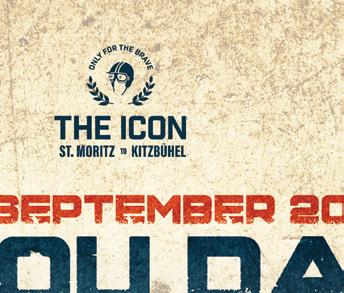

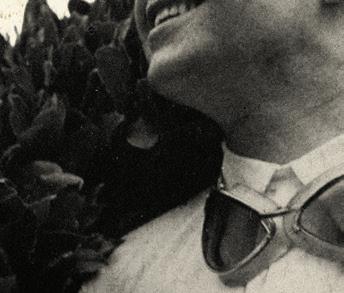
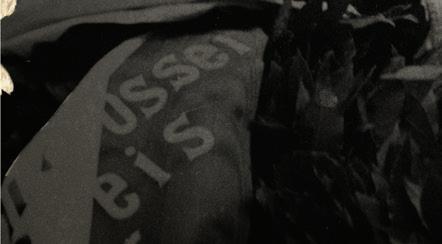

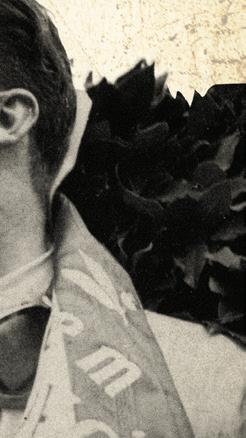
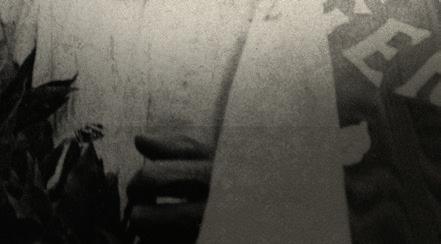


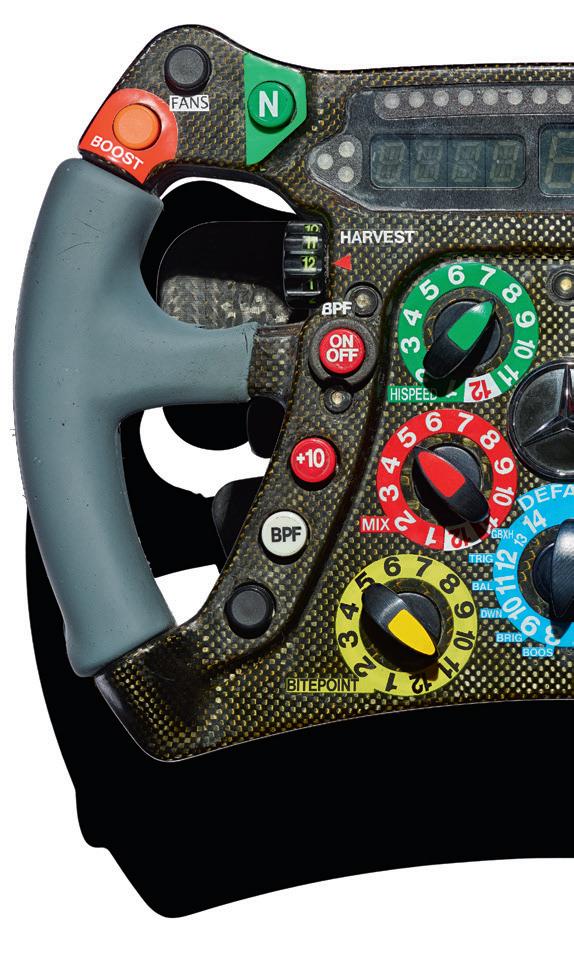
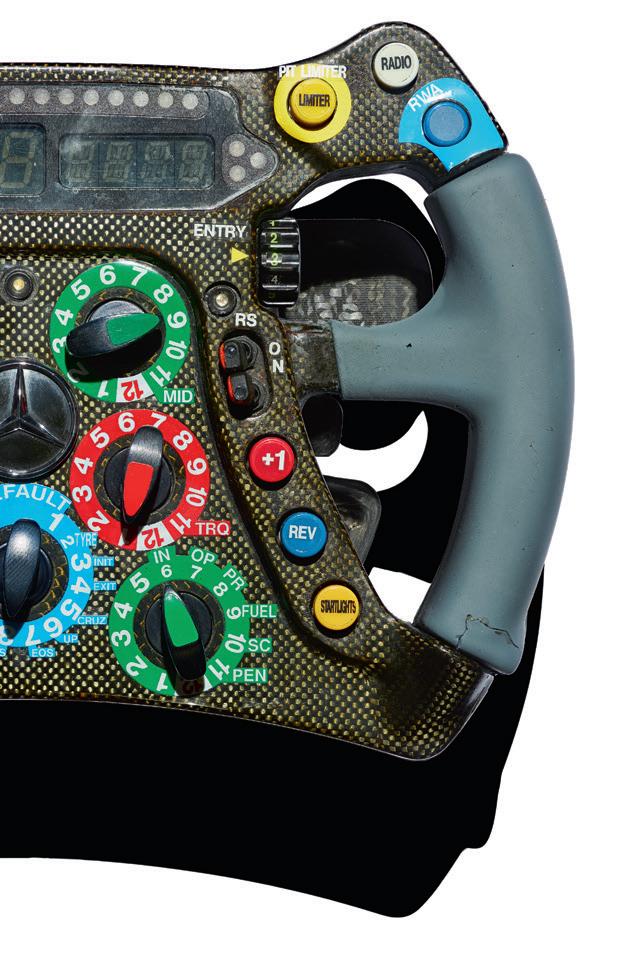
Photographywww.legacyandart.com
SINCE MERCEDES-BENZ’S RETURN TO Formula 1 as a full constructor in 2010, the team has amassed not only an impressive CV of results, including 120 race wins and 15 combined World Championships, but also more than one million parts, components and items of memorabilia, all stored at its heritage department at Brackley, UK.
Curator Toby Norrell accompanied us as we waded through the artefacts, telling stories of the tough moments, the technological successes and the excitement of victory, and helping to select some of the many significant parts that make up the Mercedes-AMG Petronas F1 Team’s history.
From glorious trophies to crash-damaged sidepods, each underlines the barely conceivable level of effort, ability, resource and determination that goes into contemporary grand prix racing.
The 2012 Chinese Grand Prix was Mercedes’ first Formula 1 victory since the 1955 Italian GP with Juan Manuel Fangio. Starting from pole position, Nico Rosberg became the first German driver to win a GP for a German manufacturer, when he led home the two McLarens of Jenson Button and Lewis Hamilton. This extravagant trophy is the original one given to team principal Norbert Haug on that day at the Shanghai International Circuit. From then until now, the Mercedes squad has secured an astonishing 119 more winners’ trophies.
Previous spread 2012 Michael Schumacher Steering Wheel
2012 saw Schuey compete in his last F1 season, in the Mercedes F1 W03. He took pole in Monaco on pace, but received a fiveplace grid penalty for causing an avoidable collision with Bruno Senna at the previous round in Barcelona. A final podium came in the European GP at Valencia, where he completed a World Championexclusive podium behind Fernando Alonso and Kimi Räikkonen. This intricate wheel was one of the last he used in F1.
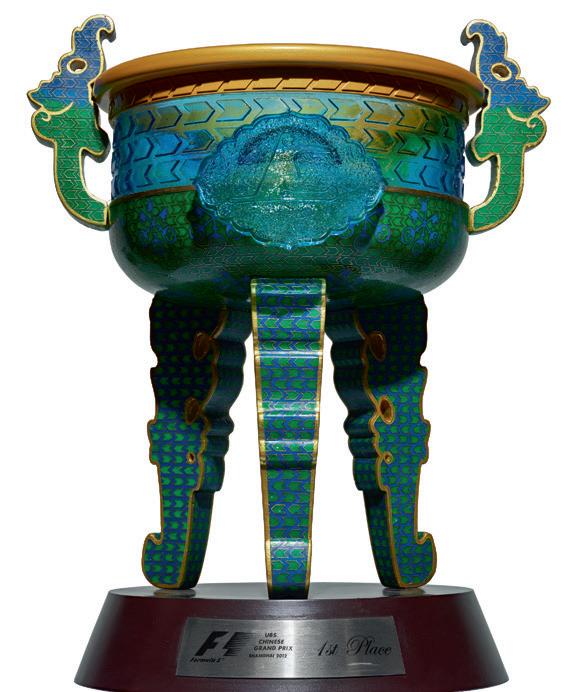
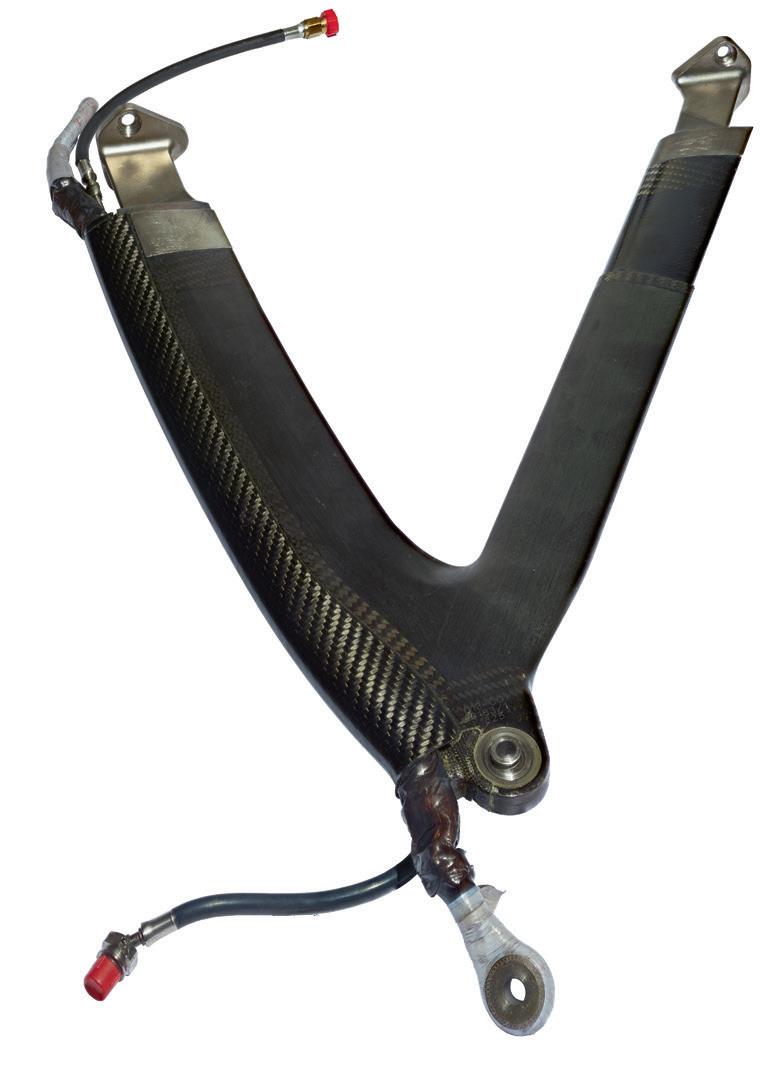
This carbonfibre-based top front wishbone was fitted to the F1 W04, the car that took Mercedes to three GP victories and six further podiums with Nico Rosberg and Lewis Hamilton, en route to second in the World Constructors’ Championship. These wishbones have built-in wheel tethers that stop the rim fully detaching in the event of a big crash. Tethers were first made mandatory in F1 in 1999, following a number of accidents in which wheels had become detached and, sadly, in some instances hit marshals or even spectators.
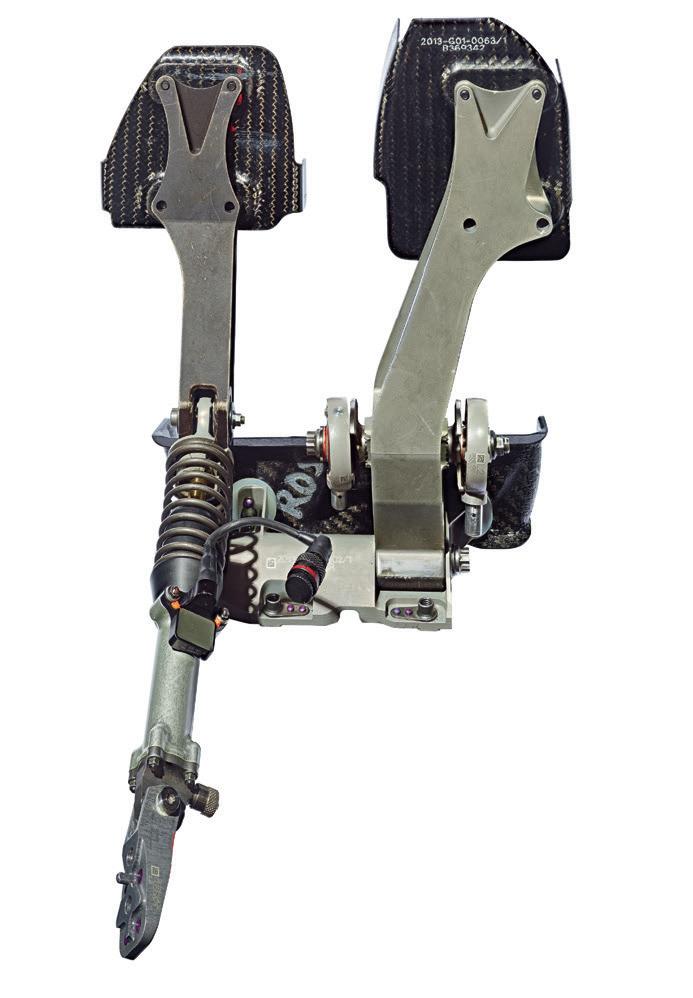
This pedal assembly was used by Nico Rosberg in the 2013 season while driving the F1 W04. In this year Nico famously won the Monaco GP in a dominant display from pole position – in doing so emulating his father Keke, who’d won it 30 years previously almost to the day. Each driver has a preferred pedal set-up, and these are a bespoke unit for Nico. Effective ‘walls’ around the edges stop one foot drifting across to the other pedal, and thus show that Rosberg was using his left foot to brake and his right foot for throttle application.
On modern-day Formula 1 cars, the clutch is hand-operated via the steering wheel.

Lewis Hamilton used this steering wheel throughout 2014, a year in which he guided his Mercedes F1 W05 to 11 race victories and his first World Championship for the team. The wheel was an innovative design and the first with a fully built-in display, which gave the driver more information in the cockpit than ever before.
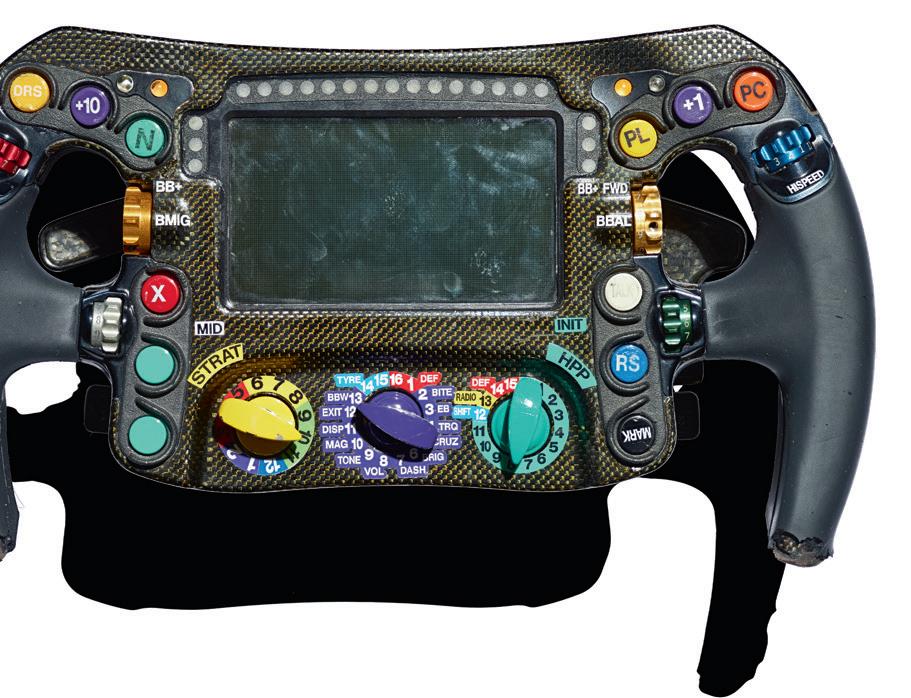
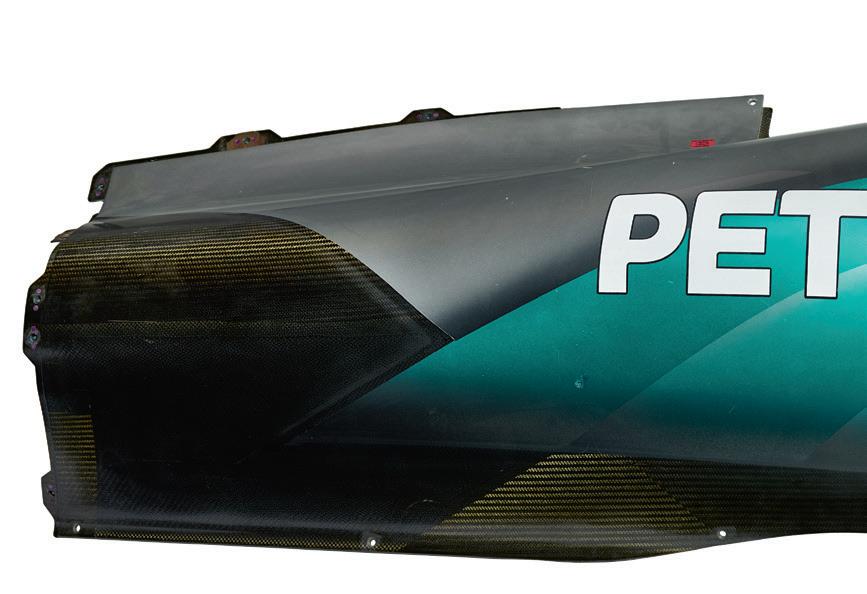
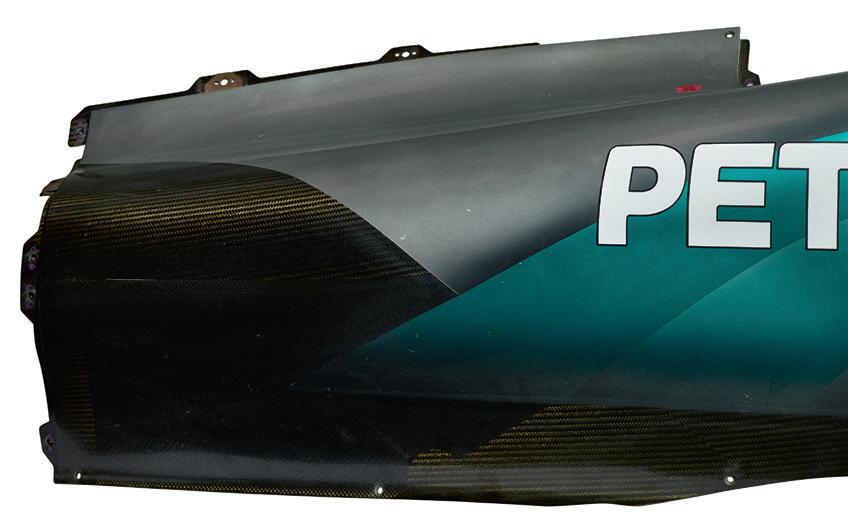
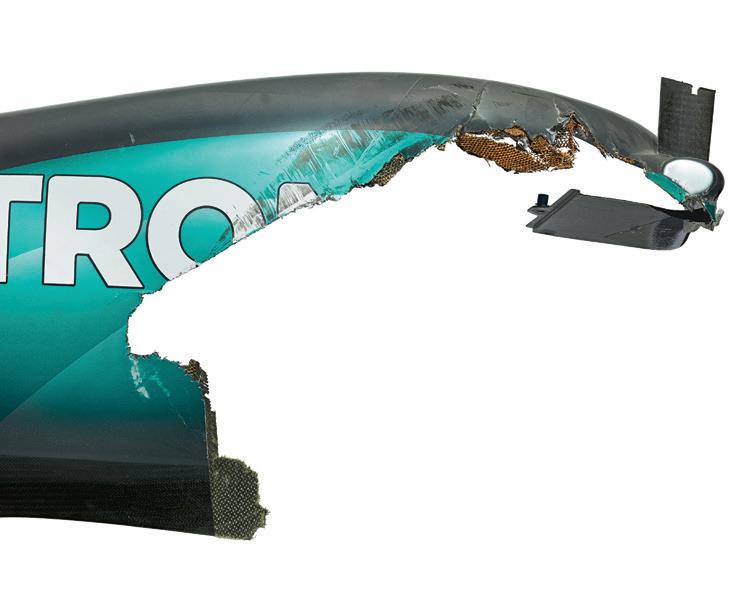
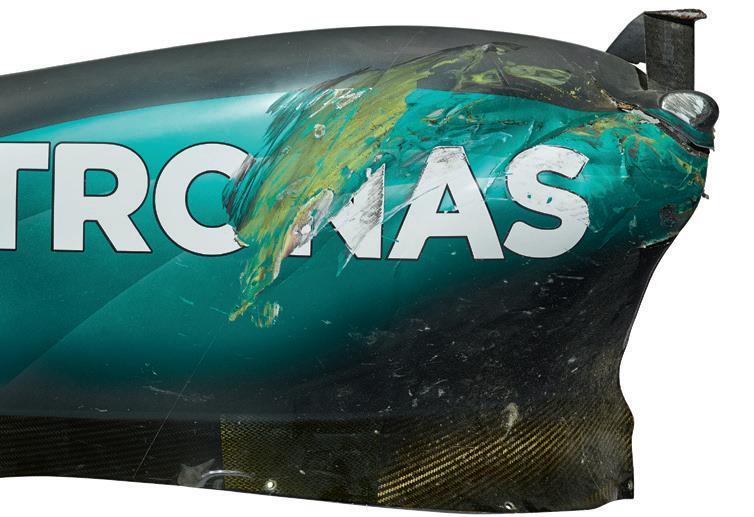
Nico Rosberg won the first four races of 2016, and arrived in Barcelona for round five with a commanding lead in the World Championship. Tensions were high between him and teammate Lewis Hamilton as the pair started on the front row of the grid, with Hamilton on pole. Rosberg soon got around the outside of Lewis, yet going into turn three the Brit tried to take back the position but famously collided with his counterpart. The accident took them both out of the race – and the blame game started. Rosberg remonstrated: “It was your part, too – you moved inside. Why didn’t you leave room?” Hamilton’s response: “Why should I – I want to win the race,” as was expected of the reigning World Champion. Their retirement opened the door for a new victor in F1 that day, with Max Verstappen taking his maiden win. These sidepods are from that infamous crash, complete with accident damage, Pirelli rubber and Catalunyan gravel rash. In the archives we also saw the notes from the post-race engineering report, which show Hamilton didn’t turn up to the meeting and Rosberg had little to say. Alongside the Race Comments section, the engineer has simply written: “See social media.”
This 2016 front axle assembly is off a Mercedes F1 W07, a car in which Lewis Hamilton and Nico Rosberg between them won a record-breaking 19 of the season’s 21 races. The 765 points the duo scored equated to nearly double that of secondplaced Red Bull. The team suffered only three retirements during the season, one of which was the infamous double whammy when both drivers dramatically crashed on lap one in Spain (see previous page).
Having crossed the line to win his sole World Championship in Abu Dhabi, the first thing Rosberg would have seen was this celebratory message on his pit board, subsequently given to him by his team. The Rosbergs became the second father-son F1 World Champions after Damon and Graham Hill – and Nico promptly retired.
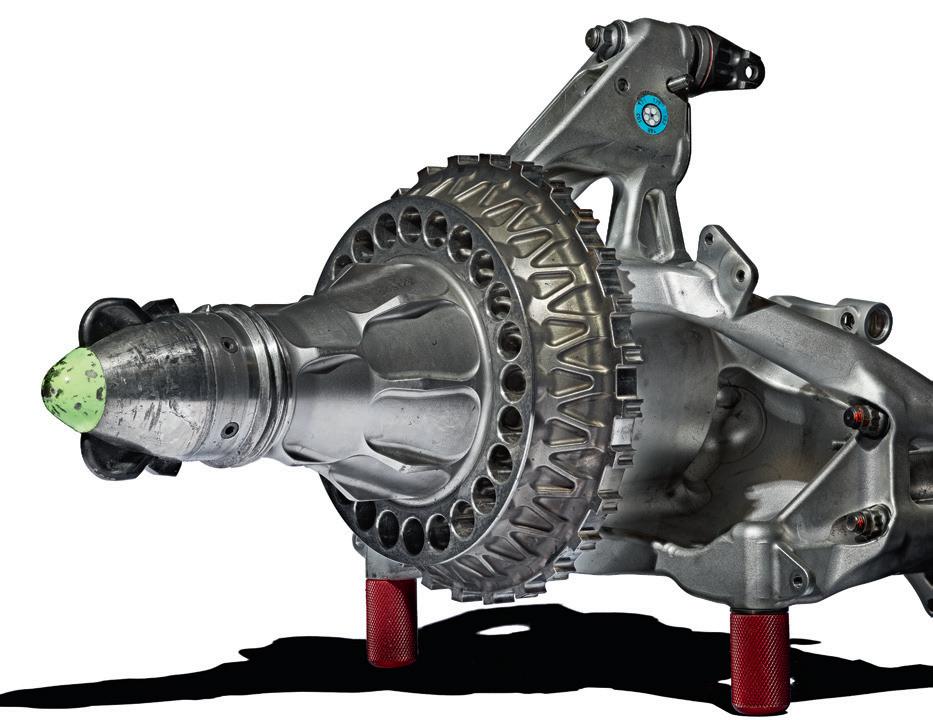

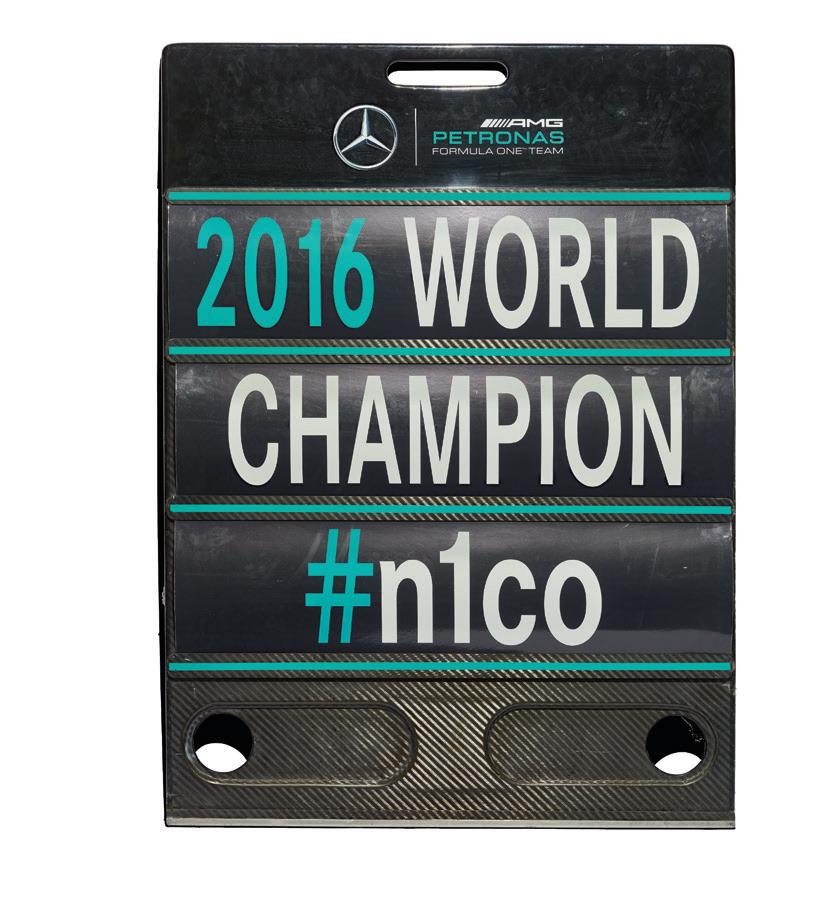
Fabricated to sit within the tight packaging of the confines of the engine cover, this manifold is an engineering work of art. Manufactured from superalloy Inconel to withstand high temperatures, it is not only efficient to handle its extreme environment but also super-lightweight. With the IP still relevant, we can’t tell you more – but rest assured it doesn’t need much more than a finger to lift it.
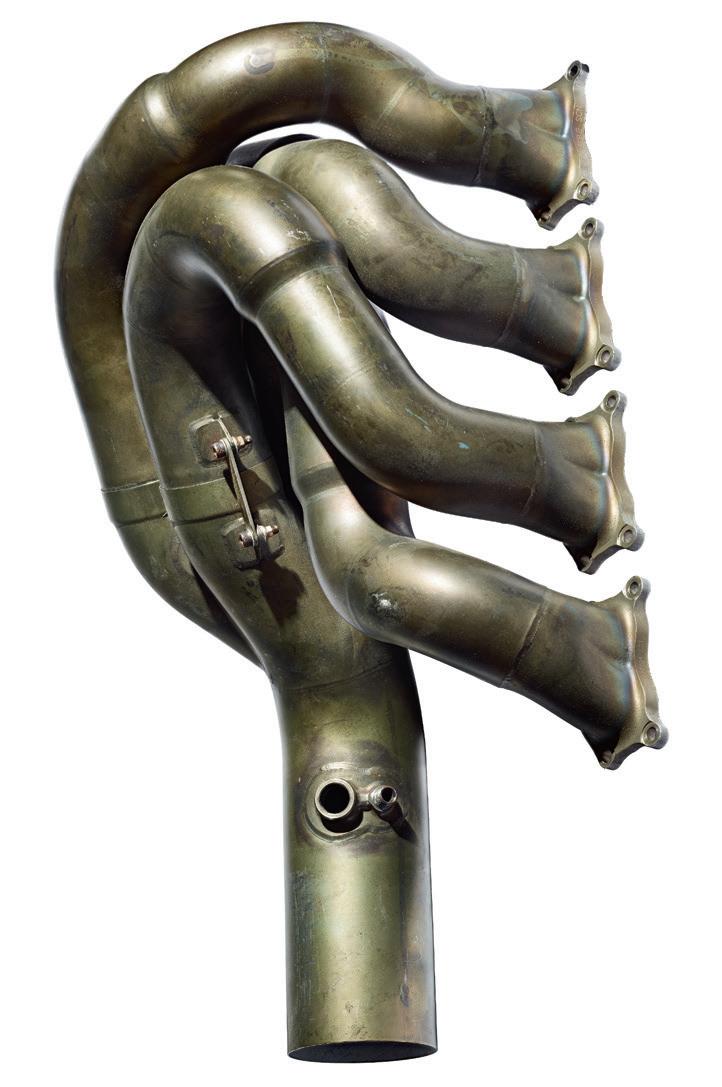
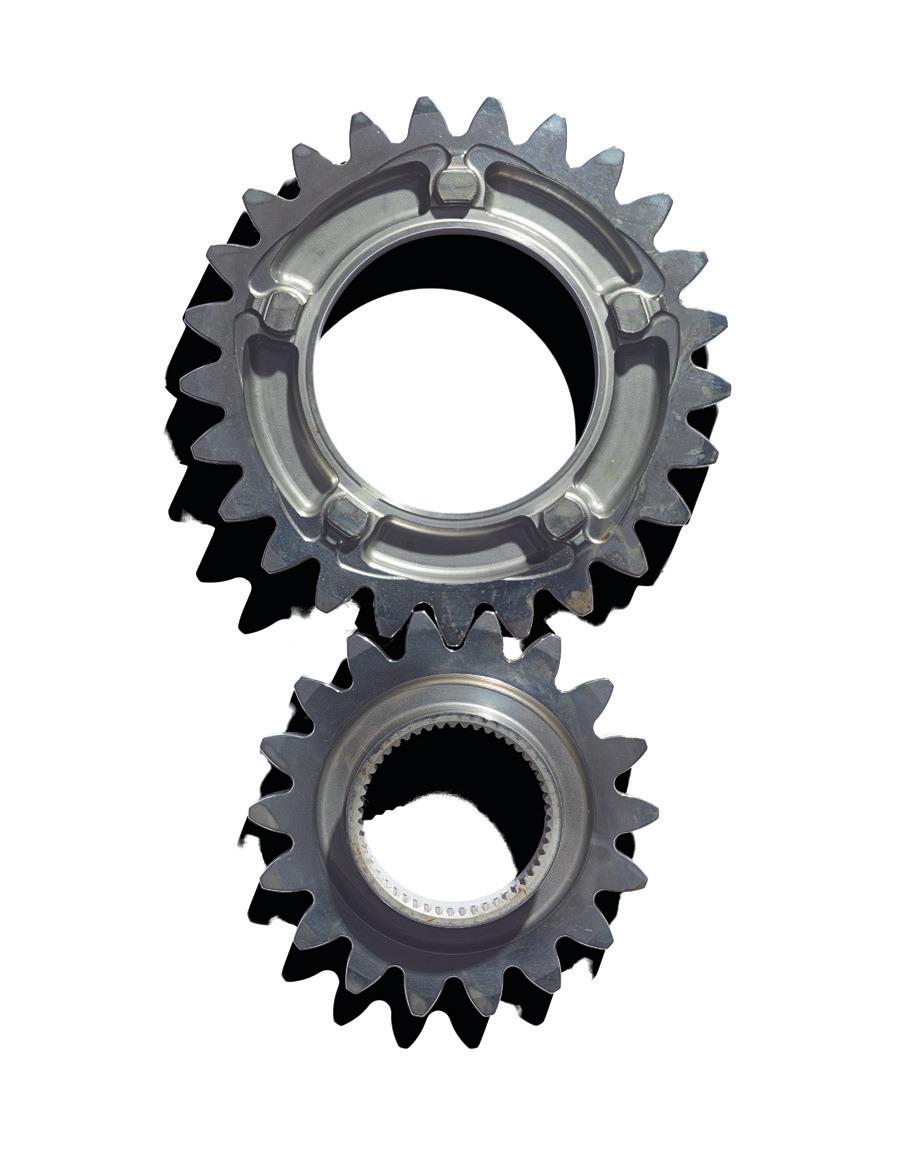
This ratio set was used in 2017, a year in which Mercedes suffered ’boxreliability issues. In a bid to best Ferrari with a seamless-shift system, boss Toto Wolff said: “It’s better for the sport that Ferrari is part of the mix now, but we’re pushing so hard. And by keeping the development curve steep, you get setbacks.” Despite this, Hamilton beat Vettel to the drivers’ title and Mercedes got its fourth consecutive constructors’ win.
The 2021 Abu Dhabi Grand Prix will go down in history as one of the most controversial of all time. Without getting into the politics of what happened that day, we can talk about the gruelling season that Max Verstappen and Lewis Hamilton had, battling for that Championship victory. Hamilton used this Puma race suit in Abu Dhabi, when it came within a few laps of being an eight-timeChampionship-winning piece of memorabilia. History, however, would dictate otherwise – and the feelings the British driver must have had while wearing it would have been among some of the most emotional of his whole career.
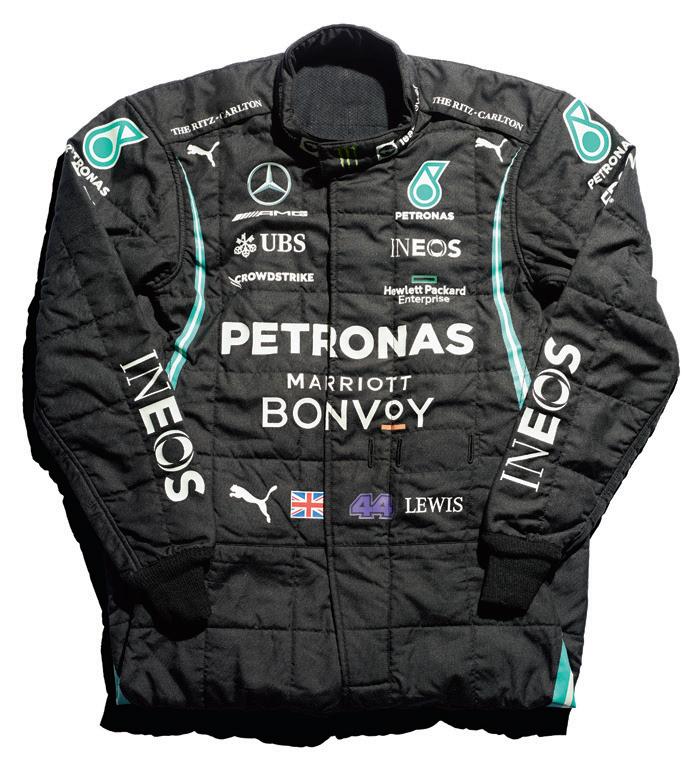

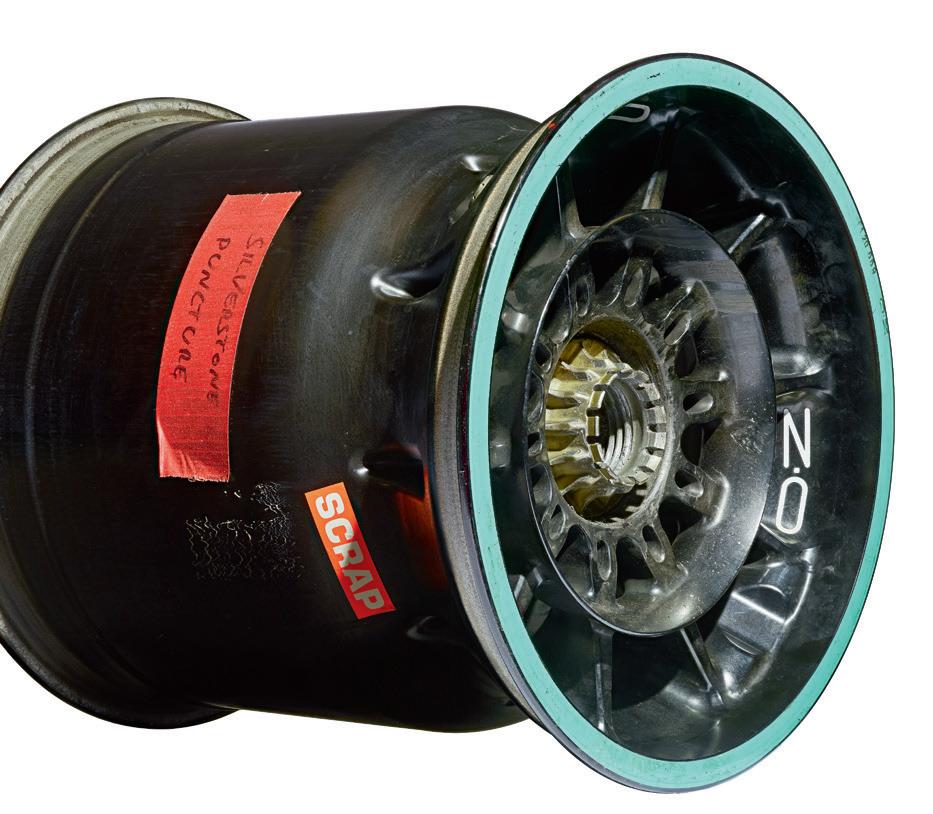
Hamilton famously won the 2020 British Grand Prix on three wheels, after his front left tyre suffered a puncture in his final lap. Having been warned about a potential for delamination, Lewis’ luck ran out at Woodcote corner – yet with a 30-second lead on Verstappen at the point of failure, he managed to hold on at the line to secure his seventh home victory. Marked ‘Scrap’, the affected OZ rim sits in the Mercedes Heritage Archive, but the offending tyre went back to Pirelli for testing following a bout of failures suffered in that memorable race.
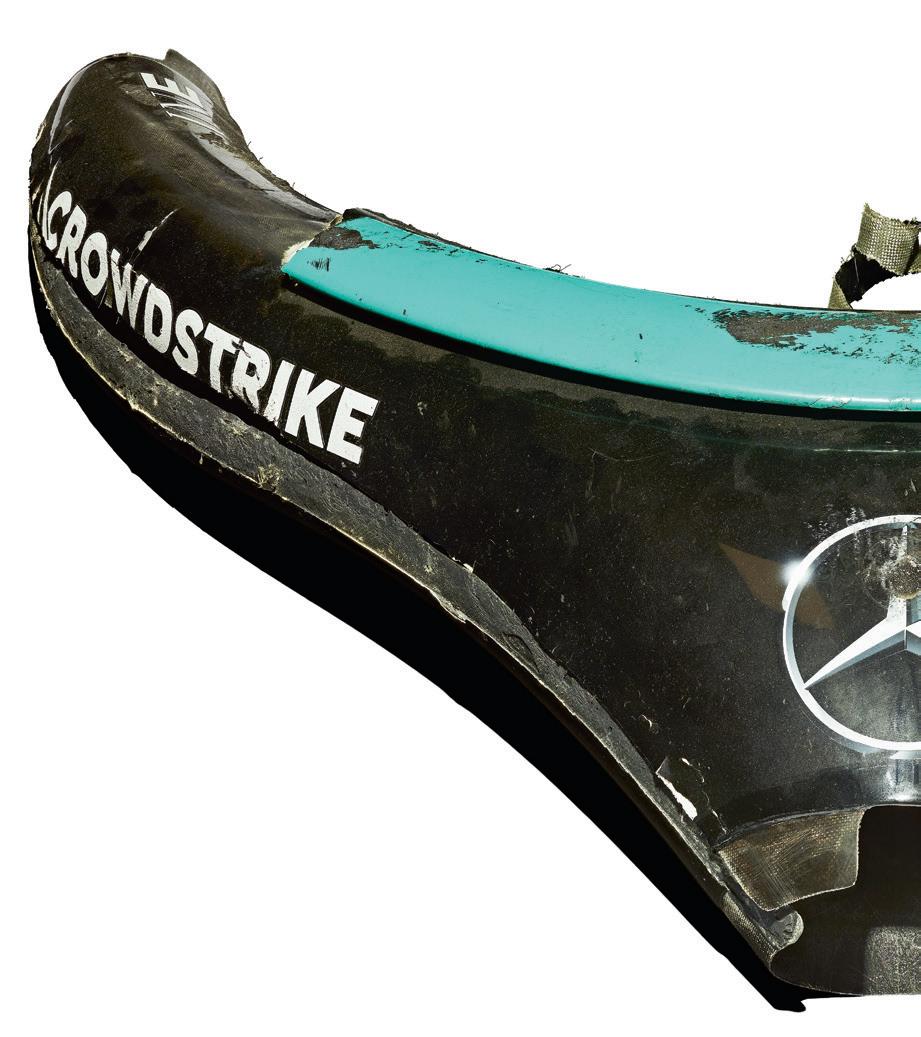
In 2018, Formula 1 introduced the ‘halo’ as part of its everevolving push for safety. While initially quite controversial, with purists saying it ruined the look of single-seat racing cars, it quickly became accepted – and its role in protecting drivers since has been invaluable, with lives undoubtedly saved as a result. One memorable accident in which the halo acted as protection for the driver who sat beneath it was at the 2021 Italian Grand Prix at Monza, where Max Verstappen famously ended up on top of Lewis Hamilton while the two battled for position going into the tight first chicane. This is the halo from that very day, and the huge impact it suffered is evident in the damage and cracks across the top, as well as the Pirelli rubber from Verstappen’s Red Bull.
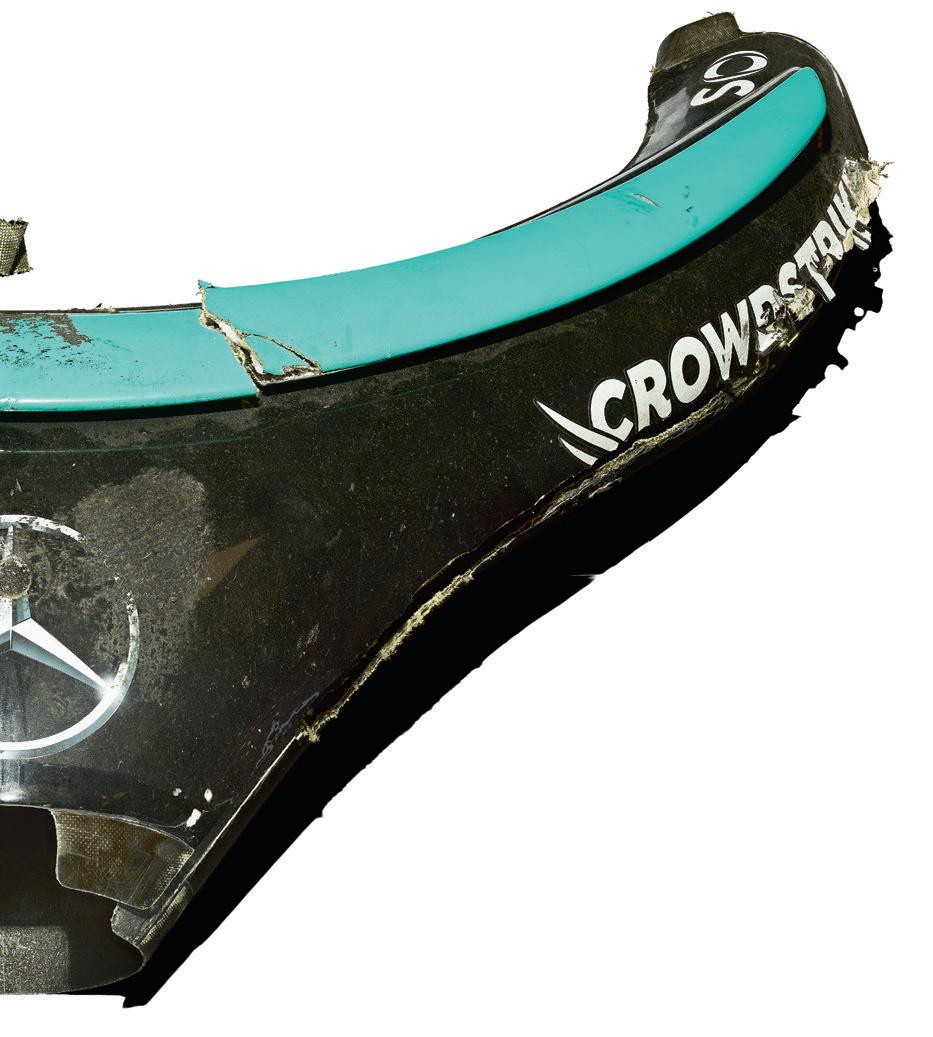
A Formula 1 car’s ability to come to a halt is one of the hardest things to convey in words. When a driver hits the brake pedal at 60mph, the car can stop within 25ft, generating in excess of 5G. These Brembo brake pads and disc are made of carbonfibre, which is lighter than a steel equivalent and also copes better with running at a high temperature.
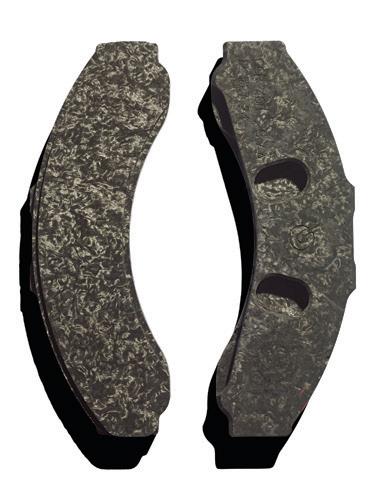
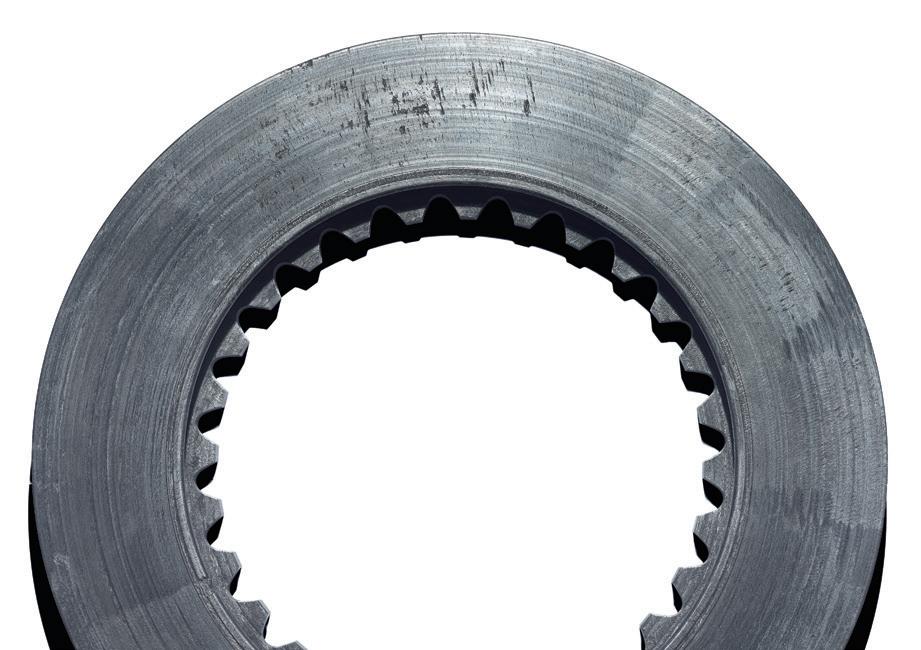
Explore the world from the driving seat, creating unforgettable adventures, incredible drives, fabulous hotels combined with great camaraderie, fun and lifelong memories.
GUIDED SELF-DRIVE ADVENTURES NAMIBIA
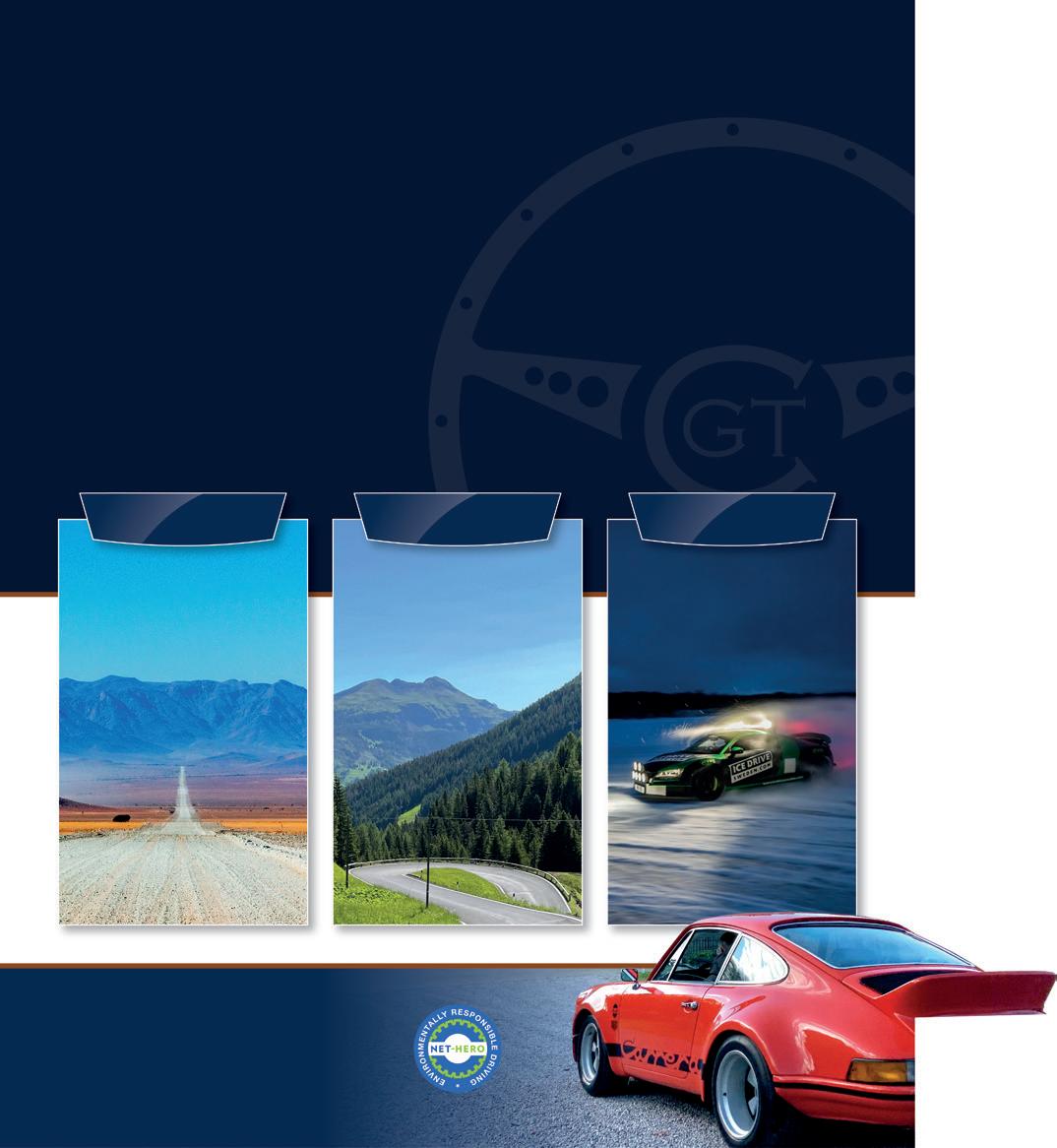
CLASSIC & SUPER CAR TOURS
MONACO HISTORIQUE ANGOULEME
LE MANS CLASSIC
EUROPEAN TOURS
UK TOURS
ICE DRIVING EXPERIENCE WITH ICE DRIVE SWEDEN
Mercedes Junior driver George Russell was doing everything he could in the 2021 season to land himself a seat in the factory squad for 2022. In a wet-dry edition of the Emilia Romagna Grand Prix at Imola, he was closing in on Valtteri Bottas in the Mercedes and attempted a pass – but they ended up having a high-speed accident at 190mph, which ultimately led to the race being redflagged. An angry Russell ran over to the stranded Finn and confronted him while he was still in the car, but he later issued a full apology. This nose section is from the accident that day, and it remains as it was when the car was delivered to Mercedes’ garage on the back of a low-loader after the race. Despite this faux pas Russell ultimately got the drive for Mercedes, and today he leads the team as its number-one driver.

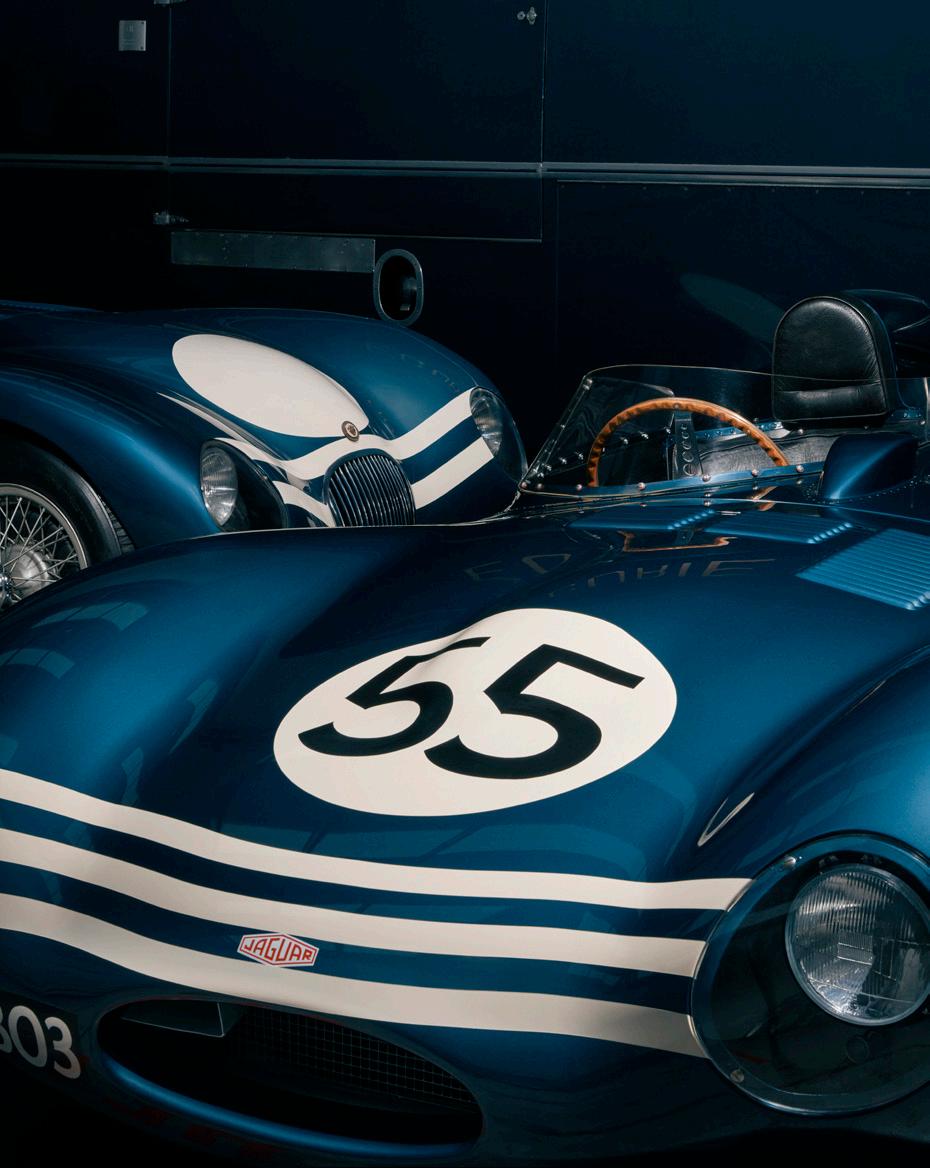

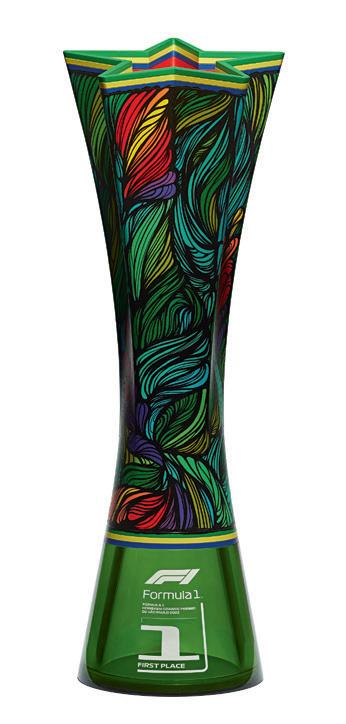

George Russell took his maiden Grand Prix win at Interlagos in the 2022 São Paulo Grand Prix ahead of team-mate Lewis Hamilton. This striking trophy, which is very much in a Brazilian style, was the one presented on that day, and to date it is among three winners’ trophies in Russell’s collection. In 2025 he takes on the mantle of being Mercedes team leader, Hamilton having now departed to Scuderia Ferrari.
Andrea
helmet brings us as up to date as possible. Produced in December 2024, it is the first helmet he had for the 2025 season as he becomes a Works Mercedes GP driver filling the shoes of Lewis Hamilton. His first race weekend in Australia proved that Mercedes’ faith in choosing a rookie for the role was the right one. A sensational drive in treacherous conditions from 16th on the grid saw him finish an astonishing fourth just behind Russell. At just 18, Antonelli and drivers such as him have the future of F1 firmly in their hands, ready to write the next chapter.


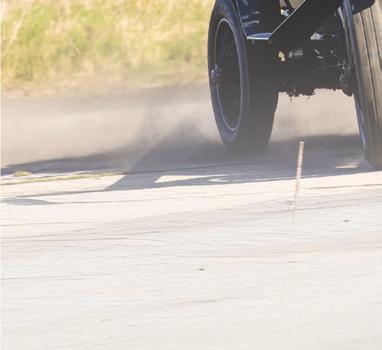


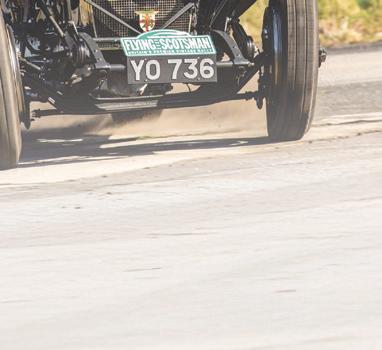



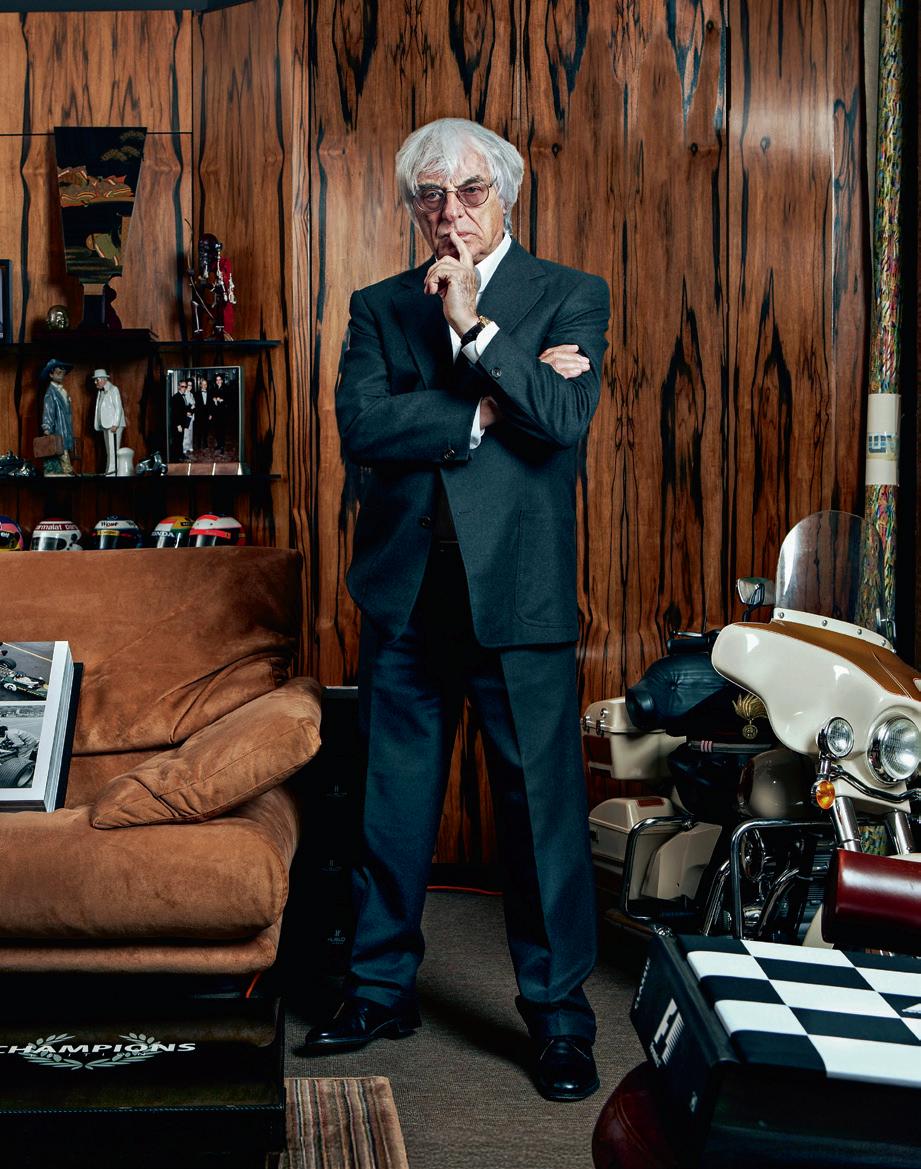
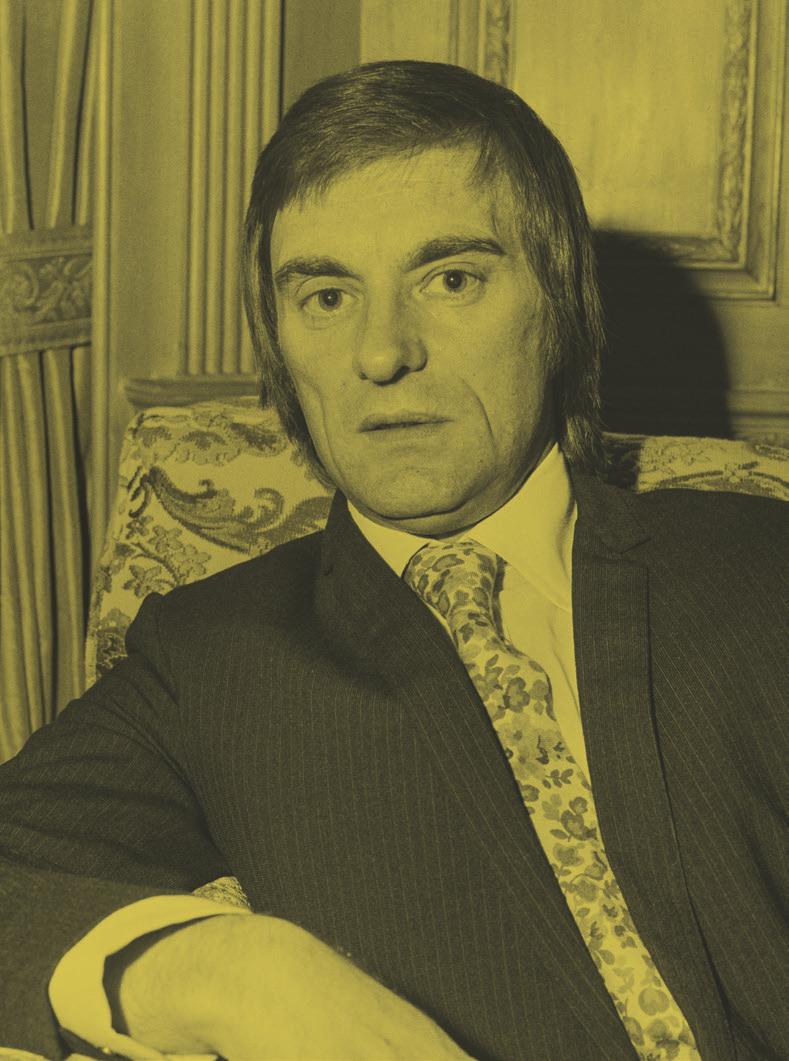
The powerbroker’s role in the making of modern Formula 1 is undisputed – as are his singular, often controversial,
means of achieving his goals
IN AN EXPANSIVE BUILDING IN BIGGIN Hill to the south of London sat the most significant collection of racing cars in the world. Numbering almost 70 in total and assembled over the better part of half a century, it represented and celebrated key moments in the history of Formula 1. It was owned by Bernie Ecclestone, a diminutive Brit who’d started his career selling second-hand motorcycles in London. By 2017, he’d risen to become the billionaire tsar of F1, and arguably the most powerful and influential figure in world motor sport. Impressive as Ecclestone’s professional success is, the way he achieved it was even more remarkable.
Now 94 years old, Bernie became one of the richest men in Britain, much of it built on handshake deals as he pieced together an empire by spotting opportunities others didn’t. He professionalised F1 and transformed it into a commercial powerhouse, but not without his share of controversy along the way. A shrewd businessman and a canny negotiator, Ecclestone is prepared to flirt with the law. Whether he has won or lost in any given scenario, his attention has always turned to the next big deal.
In the F1 paddock, he exuded an intimidating aura. His motorhome was an understated black number, decked out such that you couldn’t see in, and quietly referred to as ‘the Kremlin’ in deference to the dictatorial style. He was constantly flanked by Pasquale Lattuneddu, an Italian who joined Bernie in 1980 and rose to become the chief of operations of F1 but was also known as the ‘paddock policeman’. The pair were almost inseparable; for a journalist to get to Ecclestone, they must first navigate their way beyond Pasquale. If successful, the conversations were typically friendly enough.
Bernie understands the value of the media and knows how to use it to his advantage. Depending on what was happening, he would make comments designed to add pressure to negotiations or simply create controversy when the sport needed a few extra column inches. Sitdown, longer-form interviews were rare, but catch Ecclestone in the paddock and you never knew your luck. As a journalist, I knew he was always good for a headline on a slow news day.
Bernie cut his teeth as a dealer of used motorcycles and cars in London during the 1950s. He amassed a small fortune, buying out rivals as his empire expanded with impeccable premises and a clientele built from the Mayfair card tables he would frequent. His entry into motor sport was pragmatic. It was not born out of any great love or passion for the sport, but from the simple realisation that it would be good for business. Amid the vibrant British racing scene of the 1950s, it was a masterstroke that created relationships and opened doors.
In 1972, he bought the Brabham F1 team from Ron Tauranac for £100,000. Tauranac was not comfortable in the motor sport cabal, and he admitted decades later that he also couldn’t
justify the expense of operating an F1 team.
Discussions to acquire Brabham had begun as far back as 1970. Ecclestone and Jochen Rindt, whom he managed at the time, were interested in controlling their own destinies. It wasn’t their first foray into the murky world of team ownership, having briefly dipped a toe into the waters as early as 1968. Bernie himself had dabbled a decade before that, buying the remnants of Connaught for Stuart Lewis-Evans. He even raced with some success at lower levels, although he failed to qualify for the 1958 Monaco Grand Prix, his sole F1 appearance as a driver.
Under contract with Brabham in 1968, Rindt began casting around for his next move. He met with Max Mosley, a founding partner at March, who attempted to lure the ultra-fast Austrian to his all-new squad for 1970, but Rindt was dubious about the project’s credibility. When Ecclestone heard of the approach he reasoned the highly rated Alan Rees, the ‘AR’ in March, was looking to leave Cosworth as part of an all-new project. Bernie suggested to Rindt that they join forces with Rees to effectively hijack what would become the March operation and transform it into a well funded one-car team. Only Jochen wasn’t sold, and elected to remain with Lotus for 1970, having first signed with the Colin Chapman-led outfit in 1969.
Fast but fragile, Rindt was never comfortable at Lotus, which led him and Ecclestone to revisit the notion of team ownership through conversations with Tauranac, who was by then the sole owner of Brabham. Before anything came of the discussions, Rindt tragically lost his life at the 1970 Italian Grand Prix to become the only posthumous World Champion. Bernie pushed on and, together with Tauranac, arrived at a sum of £130,500 in early 1971, a figure based on the value of the organisation’s assets: a Brabham BT34, two BT33s, six Ford Cosworth DFV engines and three Hewland gearboxes.
“Then, just before we were ready to do the deal, Bernie phoned and offered me £100,000 instead,” Tauranac said in his biography, Brabham Ralt Honda. “I was caught off guard, and accepted.” It was classic Ecclestone. Where Tauranac had considered the deal all but done, in Bernie’s eyes nothing had been agreed, and the £130,500 figure was all part of the negotiations.
Tauranac stayed on as chief designer for a time, but eventually Ecclestone cleaned house and appointed a young South African, Gordon Murray, in his place. The decision was a gamble. Murray was unproven in F1, and while he went on to achieve great things in the sport, there was no certainty of that in the early 1970s. Yet Bernie liked what he saw and took a punt.
Gordon was a junior designer at Brabham, but he was promoted as the business model was completely reinvented under Ecclestone’s control. Until 1973, Brabham built and sold customer cars across an array of categories – a mildly lucrative but slow business. That didn’t
appeal to Bernie, and so he trimmed the fat. It resulted in Murray being promoted to the top job as Ecclestone sacked his other four designers, and with good reason; Brabham scored only five points in 1971 and seven the next year. It would have been ruinous to carry on as it had been.
While transforming Brabham as a racing organisation, Bernie was gradually doing the same to F1. Buying the team entitled him to a seat at the table when the Formula One Constructors’ Association met, and it was there that his business acumen set him apart. While F1 raced internationally, it was in many respects an amateur competition in the 1960s and early 1970s, with teams scratching around for the money simply to stay afloat. There was no organisation among competitors, and no economies of scale. Instead, they squabbled among themselves off-track as much as on it.
Sensing his opportunity, Ecclestone stepped in, streamlining logistics and negotiating appearance money for the British teams, in exchange for an eight percent cut. He went so far as to guarantee every team he represented would be paid in full. His fellow team principals agreed – after all, it was one less thing they needed to worry about, and who cared about eight percent? Bernie was handed the keys to the F1 kingdom. When he had bought Brabham, the pot on offer from promoters was a paltry £10,000 per event. By 1978, Ecclestone had grown it to £190,000. It was during this period that he encountered Mosley. Their paths had crossed as Bernie and Rindt mulled over the prospect of starting a new operation with Alan Rees, but they only became familiar with one another once Ecclestone owned Brabham. Max, a suave Englishman, became president of the FIA, motor sport’s world governing body, in the 1990s, but during the 1970s he was busy running March while working hand in glove with Bernie in transforming F1 into a professional global sport.
They were the perfect duo, with Mosley’s prim and proper demeanour juxtaposing Ecclestone, who pulled every trick in the book – and quite a few more – during negotiations. The ex-secondhand car salesman would abruptly stand during meetings to straighten picture frames, rifle through wastepaper baskets to read discarded notes during a negotiation, or schedule flights inconveniently close to meetings to ramp up the pressure. Bernie is a master negotiator and, as his acquisition of Brabham demonstrated, unafraid of taking a calculated risk. It would prove a useful skill during a turbulent period in the late 1970s, spilling over into the 1980s when war with the governing body fed into an industrial dispute with F1’s core attraction. In early 1982, Ecclestone was prepared to sack Nelson Piquet, his lead driver at Brabham and the man who had delivered his first World Championship the year before. Ahead of the
‘Ecclestone understands the value of the media and knows how to use it to his advantage’
season, FISA, the FIA’s sporting arm at the time, which oversaw the World Championship, moved to introduce a Super Licence for drivers. It was a one-page document that effectively transformed the driver into a commodity owned by their respective team for the duration of their contract. The concept emerged from the ashes of the bitter FISA-FOCA war that had been resolved only a year earlier, where Ecclestone had gone toe-to-toe with F1’s regulator and, for all intents and purposes, won. That led to a modicum of cooperation between Bernie and FISA, resulting in the Super Licence, a play that attempted to introduce a football-style transfer window into F1. That was a step too far for the drivers who took industrial action in the days immediately prior to the South African Grand Prix. Opening practice was abandoned as names including Piquet and his Brabham team-mate Riccardo Patrese holed up at a nearby hotel in protest. A truce of sorts was reached the following morning, and the drivers returned to the Kyalami track for practice. However, Ecclestone insisted Nelson needed medical clearance, reasoning that since the latter had been up all night on strike with the other
drivers, he was in no fit state to get behind the wheel. Bernie sent his star driver to Professor Sid Watkins, who duly instructed the Brazilian to rest. “It’s not a punishment,” Ecclestone insisted at the time. “I’m worried about his safety. He hasn’t slept all night and might not be fit to drive.”
To further antagonise Piquet, Bernie had stripped his number from the cars, and the three Brabhams on hand all carried team-mate Patrese’s number, the Italian seemingly not a safety concern. While Nelson was made to sweat, he ultimately set the second-fastest time in qualifying before spinning off in the race itself. Put to Ecclestone decades later that he had threatened to fire Piquet over the matter, he told journalist Dieter Rencken in a menacing tone: “I don’t threaten; I do.” Bernie had been bluffing but, as with any good poker player, he knew when to quietly fold.
It’s never what Ecclestone says, but what he leaves unsaid. By 1994, he’d strengthened his control of the commercial side of the sport by transferring the commercial rights from FOCA into his own company, Formula One Management. The following year, he secured the broadcast rights to all FIA Championships in a deal that would catch the eye of the European Commission (not for the last time) and eventually prompt a dramatic reworking of F1’s commercial landscape towards the end of the decade.
Ecclestone amassed the power thanks in no small part to Mosley’s role as president of the FIA, a role to which he was elected in 1993. That prompted a significant shake-up in the regulations in an effort to spice up F1. In many ways the sport had become stagnant, with technologically advanced cars leading to dull racing. To address that, electronic driver aids were banned and refuelling was reintroduced. Not all agreed with
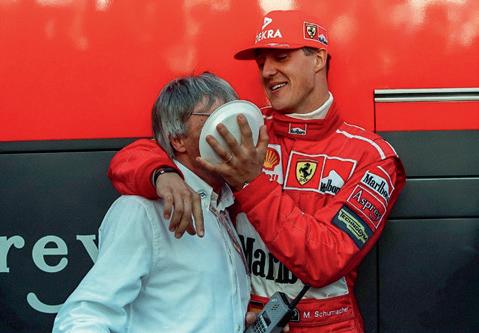
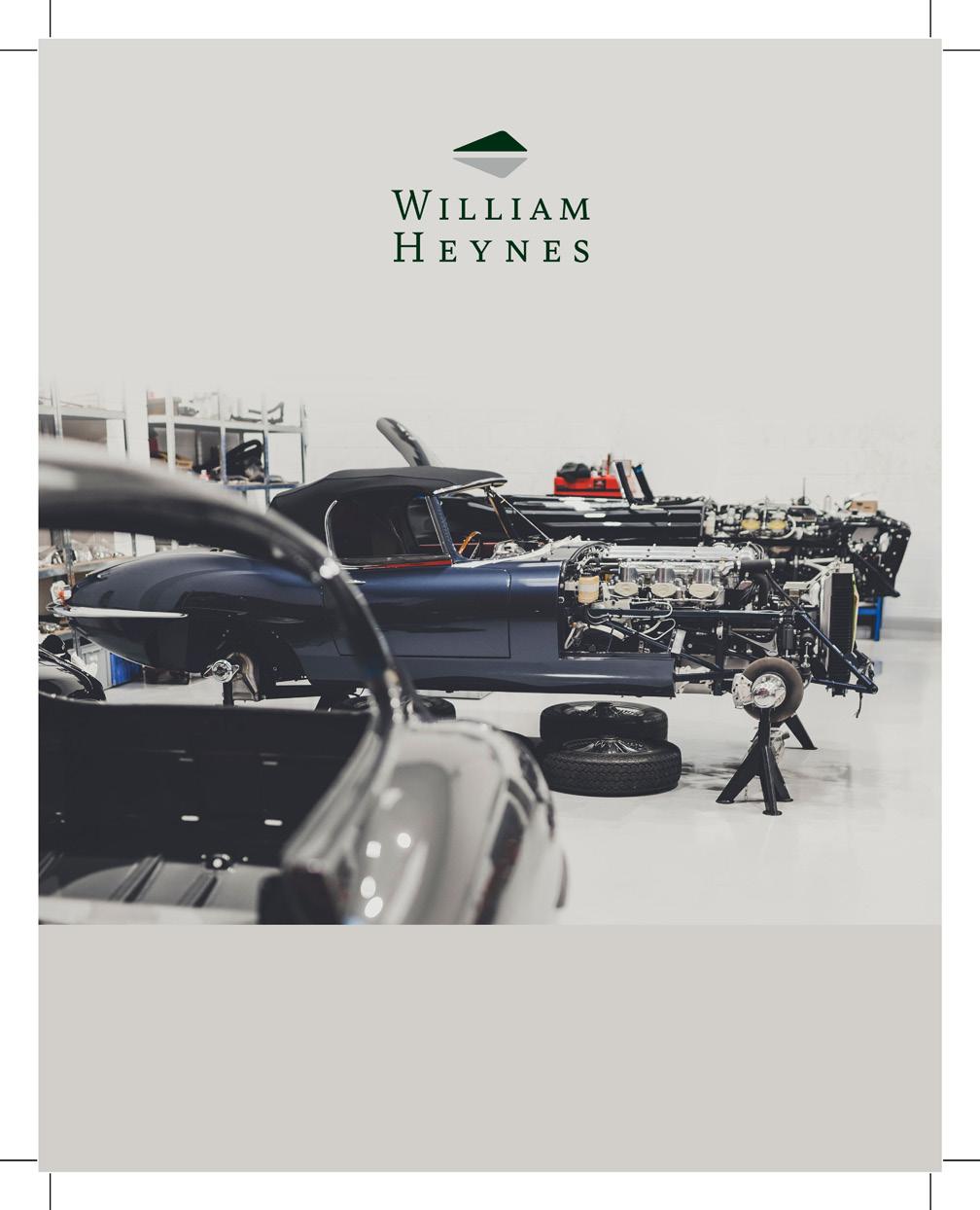

the move, and Arrows boss Jackie Oliver was less than thrilled by the refuelling concept and complained about the cost of the equipment needed. In response, Ecclestone generously offered to supply the refuelling rigs. Soon after, an invoice was delivered; Bernie had offered to supply them, not pay for them.
Oliver wasn’t the only team boss Ecclestone got the better of, with McLaren’s Ron Dennis another to be left red-faced by the F1 supremo. At a meeting of the sport’s key movers and shakers in 2008, Bernie dropped a draft copy of what became the 2010 edition of the Concorde Agreement in front of each team boss. The Concorde Agreement is a secretive document that outlines the commercial side of F1, and in many regards is Ecclestone’s pièce de résistance.
At the time, there was talk of a breakaway series amid general discontent at the disparity between the money being paid to the team versus what was being funnelled out of the sport – a significant chunk of which found its way into various trust accounts linked to Bernie. The draft was not well received, and Dennis insisted it would not be signed. In the back and forth that followed, the McLaren boss was goaded into a $5000 wager with Ecclestone, who insisted the document would be signed without change. No sooner had the pair shaken hands on the bet than Bernie scrawled his signature across his own copy and demanded Dennis pay up. The document, after all, had been signed.
The Concorde Agreement is now fundamental to F1. It underpins the relationship between the commercial rights holder, the teams and its regulator. It came into being in 1981 as a means of ending the civil war that threatened to tear the sport apart and, in the decades since, transformed to define key elements such as how the regulations are drawn up, governance processes, contract recognition and appeals. One of the most crucial elements of the document is that the commercial rights holder has the right to draw up the calendar. With roughly one-third of F1’s revenue generated from hosting fees, by controlling the calendar Ecclestone could dictate not only where and when F1 raced, but how much each promoter paid for the privilege.
That also meant that when restrictions on tobacco advertising closed in during the late 1990s, Bernie could move events where there were no such bans. “If we have to move races away from Europe, then F1 would continue,” he told The Times in 1997. “I have been moving east for years because I think it is the biggest growth area for us and, by coincidence, it happens it is the biggest growth area for tobacco.”
The loss of traditional events meant little, he argued, and he suggested that new events would become traditional in time. In truth, F1 teams could ill afford to lose tobacco money, and Ecclestone knew it. Ahead of the UK election in
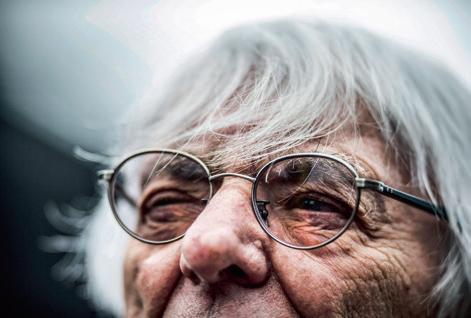
May 1997, he made a £1 million donation to the Labour Party, led at the time by Tony Blair. As the UK planned to join the EU on its broad banning of tobacco ads, Blair afforded F1 an exemption – there were potentially 50,000 motor sport industry jobs on the line, it was argued. Somehow, news of Ecclestone’s donation got out, and the red-faced Labour Party returned the money. F1 got its exemption, and Bernie got his cash back. Meanwhile, in Europe, a compromise was negotiated that saw overt tobacco advertising phased out of the sport. Despite the ban, tobacco money remains rife in F1 to this day. Ecclestone’s time at the top of the sport finally came to an end in early 2017, when Liberty Media acquired the commercial rights to F1 and the 87year-old was deemed surplus to requirements. For years he dodged questions about succession planning, even telling this writer in 2010 that he had “no idea” what would happen if he were struck down by lightning. “I keep out of the way of the storms,” he added. “If there’s a storm, I stay indoors.” In truth, he weathered many of them: from
‘Pure Bernie at play; a wily second-hand car salesman always looking for the next big deal’
war with the regulator to negotiating lucrative television deals that rocketed the sport’s global popularity, he survived EU investigations and escaped jail time for bribery and fraud. It’d been a turbulent ride that, in recent years, has brought about a softening of sorts, as though he has begun to accept his limited future and is looking to tie up any loose ends that may be left behind.
A phone call last October was evidence of that. “Hello. It’s Bernie Ecclestone. I believe you wanted to talk to me,” he enquired as I, midway through the post-dinner dishes, answered the phone. He’d called to help as I worked on a project that stretched back four decades, one that would be wholly incomplete without his input. We spoke for ten minutes, reminiscing before agreeing to remain in contact – and perhaps catch up at Qatar or Abu Dhabi at the end of the year.
Our paths didn’t cross at those events, but the channels of communication have remained open because the project – a passion project if truth be told – interested him and perhaps afforded another chance to reflect on his achievements as the F1 supremo, eight years on from handing over the reins. In the weeks that followed our phone call, Ecclestone took another step away from the world of F1 by selling his magnificent car collection – but not before touring it on film and sharing his memories of his 60 years in and around F1. The complete collection was bought by Mark Mateschitz, the 49 percent owner of the Red Bull energy drinks empire.
In many respects, the money was unimportant: Ecclestone has billions. It was instead a public acknowledgement of his own mortality, but there’s also an element of pure Bernie at play; a wily second-hand car salesman who’s always looking for the next big deal.











Car Rally | 1 - 5 September 2025
The Famous Scottish Malts has become a beloved tradition for both novice and experienced crews, blending the thrill of exhilarating driving routes with the allure of Scotland’s breathtaking landscapes and world-renowned distilleries. The Rally is set to begin and conclude at the prestigious Gleneagles Hotel, offering an unforgettable journey through Scotland, visiting no less than 12 distilleries.


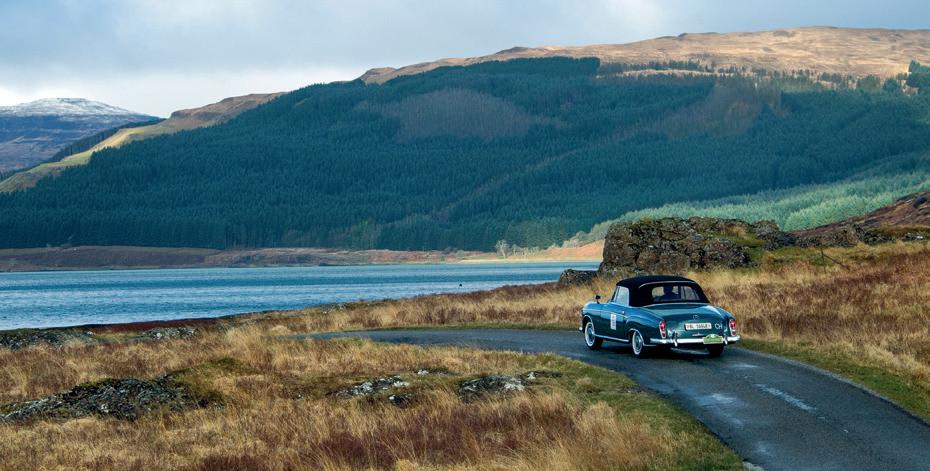











Barrister.
Racer.
Team owner. President.
Max Mosley took charge of every arena in which he placed himself – and he remained in control even at the very end. His legacy is complicated, but huge
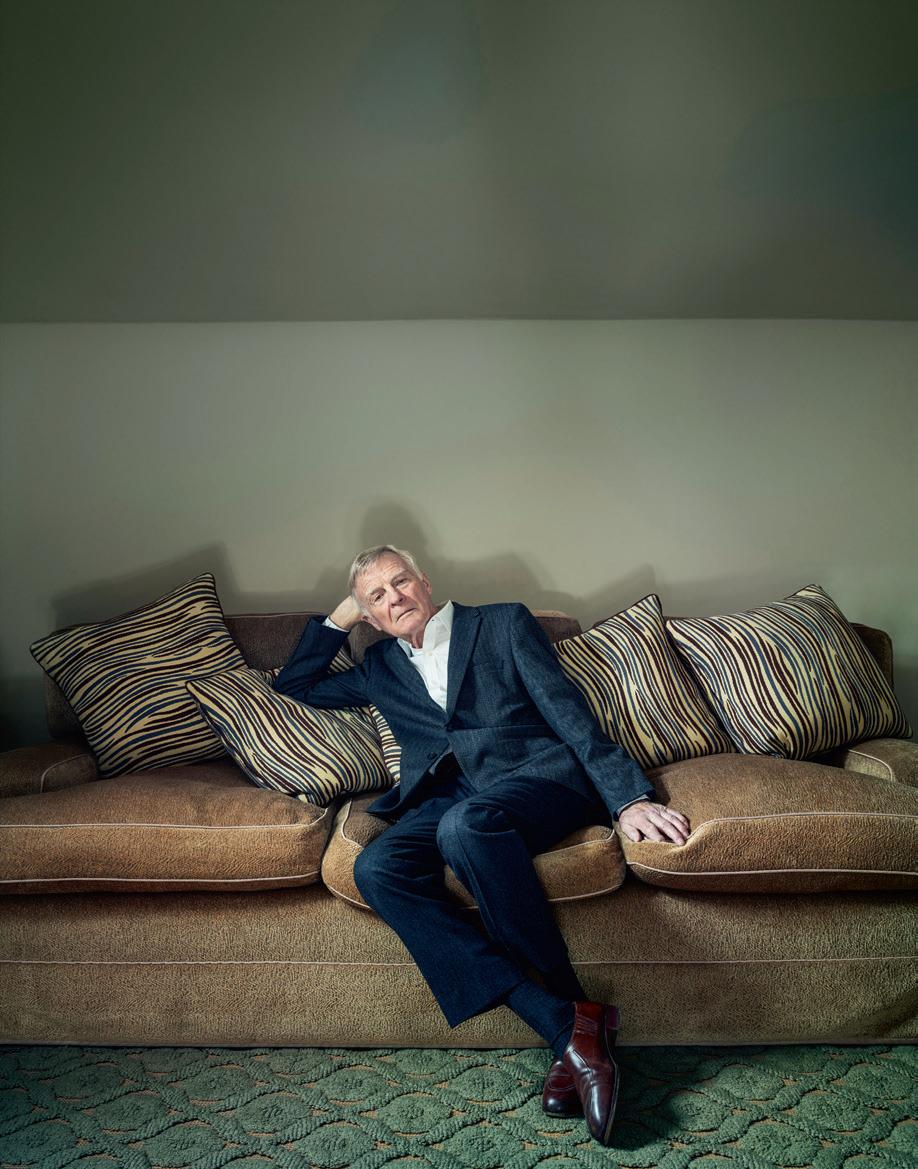
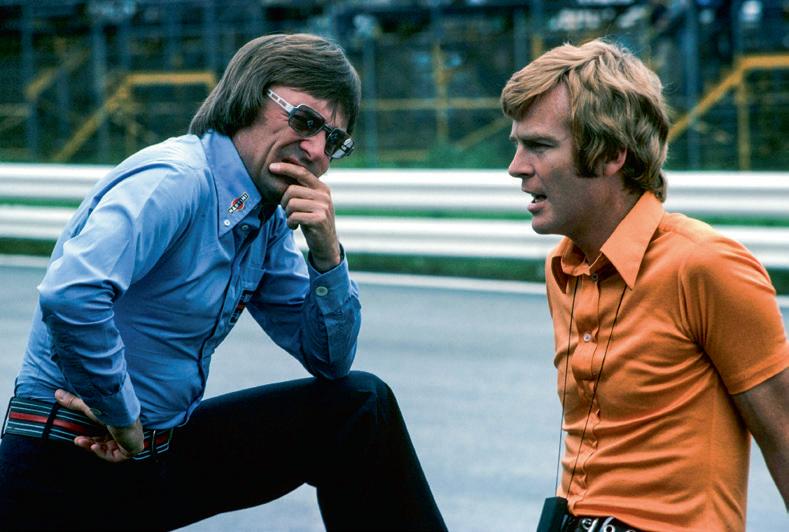
DEALING WITH MAX MOSLEY WAS LIKE walking on ice. If you went in too hard, the surface would give way and you’d sink in a sea of frosty retorts. Tiptoe gently and everything could seem smoothly reassuring, until a pointed shard would spear your argument with scholarly precision. An immediate and gentle apology from Mosley would bring further instability and uncertainty. As Max knew it would.
If you were familiar with the playing field, then a conversation with Mosley could be wonderfully entertaining and illuminating – on the understanding that you would be unlikely to win any debate, regardless of the depth and diligence of your preparation. Max applied a clarity of mind and intellect that could be as persuasively effective as it was, at times, hard-nosed and brutal. All of which was played out through a hugely varied career ranging from barrister and race driver to Formula 1 team owner and president of the FIA.
During his tenure as the head of world motoring, Mosley helped make F1 safer – a process that unexpectedly went beyond the realms of motor racing and led to Euro NCAP, a crusade that expanded and continues to save countless lives worldwide. During a final interview two weeks before his death in 2021, he said this global campaign had provided more personal satisfaction than any of the many milestones during his 81 years.
A diverse and colourful life began as a toddler when Max thought it quite normal to visit his parents in Holloway Prison. Sir Oswald Mosley and his wife, Diana, had been impeached because of strongly articulated beliefs associated with the British Union of Fascists, Sir Oswald being the leader and Lady Mosley having additional notoriety in London society as one of the well known Mitford sisters. Max’s cosmopolitan upbringing gathered momentum when he lived in Ireland for a period, and was educated in France and Germany before attending Millfield, a boarding school in Somerset. Having graduated in Physics at Christ Church, Oxford (and become secretary of the Oxford Union along the way), he went on to study patent and trademark law, and qualified as a barrister in 1964.
When a friend gave him tickets for the 1961 International Trophy F1 race at Silverstone, Max found himself intrigued by the thought of competing in a sport he had hitherto known nothing about. Studies and a lack of finance postponed a debut in Clubman’s events with a Mallock U2 until 1966. After winning a couple of races with the rather basic two-seater sports car, Mosley raised his ambition to Formula 2, bought a Brabham BT23C and embarked on a full season in the 1968 European Championship.
He received a terrible reminder of the sport’s disturbing downside at his first F2 race when Jim Clark was killed at Hockenheim. Although shocked by the loss of the twice World Champion, Max continued into 1969 until an incident at Zolder in Belgium made it clear that his skill at
the wheel did not match his worthy ambition.
“Jochen Rindt [due to become World Champion the next year] was coming through the field after he’d had a problem at the start,” recalled Mosley. “He overtook me round the outside on a very fast corner at the back of the circuit. Watching him do this from close up, it was clear there was a big gap between my driving and his. I began to suspect I didn’t have the talent to get to the very top.”
Max’s calm logic appeared to have deserted him in late 1969 when he gave up law to become, along with three others, a founding member of March Engineering. This quartet of assorted temperament and talent had astounded the motor sport world by announcing not only their intention to build cars and diversify into various racing categories, but also to run a Grand Prix team and make their Formula 1 machines available to whoever wished to buy them.
Even more astonishing, circumstance (and plenty of persuasive chat from Mosley) contrived to have leading drivers and teams purchase March 701 F1 cars – and actually win a Grand Prix. But Jackie Stewart’s victory with the Tyrrell-entered March would be a massive peak in a low-lying landscape of mediocrity dictated largely by a perpetual lack of funds.
“I take a lot of pleasure from the fact that the March team succeeded in getting off the ground,” Mosley reflected in 2021. “No one in their right mind would try to do what we set out to do. And it actually worked. On top of that, we locked out the first two places on the grid for our first GP. Think of that in modern terms. Things are different now, of course. Yet it was just as difficult then as it is now. Formula 1 remains the pinnacle of what everybody in motor sport wants to do. And we caught them napping in 1970. But while it seems ‘fun’ in retrospect, it was a nightmare at the time. There was always something going wrong. We were desperately short of money.” Max bowed out of March in 1977, by which time he had begun a formidable partnership with Bernie Ecclestone. The two may have been like chalk and cheese – the tall, urbane patrician alongside the diminutive former motor trader –but the combination of their disparate talents found entertaining and lucrative pickings in a sport amateur in function despite the hauteur of its governing body and race-track regulators.
F1 operated on a piecemeal basis, each team doing its own deal with the various GP organisers; a system that financially favoured the Ferraris of this world at the expense of the more threadbare outfits operating, in many cases, from British back streets and industrial estates. Having owned the Brabham team since 1971, Ecclestone understood that race organisers needed the teams rather than the patronising convention favouring the opposite view.
The introduction of collective bargaining may have been difficult for organisers to swallow, but the governing body, the Fédération Internationale de l’Automobile (FIA), almost choked when
Ecclestone had the temerity to suggest that the teams deserved a cut of F1’s revenues. He went even further by increasing income through his burgeoning control of television rights. Once again, this was the reverse of the accepted belief that the broadcasters were doing F1 a favour rather than, in Bernie’s view, the other way round.
Television coverage had been a haphazard affair controlled by the whim of the television companies. That began to change at the final race of the 1976 season. F1’s popularity had mushroomed in tandem with an increasingly dramatic story as Niki Lauda returned from near-death in a fiery accident during the German Grand Prix, to continue his fight for the Championship with James Hunt. A season riven with disputes and bad feeling was dramatically played out in pouring rain in Japan as Hunt claimed the title by a single point.
The battle between the debonair Englishman and the aloof Austrian had been box-office gold, Ecclestone gambling – and winning – with his first venture into satellite coverage. His hand may have been strengthened enormously, but the FIA’s International Sporting Commission (FISA), in the shape of its rumbustious president, Jean-Marie Balestre, had plans to distribute the playing cards in a manner the Frenchman felt right and proper for a grandiose organisation that had been formed way back in 1904.
Balestre’s mission did not consider the wily ways of two dissimilar but discerning individuals, one streetwise and the other an erudite lawyer fluent in several languages, each man appreciating and respecting the other’s skill set. While Balestre huffed and puffed, Ecclestone and Mosley tied him in knots. Max illustrated how with an example demonstrating his wicked sense of humour while deflating the puffed-up FISA president.
“An opportunity arose at the 1980 South African Grand Prix,” recalled Mosley. “It was Balestre’s habit to go on the podium with the winning drivers after the race. We saw this as profiling, and an infringement of the rights of the race sponsor who had paid the organiser for the right to use the podium for promotion. The marshal in charge of the podium was a large South African working for the race sponsor. I told him we had a problem: Balestre always insists on going on the podium, to the annoyance of the drivers and distracting attention from the sponsor’s promotional girls.
“‘Don’t worry, we’ll stop him,’ said the marshal. ‘You won’t be able to, he’s a very determined man,’ I said. The marshal swelled visibly. ‘Leave it to me,’ he replied. Having lit the fuse, I went back to the nearby Kyalami Ranch Hotel where we all stayed, and I was enjoying a cup of tea in the garden when Balestre appeared, red in the face with fury. ‘You won’t believe what happened,’ he said (not for one moment suspecting me). ‘They stopped me going on the podium by force.’ ‘How awful. That’s
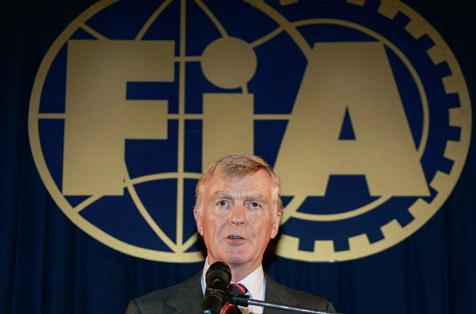
outrageous,’ I replied – very sympathetically.”
Balestre would be wrong-footed several times more, most notably when the F1 teams – now marshalled by Ecclestone under the Formula One Constructors’ Association (FOCA) banner – dared to promote their own Grand Prix and threaten to run a breakaway championship. It was an audacious bluff. Not realising many of the FOCA members were on their financial uppers, Balestre blinked first and left the way clear for Ecclestone and the teams to gain all they wanted in terms of commercial control.
With the battle more or less won and, in Mosley’s view, the fun having gone out of the power struggle, he considered moving away from motor sport and running as a Conservative candidate in British politics. While eminently suited to the cut and thrust of parliamentary life, it became clear to Max that the Mosley name would work against him as the media gleefully reopened stories of his father’s controversial past.
A new and judicious harmony between FISA and FOCA was evident when Ecclestone and Balestre supported Max in his candidature as president of the FIA’s Manufacturers’ Commission,
‘At no point did Mosley back away from the awkward and at times painful questions’
a role that involved working with car makers in rallying and sports car racing as well as allowing Mosley to become established within the governing body. That would work against Balestre in 1991 when, to the Frenchman’s shock and surprise, Max made a legitimate challenge for the presidency of FISA – and won. With Ecclestone already in position as vice-president of the FIA, the switch from poachers to gamekeepers was completed in 1993 as Mosley became president of the FIA, FISA being absorbed back into the parent organisation.
Not long after his successful election, Max joined myself and two colleagues for breakfast on the first day of the Japanese GP at Suzuka. Typically, he downplayed his new-found position by saying he wished to let the sport run itself and, unlike his predecessor, “not confuse the role of the legislature with that of the judiciary”.
Mosley’s sincere intention was to receive a profound test six months later when two F1 drivers were killed on the same weekend at Imola. The fact that there had been no fatalities at a Grand Prix for 12 years was intensified massively when Ayrton Senna was one of the casualties in Italy. The death of the superstar had been beamed into living rooms around the world.
Quickly realising the importance of being seen to be doing something, Mosley stayed calm and instituted a series of fundamental and comparatively crude changes to reduce F1 car performance. Far better, he reasoned, to deal with subsequent and predictable complaints by the teams rather than uninformed clamour from beyond the F1 paddock to have the sport banned.
As part of a longer-term process to improve driver safety, Max turned to the automobile industry on the assumption that research into crash tests would provide useful lessons. He was
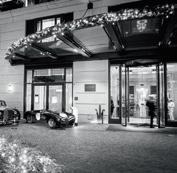
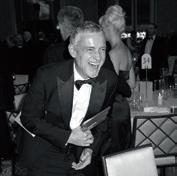
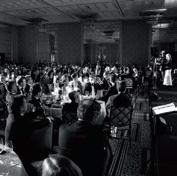
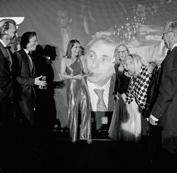
appalled to discover that there were virtually none. Even worse, the manufacturers were calling the shots and avoiding the implementation of road-car safety features on the grounds of cost. When Mosley was effectively told not to meddle in something he did not understand, the industry was unwittingly guaranteeing the opposite reaction. He saw such a disdainful response as a bone, to be not just chewed but reduced to a pulp.
Max was behind the conception of Euro NCAP, a structured car-safety performance with a fivestar rating that was initially dismissed by critics as immature and fanciful. When Renault became the first manufacturer to appreciate the marketing value associated with a five-star car, the naysayers had no option but to follow suit. Looking beyond Europe, the introduction of Global NCAP encompassed the likes of India and Brazil, countries with road casualties measured in the thousands every day.
Mosley’s method of funding this campaign would bring claims of cronyism when, as FIA president, he raised $360m by selling F1’s commercial rights to Ecclestone. There was similar disquiet in 2007 when Max adjudicated the so-called ‘Spygate’ affair following McLaren being found guilty of possessing technical information belonging to Ferrari. When a $100m fine was handed down, Mosley denied this had anything to do with his earlier view that Ron Dennis was “not the sharpest tool in the box”. That publicly expressed summary of the McLaren boss did, however, highlight Max’s sometimes juvenile mindset and barely concealed disdain for any perceived self-important adversary lacking his own razor-sharp intellect.
Armed with this knowledge of his background and methodology, preparing an interview with Mosley was disquieting; like a star-crossed shrimp approaching a beatific but inherently wicked octopus. I’d had many lunches with Max, but never on a one-to-one basis. That changed in June 2011, when he agreed to meet in a restaurant of his choice in London’s Brompton Road. I knew he’d use the occasion to gently raise a few points over which we had disagreed in the past; most notably, my full-page comment piece in The Observer heavily criticising his handling of a debacle during the 2005 US GP at Indianapolis. Seconds before the start, 14 cars had pulled
into the pits, leaving just six (running on Bridgestone tyres) to race in front of a disbelieving and outraged crowd. Following tyre failures on the high-speed banking, Michelin’s request for the installation of a chicane had been turned down, leaving their runners with no option but to withdraw. Mosley was accused of mismanaging the crisis and being out of touch with the sport’s fundamental obligation to the paying spectator and global TV audience, thanks to being intransigent and laying down the law by remote control from his apartment in Monaco.
‘Law’, in fact, was the critical word. As a former barrister, the Rule of Law was as essential to his way of life as the right to conduct it in private as he saw fit (something the News of the World would later learn to its cost when Max succeeded in having the newspaper closed down). Mosley argued that Michelin had failed in its duty to provide a race-worthy tyre, and Bridgestone should not be penalised as a result. While some of the solutions proposed by the Michelin runners were marginal, none seemed as daft as Max’s suggested compromises (the worst being that Michelin cars should back off on the banking). His refusal to concede, while technically valid, led to a farce that would have a deleterious effect on F1’s reputation in North America.
In Mosley’s view, however, the Rule of Law had been maintained. He was just as adamant in his defence of selling F1’s commercial rights to Ecclestone, and similarly with the colossal fine handed down to McLaren over Spygate. In each case, Max’s point of view was expressed in a clear and patient manner, devoid of a condescending tone but leaving a mild sense of foolishness with the questioner over having raised the subject in the first place.
Following his retirement from the FIA presidency in 2009, Mosley agreed to a biographical documentary. Having advised Max during the crafting of his award-winning autobiography, I was hired as a consultant throughout the filming. At no point did he back away from the awkward and at times painful questions; particularly over the death of his son, Alexander, due to non-dependent drug abuse. Answers were honest but seemingly lacking emotion; a typically calculated response from a man who, privately, had been devastated
‘You would be unlikely to win any debate, regardless of the depth and diligence of your preparation’
by the loss of his 39-year-old first born.
While our relationship thus far had been professional and at arm’s length, there was a change in 2019 during my research for Niki Lauda’s biography. Knowing Mosley and March had given the triple World Champion his F1 break, I asked for a telephone interview. He invited me to lunch. We went to a quiet Italian restaurant, well known to Max and tucked away in a mews terrace not far from his home in Kensington.
We spent a relaxed couple of hours (Mosley’s bird-like appetite restricting him to a modest first course while I was encouraged to explore the cuisine), compelling off-the-record discussion ranging across his full life. At the end he produced Lauda’s March contract documents, signed by all parties, Max acknowledging (and enjoying) Niki’s cheek in having forged a letter of financial guarantee purporting to be from his father.
“That appealed because, like me, Lauda was a risk-taker,” he said. “Carefully calculated, but risks nonetheless. It’s unquestionably in my nature.”
Mosley’s mapping of his final years took into account a diagnosis of terminal cancer. In early May 2021, his personal assistant called to say Max would like to give a final interview by phone. What should have been an awkward conversation was eased by Mosley, although laboured in speech, making it like any other as he reflected on an extraordinary career.
“From a satisfaction point of view,” he recalled, “NCAP has been rewarding. I was the catalyst, I guess. If somebody puts you in a position such as the president of the FIA, you really are uniquely placed to make a big difference. And it’s noticeable how many people occupy such a position, but do bugger all.
“I know it’s very politically incorrect to say this,” he continued, “but I find people going in for gesture politics – like taking the knee for example – is actually quite tiresome. If you care about something – well, go and do something about it. The fact that you’ve been able to do something – even if it were saving the lives of just a few people – is really significant. And when it gets to be thousands, it’s extremely significant. You sort of feel; well, if I never do anything else, at least that was worthwhile.”
On May 23, 2021, he was found with fatal gunshot wounds to his head. Max Rufus Mosley: in control until the very end.

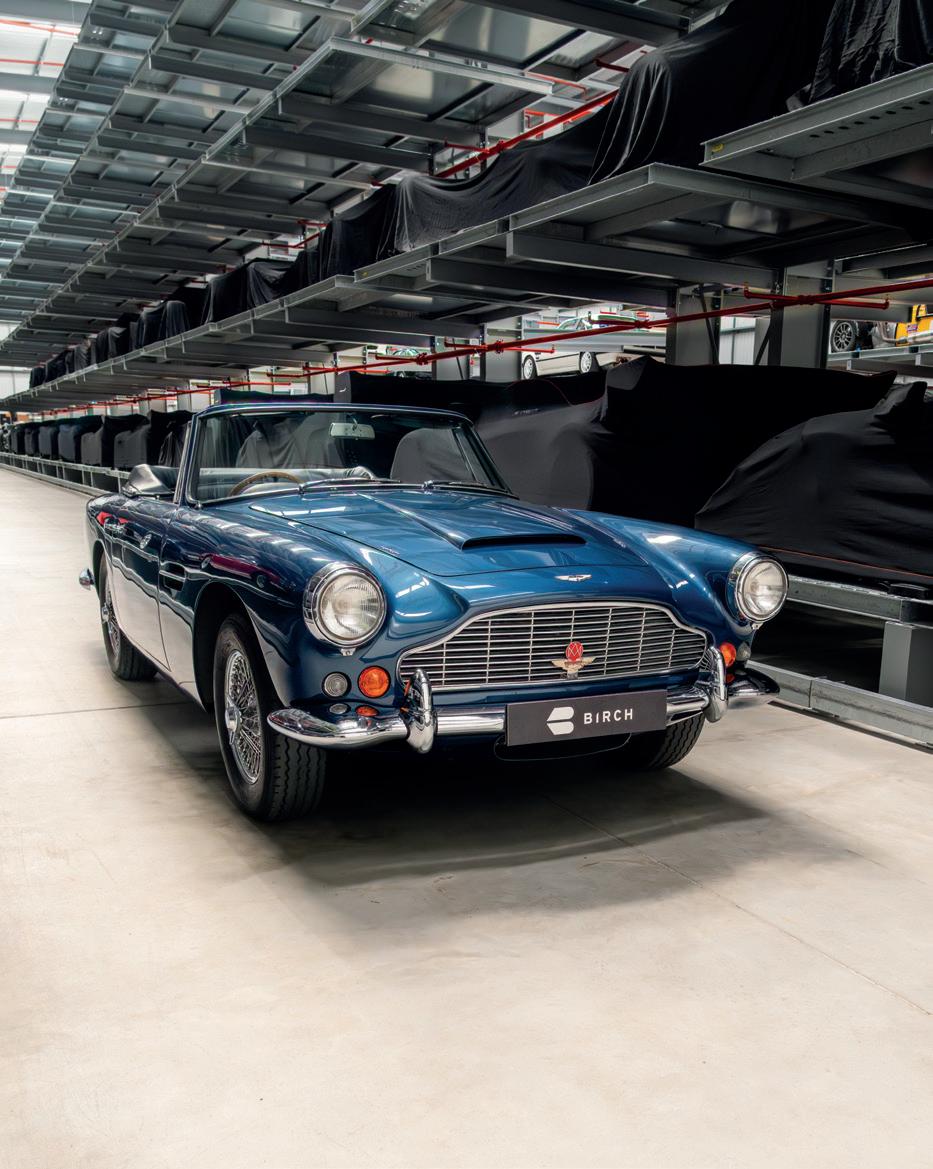

Can a twin-turbo TAG V6 from Formula 1’s wildest era be squeezed into a 911? Yes it can – and the result is stupendous
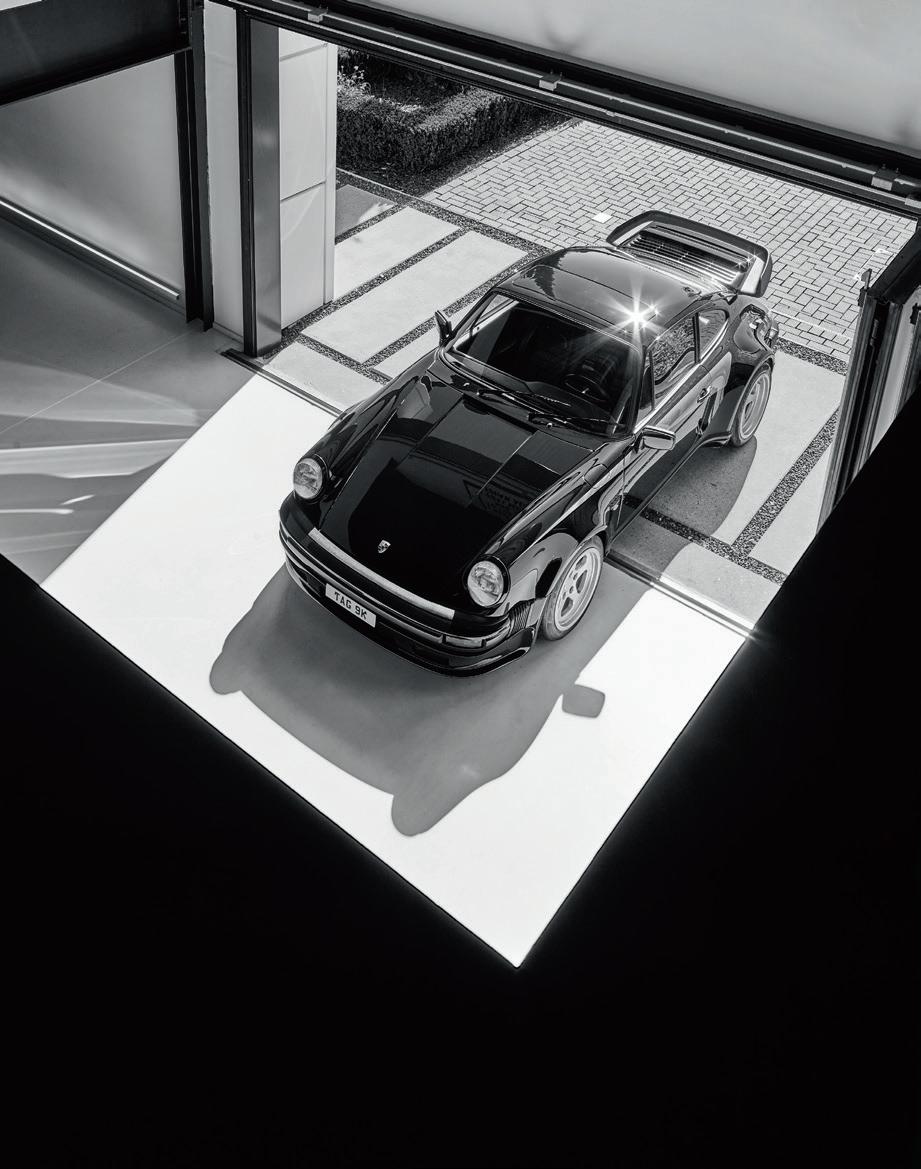
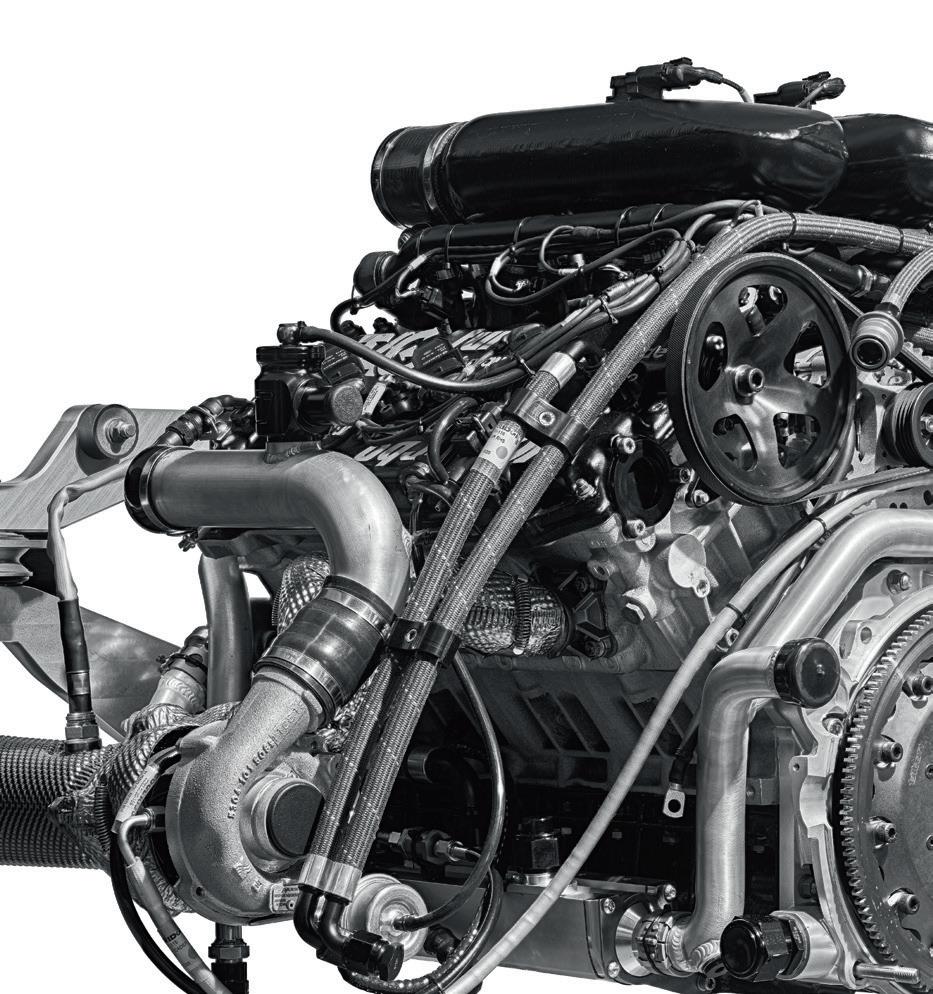
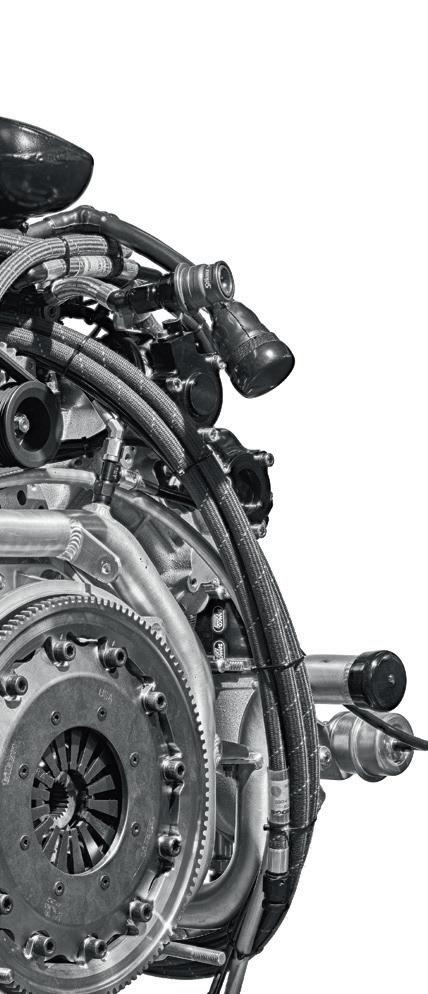
IT’S A RIDICULOUS PREMISE. TAKE A Porsche 930 Turbo, remove its 250bhp flat-six and replace it with a matching-era Formula 1 engine. I mean, what could possibly go wrong?
Forget your misgivings. I mean, literally just remove all logic from this plan for a moment and imagine a 911 with the powerplant from a 1980s McLaren in the back. This was the era of 1000bhp-plus from wild-revving small-capacity turbocharged units – and one of the best of all those was the Hans Mezger-designed PorscheTAG TTE P01 twin-turbo 1.5-litre V6, as fitted to the carbon-composite-chassis McLaren MP4/2, MP4/2B, MP4/2C and MP4/3.
It was in these cars that Alain Prost and Niki Lauda ruled supreme from 1984-87, winning 25 Grands Prix between them with McLaren.
What’s less well known is that in 1982 the McLaren team installed a TAG V6 into a Porsche 930 Turbo to test the 1983 engine and put miles on it while the season was still underway. They kept it looking near-standard except for a front splitter to guide air into the newly installed
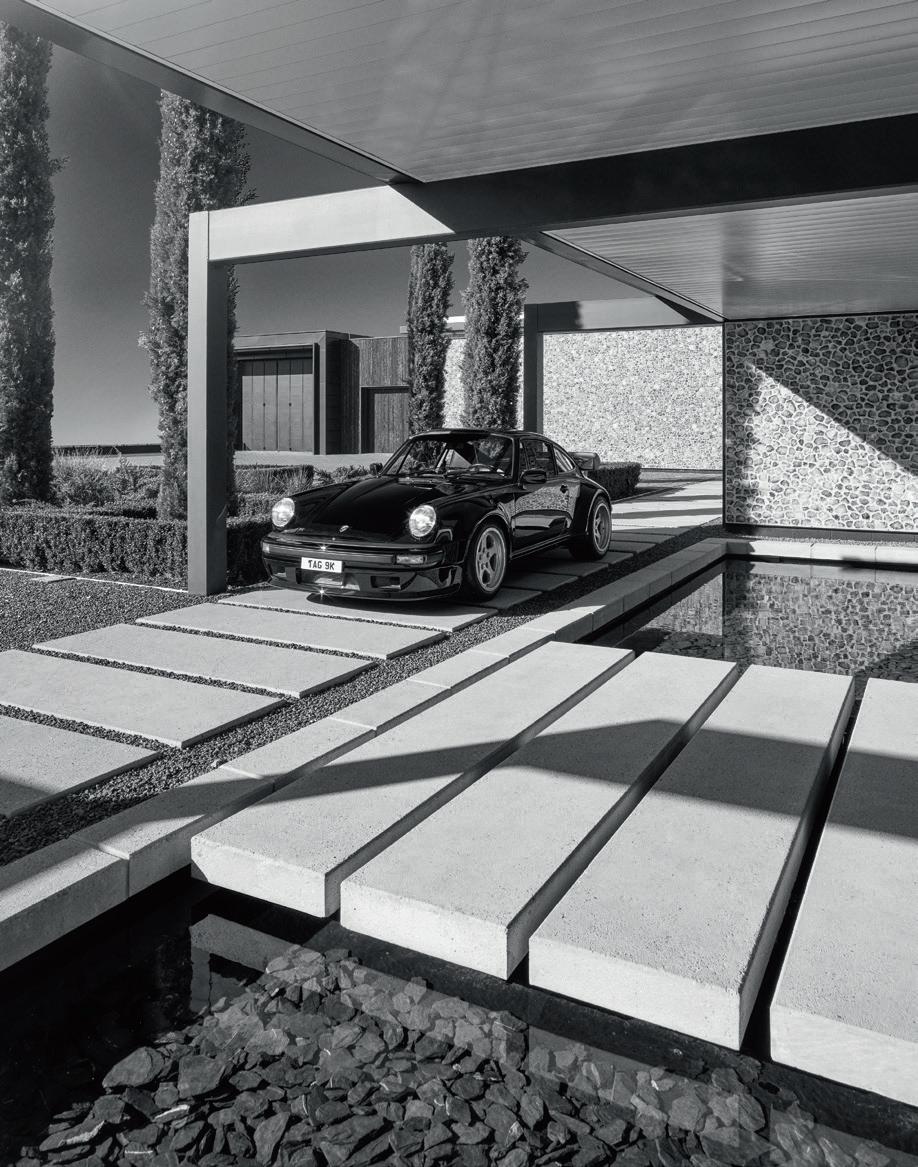
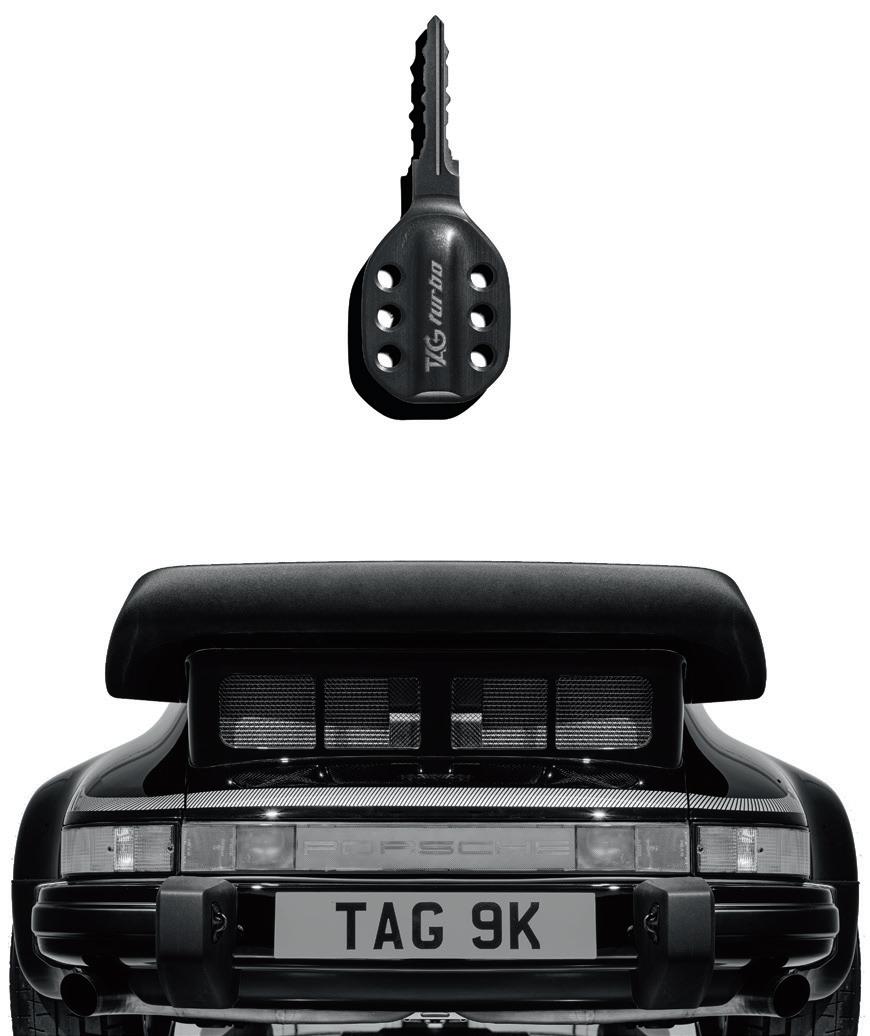
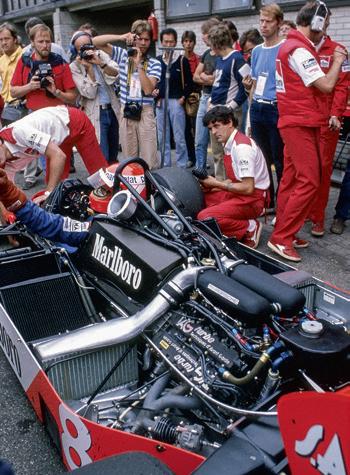

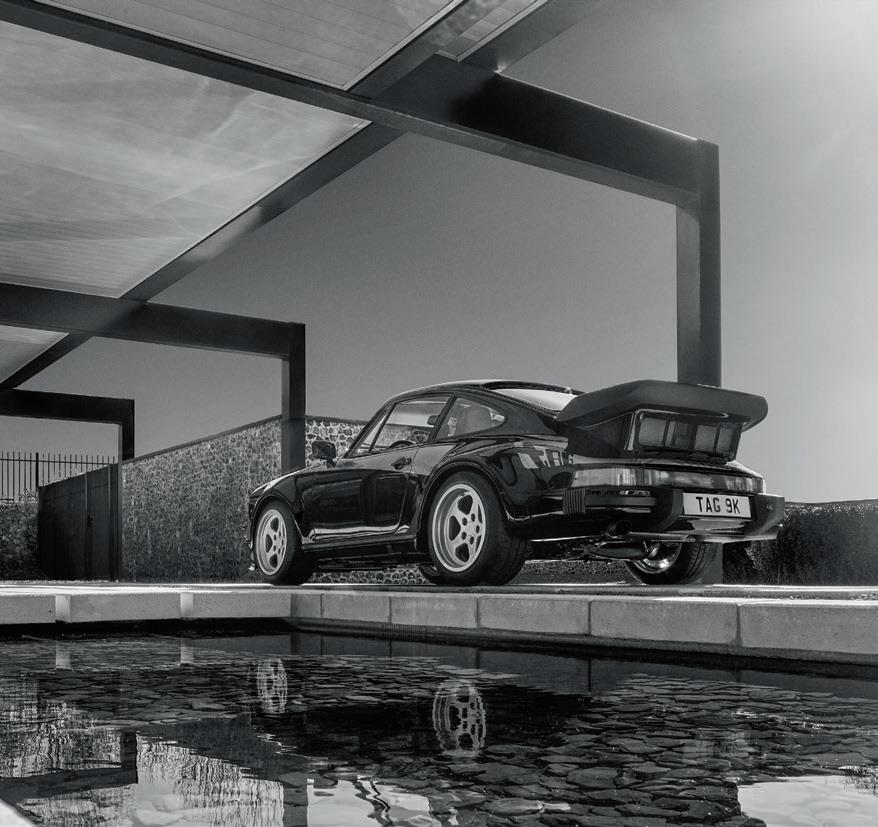
radiator, an extended engine cover, Ruf wheels and a turbo-boost gauge that went to 3 bar.
This one-off was originally owned by Ron Dennis, and it still survives at McLaren to this day. In 2017, team head Zak Brown sent it to McLaren specialist Dean Lanzante to be recommissioned, which is really where this story begins. Dean remembered his father, Paul, servicing it back in the day, and asked Zak if he could buy it. Zak said no.
That could have been the end of it, had not Dean and arch enthusiast Chris Vassilopoulos cooked up a plan to build two copies – one for each of them – of McLaren’s TAG 911. Would Zak allow them to do so? This time, he said yes. And would McLaren sell two of its old TAG Formula 1 engines? Yes again.
But this is where the project escalated. Once Dean started to look into how to create the cars to the standard that he and Chris wanted, it quickly became apparent that this was going to be “wildly expensive” as Chris puts it, even in tooling costs alone. The obvious solution would be to build a few more and sell them to spread the costs. Chris’s family would fund the project, Lanzante would engineer it. Would McLaren supply additional engines? Zak Brown said yes.
The result, as you probably know, was a new run of 11 road-legal TAG-engined Porsche 930s, one for each driver in each year that TAG McLarens ran in F1. They’d be finished to a much higher spec than either McLaren’s conversion or an original Turbo, and be true turnkey cars, exhibiting none of the histrionics you might associate with old F1 powerplants.
After several years of development, the first of the new cars was launched at the Goodwood Festival of Speed in 2023, priced at £1,095,000
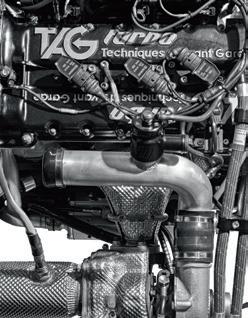
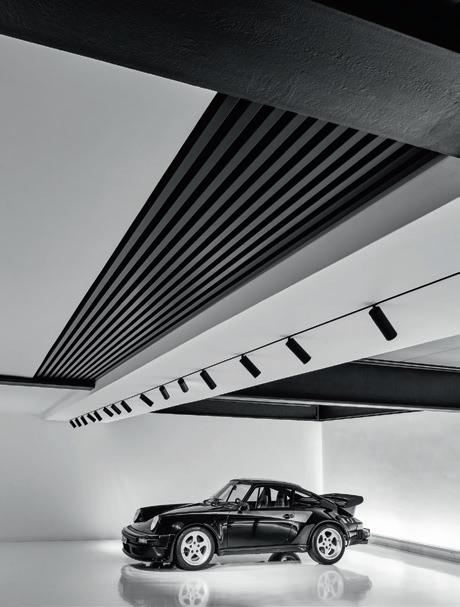
each. We have eyed these incredible machines ever since, seeing Lanzante’s metallic brown prototype – powered by Niki Lauda’s 1985 French GP engine – in early ’23 but keeping our powder dry for this, our F1-themed issue. With it came the chance to photograph the metallic black Vassilopoulos TAG, itself equipped with Prost’s 1984 Monaco-winning V6. “I was more Prost than Lauda; he was a master of his craft,” explains Chris of the engine choice.
At first glance, you could mistake Chris’s car for a particularly good example of a stock 930, save for those neat period-style graphics (which turn out to be hand-painted – wow!). But dig deeper and there are tell-tale signs: the additional front splitter and larger rear whale tail. The glimpse of carbon brake discs through the Ruf wheels (9 x 17in fronts, 10 x 17in rears with 225/45/17 and 245/40/17 Pirelli Trofeo R tyres). The cooling ducts in the front and rear. And, above all, the sheer quality inside and out.
The team had quickly established that the only way to create the cars was to start with a suitable 930 donor, which would then be disassembled to
a bare shell, checked on a jig and media blasted prior to a full rebuild. An original car was 3Dscanned, allowing bespoke body-panel moulds to be produced in CAD. From these, the team would produce new panels from contemporary F1-grade carbonfibre: bonnet, front bumper, front splitter, rear bumper and rear wing. The car’s standard steel door skins would be replaced with alloy, and the fuel tank swapped for a motor sport-grade 80-litre bag fuel tank within a carbonfibre case.
Of course, that was just the start. How would the water-cooled V6 be made to fit and, harder still, be cooled in a car designed for an air-cooled flat-six? The team had to re-engineer the car to fit a radiator in the nose and heat exchangers in the engine bay, and to take the extra power while keeping weight to a minimum. They skimped on nothing, even insisting that the brakes were custom-made carbon-ceramic discs by Surface Transforms with re-engineered original calipers for the right look. In tandem, the 930’s torsionbar suspension was replaced with a bespoke Öhlins motor sport-spec coil-over set-up.
But if there’s anything that truly sums up the
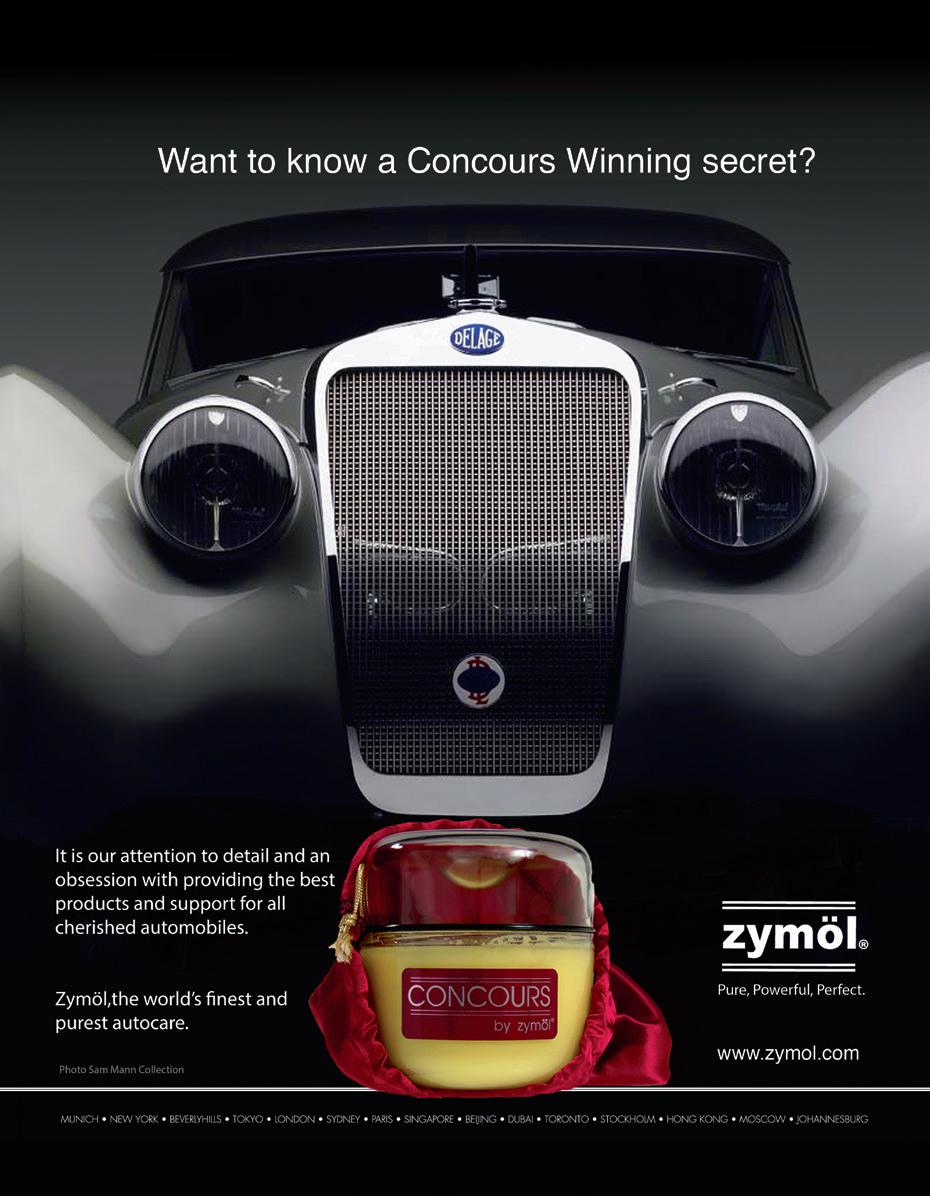
project, it’s the Raychem wiring loom, which was made to military spec – no plastic connectors allowed – with central bus architecture, which cuts down on the number of wires needed, hence reducing weight. Would anyone ever see or appreciate that? No, but that wasn’t the point. Wait, though, because we’re jumping the gun. How about the engine? There was no question of simply pulling long-unused 1980s F1 units out of the McLaren store and fitting them into the 930s. Instead, the team commissioned none other than Cosworth to re-engineer each one for road use.
The starting point was strong. Mezger’s design utilised several then-unusual features, including: cooling channels around the valve seats housing sodium-filled valves, fed from twin water pumps mounted at the end of the engine; KKK turbos; and Mahle forged pistons and titanium conrods. In their most potent qualifying trim the motors could make 1060bhp at 13,000rpm, but the power didn’t kick in until 8000rpm thanks to the large, relatively crude (by today’s standards) turbochargers and engine-control systems.
Each engine arrived from McLaren in its own flight case, marked with the number that tracked its race and driver provenance. Some were found to have cracked cylinder blocks, though – a common problem at the time that deemed them unusable. Those that passed the crack tests were fully rebuilt by Cosworth, with new internals such as pistons, rods, valves and springs. To this were added modern, smaller turbos delivering 44psi (3 bar) of boost plus bespoke engine management that set power output to 503bhp, red lined at a more manageable but still heady 9000rpm.
To each reworked engine were added custommade Inconel exhaust headers and titanium tailpipes. And then there was the cooling...
“Basically, the heads are like two engines, because they each have their own water pump,” project lead Ross Curnow told us back in 2023. “In F1, there’d be a radiator in each sidepod, whereas with this car we’ve had to conjoin that system into one front radiator. That was a fair challenge.”
Then there was the gearbox: early 930s had four speeds, later five, neither of which would’ve coped with the TAG engine’s power even if Dean hadn’t been set on having a six-speeder. Instead, new old stock G50/20 993 RS casings were utilised with bespoke internals, using ratios determined by Cosworth to match the TAG engine’s new
‘With 500bhp-plus at 8500rpm and 310lb ft of torque, the Lanzante TAG 911 hits 0-60mph in 3.5 seconds’
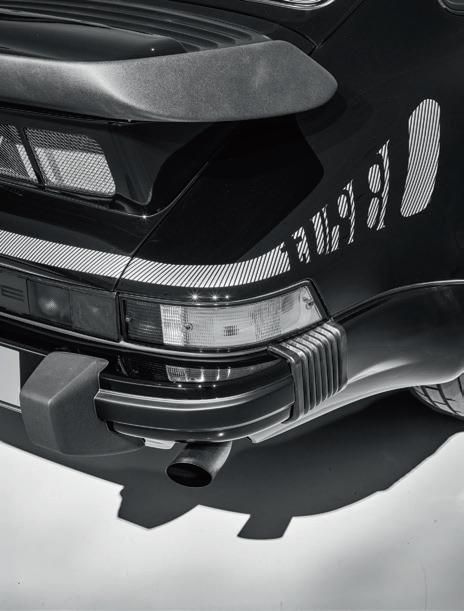
characteristics – geared for a 200mph top speed. This belies the strife that this conversion caused, because initially only motor sport firms were able to produce gearsets that could cope with the power – but competition units are too harsh for the road. It was a long time before a suitably civilised but strong transmission was created.
Speaking of civilised, the Lanzante TAG’s cabin has been crafted to keep its trademark look but to a much higher quality. This is right down to remaking the switchgear to look authentic – but to be vastly superior to the 1980s plastic originals.
There’s even a new lightweight climate-control unit hidden away. The leather-covered centre console has been remade in carbonfibre to fit the remodelled central tunnel and repositioned shortthrow gearlever. The instruments have gained a water-temperature gauge – an unusual sight in an ’80s 911 – and there are now USB sockets and a Porsche Classic stereo with built-in sat-nav. Two seat options were offered: retrimmed heated originals with electrical adjustment, and lightweight carbonfibre Recaros. Chris opted for the ‘Touring’ seats, but if he’d gone for the Recaros
they’d have saved 17.4kg, contributing to the rest of the lightweighting: the aluminium alloy door skins save 10kg, the carbon-ceramic discs 14.56kg, the wiring loom and lithium-ion battery 27.4kg and the carbonfibre panels 43.55kg. Most significantly, the TAG engine is a full 130kg lighter than the original flat-six – all resulting in the car’s overall weight of just over 1000kg.
But what’s the result? With 500bhp-plus at 8500rpm and 310lb ft of torque, the Lanzante TAG 911 hits 0-60mph in 3.5 seconds and almost 200mph – yet it’s the way it drives that’s remarkable.
“It looks quite understated and discreet,” says Chris, “and even though it’s quite an animal, it steers and brakes properly, it responds and does exactly what it’s supposed to do. To think that these engines were raced... it’s pretty amazing.”
The story doesn’t end here, because Lanzante is building three stripped-out Championship versions, one for each Drivers’ Championship win, in 1984, 1985 and 1986 respectively. Each weighs 920kg and produces 635bhp.
And going back to the first 11 cars, Joe Twyman describes the driving experience overleaf...







































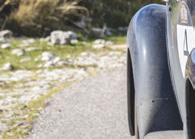










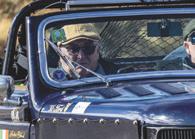






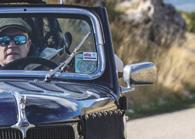
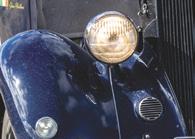

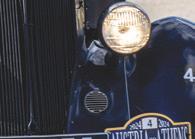









































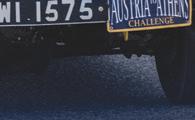

















I’VE BEEN LUCKY ENOUGH TO HAVE driven and raced Formula 1 cars – but never a turbo-era machine, writes Joe Twyman. So while I know what a normally aspirated Ford DFV feels like, I had no real reference for the TAG TTE twin-turbo V6 that was originally fitted in Prost’s McLaren MP4/2. Initially the thought of nearly double the power coupled with a road-car chassis and associated running gear triggered trepidation, but what I found in my two days driving this car at Anglesey was a huge surprise.
Even in the 1980s, a team of mechanics was required to start and run the McLaren in which the engine in the back of this car was fitted – so the start and warm-up procedure would probably be more laborious than a standard road car’s, right? Wrong! Ahead of my test, I went to see Dean Lanzante go through the ‘process’, but I really could have saved myself the trip; it is very much turn the key and fire on demand. No preheat, no drama and easier than starting the car I had driven there in to ‘learn’ all about it. The engine-management system restricts the revs available to you while the motor comes up to temperature, and it really couldn’t be easier. When it comes to driving, the same trepidation creeps into the back of your mind – it must be a beast, right? Again, wrong! The way that Dean and his team at Lanzante have set this car up is masterful, and it is so compliant. It goes where you want it to go, stops when you want it to stop and is balanced in both low- and high-speed corners. The power delivery from the re-engineered TAG turbo engine is without compromise, and the lag you’d be forgiven for thinking would be there most definitely isn’t. The car hasn’t lost its Porsche feeling, and it has a hint of understeer on turn-in that I actually like, so from me there are zero complaints.
Spoilt as I am, rarely are there cars that I feel like I could lap until the fuel runs out. There is something magical about knowing that the application of throttle is commanding the same engine that powered Prost to a podium in the 1987 Hungarian GP. On one run, I glanced in the mirror as I was shifting down the ’box to see if I could get a glimpse of the flames I knew were licking out the back, and reminded myself there are still rear seats fitted. I realised that the car
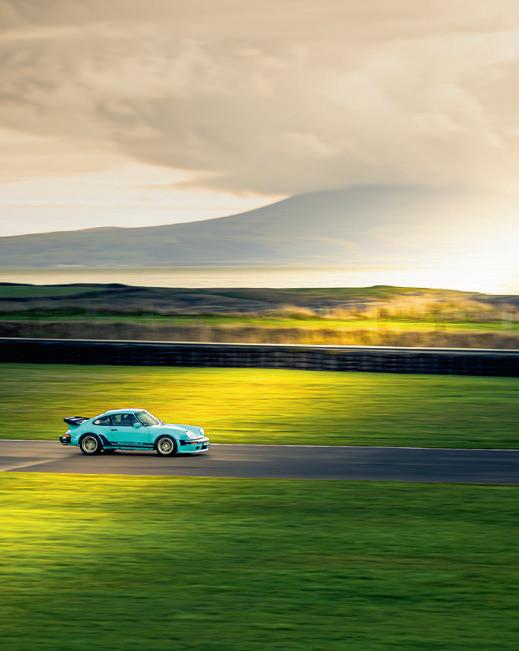
‘The way that Dean and his team have set this car up is masterful, and it is so compliant’
would be as happy and usable on the school run as it was on track, and it changed something for me that I thought was almost set in stone.
My ‘Top five: no budget, no questions’ list has always been a Ferrari 250GT SWB/C, McLaren F1 GTR, Alfa Romeo 8C Touring Spider, Senna McLaren MP4 and Porsche 911 Carrera RS 2.7 Touring. A TAG Turbo has now replaced the Carrera RS, which is a huge statement but one I’ll stand by – and anyone who has driven both will understand. For those who haven’t, trust me... it’s awesome. While it’s going to be hard to actually own one with only 11 built and a budget that is beyond me, I do have a friend with one. Maybe he will allow me to take my daughters to school in it to prove that it really is a fantastic all-rounder. Thanks to Chris Vassilopoulos, Lanzante Limited, Broad Arrow Auctions and photography venues Kiklo Spaces and Bicester Motion.
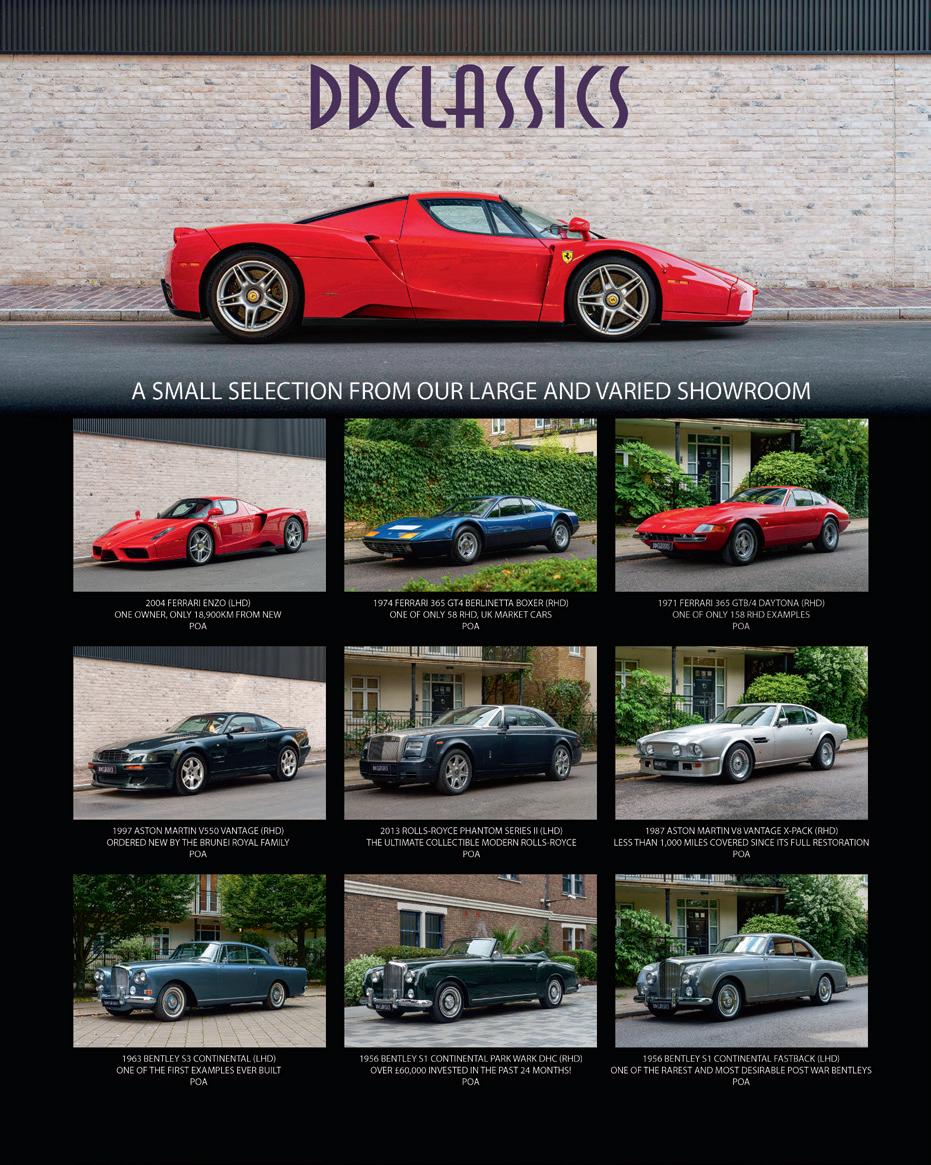
RATED: THE GREAT AND THE GOOD OF THE F1 GRID THROUGH THE YEARS.
CONTROVERSIAL? YES! BUT HEAR US OUT. HOW WOULD YOU ORDER THEM?
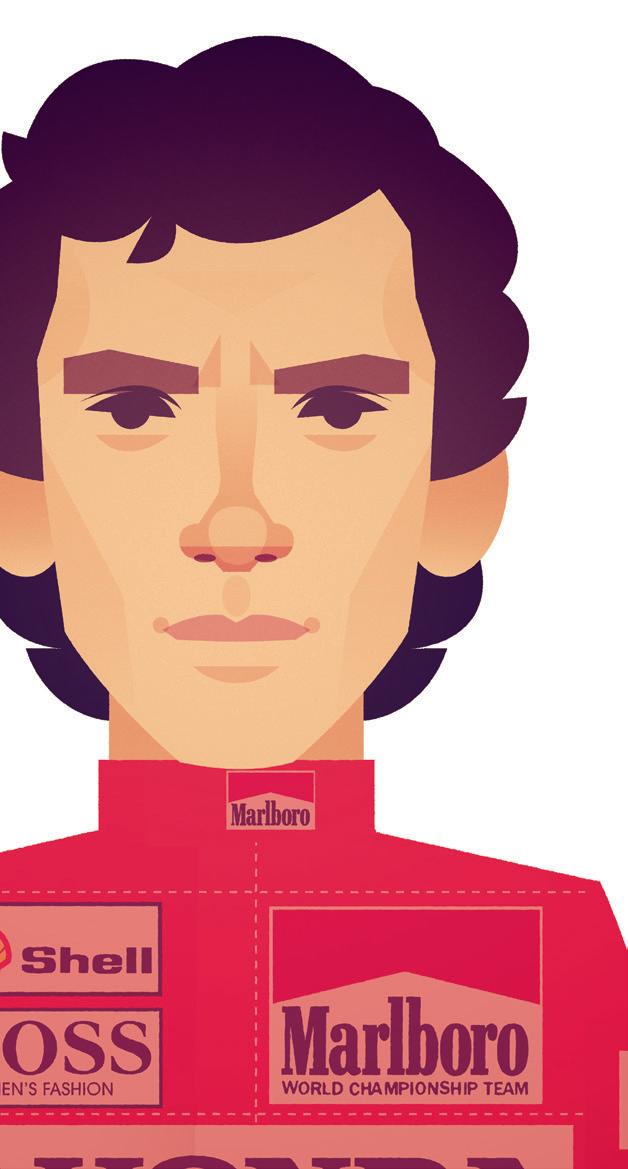
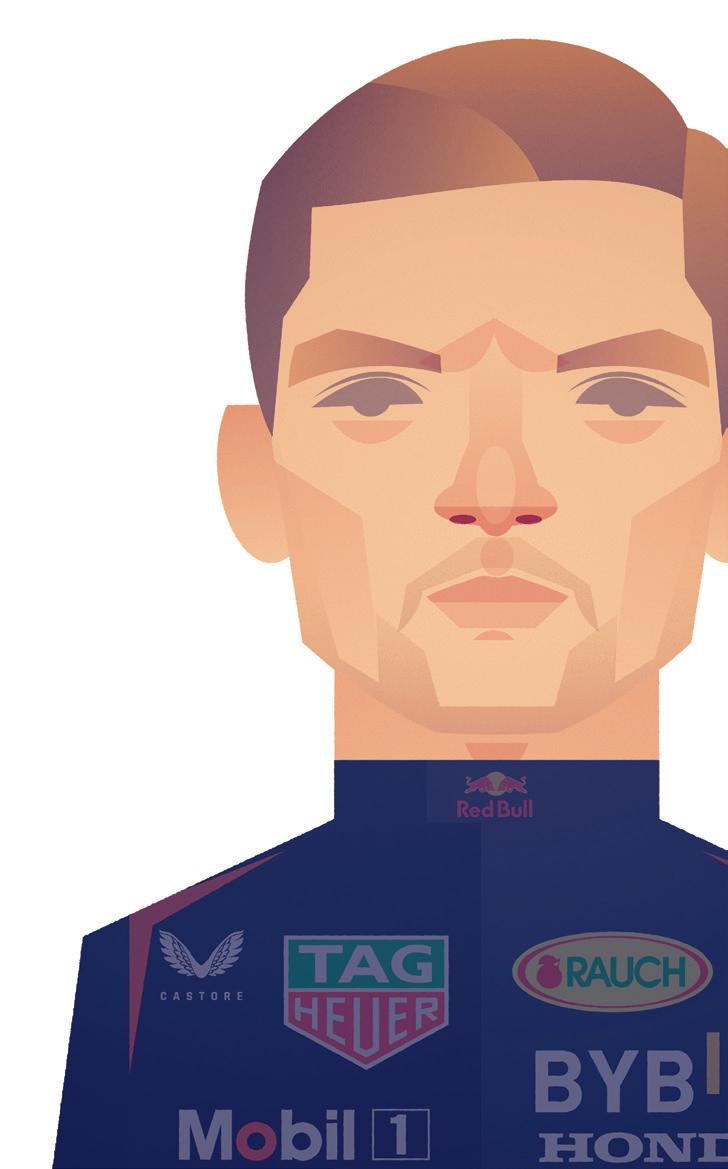
Jacques Laffite
‘HAPPY Jacques’ was Formula 2 champion in 1975, having made his maiden Grand Prix start a year earlier driving for Frank Williams. The Parisian won the 1977 Swedish GP for Ligier, and claimed the first two rounds of the 1979 season, only for his title bid to be undone by eight retirements. Laffite was a class act, claiming six wins and 32 podium positions to 1986. However, his career ended abruptly during that year’s British GP. He was involved in a multi-car shunt and broke both legs. He ultimately returned to racing, but not in F1.
Lando Norris
THIS diminutive Brit’s name will probably be writ large in ‘Eff One’ history in future years. His career is still in the ascendancy, the former prodigy having had to wait until his sixth season to claim his maiden victory. His 2024 Miami GP triumph was but a mere opening salvo, the McLaren driver taking the fight to Max Verstappen thereafter. He finished second to the Dutchman after a brilliant season. He claimed pole in Abu Dhabi, leading from start to finish to take his fourth win of the year. In doing so, he secured McLaren’s first constructors’ title since 1998.
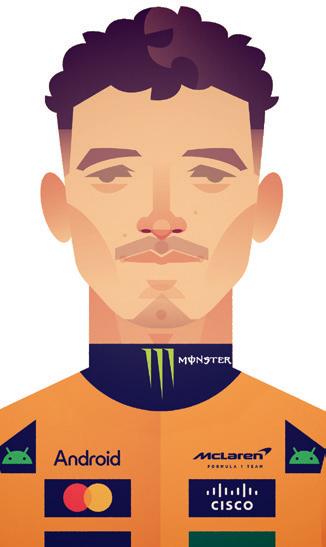
Gerhard Berger
BERGER was an accomplished racer – and an astute one. The Austrian competed in F1 from 1984 to ’97, encompassing two tours at Ferrari and Benetton not to mention three years as McLaren team-mate to Ayrton Senna. Some might argue that he didn’t always apply himself, but he was stellar when the stars aligned. His tenth and final victory, the 1997 German GP, was a dominant one. Having missed the previous three races on medical grounds, and reeling from the recent death of his father, the 38-year-old was the class of the field.
DASHING Collins is perhaps best known for selflessly handing over his Lancia-Ferrari D50 to Juan Manuel Fangio near the end of the 1956 Italian GP (the Argentinian’s car had suffered a steering-arm failure). In doing so, he damaged his own Championship prospects. Collins ended the year third in the points behind Fangio and Stirling Moss. He’d claimed three World Championship wins prior to his fatal Nürburgring crash in 1958. His passing had a seismic effect on team-mate Mike Hawthorn, who retired from racing at season’s end.
CERTAIN sectors of the motor sport media have painted Pironi as being dishonourable, much of it stemming from him not obeying team orders during the 1982 San Marino GP and in doing so ‘robbing’ the sainted Gilles Villeneuve of victory. The latter died shortly thereafter. This is unfair, not least because Pironi isn’t around to defend himself. The Frenchman won three GPs across five seasons, and was leading the 1982 standings prior to crashing out in Germany, which left him badly injured. He switched to racing offshore powerboats, only to die in an accident in ’87.
REMEMBERED primarily as the greatest sports car driver of his generation, Ickx’s career also encompassed success in events as diverse as the ParisDakar Rally and the Bathurst 1000. There was also a time when a title in F1 seemed practically preordained. The Belgian was runner-up in 1969-70 (with Brabham and Ferrari respectively), claiming eight wins over time. However, his form petered out appreciably from the mid-1970s on, his time at the top table ending in 1979 after he subbed for the injured Patrick Depailler at Ligier.
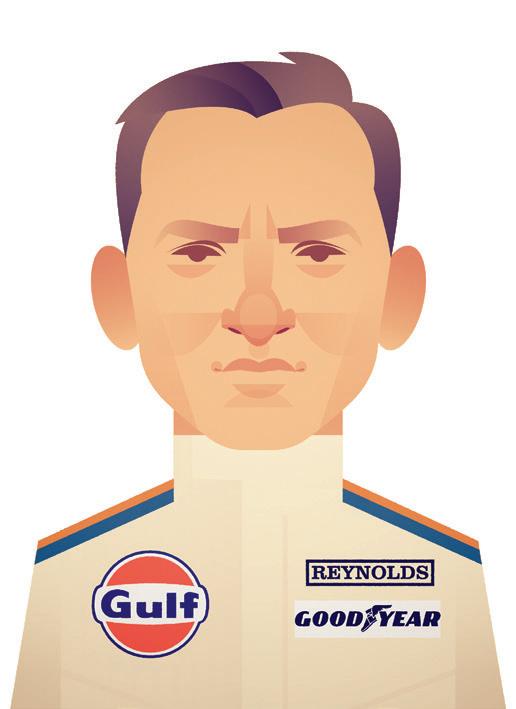
BARRICHELLO was a shining star in the junior formulae in the early 1990s. He was just 20 when he entered F1 with Jordan in 1993, and he routinely outpaced experienced teammates Ivan Capelli and Thierry Boutsen. All he needed was a machine that matched his talent... However, signing on as Michael Schumacher’s Ferrari team-mate for 2000 was both his making and his ruination. He now had a winning car, but he lost his best years playing the role of wingman. He later performed well with Honda/ Brawn; less so with Williams.
MCLAREN’S standing in motor racing is up there with the very best, the team that bears his name having entered into legend. He was a much-loved leader of men, and you could argue that he might have achieved more as a driver had he not struck out on his own. His tally of four points-paying wins across 13 seasons sells him short, because he often didn’t have a competitive car at his disposal. The Kiwi won the 1959 US Grand Prix when he was just 22, and he was good enough to finish third in the points twice (1962 and 1969).
SCROLL back to 1994, and there was a tug of war between McLaren and Williams over Coutlhard’s services. The young Scot was viewed as being a Champion in waiting: a major prospect. Somehow that promise wasn’t realised, David failing to assert himself when it mattered, not least when paired with Mika Häkkinen at McLaren. Nevertheless, he was capable of brilliance. He stood on the podium 62 times to the end of 2008, bagging 13 wins along the way. He was second to Michael Schumacher in the 2001 standings, but a miserable 16th in his final season.
ANOTHER star remembered more for his achievements in a sports car, this cultured American was a better single-seater driver than some have painted him. He won the 1960 Italian Grand Prix, before racking up two more victories a year later en route to taking the drivers’ title. Success was bittersweet, because his teammate and Championship rival Wolfgang ‘Taffy’ von Trips had crashed fatally at Monza, killing 15 spectators. Ferrari then decided to sit out the final round at Watkins Glen. A move to the lamentable ATS squad for the 1963 season effectively nixed Hill’s career.
THIS plain-speaking Australian broke his duck in 1977, winning that year’s Austrian GP for Shadow. Nevertheless, he wasn’t touted as being a likely future champ, not least by Williams, which took him on a year later. This youthful outfit was yet to become an F1 powerhouse, but the driver and team clicked. ‘Jonesy’ claimed four wins in 1979 to finish third. He took the title a year later. A tempestuous season alongside Carlos Reutemann followed in 1981 before he walked. He then made a one-off appearance for Arrows, prior to an ill-advised comeback with Beatrice Haas in ’85.
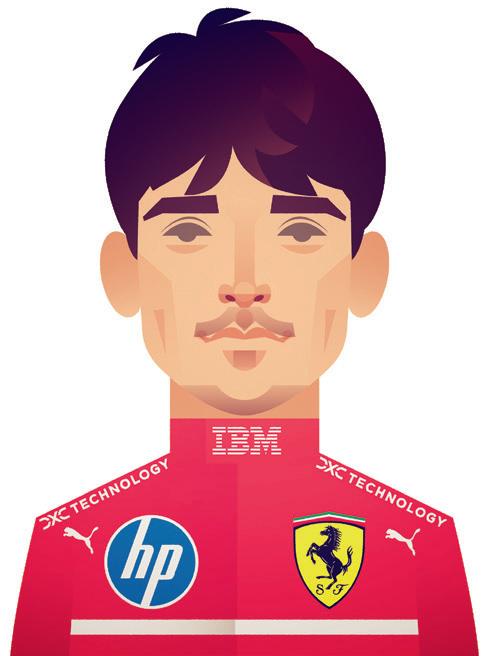
FERRARI’S favourite son has thus far claimed eight victories and was runner-up in the 2022 standings. He isn’t about to jump ship any time soon, either, his contract running to the end of 2026. There is every reason to believe it will then be extended. The Monégasque claimed his first success, the 2019 Belgian GP, before following through with victory at Monza, thus ending Ferrari’s nine-year drought in its home race. This cemented Leclerc’s standing with the adoring Tifosi, too. It has been a case of peaks and troughs ever since, managerial pratfalls having sometimes led to missed opportunities.
ROSBERG and Lewis Hamilton were firm friends in karting and the junior formulae. Their relationship cooled appreciably when they were paired at Mercedes in F1. Rosberg was twice runner-up in the title race to his team-mate, prior to beating him in 2016. He then announced his retirement, despite having signed a twoyear contract extension. Rosberg wasn’t the easiest driver to get on with, especially if you were a journalist or a photographer, but his tally of 23 wins and 57 podium finishes wasn’t to be sniffed at. He joined Damon Hill in the elite club of second-generation champs.
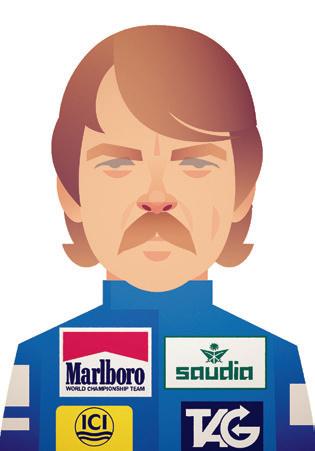
A SUPERB all-rounder, if not the luckiest, ‘Handsome Dan’ won in just about every motorracing discipline. However, he accrued ‘only’ four World Championship wins, his fatal flaw being his ability to leave a team just as it was about to move up the order for one that was destined to take a tumble. His final points-paying win, the 1967 Belgian Grand Prix, was famously at the wheel of a car of his own manufacture, the beautiful Eagle T1 (he also claimed honours at that year’s non-points Race of Champions at the UK’s Brands Hatch, having won both heats).
THIS versatile Kiwi driver tends to be overlooked when discussing great aces. While perhaps remembered more for his achievements in Can-Am sports-racers, ‘The Bear’ was a highly capable single-seater pilot even if his career was one of contrasts. He started from pole only once in 112 World Championship outings, but he stood on the podium 33 times. He won eight races over ten seasons and bagged the 1967 title driving for Jack Brabham’s eponymous squad. He won two rounds in his Championship year, and beat his paymaster to the title by five points.
‘WATTIE’ was a superb driver for whom luck was often a stranger. He shone driving for Paul Michaels’ privateer team during his first full season in 1974, and claimed his maiden win in the 1976 Austrian GP aboard a Penske PC4. Arguably his greatest drive was in 1982, when he won the Detroit GP. He qualified his McLaren in a lowly 17th place, and stormed up the order on a street circuit on which it was difficult to overtake. A year later, he lined up in 22nd place at Long Beach and made his way to the front to record another famous victory.
BROOKS won the nonChampionship 1955 Syracuse Grand Prix for Connaught while studying for his dentistry finals at Manchester University. It marked the first GP win for a British driver in a British car since Sir Henry Segrave triumphed in the 1923 French GP aboard a Sunbeam. Brooks went on to finish third in the 1958 drivers’ standings for Vanwall, and second a year later after jumping ship to Ferrari. Further seasons with a privateer Cooper and with BRM weren’t so successful. Brooks claimed six wins from 38 starts prior to his retirement at the end of the 1961 season.
KEIJO ‘Keke’ Rosberg would perhaps have been just another ‘tail-end Charlie’ had fate not intervened. Scroll back to the end of 1981, and the Finn was at a career crossroads. He had spent the year driving for the woeful Fittipaldi squad, sometimes failing to qualify. His season has been literally and figuratively pointless. Then Williams’ driver Alan Jones abruptly decided to quit. Most of the top names already had contracts in place, so Rosberg took his place. Armed with a competitive car, he went on to claim the 1982 title. Few drivers were ever as exciting to watch as Rosberg in his pomp.
BRITAIN’S first-ever Formula 1 World Champion was also its most tragic. This blond-haired, party-hearty ace made 45 World Championship starts and won three times. ‘Golden Boy’ secured the 1958 drivers’ title by one point from Stirling Moss, having claimed one round to his rival’s four. He immediately announced his retirement from racing, only to perish in a well documented car accident in January 1959. He was only 29. It later transpired that he had already lost one kidney to infection and was suffering problems with the other. As such, he was already destined to die young.
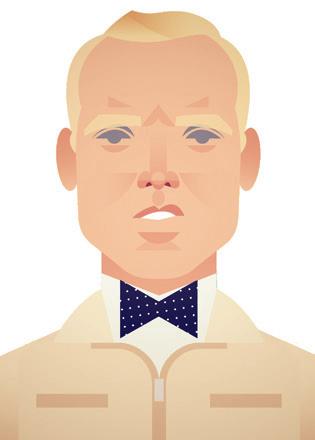
Damon Hill
THIS former despatch rider was late to the party. Hill didn’t start his first race until he was 24 (the same age at which his dad Graham made his own on-track debut), but he won in Formula Ford before making the leap to F3 and F3000. Nevertheless, he tended to linger rather than leap up the ranks. He made a couple of F1 starts driving for Brabham in 1991, when the team was a shadow of its former self. He had by now taken over as test driver at Williams after Mark Blundell vacated the seat.
Aged 32, Hill was promoted to race driver in 1993 over more experienced talents, acting as team-mate to Alain Prost. He claimed three wins and finished third in the drivers’ standing that year (behind Prost and McLaren’s Ayrton Senna). He was crowned Champion in 1996, by which time he had learned that his contract at Williams wasn’t going to be extended. He continued in F1 to 1999, via Arrows and Jordan, but he was never a Championship threat again.
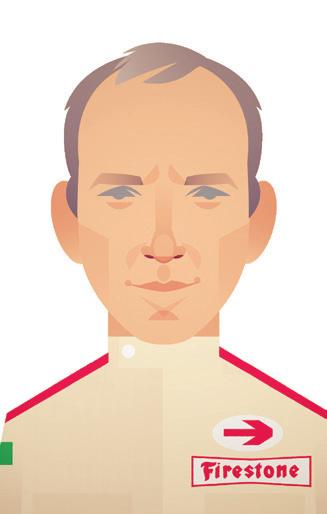
Jacques Villeneuve
CAN an F1 Champion really be viewed as an underachiever?
Gilles Villeneuve’s son showed little sign of talent early on. He made his circuit debut driving an Alfa Romeo 33 hatch, before he navigated through the singleseater ranks in Italy, Japan and the US. He got the hang of it, too, winning the Indy 500 and the IndyCar championship in 1995, before graduating to F1 with Williams in 1996. Jacques bagged four wins en route to second place in the final standings behind team-mate Damon Hill, and he claimed the title a year later at a canter. However, the decision to join BAR for the ’99 season marked the beginning of the end. The squad was built around him, and big things were promised. While paid handsomely, his career flat-lined, and a late spell with Sauber didn’t bring about any great change of fortune. The curtain finally descended after the 2006 German GP.
THAT John Surtees made the transition from racing on two wheels to racing on four appear effortless is testimony to his greatness – but then, all the signs that he was an exceptional talent were there from the outset. After all, he finished runner-up in only his second-ever points-paying F1 race, the 1960 British Grand Prix, driving for Team Lotus – and he started his third, that year’s Portuguese GP, from pole. After a further two seasons treading water with Yeoman Credit Racing and the Bowmaker Racing Team, he
moved to Ferrari in 1963. He was Champion a year later. His 1965 campaign was curtailed by a life-threatening crash at Mosport Park in a Lola T70, an accident that would have ramifications for his future at Ferrari. The famous split probably cost ‘Il Grande John’ and Ferrari their respective World Championships in 1966. Nevertheless, he managed to rub salt in his former employer’s wounds by winning the season finale in Mexico aboard a Maserati-engined Cooper… His final points-scoring victory was for Honda in 1967.
Kimi Räikkönen
IT’S easy to forget the furore that surrounded Räikkönen after he made his F1 debut with Sauber in 2001. He had only one season of car racing under his belt since switching from karting. He graduated from Formula Renault to Grands Prix and made it look easy, his subsequent move to McLaren seeing him finish runner-up in the points in 2003 and 2005. He bagged the 2008 title with Ferrari, only to be dropped late the following year despite his contract running until 2010.
The Scuderia saw Fernando Alonso as a better bet, so it put the Finn on gardening leave (actually, he went rallying and dabbled in NASCAR). Kimi’s F1 comeback with Lotus in 2012 foretold a big-money return to Ferrari, which had previously paid for him to go away. ‘The Iceman’ seemed happy to be a number two driver thereafter, before moving to Alfa Romeo Racing. Some have argued that he squandered his talent, but this monosyllabic fan favourite couldn’t have cared less.
THIS hard-nosed South African was not well liked by his peers – at least not to begin with. Emerson Fittipaldi branded him “a madman”, while Andrea de Adamich blamed him for his careerending injuries (Scheckter triggered a massive shunt at the start of the 1973 British GP, which wiped out half the grid). Jody didn’t lack for speed or bravery, and he soon harnessed both, maturing into a polished performer. He finished third in the 1974 driver standings with Tyrrell, and was runner-up to Niki Lauda in 1977 following a great run with Wolf. He won three races in 1979 and claimed the drivers’ title with Ferrari. Sadly, the Italian squad provided him with a terrible car a year later, to the point where he failed to qualify for the Canadian GP. Scheckter soon retired – unsentimental to the last, he didn’t see the point in carrying on. Tellingly, it would take a further 21 years before a Ferrari driver next won the title.
James Hunt
GIVEN the mythology that has surrounded ‘Master James’ since his death in 1993, not least the Hollywood re-imagining in Rush, it’s easy to forget that Hunt was more than just a sex-obsessed playboy. He was also a bloody good wheelman. Which isn’t to say that his talent was immediately obvious, his tendency to overdrive in the junior categories leading to the unfortunate sobriquet ‘Hunt the Shunt’. He wasn’t above biffing a rival when riled, either: witness his notorious ‘disagreement’ with Dave
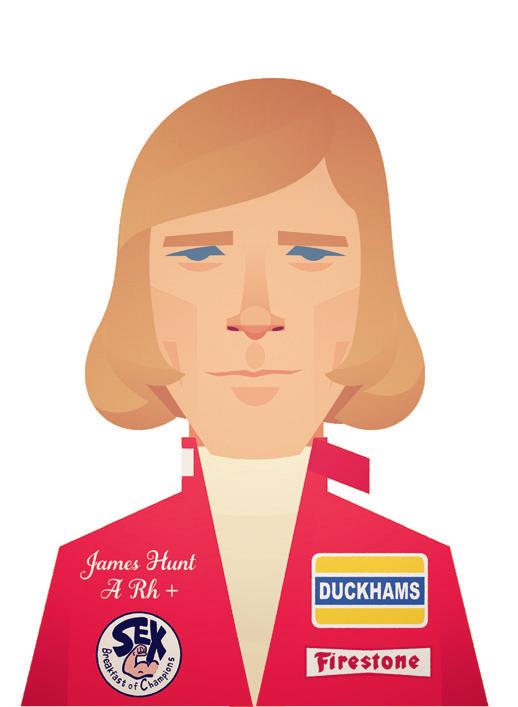
Morgan after they tangled at Crystal Palace in 1970. Nevertheless, he developed as a driver, and he was tailormade for the Hesketh squad with whom he won his first World Championship Grand Prix at Zandvoort in 1975. A year later, he was World Champion driving for McLaren. Hunt claimed that he was at his best in 1977, but his title bid was hobbled by retirements. He was saddled with a terrible car a year later, which heralded a move to Wolf for 1979. He didn’t see out the season.
A RUTHLESS driver, Farina had been a prolific winner in the 1930s but lost his best years to World War Two. He was a month shy of his 44th birthday when he became the first-ever Drivers’ Champion in 1950, having won three of the six World Championship rounds for Alfa Romeo. He bested team-mate Juan Manuel Fangio for the title, but dropped to fourth a year later with one win. As a Ferrari driver he was often a support act to Alberto Ascari, but he won the German Grand Prix in ’53 when he was 47 years old. Farina retired from Formula 1 in 1955 following Ascari’s fatal accident, but he wasn’t completely done with racing: witness his bid to compete in the Indianapolis 500 (he failed to qualify in 1956 and withdrew in 1957). He subsequently quit for good, only to perish in a car accident in 1966 en route to Reims. He was due to attend the French round of the World Championship and act as Yves Montand’s double during the filming of Grand Prix.
THINK back to the 2016 Brazilian GP, and McLaren was at its lowest ebb. Jenson Button finished 16th and last at the venue where he had clinched the drivers’ crown seven years earlier. It was further proof, if proof was needed, that he was right to walk away from F1. There would be one final outing, though, as he subbed for Fernando Alonso at Monaco in 2017, yet it was but a mere cameo for a driver who, at his peak, was among the very best. Button had made his F1 debut in 2000 driving for Williams. He won at his 113th attempt (the 2006 Hungarian Grand Prix for Honda), but he rarely had a worthy car at his disposal until 2009, when he starred for the one-year-only Brawn squad and claimed the title. His subsequent move to McLaren raised eyebrows. Naysayers reckoned he would be eaten alive by his team-mate Lewis Hamilton. Instead, Button finished second in the 2012 title race to Red Bull’s Sebastian Vettel.
Ronnie Peterson
PETERSON wasn’t a brilliant test driver. He wasn’t great at setting up a car, either. He was, however, blessed with preternaturally quick reflexes. He could coax a performance out of a deficient car that made him electrifying to watch. ‘Super Swede’ was also without guile, and one of few drivers who had no enemies in the pitlane. He made his debut in F1 driving Colin Crabbe’s privateer March 701 in 1970 (Crabbe’s Antique Automobiles Racing Team tag being the least racy in the history of the sport).
Nevertheless, Peterson was at his best during his two tours at Team Lotus. Tragically, this ten-time race winner died after a multi-car shunt at the start of the 1978 Italian GP at Monza. His Type 78 was assisted into the barriers and caught fire. He was conscious as he was taken from the car. Peterson had leg injuries, yet he wasn’t deemed to be in danger; he was later diagnosed with an embolism, and he died the following day.
EQUALLY at home racing on dirt at Langhorne Speedway or hustling a stock car at Daytona, Andretti was a brilliant allrounder. Born in Montona, Italy (now Motovun, Croatia following its annexation by Yugoslavia at the end of World War Two), he emigrated with his family to the US in 1955 and settled in Nazareth, Pennsylvania. By the end of the 1960s, he had already bagged three USAC National Championships.
Andretti made his F1 debut in the 1968 US GP at Watkins Glen. What’s more, he qualified his Lotus Type 49B on pole. He bagged his first F1 win, the 1971 South African GP, with Ferrari, but didn’t fully commit to the series until 1975. He took the 1978 drivers’ title with Team Lotus, but failed to add to his tally of 12 points-paying GP wins in subsequent seasons with the Hethel squad. Following an unsuccessful foray with Alfa Romeo in 1981, he made only sporadic appearances in F1 with Williams and Ferrari thereafter.
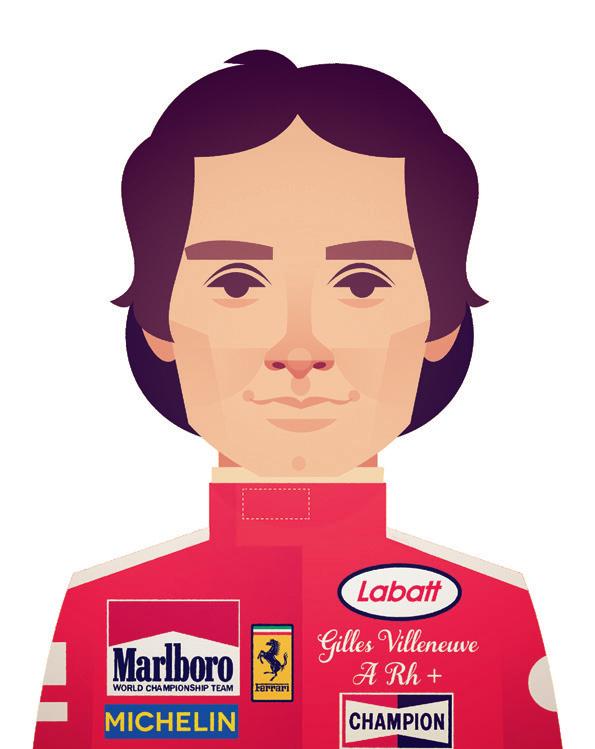
STATISTICALLY, this FrenchCanadian wasn’t among the very best – but statistics reveal only so much. Villeneuve could make an F1 car dance like no other, the former snowmobile racer defying gravity as his machinery teetered on the edge of oblivion. Niki Lauda labelled him “...the craziest devil I ever came across in F1”. Enzo Ferrari called him a latter-day Tazio Nuvolari. However, Gilles was anything but a madman. McLaren first took a punt on him, yet ran him
only once (the 1977 British GP). Ferrari was more receptive. Each of his six wins with ‘The Reds’ belied his rep for overstepping the mark: witness his victory at Jarama in 1981. He headed a train of faster cars for most of the race with barely two seconds blanketing the top five by flag fall. He was flawless. His life came to a violent end during final qualifying at Zolder in May 1982. His loss was a tragedy, as was the fact that he had mostly raced second-rate cars.
Brabham
‘BLACK Jack’ belongs in a field of one, being the only driver ever to win the World Championship in a car bearing his own name. The Australian’s aggressive driving style was honed on short-track ovals before he ventured into ‘road racing’. He was at the vanguard of the mid/ rear-engined revolution in F1, winning the 1959 drivers’ title with Cooper. He successfully defended his crown a year later with the Surbiton squad. He was also highly astute, and a poor 1961 season saw him form Motor Racing Developments alongside Ron Tauranac. He scored six points in 1962 aboard his own-brand car, and a year later the Brabham outfit came third in the constructors’ points. The future knight also brought Repco to the table, the firm developing an engine that powered him to his third drivers’ gong in 1966. A year later he was second to team-mate Denny Hulme, and Brabham was still competitive in 1970 before he finally hung up his helmet.
PIQUET’S on-track achievements have been obscured by his off-colour proclamations of late, but the Brazilian and controversy have long between intertwined. Loved by his mechanics and often loathed by his rivals, he always was quick to proffer a laser-guided barb. He made his F1 debut with Ensign, retiring from the 1978 German GP before he raced a BS Fabrications McLaren. However, his career took flight only after he moved to Brabham a year later.
A drivers’ title first came in 1981, and again in 1983, but Brabham’s form then slipped. Piquet signed for Williams for 1986, and instantly fell out with team-mate Nigel Mansell, whom he expected to be subservient. Nelson railed that the 1986 title was lost to McLaren’s Alain Prost because Williams didn’t opt for team orders, but he claimed his third gong a year later. He then trod water at Team Lotus before a late career renaissance with Benetton.
DRAMA, drama, drama. Nigel Mansell always provided a spectacle. Thick-skulled and thin-skinned to some, a very British hero to others, the Midlander enlivened F1 for a decade and a half. He also took the IndyCar title at his first attempt, having flounced out of GP racing, only to make a theatrical return that heralded an abrupt and messy divorce from racing’s premier category.
Yet long before ‘Mansell Mania’ gripped the UK, before he
bagged 31 World Championship victories with Williams and Ferrari, this sensitive soul was a Team Lotus man. Few thought he was a potential superstar, not least manager Peter Warr. When Nigel moved to Williams for ’85, Warr said: “He’ll never win a GP as long as I have a hole in my arse.” This proved a little rash. Mansell bagged a couple of wins before the year was out, and damn near won the title in 1986 and again in ’87. He was finally crowned in 1992. Top 50 greatest F1 drivers
IT had been a long time coming. Jochen Rindt, the flamboyant Austrian with the boxer’s nose, had finally claimed a World Championship GP win. The Team Lotus man, who had virtually owned Formula 2 for as long as anyone could remember, had belatedly broken his duck in style. Victory in the penultimate round of the 1969 season at Watkins Glen was rewarded with more than mere silverware, too. This being the era before prize money was standardised, Rindt pocketed one of the biggest cheques in motor sport.
This win in Upstate New York was but a mere opening salvo. Only a year later Rindt would accrue five more pointspaying GP victories, four of them consecutively. He was anointed as World Champion by season’s end. Tragically, though, he was dead by the time the title was bestowed. His time on earth had come to an abrupt end against the Armco at Monza during practice for the Italian Grand Prix.
HE was charming and debonair, at ease in any social setting. He was also a grafter with a will of iron, who worked harder than most to get his feet under the top table. Those in the know were always quick to point out that Graham Hill wasn’t a ‘natural driver’, but his accomplishments trumped most of his rivals’. Dubbed ‘Mr Motor Racing’ by the BBC, the Londoner claimed two F1 drivers’ titles in addition to Indianapolis 500 and Le Mans 24 Hours honours – but even now he tends to be regarded as being somehow a lesser talent. The remarkable part is that Hill was in his mid-20s before he so much as owned a car. What’s more, the first race he ever witnessed was from behind the wheel. That was in 1954. He won his first F1 crown eight years later driving for BRM, and his second in 1968 with Team Lotus. He was never the same driver following his ghastly accident at Watkins Glen in 1969, yet he soldiered on to 1975.
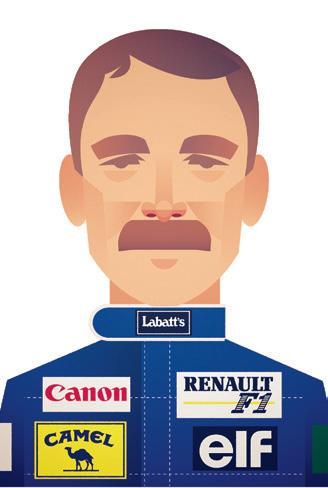
THINK back to the 1990 British F3 season, and it was a case of the two Mikas: Häkkinen and Salo; which one would have the greater career? The latter departed to Japan before eventually making it to F1, while the former graduated immediately via Team Lotus. The Norfolk squad was in its twilight years, but the Finn showed flashes of form over the next two seasons. However, it was upon taking the role of test driver at McLaren in 1993 that his career headed into the stratosphere. Häkkinen landed a race seat after previous incumbent, the hapless Michael Andretti, gave up with three rounds left to run and headed back to the US. Mika made his McLaren race debut at Estoril for the Portuguese Grand Prix, upsetting the established order by out-qualifying his team-mate, Ayrton Senna. Häkkinen was hamstrung by inferior equipment for the next few seasons, before the stars aligned in 1997 and he claimed his first win. Back-to-back titles in 1999-2000 ensued.
THIS fiery Spaniard burned every bridge he crossed, but few drivers have ever loved motor racing more. Having earned his spurs with Minardi in 2001, he shone at Renault, taking the drivers’ title in 2005-06. Moving to McLaren for the 2007 season should have resulted in more silverware. Instead, the contract was annulled after only one year amid much acrimony, Alonso being unhappy that his team-mate Lewis Hamilton wouldn’t act as his tail-gunner. Cue a return to Renault, before he jumped ship to Scuderia Ferrari. It’s fair to say that Alonso outperformed his machinery, and for a while at least it looked as though he was going to rack up more titles. It didn’t happen. He remained to the end of 2014, but his confidence in the Scuderia had long since evaporated, while a return to McLaren yielded nothing but frustration. A period racing elsewhere heralded an F1 comeback with Alpine and latterly Aston Martin. Victories may not have been forthcoming in the twilight of his career, but the fire clearly hasn’t been extinguished.
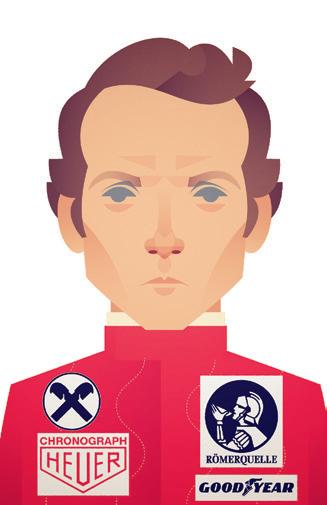
THAT Fittipaldi made his F1 debut in the 1970 British GP was remarkable in itself, not least because he had savoured his first British summer barely 12 months prior. Already a seasoned single-seater and saloon-car veteran at home, it was only after the Brazilian was taken under Jim Russell’s wing in August 1969 that he soared. 1970, his first full season in Europe, saw him graduate to F2 and then F1, and he had claimed his first GP before the season was out at Watkins Glen. His first drivers’ title followed in 1972, although he was aggrieved that his mentor, Colin Chapman, didn’t opt for team orders late in 1973. He felt that allowing team-mate Ronnie Peterson to rob him of points cost him that year’s crown, hence the move to McLaren. He bagged his second title in 1974, only to throw it all away on leaving to join his brother Wilson’s Copersucar squad in 1976. Five seasons with the team realised little but misery.
THIS second-generation ace won GPs prior to the arrival of the World Championship. However, Scuderia Ferrari had no answer to the all-conquering Alfas in 1950. Nevertheless, it was Ascari who broke the stranglehold a year later to win the German and Italian rounds. With Alfa Romeo withdrawing at the end of the year, it soon became clear that Ferrari would face little opposition going into 1952, the year the World Championship switched to Formula 2 regulations.
Ascari would have won every round that season had he not decided to skip the Swiss GP to prepare for a tilt at the Indy 500. He continued from where he left off in 1953. Victory in that year’s Swiss GP was his last, though, if only at World Championship level. The move to Lancia the following year was hampered by the lack of a race-ready car. He was leading the 1955 Monaco GP only to plunge into the drink. He died at Monza four days later.
DESPITE his 25 wins, Austrian Lauda is primarily remembered for the accident during the 1976 German GP that almost claimed his life. The reigning Champion was on course to seal back-toback honours with Ferrari, only to crash out. He suffered extensive burns to his head and face. His lungs were also seared, which led to him receiving last rites. Few thought he would survive, but he returned to competition barely 40 days later by sheer force of will.
‘The Rat’ had overcome
family objections to become a racing driver. A ‘pay driver’ with March and BRM in 1972-73, he nevertheless attracted the attention of Ferrari. Lauda won three rounds in 1974 prior to taking his first title a year later. He claimed his second crown in 1977 before moving to Brabham. He retired partway through the 1979 season, only to be tempted back by McLaren after two years away. He won his third gong in 1984, and retired for good a year later, his legendary status already assured.
FOR a time it looked as though this Monty Python-loving German was destined to be the most successful F1 driver ever. He won the 2008 Italian GP during his first full season, becoming the then youngestever winner in F1. He ended the following year as runner-up to Jenson Button in the points. He accrued four consecutive drivers’ titles from 2010 for Red Bull, claiming a beliefbeggaring 13 wins in 2013 alone (nine of them consecutive). However, you could argue that the bloom left the rose during Vettel’s six-year stint at Ferrari that began in 2015. He ended that first season with three wins and seven podium placings, but he didn’t record a single win in 2016. He led the points in 2017 until the Italian GP, but lost out at season’s end to Lewis Hamilton. He was second again in 2018, fifth in 2019 and 13th in 2020. He then switched to Aston Martin, before retirement beckoned at the end of 2022.
THINK back to the 1965 Belgian GP on the old Spa circuit. It rained, as was to be expected, and Jim Clark overcame his distaste for the Ardenne venue to record his customary win. In second place, and the only unlapped runner, was Jackie Stewart in his third World Championship start. The Scot shone among the murk, leaving his rivals in no doubt that his was a rare talent. The future knight claimed his first win with BRM in that year’s nonpoints BRDC International Trophy Race at Silverstone, and took his first World Championship victory at Monza after battling his team-mate, Graham Hill. Stewart was only ever going to go so far with BRM, though. ‘Wee Jackie’ came into his own after his former F3 entrant Ken Tyrrell ran him in assorted Matra, March and own-brand Tyrrell machinery. Stewart’s tally of 27 wins from 99 starts to the end of ’73, plus three titles, put in him in rarefied company.
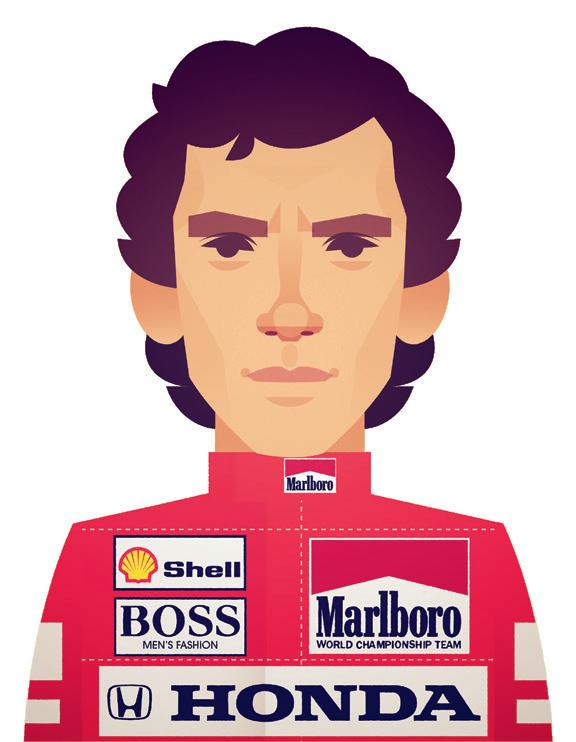
Ayrton Senna
WE can almost smell the indignation. To some, Senna was the greatest F1 driver ever. However, this three-time World Champ has since been deified on screens large and small, some of his more extreme quirks having been glossed over. Ayrton’s self-belief was bulletproof, and the way he decided the 1990 World Championship at Suzuka by using his McLaren as a battering ram, taking out Ferrari’s Alain Prost at the first corner, appalled many. Looking past his blind spots, Senna had genius-like gifts. His 41 wins and 60 poles were testament to that. Any witness to his 1993 performances aboard a so-so McLaren-Ford as he battled the mighty WilliamsRenaults is unlikely to forget them. The opening lap of that year’s Donington GP alone is the stuff of legend. To a generation of fans, that black weekend at Imola in 1994 when Ayrton died, Roland Ratzenberger having preceded him a day earlier, lives on in infamy.
VERSTAPPEN spent only one season in the lower ranks before being taken on by Red Bull’s sister team, Toro Rosso, in 2015. He was just 17 years old. A year later, he was called up to replace Daniil Kvyat in the senior team barely five races into the season. He promptly won the Spanish GP. Max had added nine more victories to his tally by the end of 2020 before the Red Bull steamroller flattened all that came before it. The Dutch star bested Lewis Hamilton for the 2021 title in controversial fashion at the Yas Marina season finale, before cruising to victory in 2022. If Verstappen had demoralised his rivals, it was only going to get worse for them. His record-breaking 2023 campaign was flawless. The 2024 season, by comparison, required him to sweat a little, but he still emerged on top. F1’s Dick Dastardly to some, a virtuoso to others, he blurs the line between what is possible and what is permissible.
Stirling Moss
FAMOUSLY lauded as being the greatest driver never to be crowned World Champion, Moss was for many years the benchmark driver. He was a brilliant all-rounder, and one who claimed 16 points-paying Grand Prix wins, often in cars that weren’t necessarily the class of the field. And that is before you factor in all the non-series victories. His star turn at Monaco in 1961 aboard the Rob Walker-fielded Lotus Type 18 in particular was a masterclass in defensive driving. He never put a wheel wrong as he batted away the attentions of the much faster Ferraris driven by Phil Hill and Richie Ginther.
Then there was his sense of fair play. Mike Hawthorn was crowned in 1958, but it could have been a different story. Moss defended his rival after the latter had reversed onto the track after spinning and then stalling his car during the Portuguese GP. The upshot was that Hawthorn wasn’t penalised. He kept his six points for finishing second, and beat Moss to the title by a solitary point.
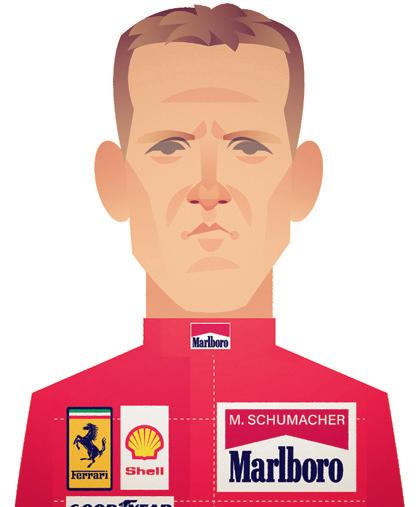
ALAIN Prost rarely had an ‘off day’. His meticulous approach to racing assured as much. He belatedly became France’s first World Champion in 1985 and claimed repeat honours a year later, only for Ayrton Senna to join McLaren as his team-mate and make life intolerable. Their toxic relationship often spilled over, their coming together in the season finale in 1989 seeing the title decided in Prost’s favour. He jumped ship to Ferrari and almost sealed the 1990 crown, only to fall foul of his vengeful rival at the last gasp.
Dubbed ‘The Professor’ by the media, this deep-thinking ace was also a political animal who had previously been canned by Renault. Criticism of Ferrari’s 1991 challenger similarly ensured that Prost was shown the door before the year was out (to be fair, his comments about his car were accurate). A year spent at home in 1993 preceded a victorious run in 1994 with Williams. Having taken his fourth title and 51 wins, he called time on his driving career.
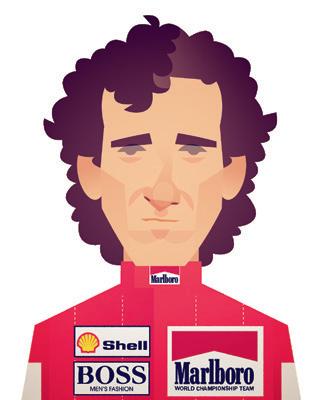
HIS record speaks for itself: 91 Grand Prix wins, seven drivers’ titles, 68 pole positions, 1566 career points… Schumacher in his prime was extraordinarily good, and his prime lasted a long time. Having made an impression on his debut at Spa in 1991 driving for Jordan, the German excelled at Benetton, claiming back-to-back titles in 1994-95. If anything, his greatest achievement was transforming Scuderia Ferrari from a laughing stock into a winning machine. The stats don’t lie: Schumacher started 179 Grands Prix for the Maranello squad between 1996 and 2016. He won 72 times and claimed a further five titles. He moulded the team in his own image, and could conceivably have added the 1997 title to his tally had he not chosen to drive into Williams’ Jacques Villeneuve during the Jerez decider. And therein lies the rub. This wasn’t an isolated incident. When pressured, Schumacher invariably strayed into the realms of the professional foul. He couldn’t help himself.
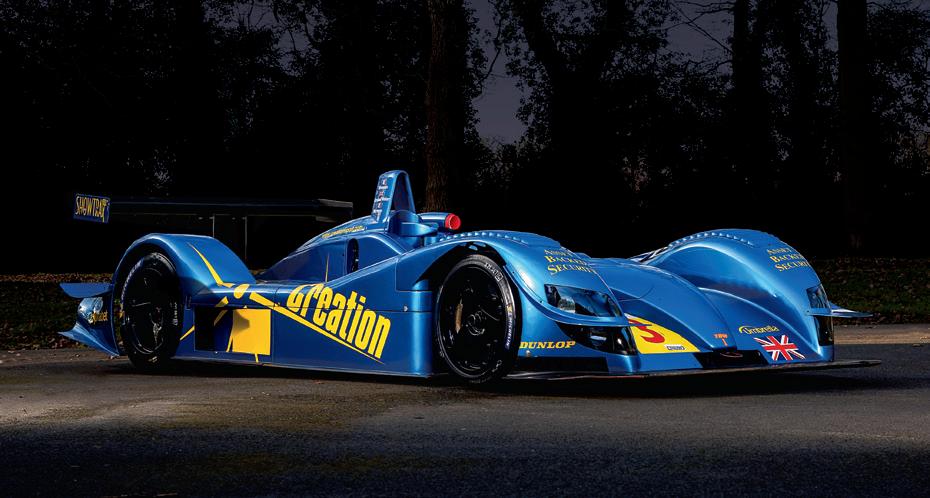
8 podium finishes
15 top 3 qualifications in period
Sequential gearbox with paddle shifts 2004 DBA 03S ZYTEK LMP1
2001 RILEY & SCOTT MKIIIC LMP900 Ex

A car to win the ERL Championship & Le Mans Classic
Entirely restored by Scott Sport
Fast and easy to maintain

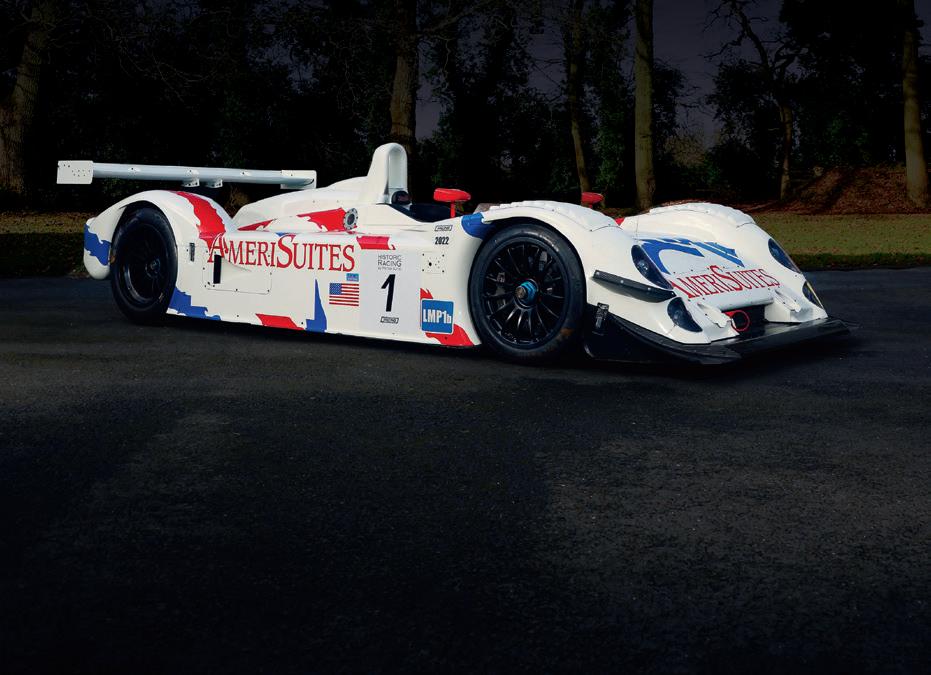
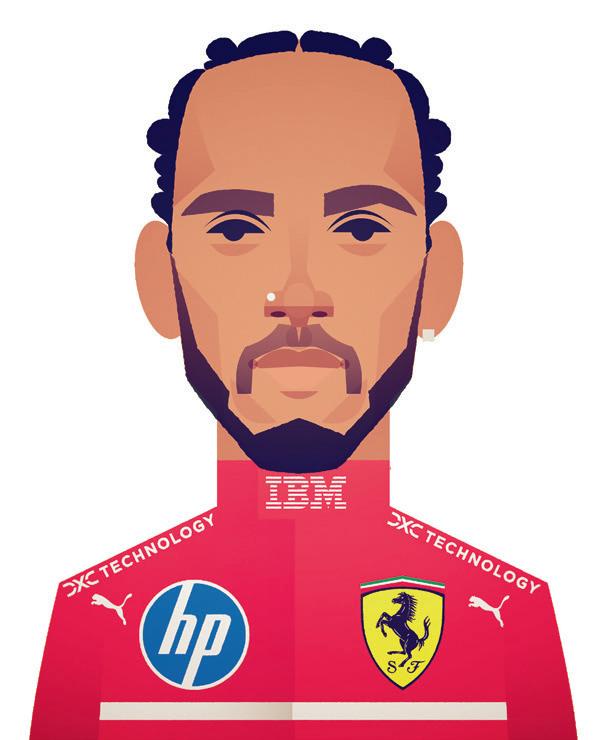
Lewis Hamilton
WHERE to start? Adored by many, less so by others, Stevenage’s greatest export is the most successful driver in F1 history. Hamilton holds the record for wins (105 to the end of 2024). He has accrued seven titles (in 2008 with McLaren and 2014-15, 2017-19 and 2020 with Mercedes).
Unlike many of his contemporaries, he wasn’t born with a silver spoon wedged in his gullet. What’s more, he has had to endure the sort of flack that is nothing to do with
his ability and everything to do with his appearance. True, Sir Lewis (he was knighted in 2021) can also be hard work, especially if you are media. Some may also argue that he is past his best, but somehow we doubt it. His record speaks for itself. He has never finished lower than sixth in the World Championship. The young tyro who almost won the title in his first season back in 2007 is now an elder statesman – and still superquick when it matters.
Top 50 greatest F1 drivers
YOU cannot compare eras of motor racing, at least not without adding endless codicils. Nevertheless, this Argentinian superstar was the best of his generation, and his record still makes for incredible reading. The humble-born son of Italian immigrant stock started working in a garage at 11 and subsequently made his name in long-distance road races (victories including the 5900mile Gran Premio del Norte). He was 38 when he prompted jaws to slacken during his maiden season in Europe, his 1949 haul including wins at Perpignan, Marseilles, Albi and Monza. He finished second in the inaugural World Championship a year later driving for Alfa Romeo, winning three of the six rounds. He claimed his first title in 1951.
And so on. Always a canny operator, ‘El Maestro’ moved between teams and made the most of every opportunity. He was also blessed with incredible stamina as well as sublime driving skills. Mercedes-Benz bent over backwards to sign Fangio upon his re-entry of the Grand Prix arena in 1954. He won the first two rounds with Maserati that year, and four aboard the Silver Arrows, claiming his third crown for the German squad in 1955. Driving for Scuderia Ferrari in 1956 was a means to an end: he had few options after MercedesBenz withdrew from racing.
He added three more World Championship Grand Prix wins to his tally in 1956, to claim his fourth title from Stirling Moss (he took over Luigi Musso’s car in Argentina, and Peter Collins’ car at Monza). Fangio hated the feudal atmosphere at Ferrari, though, and he returned to Maserati for 1957. Cue his fifth and final title. This legendary driver made only fleeting appearances a year later before retiring, having claimed 24 wins from 52 starts.
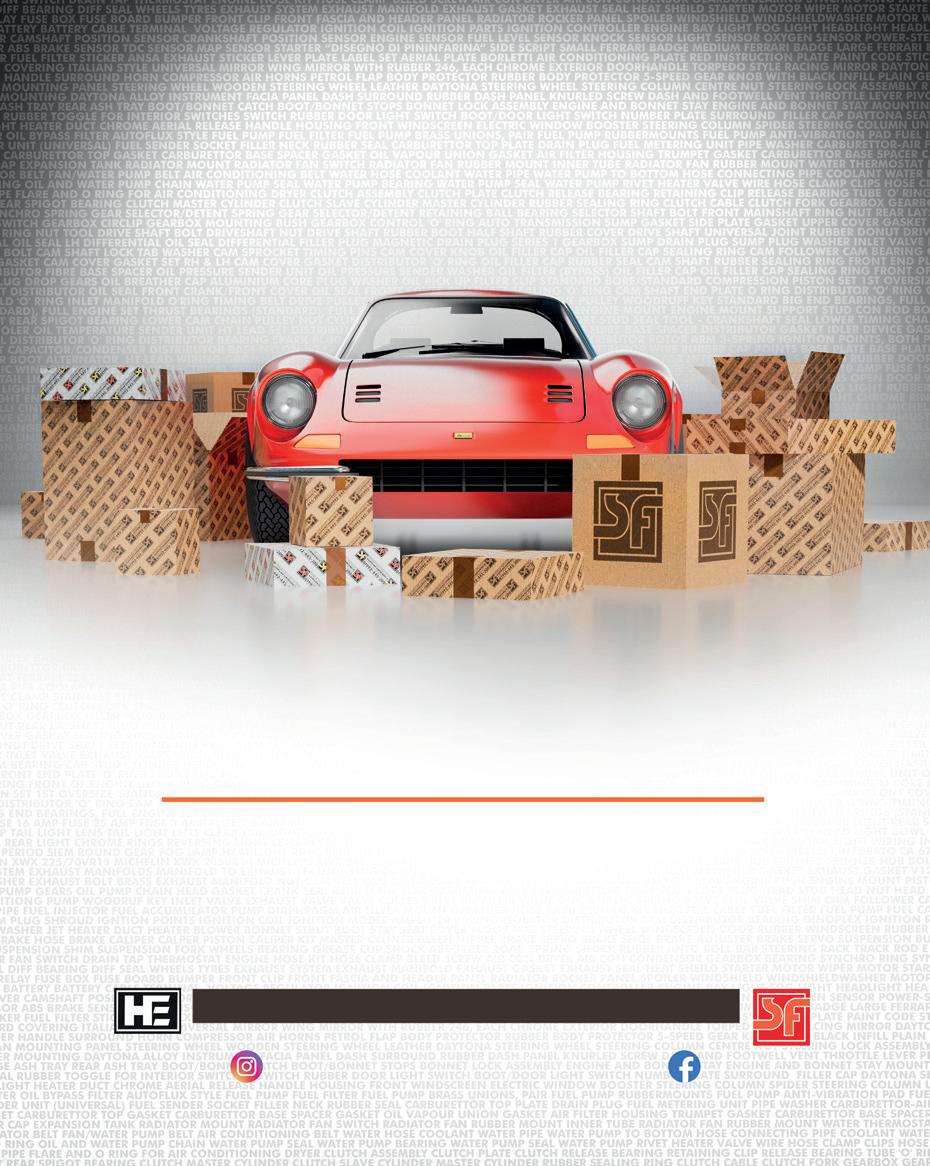

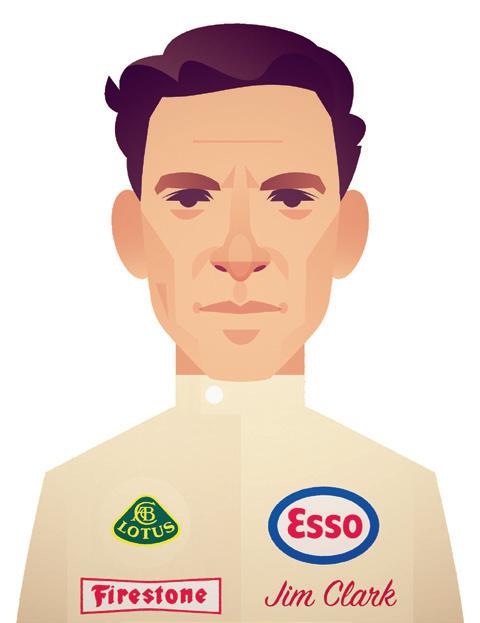
AS golden ages go, Formula 1 in the 1960s had a distinctly green and yellowish tinge. Team Lotus invited hyperbole, its talismanic chief Colin Chapman forever looking for the next great leap forward. He found a kindred spirit in the greatest racing driver of his generation, and one that we posit was the best ever. Whichever side of the debate you cleave it, there is no denying that Jim Clark had that extra-special something. Lotus engineer and designer Len Terry labelled the Scot a ‘car whisperer’ – and he wasn’t one to call a spade a hand-held gardening implement. So far, so flowery, but consider this: from 1960 to early ’68, Team Lotus claimed 26 World Championship Grand Prix wins. Clark took 25 of them. He did so from just 72 starts. From a statistical point of view, this equates to a strike rate of 34.7 percent. Only Fangio and Ascari top that (40.62 and 47.06 respectively). Even then, statistics only tell you so much. Jim started 33
rounds from pole position, and claimed the fastest lap 28 times. And that is before you factor in all the many successes in non-points Grands Prix.
Clark claimed the drivers’ title twice (1963 and ’65) and was unlucky not to have won at least two more. It’s also worth considering that he was competing at a time when bullet-proof reliability wasn’t a given. He took the 1965 crown with three rounds to spare, and did so despite missing the Monaco GP (he was otherwise engaged racing in the Indianapolis 500, which he won having been robbed of victory two years prior). Oh, and he also bagged that year’s Tasman Cup, not to mention British and French F2 titles.
But this Top 50 is strictly a breakdown of F1 greats rather than multi-discipline stars. The point is that the sheep farmer’s son from Duns was in a class of his own. His former team-mate Trevor Taylor said: “I had been F3 champion, then Formula Junior champ, and I expected
to be F1 Champion. I had to work at what I did, but Jimmy was a complete natural. I have followed him and there were times when he would be on full opposite lock. I couldn’t believe that he could control it. His mind was on top of what he was doing 100 percent.”
Nevertheless, Clark died aged 32 after crashing his Lotus Type 48 barely four laps into a Formula 2 race at Hockenheim in April 1968. He wasn’t even meant to be in Germany; he was originally down to drive a Ford P68 sportsprototype in the BOAC 500 at Brands Hatch, but contractual obligations came into play.
Oddly off-form for a man so used to streaking off into the distance, Clark was battling for eighth place in the Deutschland Trophy race when his car left the road on the tree-lined circuit, most likely due to suspension failure. He didn’t stand a chance. His standing in motor-racing lore hasn’t diminished in the meantime. If anything, it has been amplified.



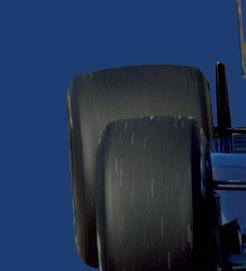








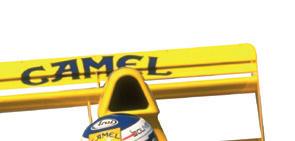
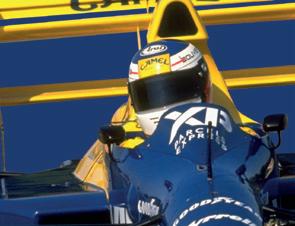


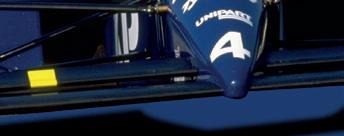




Jean Alesi’s first Grand Prix Car - used at the ‘89 French GP by Alesi to finish an impressive 4th overall in his first F1 race at Paul Ricard. Designed by Harvey Postlethwaite and Francios Migeot, the Tyrrell 018 was a a highly e ective F1 car for the Tyrrell Team, with podium finishes for driver Michele Alboreto earlier in the season, and a Fastest Lap for Jonathan Palmer the car was a competitive proposition against the might of McLaren and Ferrari. Alesi’s performance immediately made him one of the stand out F1 drivers and brought him to the attention of Williams and Ferrari. Completely rebuilt by Front Row Racing, this car has freshly built 3.5L Cosworth DFR engine running Motec management, rebuilt gearbox, suspension and new fuel cell. O ered for sale complete with running equipment, the car wants for nothing. This is an iconic car from the glory years of 3.5L Formula 1 and ideal for some of the excellent F1 support events. Please call for more info.
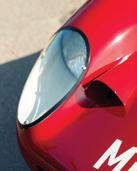
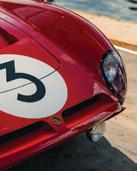
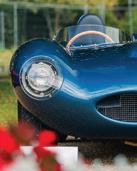
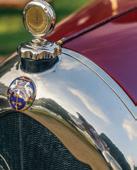
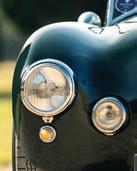

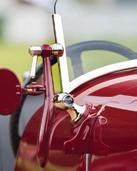
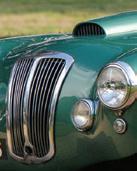
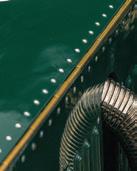
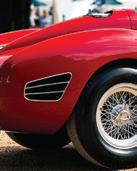
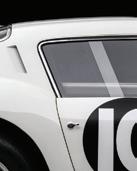
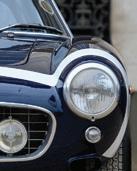
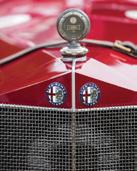
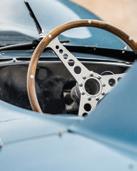

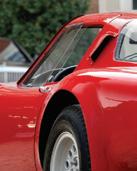
CONCOURS OF ELEGANCE
HAMPTON COURT PALACE | 5–7 SEPTEMBER 2025
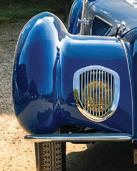
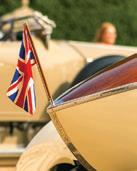
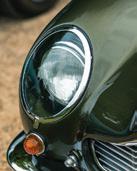

PRESENTING PARTNER
Market Watch: Buying a MercedesBenz SLR McLaren 184
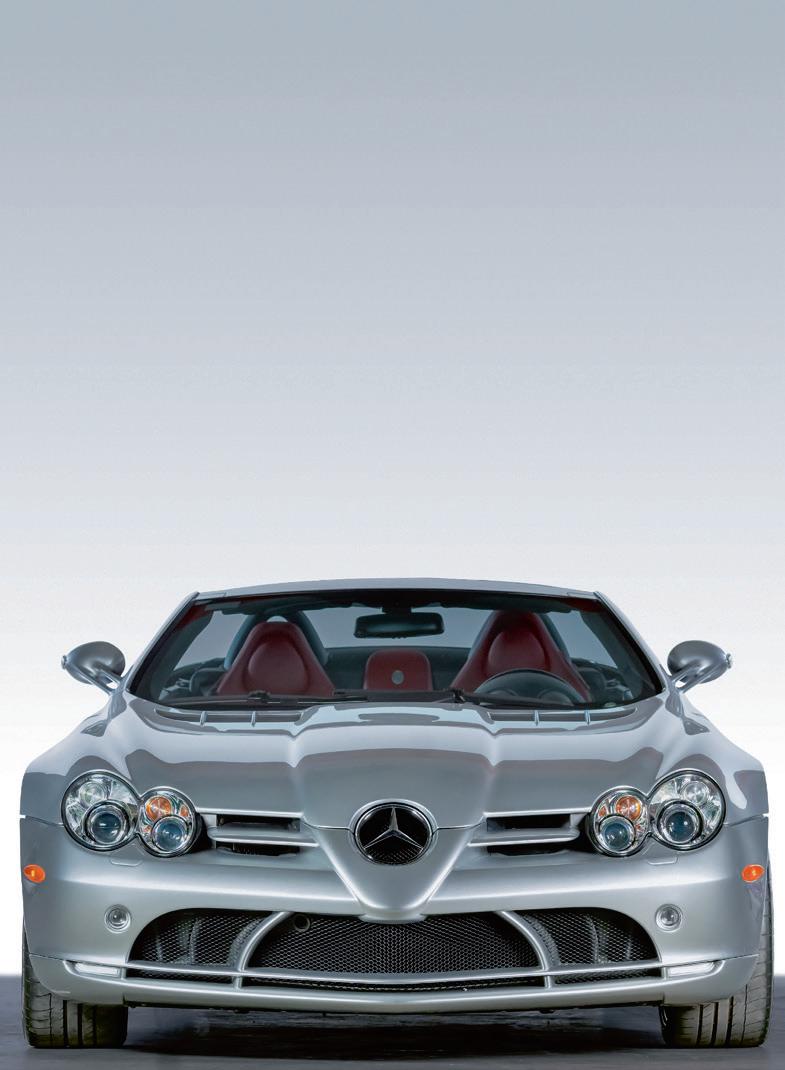
Market Analysis: What’s behind the auction headlines? 190
Watches and art: F1-adjacent brands, Kevin McNicholas 192
Collecting: Parts and memorabilia from F1 Authentics 194
Books and products: Latest must-reads and luxury goods 196

By Richard Dredge
This high-performance supercar leveraged Mercedes-Benz and McLaren’s Formula 1 partnership to new heights – and it still stands out two decades on

WE THOUGHT LONG AND hard for this Formula 1-focused issue of Magneto, about which car should feature in this slot. A Ferrari would have been the obvious choice because there are plenty that fit the bill, but instead we settled on something less predictable that also offers two titan brands for the price of one. The car? The Mercedes-Benz SLR McLaren.
Launched to the general public in November 2003, the SLR formed a part of the early-2000s ‘Holy Trinity’ of supercars alongside the Ferrari Enzo and the Porsche Carrera GT – and this is where the SLR McLaren started to struggle. The Enzo and Carrera GT both had their identities; they were limited-production, mid-engined, lightweight and nimble supercars, designed and developed purely with performance in mind.
When it came to the SLR McLaren, certain reviewers were less than effusive. Some were expecting a successor to the McLaren F1; the SLR’s architecture was designed by Gordon Murray after all. Yet this new hypercar was unlike anything else Mercedes or McLaren had previously built, or that was in existence elsewhere. Despite boasting a carbonfibre monocoque, a supercharged 617bhp V8 engine and carbon-ceramic brakes, the SLR still tipped the scales at more than 1700kg thanks to the presence of ample creature comforts. Neither was its automatic transmission universally liked.
Not only did critics struggle with the SLR’s identity, but they weren’t too enamoured by the numb-feeling pedal resulting from the SBC brakeby-wire system combined with those carbon-ceramic discs, even though the stopping power was immense. Then there was the steering, which was precise but heavy; this led to nervous handling, especially at low road speeds.
The SLR may be flawed dynamically, but it is blisteringly fast, with the ability to do 0-62mph in 3.8 seconds and 0-100mph in 7.4 seconds on the way to a top speed of 208mph. Any nervousness at low speeds disappears once in motion, because the flat-bottomed floor allows the upper aerodynamics to generate huge downforce. This can be felt especially under braking,
helped by the boot-mounted airbrake and diffuser pushing the car into the ground. The SLR McLaren may look a little like an SL55 AMG, but don’t be fooled; it is in another league.
We got our first glimpse of the SLR in 1999, when Mercedes unveiled the Gorden Wagenerdesigned Vision SLR (Sport Light Racing) at the Detroit Motor Show. The car was a sensation, just like the Vision SLR Roadster concept that broke cover later that year at the Frankfurt Motor Show.
After Mercedes-Benz bought 40 percent of McLaren, a deal was made to productionise the concept cars, with the latter designing the architecture and assembling the vehicles at its McLaren Technology Centre in Woking, Surrey. AMG would be responsible for developing the engine and driveline – but while McLaren wanted to create a cuttingedge lightweight supercar, Mercedes pressed for a luxurious grand tourer. Gordon Murray preferred to mount the engine in the middle, yet Merc insisted the SLR remained front mid-engined. No wonder the car emerged with a confused identity.
Murray designed a carbon
‘The SLR has aged incredibly well – and the tech on it was way ahead of its time’
monocoque that enabled the engine to be fixed into an aluminium subframe that bolted to the crash structure, pushing the motor as close to the bulkhead as possible. This allowed a perfect centre of gravity as well as better weight distribution. Power came from the bespoke M155 unit built by AMG, a 5.4-litre supercharged and twinintercooled V8, with a single overhead cam and three valves per cylinder. The 722.6 AMG Speedshift R automatic transmission was also specially developed, with three sets of three change modes, which could be driven in automatic or manual setting via paddle-shifters.
A string of variations on the SLR theme followed over the next few years. The 722 Edition coupé was launched in 2006, limited to 150 units. It came with bigger wheels (19 inches, from 18 inches) and brakes (390mm, from 370mm), revised aerodynamics and extra power (641bhp). The suspension was also stiffened and lowered by 10mm, while the interior was a mix of bare carbonfibre and Alcantara.
The SLR Roadster came next, in 2007, with an electric fabric roof and butterfly doors; it retained all of the cabin and luggage space despite its drop-top mechanism. In 2008 ten SLR Crown Edition cars were built for the King of Bahrain; each was made in a different colour and gifted to other Emirati royals. Next came the 722 S in 2009. Limited to 150 examples, just like the 722 coupé the S was available only in Roadster form. The final production SLR, the Stirling Moss,
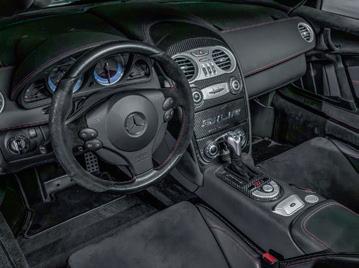
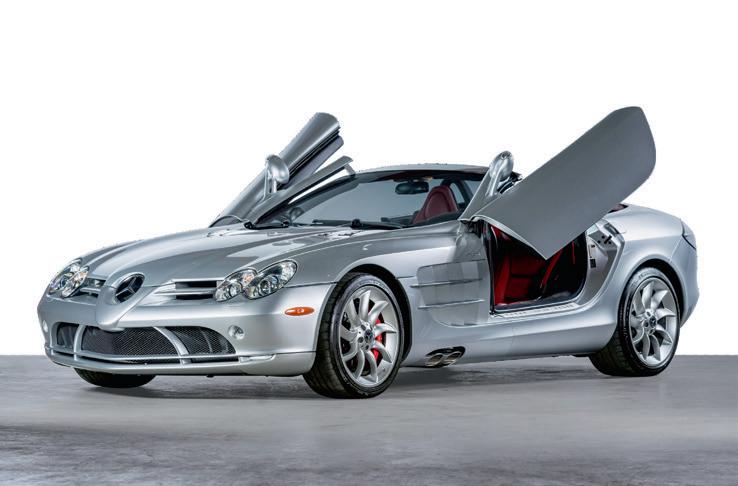
also arrived in 2009. Just 75 examples of this 641bhp barchetta edition were sold, strictly by invitation only to existing and original SLR McLaren clients.
Mercedes intended to race the SLR, and in 2007 it commissioned RML (Ray Mallock Ltd) to produce 21 SLR 722 GT cars for FIA homologation and to create its own racing series. For £600,000 you could have your own 722 GT and be paired with an ex-Formula 1 driver for a season.
However, amid the financial downturn of the late 2000s only 12 customers were found, the one-season championship had thin grids, and any hope of the 722 GTs entering the FIA GT Championship were dashed when the FIA pulled the plug on the homologation. Mercedes was forced to buy back most of the cars, and only three have appeared in private ownership since then.
In the meantime, MSO (McLaren
THIS PAGE
When new, the SLR battled with its ‘Holy Trinity’ contemporaries the Ferrari Enzo and Porsche Carrera GT.
‘Even now it’s easy to find a really good SLR for less than the original list price’
Special Operations) has continued to improve and tune the SLR without input from Mercedes. Notable models include the McLaren Edition, which was a £150,000 upgrade with revamped aerodynamics, redesigned and improved steering and suspension, and a titanium ceramic-coated exhaust system fitted for additional power and sound. Each owner could have a complete bespoke paint and interior trim package, meaning each car was unique.
Later on, the SLR by MSO would offer further improvements to the front splitter and rear diffuser, and feature lighter five-spoke alloys, a lightened exhaust and lowered suspension to cut drag by 2.5 percent. There was also the HDK (High Downforce Kit): 12 of these road-going 722 GTs were made by RML at £350,000 apiece. The steering column and uprights were modified to use a centre-lock racing alloy wheel, while a larger diffuser
and solid rear wing were fitted in place of the airbrake for increased stability and downforce. Once again, the paint and interior trim options were bespoke.
The SLR’s confused identity, and £313,000 price tag when new, didn’t help sales. That so-so reputation also did little to help residuals; by summer 2013 you could pick up a coupé for less than £130,000, while Roadsters were available for under £150,000. There was no denying that the SLR was special, but it wasn’t as covetable as its Enzo or Carrera GT contemporaries, both of which were lighter and came with similar price tags.
Even now it’s easy to find a really good SLR for less than the original list price; the sweet spot is typically around £280,000 for a standard coupé and £350,000 for a Roadster. Although, as SLR expert Steve Mowat notes: “Recently premiums
Mercedes Vision SLR makes debut at January’s Detroit Motor Show. Vision SLR Roadster unveiled at Frankfurt event later in year.
Production SLR McLaren breaks cover in coupé form with beetlewing doors. Boasts 617bhp supercharged V8 and five-speed torque-converter automatic transmission.
722 Edition coupé goes on sale. Just 150 are available, each with extra power (641bhp) and weight cut to 1649kg. Number refers to 1955 Mille Miglia-winning 300 SLR of Stirling Moss and co-driver Denis Jenkinson.
SLR Roadster goes on sale – an open-topped version of coupé, with fabric roof.
Roadster 722 S appears – an opentopped version of 722 Edition of three years earlier. Once again only 150 are available. Later that year comes another limited-run SLR: Stirling Moss. A mere 75 of these barchetta-style SLRs are made, available only to existing SLR owners. Inspired by Stirling Moss’ 300 SLR, with 200kg pared from kerbweight to push top speed to 220mph.
have been paid for SLRs that have covered fewer than 5000 miles, with a 1200-mile example fetching £350,000 and a 6000-mile US car making $468,000 (£361,000).
“If you can find a 722 coupé you will have to pay £550,000-£625,000 for it, while the 722 S is priced at £700,000-£800,000, and a Stirling Moss edition currently fetches in the region of £3.5 million.”
Hagerty’s head of data John Mayhead adds his thoughts: “The SLR McLaren not only ticks nearly every box, but it does so in style. The model has motor sport DNA, that Gordon Murray design and a fabulous supercharged engine, and it was made – especially the limited editions – in tiny numbers.
“Of more than 3000 models in the Hagerty Price Guide, the SLR Stirling Moss edition ranks 18th, placed in the 98.72 percentile. The 722 S Roadster is not far behind, in the 97.45 percentile, which is a whisker behind the Ferrari 250
GT California Spider SWB.”
He continues: “The outlook for the SLR is good. Although auction prices of standard coupés and Roadsters have dropped a little since their peak in 2023, fewer are being offered at auction now, and many – 43 of the 113 sales Hagerty tracked – are repeat sales, including six cars that have been sold at least three times in this way.
“The very best examples tend to be kept in collections and either remain unsold or are traded privately. The Hagerty Price Guide reflects this, and values have risen a little in that time: an ‘excellent’ example of the 722 coupé went up from £505,000 to £520,000 in the previous two years, and the 722 S Roadster rose from £550,000 to £561,000 in the same timeframe. Such a steady upward trajectory over a period in which half the market has dropped is a very good sign that these sales are not merely flashes in the pan.”
The SLR is well engineered and tough if properly maintained. Mechanically this car is more Mercedes-Benz than McLaren, with plenty of tried-and-tested components carried over from contemporary Mercs – but there are a lot of SLR-only parts, too.
There are well used SLRs about, and the expense of getting one of these up to a superb condition will be very high – which is why you’re better off finding something that’s already really good. At any one time there aren’t a lot of SLRs for sale, but most of those that come onto the market have been cherished. The problem is that SLR expertise is spread rather thin, and this is a specialist car that demands specialist attention.
Steve Mowat says: “The SLR isn’t as delicate as some of its ultrahigh-performance contemporaries, but you still need to check that any potential purchase has been
properly looked after. Also, while few SLRs have covered a lot of miles, they’re at that stage in their life where work is required more because of age than because of use.
“Low running costs were not a consideration for the engineers at McLaren; simply removing the undertrays means first removing 180 retaining screws, so even a minor service is costly. The biggest service requires the engine to be removed to replace the spark plugs and inspect the carbon monocoque and brake lines. Due every eight years or so, this provides a good opportunity to carry out any other work. If you do have to replace any parts unique to the SLR, such as wheels, lights, body panels or interior trim, it’s all eye-wateringly expensive – if it is available at all; Mercedes tends to discontinue product lines after 15 years.”
Most of these cars are sold via reputable specialist dealers who will have scrutinised every aspect of anything they sell, but it’s still worth having a good look at everything. Mechanically the SLR is particularly strong; motors were engineered with longevity in mind as long as the oil is changed regularly.
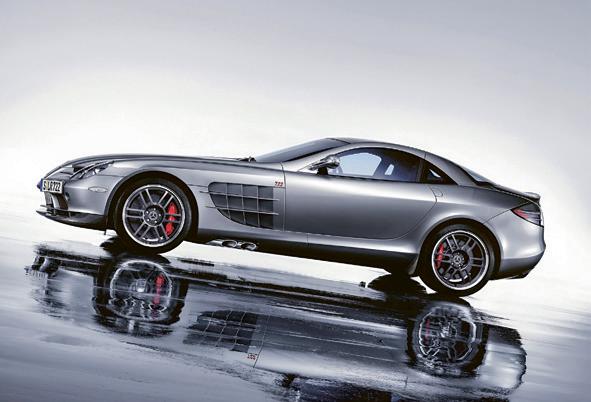
THIS PAGE
Powered by an AMG V8, the SLR still looks striking two decades on.
Steve adds: “Electrical failures usually point to weak batteries, especially if the car has been laid up for ages on a trickle charger. Early SLRs suffered from brake squeal and knock, cured by fitting uprated larger discs, six-pot (rather than eight-pot) calipers and redesigned brake pads. Worn upper and lower wishbone bushes in the rear suspension are common, as are fractured shockabsorber bodies around the top mounting points of the strut.”
Buy an SLR that’s due a major service, and you will be landed with a hefty bill straight away. That engine-out work mentioned earlier costs £18,000 at Mercedes-Benz Brooklands in Surrey; Avantgarde is more affordable, but you can still expect a £10,000 bill. That’s if the brakes don’t need doing; these cost around £12,000 for the parts alone (front or rear), although they rarely need to be renewed.
To illustrate how specialist the maintenance is, every time an SLR is lifted from the floor it needs to be secured to the lift via bolts in the chassis-mounting points. Failure to do so can result in excessive twist to
2004 SLR COUPÉ
ENGINE: SUPERCHARGED V8, 24 VALVES, SOHC PER BANK, 5439CC POWER: 617BHP
TOP SPEED: 208MPH
0-62MPH: 3.8 SECONDS
2007 SLR ROADSTER
ENGINE: SUPERCHARGED V8, 24 VALVES, SOHC PER BANK, 5439CC
POWER: 617BHP
TOP SPEED: 208MPH
0-62MPH: 3.8 SECONDS
2006 722 EDITION
ENGINE: SUPERCHARGED V8, 24 VALVES, SOHC PER BANK, 5439CC
POWER: 641BHP
TOP SPEED: 210MPH
0-62MPH: 3.6 SECONDS
2009 722 S
ENGINE: SUPERCHARGED V8, 24 VALVES, SOHC PER BANK, 5439CC
POWER: 641BHP
TOP SPEED: 210MPH
0-62MPH: 3.6 SECONDS
2009 STIRLING MOSS
ENGINE: SUPERCHARGED V8, 24 VALVES, SOHC PER BANK, 5439CC
POWER: 641BHP
TOP SPEED: 217MPH
0-62MPH: 3.5 SECONDS
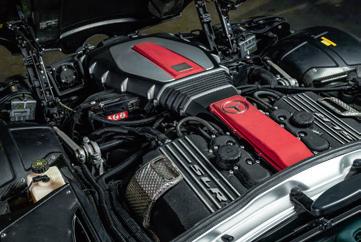
the carbonfibre monocoque causing cracks or weaknesses, which is when things can get really expensive…
While the SLR McLaren wasn’t well received when it was introduced, it has certainly grown on people since – especially collectors. From a styling perspective the SLR has aged incredibly well – and when you look at the technology that was on it, it was way ahead of its time, with most of it becoming the staple for supercars of the new generation. It’s also still searingly quick, with a soundtrack to die for, and while the five-speed auto might seem a little lacking, with 575lb ft of torque available from 3250rpm you have all the cogs you need. How does 3050mph in 1.7 seconds sound? Or 50-70mph in 2.4? But it’s not just about performance; there’s a healthy dose of usability, too. The interior is
largely what you would expect from any mid-2000s Mercedes: elegant, functional and with a genuinely practical boot to the point that this car could be a daily driver rather than just a weekend toy.
Steve concludes: “The SLR still provides fantastic value in classic supercar territory, with a lot of investment potential just waiting to be unleashed. There’s no doubt that appreciation for its many talents has started to really take off; the market has wised up to the fact that it’s capable of being a practical grand tourer or a track-focused monster up there with its contemporaries – and that isn’t something you can say of those period rivals.”
Steve Mowat helped to build the initial SLR prototypes, and he now runs Mercedes specialist Avantgarde (www.avantgarde-automotive.co.uk) near Bristol. One of the UK’s few SLR specialists, his help here was invaluable.


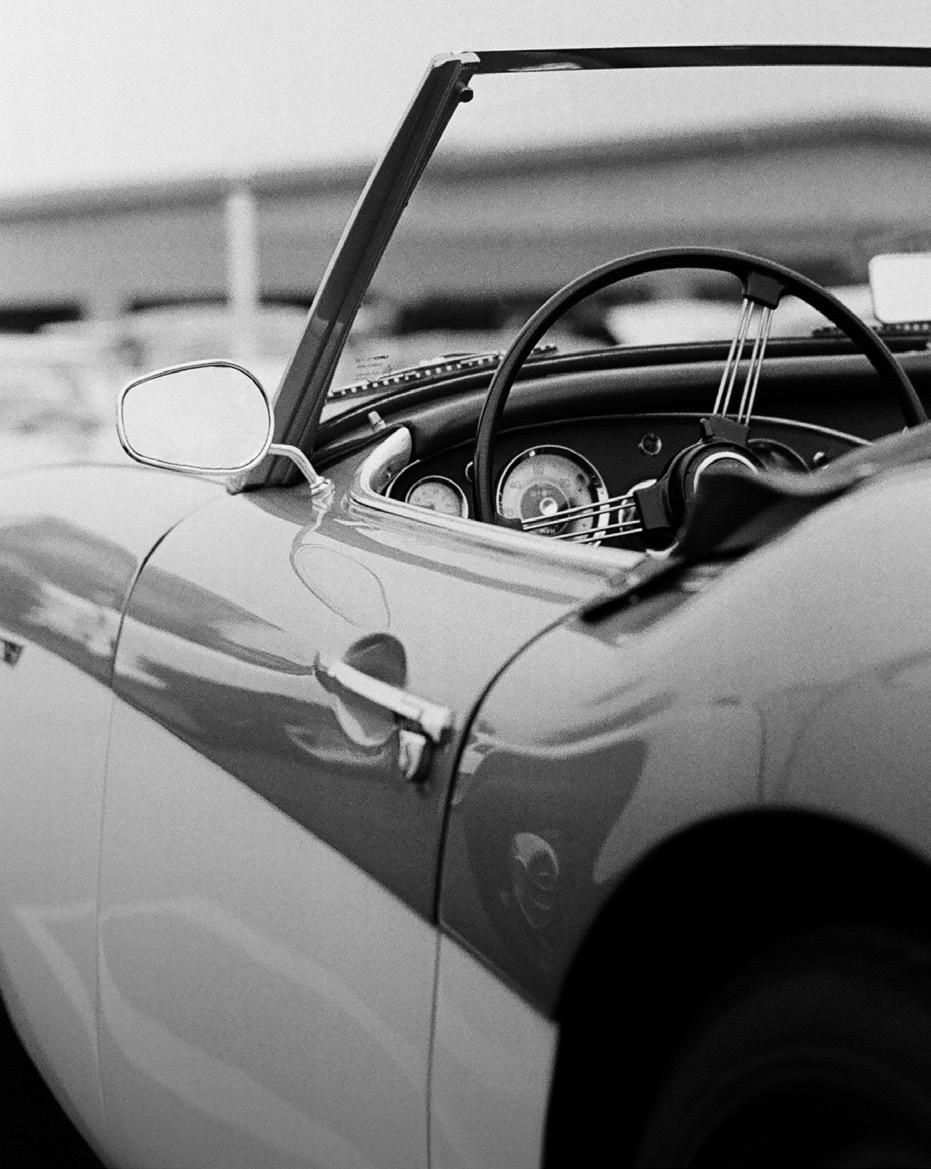

By John Mayhead, Hagerty
2025 roared in with several record sales, but at a time of global instability are collector cars the best place to put your money?
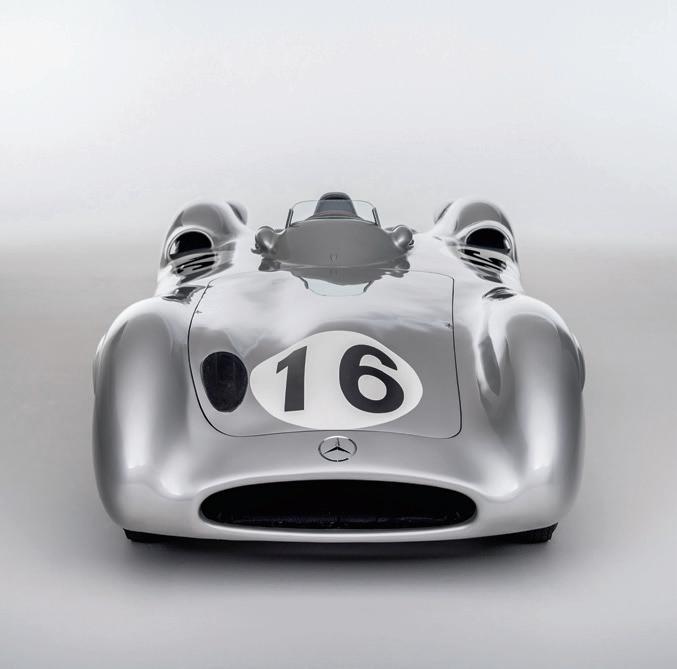
Are prices set by W 196 R and 250 LM reflective of the broader market? Top-end values traditionally buck all economic trends, as shown by Bugatti values through the ages.
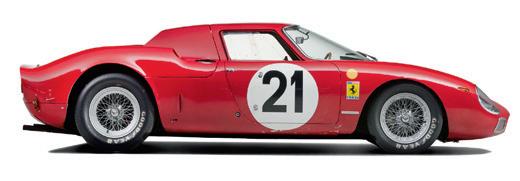
ON THE FACE OF IT, THE classic and collector car world has started 2025 with a bang. RM Sotheby’s sold two of the most important cars seen at auction for some time: the 1954 MercedesBenz W 196 R Stromlinienwagen in Stuttgart for €51.2 million (£42m), setting a new record price for a Formula 1 car at public auction; and the ex-NART 1965 Le Manswinning Ferrari 250 LM in Paris for €34.88m (£28.9m), another record.
Across the Atlantic, a further benchmark was set when Mecum sold a 1915 Cyclone V-Twin for $1.32m (£1m), the first time that the $1m barrier had been crossed at public auction for a motorcycle. Meanwhile, Hagerty’s first quarterly UK Price Guide update of 2025 showed a value rise at every price point over £300,000 – the highest, a four percent mean rise for cars worth over £1m. The sun, it seems, is suddenly coming out from behind the clouds I described in the last edition of Magneto, which saw a 2024 slump almost across the board in classic and collector car prices.
To remain objective, we have to look at whether this really is a rally in prices, and if so, why. The first major auctions of the year on both sides of the Atlantic – typically Kissimmee and Scottsdale in the US, Paris in Europe – have become statement sales, ones where the top auction houses try to outdo each other for headline lots. The W 196 R and the 250 LM are truly exceptional examples of even these rare models, and would probably have sold well at any time, no matter what
is going on in the rest of the market.
Also, there’s an argument that if the Mercedes-Benz had been sold around the time of the €135m 300 SLR Uhlenhaut Coupé auction in May 2022, at the top of the postCovid boom, its price would have been even higher. In addition, the rise we’re seeing in other expensive cars may be affected by fluctuating exchange rates: since Hagerty last updated its values, the USD/GPB rate has risen from 0.77 to 0.79. That doesn’t sound like a lot, but on a multi-million-pound car, it makes a big difference – and they’re the ones that tend to be traded globally.
Forex variation doesn’t explain all of the rise, though, nor does it reduce the anecdotal reports from dealers and auctioneers suggesting that the top end of the market is definitely picking up. So, if there’s a rise, why is it happening?
In many ways, the rise is unexpected. Classic cars are a luxury that we often buy with our hearts as much as our heads. At times of global economic and political uncertainty, such purchases are often towards the bottom of people’s priority lists. Whatever you think of Donald Trump’s policies, they are not exactly adding to any sort of feeling of stability in the world.
Recently, the director of a London investment-management company told me that with record highs on both the S&P 500 and FTSE 100 indices, many investors were waiting to see the outcome of any possible Ukraine peace deal.
“The market’s dead,” he told me.
“Nobody wants to put new money in
Advertised values of Type 40 from 1929 to 1976 (£GBP). ‘Inflation’ price shows 1929 value (£246) adjusted for inflation.
at a market peak.” Gold has been the traditional safe port in such times in the past, and prices are indeed huge, having hit (at the time of writing) an all-time high of £2,858.12 per ounce on April 22, 2025 – nearly double its value of five years previously.
Art price rises are similar according to the MOMAA Art Index, which shows contemporary art values up by 47 percent over the past five years. Those high prices may be putting some investors off.
So, while some enthusiasts may have decided that it’s a good time to buy a collectable car, is it actually a good place to put your money in a time of worldwide volatility? Past performance could be an indicator, so I looked back at values over a 50year period from the 1920s-70s –which included some of the most tumultuous political and economic events we have ever experienced.
After some research, I found values for a car that remained very desirable and collectable throughout
– the Bugatti Type 40 – and plotted its advertised price over time compared with the original 235 guinea (£246) price asked in an October 1929 classified ad published just before the Wall Street Crash.
The result was fascinating. In ’51, with the British economy still very much in wartime-recovery mode, a Type 40 was offered for £400 – a little under the adjusted £495 figure, but not bad considering it was a 25-year-old sports car, typically at the bottom of its price trajectory. By 1966, the asking price had risen to £1175, well over inflation. It never looked back, with even the 1970s oil crisis and record inflation unable to dent the car’s rise in value.
Today, that £246 asked in 1929 is worth £13,244, but Hagerty values the car at £395,000. That is just one model, with prices based on adverts, but the point is very clear: the very best, blue-chip cars are likely to remain valuable whatever the world throws at us.
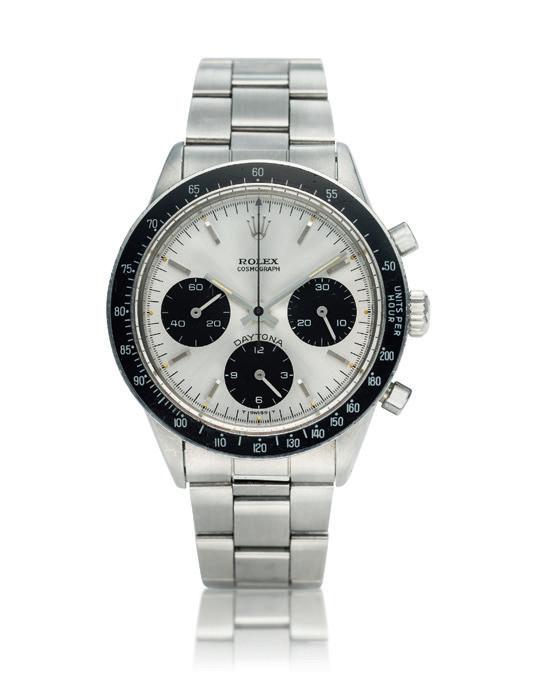
MY FIRST PROPER WATCH WAS a TAG Heuer Formula 1. My father – a car guy and racing enthusiast –considered it an appropriate gift, and he was right: my professional career has been consumed by both watches and racing.
The Formula 1 was a phenomenon. Before it, almost all watches from historic Swiss brands were austere and monochromatic. TAG arrived with a colourful and fun series of timepieces that appealed not only to F1 enthusiasts and watch collectors, but also to kids such as myself.
This was my stepping-stone into the world of watches, and I owned a number of them on straps, bracelets and in various colours. It also started me down a rabbit hole of racing cars and watches, specifically around F1.
Heuer made its first dash timer in 1911, setting it on a path that would make its name synonymous with racing. Under the leadership of Jack Heuer, the brand became closely associated with legends such as Jo Siffert, Niki Lauda, Clay Regazzoni and, of course, Enzo Ferrari himself.
By Jonathon Burford
Fast times
How an association with Formula 1 can give watch brands a head start in the world of motor sport
Rolex’s association with racing, meanwhile, began with the arrival of the Daytona, which was initially called the Le Mans but was later renamed after the Florida raceway. In more recent times, Richard Mille has shared the mantle with Rolex –the ‘Crown’ brand was F1’s official sponsor and timekeeper until this season (LVMH has now taken over the title sponsorship), while Mille has focused on drivers such as Felipe Massa, Fernando Alonso, Lando Norris and Charles Leclerc. It is Rolex, however, that can claim the longest, most enduring driver-ambassador relationship, through its association with Sir Jackie Stewart. As the star of his generation, Stewart’s racing career was short yet prodigious: he won virtually everything he competed in, including three championships and 27 races from 1965-73. In 1968, Sir Jackie became part of the Rolex family. The company’s ‘Testimonee’ programme was introduced in 1927, when Mercedes Gleitze swam the English Channel wearing one of its watches. Stewart is now the longest-standing Testimonee.
But what was it that attracted him to Rolex? He recalls seeing an ad in the International Herald Tribune featuring an image of New
York’s United Nations building with the words: “If you were speaking here today, you’d be wearing a Rolex.”
This resonated with him as a statement of sophistication, style and finesse, leading to him joining golfer Arnold Palmer and skier Jean-Claude Killy in the ‘family’. A Rolex of one kind or another has adorned Stewart’s wrist since he bought his first example, a yellowgold Day-Date, in Texas in May 1966, just after driving in the Indianapolis 500. As you’d expect, he now has an extensive collection. He owns Daytonas from every era, as well as GMTs, Day-Dates and Submariners. His more left-field choices include a King Midas Ref 9630 in 18ct yellow-gold, featuring an asymmetrical left-handed case design and an integral bracelet with a concealed deployant clasp.
At the other end of the subtlety spectrum, he’s also been seen in an 18ct white-gold Sky-Dweller Ref 326259 TBR, with a meteorite dial, ten baguette-cut diamond hour markers and a fully factory-set diamond case and bezel, consisting of 74 baguette-cut diamonds. All for a recommended $215,000 (£166,155).
Stewart is most synonymous with the Daytona, however, and he is often seen sporting a beautiful pump-pusher Ref 6264 with a silvered dial, black Bakelite bezel and steel Oyster bracelet. The 6264 is among the rarest of all vintage Daytonas, with a production span of around three years. Essentially a transitional reference, it combines the earlier pump chronograph pushers with the upgraded calibre 727. Good examples are scarce –and while they are niche, they are also highly sought after by knowledgeable collectors.
Original bezels are a must, as are the correct movement and an original dial that hasn’t been relumed. Don’t worry if the bracelet has been replaced (this is fairly standard), and don’t stress over missing papers; focus on the watch’s originality. Now is a real opportunity to join Stewart in owning one of the great vintage chronographs that continue to hold their value in a currently soft vintage Rolex market. Writer Jonathon Burford is SVP and specialist at Sotheby’s watch department. For its ongoing watches sales, see www.sothebys.com.
By Rupert Whyte
KEVIN MCNICHOLAS’ fascination with Formula 1 and motor sport goes back to the 1960s, when he and his brothers used to visit Ousten, the airfield circuit in Northumberland, from their home in Newcastle upon Tyne. Kevin recalls seeing Jackie Stewart racing and Jim Clark acting as steward there.
Although McNicholas had an encouraging art teacher in his first year at grammar school, his second-year teacher was less than complimentary about his work, thus quashing any dreams he had of becoming a professional artist. This ultimately led to Kevin leaving school aged 15 in 1969 to become an apprentice watchmaker. Here started his obsession with detail that translated into his eventual photorealistic style.
Amazingly, from leaving school to painting his first artwork in 1989 as a gift for the former Williams aerodynamicist and new Lotus technical director Frank Dernie, Kevin had never picked up a brush. He sent this artwork to Frank with a covering letter asking if he could visit the Lotus F1 HQ as ‘payment’. An invitation to Ketteringham Hall came back: Frank collected McNicholas from the station in a Merc estate and took him to his home for lunch, followed by a tour of the Lotus F1 headquarters and a ride in Frank’s Sierra Cosworth.
Following F1-mad Kevin’s success in gaining access to a team’s HQ, he painted a picture of Alain Prost’s Monaco-winning McLaren and sent it to Ron Dennis with a similar covering letter. To McNicholas’ surprise, Ron also agreed to a visit. Not only that, but Kevin was flown down from Newcastle and collected from the airport by Ron’s chauffeur. He narrowly missed meeting Ayrton Senna, who had just left the factory after a seat fitting, and he was shown around by Peter Stayner, the then commercial director. Kevin recounts an amusing
A talent for photorealism – and for getting into the right places – has given Kevin McNicholas the edge
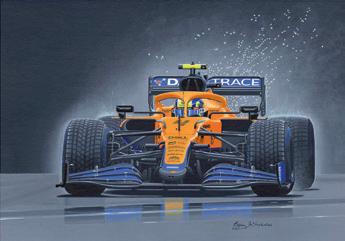
story: “Peter’s PA approached him to say he had a phonecall, to which Peter told her he was busy. She said it was urgent, so Peter excused himself to take the call. On his return he said: ‘You can put these guys in a racing car at 200mph and they’re brilliant. Ask them to find a hire car at the airport? Useless!’ The caller was Gerhard Berger.”
By now Kevin was working as a sergeant for the Newcastle airport police. He’d painted Nigel Mansell winning in Brazil for Ferrari. “I’d been dealing with a PR lady, but we were struggling to get the painting to Nigel. I’d been told that Frank Williams was flying into Newcastle airport in a few days; he was visiting his mum in South Shields, his childhood home. I spied him on his way back to the aircraft, and as I had access to the airport apron I approached him to ask if he would mind getting the painting to Nigel. He said yes… on the condition that I painted one for him as well.”
Kevin happily painted Mansell’s FW11. Frank flew McNicholas down to Oxford in a private jet to deliver the painting, and the latter had a wonderful day at Williams: “Frank greeted me and asked how much I wanted for the painting. I said I hadn’t given it any thought
because I was doing it for the experience. Frank said: ‘Go and have a nice day, and come back to me at the end of it with a figure.’ I didn’t. A week later an envelope arrived with a lovely note and a very generous cheque.” Kevin has photos to back up his stories, too. He works in acrylics on canvas boards. His incredibly detailed paintings are correct down to the finest detail: carbonfibre weave on a car component, individual stitching and folds on a race suit, logos on helmets… it’s all recreated precisely. The very finest brushes are needed – the smallest, a size 0000, is a single hair thick.
Kevin shows me his ‘five-bar gate’ hour log on the side of his drawing board. He’s currently part-way through an Oscar Piastri portrait – he’s already 350 hours in. He’ll typically spend 1500-1700 hours on a large painting. Artworks starting at £6000 suddenly seem remarkable value.
“I am going to try out painting some smaller pieces that don’t take quite as long,” he says. These’ll offer a lower entry point for collectors of his work. Watch this space. Writer Rupert Whyte runs Historic Car Art, www.historiccarart.net, selling original works and posters.
By Nathan Chadwick
Fancy owning a genuine bit of an F1 car – or even a whole one? It’s never been easier
“WHEN I FIRST STARTED IN Formula 1, you couldn’t even get merchandise,” muses Barry Gough, CEO of F1 Authentics. “Since then it’s grown year by year – but joining F1’s Paddock Club changed our business completely.”
F1 Authentics deals in all sorts of items, from real and replica helmets to elements of cars, and from show machines to genuine former F1 racing models. However, the biggest driver – pardon the pun – is how the components are used.
“We sell most of our car parts when re-engineered into tables or frames,” Barry explains. Indeed, one of his most popular products is partnering photos with bodywork in acrylic frames: “For some teams we’re not allowed to sell just a car part, so if we have something like a sidepod, we chop it up into smaller pieces and encase them in acrylic.”
That might seem like sacrilege, but before Barry saw the gap in the market, most racing teams dumped their spares in a skip. Other than an odd eBay appearance courtesy of a first-lap tangle and an enterprising flag marshal, getting hold of bits of an old F1 car was mighty difficult. Now the teams are fully onboard, and F1 Authentics holds official licences from most of the outfits, drivers and Formula 1 itself.
The business really took off when Netflix’s Drive to Survive (DtS) first aired in 2019, which opened up the market completely. Although an older, more wealthy clientele is most obviously inclined towards the higher-priced items, there’s plenty of interest in less expensive items from those aged 30 and under.
The DtS effect has seen a dramatic shift in where items are sold. “Around 60 percent of our
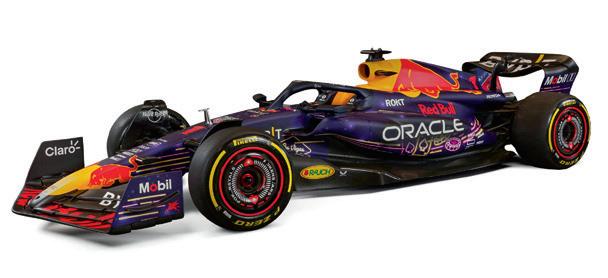
Red Bull RB19 show car by F1 Authentics; this coffee table was created around Lance Stroll’s ’22 Aston Martin engine cover.
UK a close second,” Barry says. “We are looking at opening a production centre in the States.”
F1 Authentics’ capabilities also stretch to building the show cars for F1 teams. “As part of our licences, we build show cars for Aston Martin, Red Bull, Williams and Sauber, and we’re allowed to retail them,” Barry explains. “We work with the teams, take their CAD minus a bit of intellectual property that they take off so there are no secrets. We make all the tooling and moulds, and have a composite and paint shop. This year we will be making about 70 show cars.”
F1 Authentics has sold old show cars before, including McLarens and Benettons made during the 1990s, although the possibility of building new ‘classic era’ F1 cars is on the cards. “It’s something we are keen to do, and we’re talking to

But what if you want a bonafide F1 car that’s been campaigned in anger? He’s sold a couple of F1 cars before, at prices up to £3m – but he sees them as currently undervalued. “They should be selling for more money, and will be in the future. Race suits and helmets are going up in value all the time,” he explains. While licensing agreements mean F1 Authentics usually deals in items related to current F1 teams, the firm occasionally acquires collections of much older items. At the time of writing, Phil Hill’s 1958 Maserati F1 helmet was up for grabs, for example. Thus comes the thorny issue of proving the authenticity of these items. “We have a ten-person dedicated crew, some of whom worked in F1 outfits at the time, so it’s a question of checking with the teams,” Barry says. “For other items it involves careful checking of paperwork and images.”
But what if your budget can’t stretch to the £50,000 needed to hold a helmet once worn by Lando Norris in your hands? The memorabilia even stretches to pit crew items, too. “There’s a market for anything to do with F1 – there always has been,” Barry smiles. Perhaps not for the Nomex underwear, however. More details at www.f1authentics.com.
Compiled by Nathan Chadwick and Sophie Kochan

CLEAR MG HEADPHONES
These open-back hi-fi ’phones are designed for home use, and blend solid aluminium with a leather headband and microfibre earpads. They feature patented magnesium M dome full-range speakers, which save weight and add dynamics and detail across the sound spectrum. They cost £1299. www.focal.com

LUMINOX ATACAMA FIELD 1971
This 43mm field watch has a lightweight carbon-compound case, sand-textured dial, self-powered illumination, rubber strap and 100m water-depth resistance. It’s £479. www.uk.luminox.com

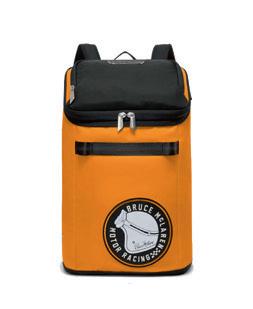
PATEK PHILIPPE CUBITUS 5822P-001
The Cubitus is Patek’s first new collection in 25 years. The 5822P’s platinum case combines grand date, day and moon-phase indicators. Its Caliber 240 PS CI J LU self-winding movement contains six patents; the grand date is displayed at 12 o’clock. There’s also a baguette-cut diamond at 6 o’clock, and a navy blue composite strap. It’s £75,690. www.watches-ofswitzerland.co.uk
TUMI MCLAREN PACKABLE BACKPACK
McLaren and Tumi have been partnered for four years, and this latest creation pays tribute to Bruce McLaren’s helmet. Finished in signature Papaya Orange, it features several zipped segments and a custom embroidery option. It costs £250. https://uk.tumi.com

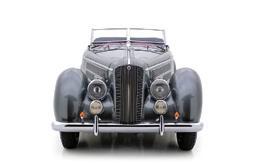
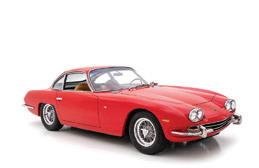
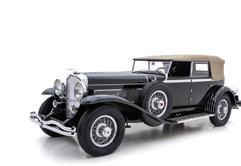
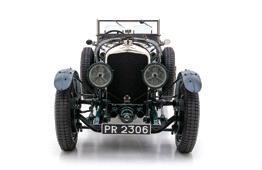

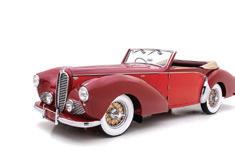


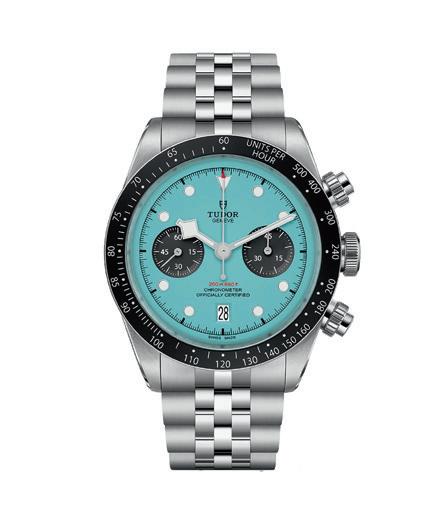
TUDOR BLACK BAY CHRONOGRAPH FLAMINGO BLUE
Tudor has stepped up to sponsor Formula 1, and as the sport is popular in Miami, here’s something South Beach inspired. It features a column wheel and vertical-clutch chronograph calibre, in a 41mm stainless-steel case. And if you do take it to the beach, it’s waterproof to 200m. It costs £5020. www.tudorwatch.com
With double-domed sapphire glass, circularbrushed dials and a red second hand in a concave dial, this is a fresh take on the brand’s historic Swiss railway clock origins. There are 14 models, all in 316L stainless steel. Prices start from £239. www.mondaine.com
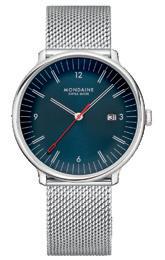


C SEED N1 TV

This ultra-high-resolution TV folds away into a discreet piece of furniture despite its 103in, 137in or 165in size. It’s available in a range of finishes. Priced to specification. www.cseed.com
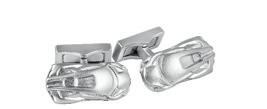
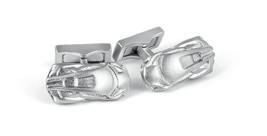
TATEOSSIAN X LAMBORGHINI CUFFLINKS
This jewellery range features two styles. The carbonfibre Hex design is influenced by sharp Lamborghini styling, as cufflinks and a necklace with black or white diamonds. The wider range features a double-wrap bracelet. The cufflinks above are in the Miniature collection, which features a 3D-printed mirrored Lamborghini design; a necklace is also available. From £275 for the cufflinks. www.tateossian.com
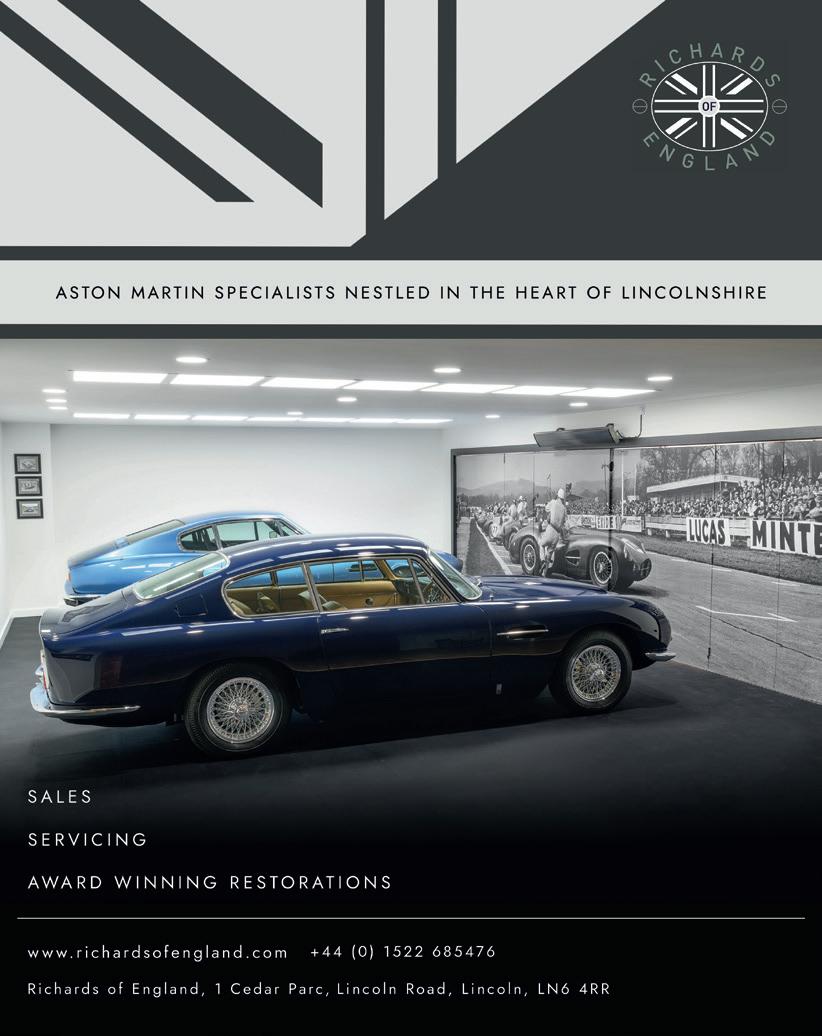
By Nathan Chadwick
Volume one of a four-piece set dedicated to the Blue Oval’s endurance hero details each chassis’ often fascinating fortunes over the decades
THE LEGENDARY FORD GT40’S story may now have the added glamour of Hollywood glitz, but the tale was always a riveting one. It boasted success, failure, tragedy and triumph – and the car looked good, too. As such, we can expect a slew of media interest as we approach the 60th anniversary of 1966, its standout successful year at Le Mans. However, the story is far deeper and longer than that.
Ronnie Spain’s four-part series will chart the story of the car from its beginnings to the end, with a wealth of previously unseen images and documents from the Ford archive, plus insight from model experts such as Mark Cole, Graham Endeacott, John S Allen and Mike Teske.
This first instalment looks at the chassis numbers and the fascinating tales from each car’s life. Split into the different eras and builders, the book’s level of detail is incredible. Not only do you get competition reports – as you’d imagine – but each incidence of the car in the archives is noted, along with details of some of the personalities involved.
The annoyance of John Wyer at having chassis 101 make a testshortening trip to New York is one small facet, but there are plenty more – such as the sad tale of 110-X1, which was torn apart over a customs debacle subsequent
‘Split into the different eras and builders, the level of detail is incredible’
to its victory at Sebring in 1966.
The imagery is a delight, too, with more well known photos from both Ford and the Revs Institute displayed alongside rare personal archive material. The shot of chassis 104 left on the pavement outside Kar Kraft while an Edsel cruises by is a simply beautiful juxtaposition. However, there is plenty of racing action as well.
It is a timely book, particularly for GT40 enthusiasts. As the author regularly notes, claims to chassis numbers and entire cars have been made over the years, so establishing the reality over the noise must have been a challenge. It’s clearly a labour of love – one that’s taken more than 45 years to bring to fruition.
This is no dry going-over of the records, though. Within these 576 pages lies intrigue and fascination aplenty. There are stories and personalities that weave in and out of GT40 ownership, from Hollywood stunt drivers to racing legends and captains of industry.
Then there are the cars – such as 111, which survived being split into two pieces in a crash and was later discovered in a London garage after a fortuitous chat at Goodwood in 2006. Or British TV personality (and multiple GT40 owner) Noel Edmonds having 1072 detuned after “leaving little black lines on the North Circular Road” during his commute. There are plenty more stories...
This £325 book, which is limited to 750 copies, is a must for those with a love for the GT40 and the era in which it was created. Beautifully written, illustrated and produced, it is also highly recommended for even those less obsessed with this legendary Ford. www.porterpress.co.uk
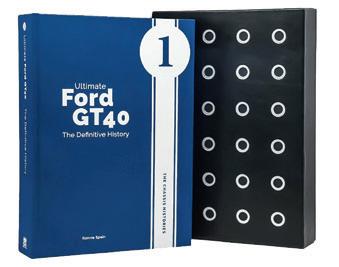
THIS PAGE Ronnie Spain’s first instalment comes out ahead of the 60th anniversary of the GT40’s 1966 Le Mans victory.

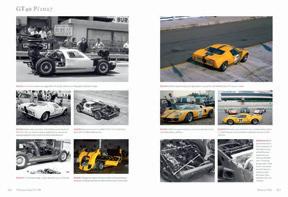
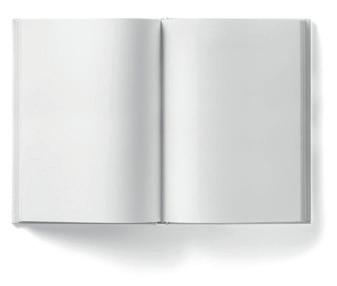
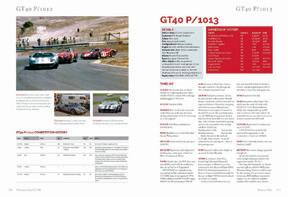

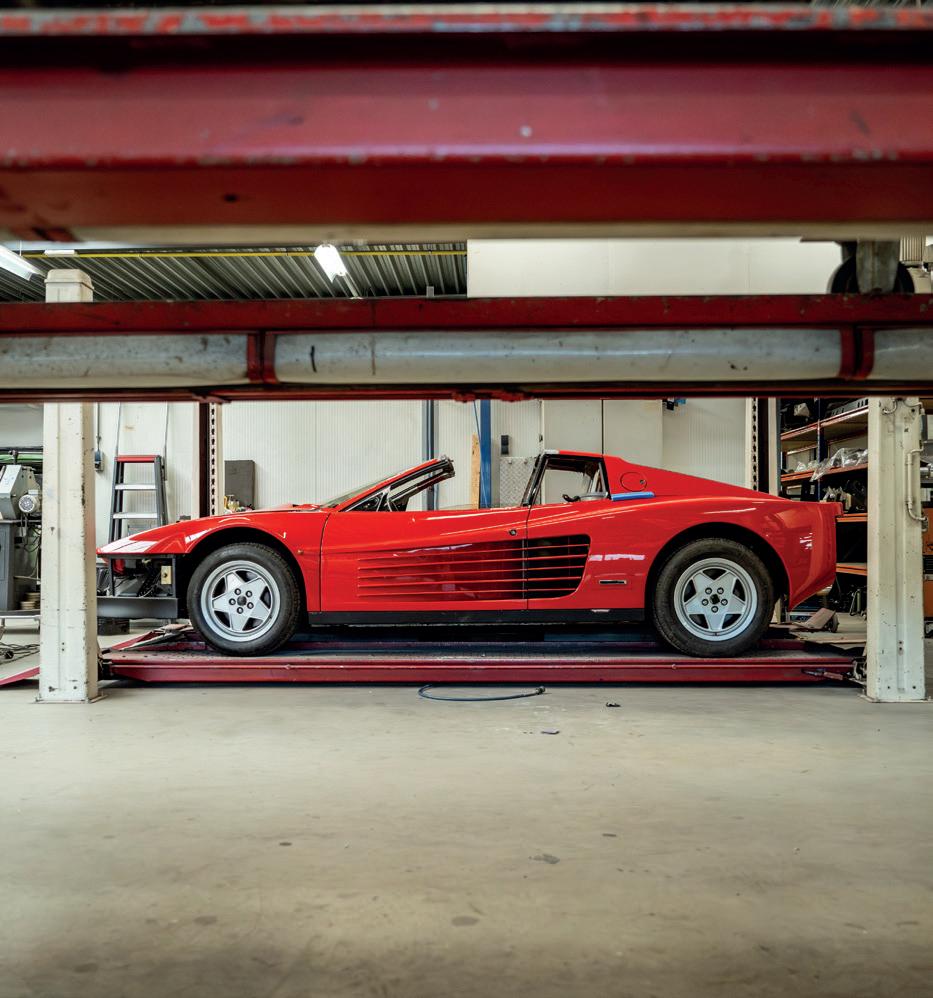
BOOK REVIEWS
Endurance racing in the US was a rollercoaster ride of acrimony and angst – and some great racing

RACING SERIES ALWAYS HAVE
a short time in the sun before a dark period – from touring cars to rallying, success is usually fleeting.
Some of that is down to a certain Mr Ecclestone wanting to protect the Formula 1 golden child (see DTM, Group A WTCC and several others). For endurance racing, however, the 1990s was the definition of a rollercoaster ride – and IMSA was more turbulent than most.
It’s all detailed in this fascinating 242-page book led by series stalwart Mark Raffauf. After the success of the 1980s, IMSA hit its twilight era and its owners sought to cash in and sell up. It was the starting gun for a decade of turmoil involving four different owners in only six years.
The era started with an intense

Produced in association with the Porsche Museum, Helmut Deimel Films has made an 82-minute DVD documentary charting the 917’s development and career, from Le Mans to Mark Donohue’s Can-Am adventures. The DVD features insights from drivers and engineers, and the Premium Edition includes a 60-page book from Wilfried Müller illustrating the history of the car, alongside gorgeous period photography. A great documentary, and the book is the icing on the €69 cake. www.deimelfilm.at
fight between Nissan, Porsche and Jaguar at the head of the field, but behind the scenes financial issues were starting to take their toll. It all came just in time for the Gulf War, a worldwide recession and a dramatic slide in US car sales.
The GTP category was not immune from the wider issues affecting endurance racing in the early part of the 1990s. In 1994 the leading prototype class turned to WSC rules – only to be outshone by the GTS-class Nissan 300ZX at the season-opening Daytona 24 Hours (a forewarning of the 1995 Le Mans win for the McLaren F1, perhaps?). However, the WSC class and the introduction of a new title sponsor put the series on a steady foot – and with it came a game-changing car
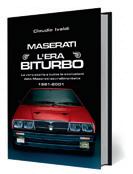
Much maligned and underrated, the Biturbo era of Maseratis is comprehensively documented by Claudio Ivaldi in this 416-page, €120 book. Although the design is not as polished as it could be, the information and passion for the subject are abundantly clear, with interviews with key members of Maserati staff and designers. It all plays out against the turbulent narrative of the marque in the 1980s and ’90s, and is a fascinating read. It’s available in Italian only, but an English-language version is planned. https://erabiturbo.it
courtesy of Dallara and Ferrari, with critical input from Tony Southgate – the 333 SP. Strong ‘home side’ competition came from Riley & Scott with its MkIII, setting up a fierce rivalry that kept US endurance racing fans on their feet for much of the rest of the decade.
The problems wouldn’t stay away for long, though, and the 1997 season under new ownership – and an unloved rebranding to PSR (or ‘pisser’ as some referred to it) –provides an engrossing read into the politics and challenges of motor racing at this time. While Europe had regrouped with BPR and then the FIA series, IMSA/PSR was beset with unpaid prize purses and organisational challenges that would ultimately lead to the end of IMSA

Chas Parker’s 352-page tribute to Silverstone has been updated for a second edition, 12 years after its first incarnation. Even since then the circuit has continued to evolve, and this beautifully illustrated book pays tribute to the great races, influential people and unforgettable moments. It’s worth buying for the full story of Silverstone’s bitter fight with Liberty Media over the rights to host the F1 circus, but it also covers new initiatives such as the museum. Great value at £60. www.evropublishing.com
GT in 1998, to be replaced by two series: Don Panoz’s American Le Mans Series (ALMS) and the United States Road Racing Championship. The latter fizzled out by 2000, whereas ALMS went from strength to strength, merging with Grand-Am to form the IMSA WeatherTech SportsCar Championship in 2014. This is a beautifully researched book, full of insider insight from the organisers, drivers and team principals. While some of the image reproduction is distorted, the sheer quality of the insight in the reading makes up for it. As the 1990s endurance era begins its golden years in Historic motor racing, at £55 this is a timely and well priced book about a fascinating era. www.octanepress.com
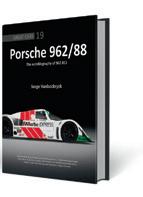
THE AUTOBIOGRAPHY OF PORSCHE 962/88
Chassis 962/88 011 is the most successful Porsche Group C racer, which makes its birth as an after-hours project all the more remarkable. Serge Vanbockryck’s £69, 320-page book charts the car’s life from Joest/Porsche collaboration to victories on either side of the Atlantic, including the 962’s last World Sportscar Championship victory in 1989. There’s a mixture of beautiful modern photography and evocative archive imagery, with incisive technical insight and driver profiles. www.porterpress.co.uk

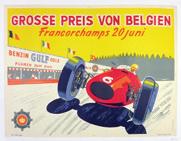





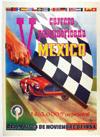

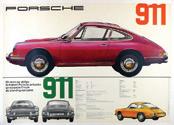































































































Rules were made to be broken... or so you might think, given some of the chicanery seen in F1

LAST OCTOBER, I ATTENDED THE centenary celebrations at Montlhéry, the banked track 26km south of Paris. Friends took their 1924 AC 12 Royal, a car with rear drums only, no shocks and an integral gearbox diff/transaxle.
Cars drove the track in classes based upon relative speeds. The first set included a Corvette in race trim that circulated at prodigious pace, and decibels, barely three metres below the top of the banking. In contrast, the Royal travelled in an elegant and unhurried fashion, some three metres above the lowest part of the banking. The stark speed differential in the region of 100mph led me to think about how motor sport had regulated itself to provide for the safety of its participants and spectators.
The Fédération Internationale de l’Automobile (FIA) was founded in Paris on June 20, 1904, its role being to oversee international motor sport, with its prime activity in more recent times being the regulation of Formula 1.
Giuseppe Farina won the first ‘modern’ F1 race at Silverstone on May 13, 1950, driving an Alfa. Mike Hawthorn took his World Championship in 1958 for Scuderia Ferrari. This was the era of the Italian titans.
That same year Lotus entered its first Grand Prix, heralding a changing of the guard. Enzo Ferrari famously named Cooper, Vanwall and BRM, who subsequently joined the grid, as ‘Garagistes’, a derogatory term for those who constructed their race cars in small workshops or garages. He came to rue his words. The Garagistes built light, rear-engined cars that simply drove past the old guard in their heavy, front-engined behemoths.
The 1950s and early ’60s drivers exuded a ‘devil may care’ attitude. They wore shirts with cravats. Fair play was expected on track. Once on the driving line, in a corner, the lead driver would expect his challenger to behave accordingly. Jim Clark earned the accolade of ‘Gentleman’. Finance was provided by wealthy individuals
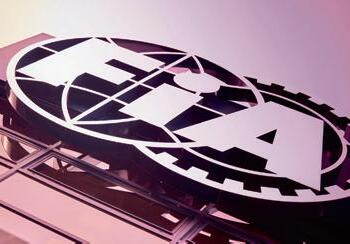
and the manufacturers. FIA regulations reflected the demands of the period, dealing with engine spec, weight restrictions, the points system and safety requirements. The latter were minimal. Helmets were mandatory, seatbelts were not. Circuit safety features were rudimentary.
In 1968, the funding of F1 saw a step change that initially seemed innocuous: two cars at the South African GP wore the livery of Imperial Tobacco’s Gold Leaf cigarette brand. British Racing Green disappeared overnight. This influx of funding from the commercial world led a sprint to develop new technologies in the pursuit of greater speed. Climbing the winner’s rostrum became more about financial reward rather than king and country.
The FIA had to keep pace with this evolution to preserve the integrity of the sport, in terms of spectacle and safety. The FIA Sporting Regulations of February 26, 2025 consist of 120 pages, including 64 regulations with Appendices, which are comprehensive and complex. Constant updates are issued. The race director deals with a meeting’s overall logistics, working with the stewards in relation to issues such as incidents and penalties. Other duties include technical scrutiny, safety oversight and post-race procedures. These duties are exercised in the

www.healys.com
+44 (0)7768 997439
BELOW The FIA historically oversees international motor sport, specifically the regulation of Formula 1.
pressurised atmosphere of practice and race day in front of tens of thousands of spectators. For the most part, decisions are uncontroversial and pass unnoticed. That said, there have been a number of high-profile situations that have attracted the attention of the world’s media.
In the final race of 1994, the Adelaide Grand Prix, Michael Schumacher brushed the wall. Damon Hill dived for the inside. The resultant crash took out both drivers, resulting in the German’s first World Championship. Rumours abounded. Was it a race accident or a deliberate move?
Qualifying for the 2006 Monaco GP witnessed Schumacher parking his Ferrari at Rascasse, thereby preventing Fernando Alonso from setting a faster time. The stewards deemed this to be an intentional act, which resulted in Michael being relegated to the back of the grid. Possibly one of the most blatant acts of chicanery took place at the 2008 Singapore GP. Renault’s Nelson Piquet Jr crashed under team orders, permitting team-mate Alonso to take advantage of the safety car to win.
‘Crashgate’ came to light the following year, when Piquet was dropped from the squad. Team principal Flavio Briatore and engineering director Pat Symonds duly resigned.
FIA regulations provide for appeal in
certain circumstances, which will be heard by the International Court of Appeal. Such circumstances do not include race-day incidents, which might account for the result of the 2021 Abu Dhabi GP. Throughout the race Lewis Hamilton maintained a comfortable lead over his rival Max Verstappen. The safety car was called out, which resulted in a sprint –permitting Verstappen on fresh tyres to pass Hamilton for victory, and thereby depriving Lewis of winning his eighth World Championship. It transpired that the normal FIA regulations were not followed, and furthermore the safety car was called in a lap too early. Mercedes lodged an appeal on the day, which the stewards turned down citing the race director’s authority over such decisions. Mercedes was reported as considering pursuing the matter further, but declined to do so. Its legal advisers must have considered the prospects of success. The world’s motor press reported the result as a travesty of justice.
From a jurisprudential point of view, decision-making bodies should provide for review or appeal of their decisions by an independent legally qualified body. In the Hamilton situation the regulations did not permit such appeal. Presumably that aspect of the regulations was deemed acceptable by the FIA, so as to provide for certainty of process on the day.
Strictly speaking, the stewards acted within their powers. It was unfortunate for the FIA that the outcome of their deliberations on the day attracted the attention of the world’s media – and even more unfortunate for Hamilton. But for many I suspect Lewis was the winner, given the grace he exhibited in offering his hand to Verstappen without reserve the moment he stepped out of his race car.
Clive is a solicitor and consultant with London law firm Healys LLP. Contact clive.robertson@healys.com.

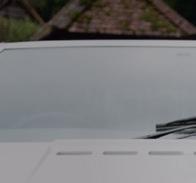
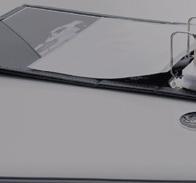


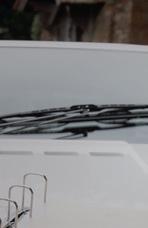
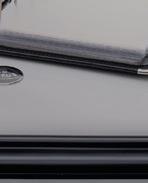

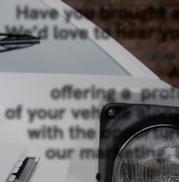


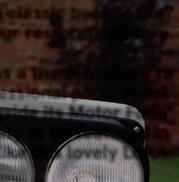

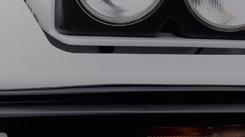


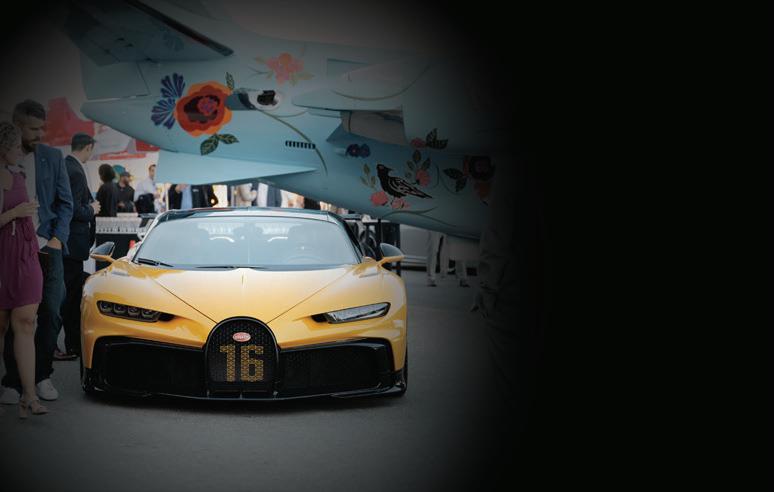
KICK OFF CAR WEEK AT THE HEIGHT OF LUXURY
Featuring Michelin-starred chefs, unbeatable local wines and cocktails, and over one hundred rare airplanes and automobiles. Immerse yourself in curated car classes, dance under the stars to live entertainment, and join in on the Broad Arrow Auctions action — hosted live at the heart of the party and entry is included complimentary with your ticket.
Hagerty Drivers Club® members enjoy exclusive pricing on tickets.
August 13, 2025 | The Monterey Jet Center | motorlux.com

Looking back on an era when Formula 1 was filled with character as well as characters...
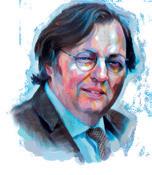
AS I SIT DOWN TO WRITE THIS, the new Formula 1 season is nearly upon us, with testing in Bahrain revealing some interesting and exciting results to think about while we wait for the first race. That’s what Liberty would like us to believe, at least – and I suppose to a certain extent it’s true. But for me, F1 has lost its character and its characters, especially with the passing of the fabulous Eddie Jordan.
The problem is, people my age have been spoilt. We had Bernie Ecclestone running things with all his style and panache, Martin Brundle’s quiet authority and, for a time, James Hunt’s wicked insight coupled with Murray Walker’s high-revving commentary – all accompanied by the most incredible-sounding V8, turbocharged and (the best of all) V10 engines.
Most importantly, we had drivers who would speak their minds (and demonstrate, if it was important enough). I think the last of that era was the mid-1990s, when Nigel Mansell retired from F1 and Ayrton was killed. A shroud of secrecy was thrown over F1 that has never been fully lifted.
Having said that, Kimi Räikkönen has never been backwards in coming forwards with his opinion. He must be an honorary Yorkshireman, because if you were brave enough to ask the question, he’d always give you the answer he wanted to – whether you liked it or not. I met his parents once in a hospitality suite. They were fabulous, riotous people and great company.
Corporate sponsors used to be fine with their drivers being outspoken, because it brought their name into the news. It was just considered good publicity, because it gave their brands an image of manly, outspoken spontaneity and adventure. Nowadays it’s all banks, IT and companies that you don’t really know what they do, but clearly mustn’t be disturbed by a driver having a controversial idea in his head.
In the early turbo era, some of the teams that didn’t have much of a chance would run their cars light on
BELOW Jacky Ickx undergoes some impromptu dental work. Such shenanigans would be discouraged now.
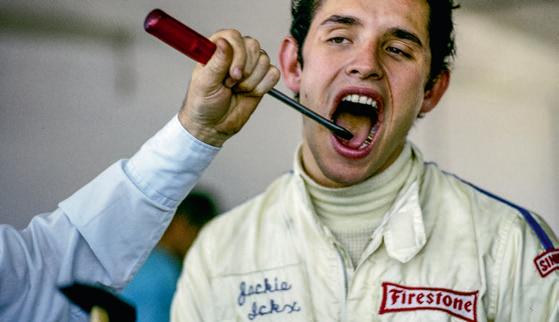
fuel. These would then mysteriously blow up on a corner that would be within the TV cameras’ panning range, thus the sponsors’ names were still in the picture every lap. This practice was stopped when Bernie, quite rightly, had cars removed from the course for safety reasons if they broke down, which was a very good thing.
Aggrieved team bosses would always say something, while drivers would point the finger if another did something dangerous or stupid. Yet it all seemed to work out in the end; lawyers were the last resort, not the first step.
Oh dear, this is in danger of becoming a rant, which it wasn’t supposed to be. My thoughts were born from rewatching a fantastic programme made in 1978 by Thames Television. It showed Jackie Stewart test driving the top F1 cars before the ’78 season – namely the Ligier Matra, McLaren M26, Lotus 78, Brabham BT48, and Tyrrells six-wheeled and 4WD. He also tried the turbocharged Renault and a few others besides.
Jackie critiqued all the cars from a driver’s viewpoint. He had been retired for about five years by then,
but he was still very active in the sport, and he gave his opinion both good and bad about each car.
I was thinking how impossible that would be now. Even if you could do it, you wouldn’t be able to be honest about a car if it wasn’t very good. A corporate lawyer would step in and hush it all up, instead of the team saying “let’s have another look at this in case it really is a problem”.
Brabham was fun to work for in my day, and the shenanigans that went on at Grands Prix were legendary. No hire car was safe, nor were some of the hotels. I reckon a ten-volume book could be written about the mischief that went on over a GP week.
Even back at the factory we had a lot of fun. Everyone had a nickname:
‘Brabham was fun to work for, and the shenanigans that went on at GPs were legendary’
there was Brain Damage and Mouse, while I was Hooray Henry. It was not uncommon to be sitting in my office and hear “Hoooooraaaayyyyy!” from the workshop, and to have to go and find out what the mechanics wanted. Senior advisor to the F1 race director Herbie Blash’s name is Michael, but in his early career someone said: “Where’s that Herbert Blash?” –Herbert being a slang word for twit –and it stuck, as all good nicknames do.
Bernie was the Bolt. There was a TV game show, The Golden Shot, which involved a crossbow, and for safety reasons they had a man called Bernie who put the bolt in the weapon, the phrase being: “Bernie, the bolt if you please.” Bernie the Bolt was born. Sadly the world now precludes all such frivolity, in case someone is offended or pilloried by the press for saying something outrageous. I think F1 is poorer for missing some of the fun and mischief that used to go on. The lack of these stifles the imagination. Keep being part of the machinery.
Former Ecclestone Collection manager Robert now runs Curated Vehicle Management. See www.c-v-m.co.uk.


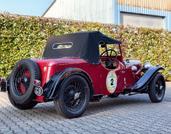
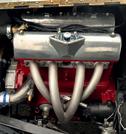
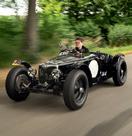
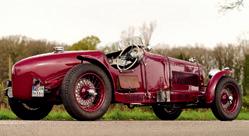

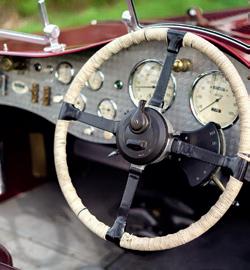

From creating pit passes to masterminding sponsor liveries, Peter relives some of his F1 experiences

WHEN
asked if they still watch Formula 1, say they gave up a few years ago. Too boring, too predictable, too much of ‘A Show’ or too unpopular with the family. I can’t imagine doing that –although I do understand that what we see going on at the races is not always what is actually happening, and that there are some displays of vulgarity and excess. But when the lights go out fast, cars do still look fast.
I first went to a Grand Prix when my racing-journalist uncle gave me a simple little press pass for the British GP at Brands Hatch in 1968. Jo Siffert won by just 4.0 seconds in his private Rob Walker Lotus-Ford Cosworth – a memorable first event. Chris Amon was second and Jacky Ickx third.
After that I was lucky enough to watch more races: one in Austria as, I thought, a guest of Lotus – but Colin Chapman told team boss Peter Warr I should pay for my own food since I was contributing nothing to the team. I also went to Monza with old school friend and Lotus driver John Miles, where we silently sat waiting for news of Jochen Rindt’s fatal accident, until John said: “What the f**k am I doing here,” and quietly withdrew from GP racing.
I started working with Bernie Ecclestone on F1 car liveries for Brabham in late 1977 when, having seen that the team had a new sponsor, I phoned and asked to be put through to Mr Ecclestone. I told him I did racecar livery designs, and he told me to get down there after lunch.
He took me into the team workshop, where I saw the most chaotically painted F1 car, and was confronted by a raging and swearing Niki Lauda. He shouted at Bernie that he would “never drive a car that looked like s**t, and that is what this one looks like”. Mr E quietly explained that I was Peter Stevens and I would come back the next day with some new designs.
The next day I presented some simpler ideas, whereupon calm returned and the Parmalat period
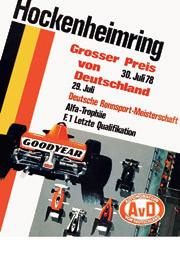
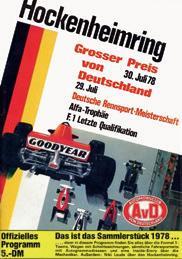
began for me. Bernie and I got on very well together, and besides the cars he asked me to come up with a scheme to try to reduce the number of forged paddock passes, often made by the teams. He had a fascinating collection of forgeries in his desk drawer, many from very well known outfits.
I suggested that there should be a note printed on the back saying: “This pass is the property of FOCA and maybe withdrawn at any moment by a FOCA official.” Then, if he suspected a forgery, he could take it, because it said as much on the back, and then have them ejected from the paddock for not having a pass. I went on to design a red plastic injection-moulded pass that was impossible to reproduce. Later still, electronic swipe cards with a small photo image were introduced.
Another, rather more interesting opportunity arose when Bernie took control of a number of GPs. He asked me to design illustrated posters for these events. The first was for the 1978 German GP at the Hockenheimring, and the idea was to incorporate the colours of the countries’ flags in the designs. Unfortunately, I got Germany’s black, red and yellow colours in the wrong order – black, yellow and red, the Belgian colours. It wasn’t until both posters and programmes went to
print that someone finally noticed. The situation was rectified just in time, and Bernie was kind enough not to mention this to me at the time.
Later I worked with David Richards when, in 1997, he took over the running of the Benetton team. The cars looked like a cheap fairground ride. Team principal Flavio Briatore would grab any sponsor and just get his guys to apply ever more and more stickers to the cars with no sense of style. Increased support from FedEx, Akai and Japanese cigarette brand Mild Seven gave me a chance to redesign the whole graphic identity for the B198, making for a much cleaner and more easily identifiable look. David was gone by the end of 1998, interference from the Benetton family proving to be just too much.
I had worked with Patrick Head at Williams on the successful Le Manswinning BMW LM99 V12 cars, and
‘I saw the most chaotically painted Formula 1 car, and was confronted by a raging Niki Lauda’
BELOW Spot the ‘deliberate mistake’: luckily Peter’s German flag colour confusion was rectified before it was too late.
he contacted me again at Christmas 2003 to visit him at the Williams headquarters in Grove. He showed me the somewhat arresting new FW 26 designed for the 2004 GP season. The mechanics had already christened it ‘The Walrus’, because instead of a slim nose the car had a very wide front with two dramatic, wide-spaced ‘tusks’ supporting the wing. This was a brandnew concept designed by resident chief aerodynamicist Antonia Terzi. Patrick had a habit of not involving himself that much in the detail design of the Williams cars, and so he was appalled by what he saw. He asked me what I thought had gone wrong. It wasn’t my job to question the aerodynamic concept, but I said that I thought the basic execution of the whole body shape was very crude. CAD had only fairly recently been introduced into F1 design, and many different platforms were being tried. Patrick told me they had a very reliable system that originated at Ford, called IDEAS. In fact, this set-up was rather out of date, being based on the original 2D hand-draughting methods that worked like a faster version of a traditional draughtsman. This produced flat surfaces bent in just one dimension, with fixed, usually 20mm or 30mm radii curves joining the two surfaces together. A very simplistic shape always resulted from this limitation. Some of the more advanced teams were using CATIA – and now almost all of them use CATIA V5. Patrick quickly moved ahead with installing a more modern system, hoping to avoid another ‘Walrus’. This year will be the last season of F1’s current highly complex regulations. The racing should be close because the teams see what others are doing and differences become similarities, but I shall be glued to the TV to watch as the battle between engineers becomes the battle between drivers. Peter is a past chief designer for Lotus, McLaren, MG-Rover, Mahindra and more. He’s now a consultant designer.
multiple award winner READY FOR YOUR FAVORITE ROADS
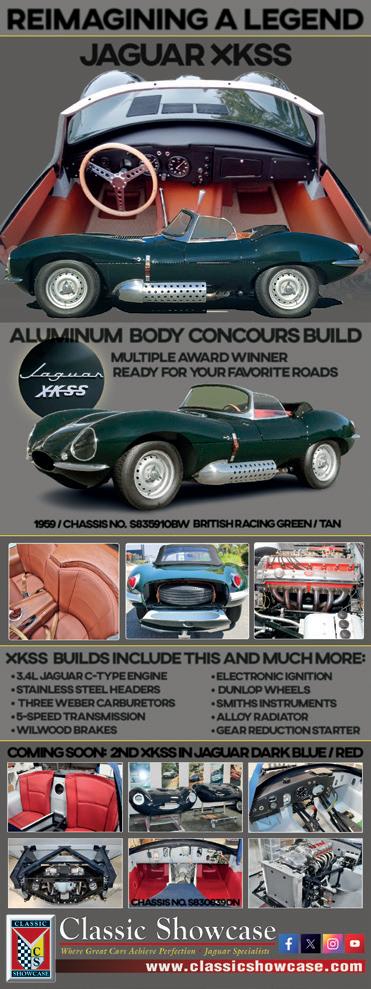

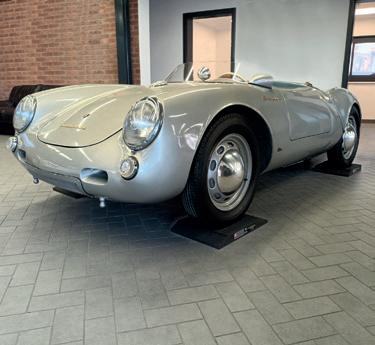
+400%
+ 400% additional tyre-bearing surface from these specially designed product lines of cushions to avoid, seriously, the “tyre flat spot” phenomenon.
ALTairEGO cushions sets offer a tyre-bearing surface + 400% greater than when the car is parked on the ground, thus avoiding the tyre flat spot.
3 product lines, including 23 models in respect to your car’s specific kerb weight category, between 500 kg / 1100 lbs and up to 4000 kg / 8800 lbs.
since 2009 tyre cushion sets
info@altairego.it www.altairego.it
Former Formula 1 racing driver and current Sky Sports broadcaster gives his insight from inside and outside the paddock
Which past eras fired your love of F1?
The late 1980s and early ’90s. I grew up watching Ayrton Senna vs Alain Prost, with a smattering of Nigel Mansell and Nelson Piquet in there, too. I loved watching Gerhard Berger win the Japanese and Australian GPs at the end of 1987. That was my era.
You’ve been lucky enough to drive a range of past F1 cars. Your favourite?
The Williams FW14B – Mansell’s 1992 title winner – for all it represents in terms of the technological tools and computing software they had at the time. It was pre-Windows in F1. But also driving a Lotus 49 is a huge box to tick as a fan of F1. It is the most defining car in terms of a tech leap. I drove an ex-Graham Hill example at Monza.
I’ve also experienced more modern stuff, such as Juan Pablo Montoya’s 2004 Williams. That period was peak F1 performance. The cars were 605kg, nearly 200kg lighter than now, with the same power; the power to weight was unreal. You have to run the BMW V10 at peak revs – 19,800rpm. Unbelievable!
I drove Lewis Hamilton’s winning 2019 Mercedes, and it’s perfect. So well sorted and balanced. But they’re almost too perfect today, as if they have less soul. I watch GP racing trackside now, and nothing looks bad. Watch my old HRT F1 car, and you could tell the difference between good and bad. You don’t get bad F1 cars any more.
Has F1 become sterile?
I’m not sure that’s the right word. I just think the leaps in engineering tools have moved so far forward. You still have top teams, but the gap between first and last is closer than ever, because everyone has good CFD tools, decent wind tunnels. You don’t have a need
for people to think outside the box as Adrian Newey had to with limited resources at Leyton House in 1988.
Some say we’re in a golden era in terms of driver quality. Do you agree? The quality of drivers and teams is extremely high. Just look at qualifying in Jeddah for the Saudi Arabian GP. Those final laps by Oscar Piastri, Max Verstappen and George Russell were so amazing. So yes, it’s a fair statement.
How impressed are you by Piastri? Hugely. He and his manager Mark Webber are not bullshitters. Mark is good with and for him. Equally Oscar is so calm and level-headed. His biggest asset is that he doesn’t make mistakes and he is unflappable. There have been very few shunts in the past three years. Working for Sky F1 I have the benefit of listening to the drivers on team radio, and you sometimes hear them dithering in mixed conditions and moments of high stress. You don’t have that with Oscar. He’s very decisive, and that permeates through his team.
Lando Norris is F1’s Rory McIlroy; it’s an emotional rollercoaster. Can he respond to Oscar’s challenge? He can because he’s got the speed. But he has to get his head in the right space. When Lando puts it all together he is unbelievably fast. On the flip side, in four out of this year’s first six qualifying sessions he made an error. He has the talent to fight for this World Championship. It’s now going to come down to the mental game of who’s going to deliver on a consistent basis. In terms of outright speed there’s not much to choose between the McLaren drivers.
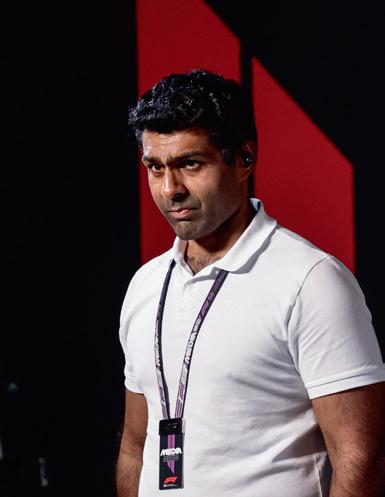
ABOVE In Formula 1’s 75th year, Karun is excited for the past, present and future of the sport.
Where do you think Verstappen’s head is at right now?
He’s rising to the challenge. As much as he says he doesn’t care about legacy, I’m sure he does. Last year he won the Championship in the second- or thirdfastest car most of the time. This year McLaren has a bigger advantage. If he wins it’d be some feat. He’s driving beautifully, but with one eye on the future. There’s a lot of chat about the 2026 engine regs. Must you have a Mercedes engine to win for the next few years? That’s a serious consideration in Max’s camp. I think he’ll stay at Red Bull for 2026, but with an eye on ’27 to see who’s good and who’s not. He could then pick wherever he wants to go.
It’s been painful to watch Hamilton at Ferrari. Do you think it’ll change? My concern is the China sprint pole position and win are becoming the outlier. Take that away and the season has not gone well. Great drivers adapt to new teams and cars, as Lewis has in the past. What’s happened here?
How worried should we be over the next generation of engine regs? Not too much in terms of cars breaking down. There’s always doom and gloom before new rules kick in. But should we be concerned one engine manufacturer will be far ahead of everyone else? Yes. On the upside, at least if Mercedes is far ahead we will have the Works team, McLaren, Williams and Alpine powered by it.
In celebrating 75 years, F1 is engaging with its past. Does that please you? Yes – it’s important to acknowledge and celebrate the past. Also we have the Netflix generation who need educating, who don’t know Ayrton Senna and Michael Schumacher. The anniversary is an important opportunity.
